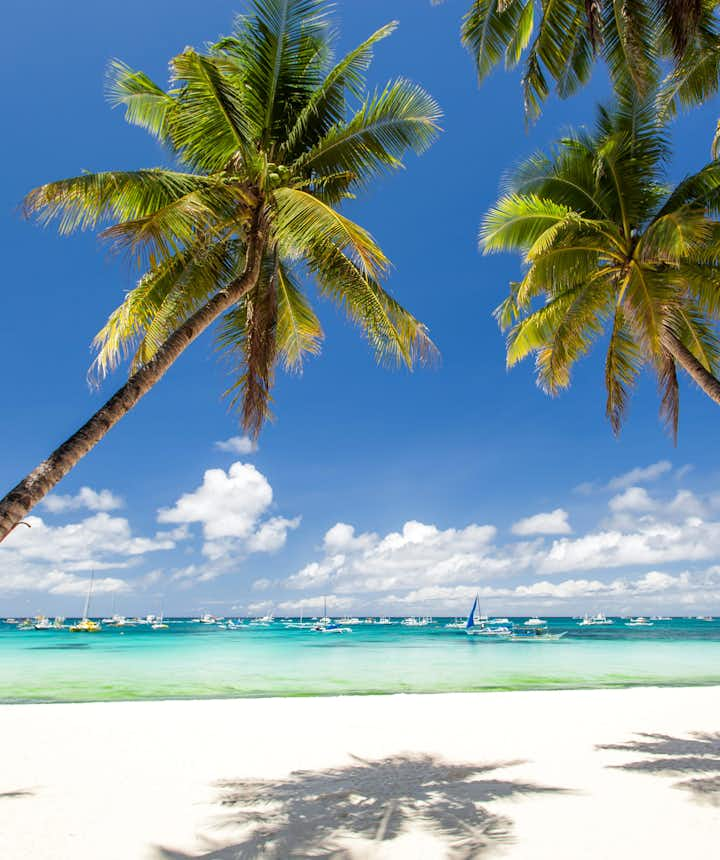

Ultimate Philippines Packing List: What to Bring, What to Wear, Travel Essentials

What to Consider When Packing for the Philippines
Availability of atm and money exchange, hospitals and medical facilities, what to pack for the philippines, breathable, quick-dry, or hiking clothes, swimwear and cover-up, sunglasses and hat, quick-dry towel, waterproof phone case, hiking sandals/flip flops, aqua shoes/water shoes, light rain jacket or poncho, carry-on backpack, travel essentials to pack for a philippines vacation, insect repellent/bug spray, personal medicine and first-aid kit, toiletries in small containers, reusable water bottle, universal travel adapter, action camera, travel insurance.
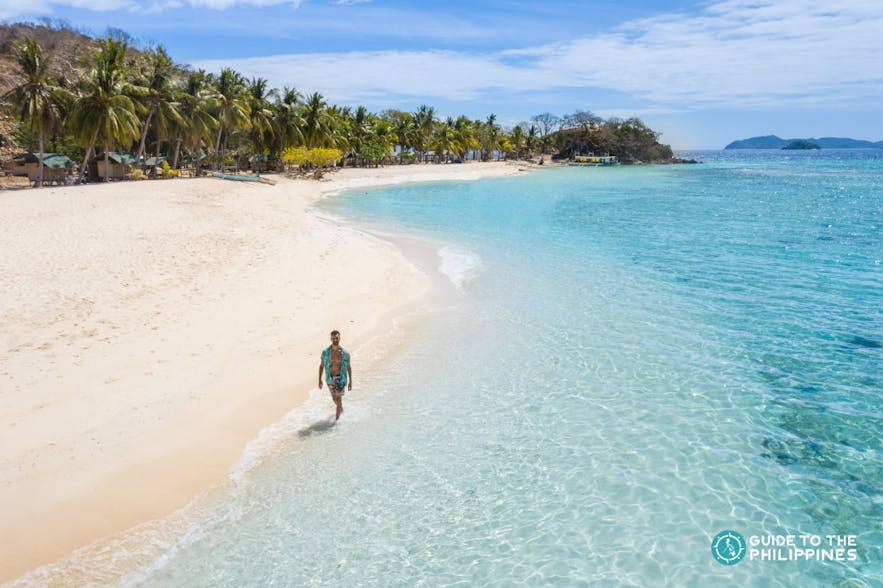
Get ready to explore the Philippines , a gem in Southeast Asia! Known to be one of the best tropical destinations in the world, the Philippines offers a diverse and captivating range of attractions that draw travelers from across the globe. The Philippine geography is composed of over 7,000 islands, with three major islands: Luzon, Visayas, and Mindanao.
There are tons of best places to visit in the Philippines . From cities, beaches, islands, and highlands, there’s a place for you to unwind in this country. The country is a paradise that boasts a spectrum of wonders, from the most beautiful beaches in the world, like Boracay , Palawan , and Siargao , to the iconic landscapes that showcase the natural beauty of the archipelago, like the Chocolate Hills in Bohol and the Banaue Rice Terraces.
See our popular Best Philippines Itinerary Tour Packages
5-day nature & islands adventure package to puerto princesa and el nido palawan, 4-day fascinating culture & nature tour package to cebu & bohol with accommodations & transfers, scenic 1-week beaches & nature vacation package to cebu, puerto princesa & el nido palawan.
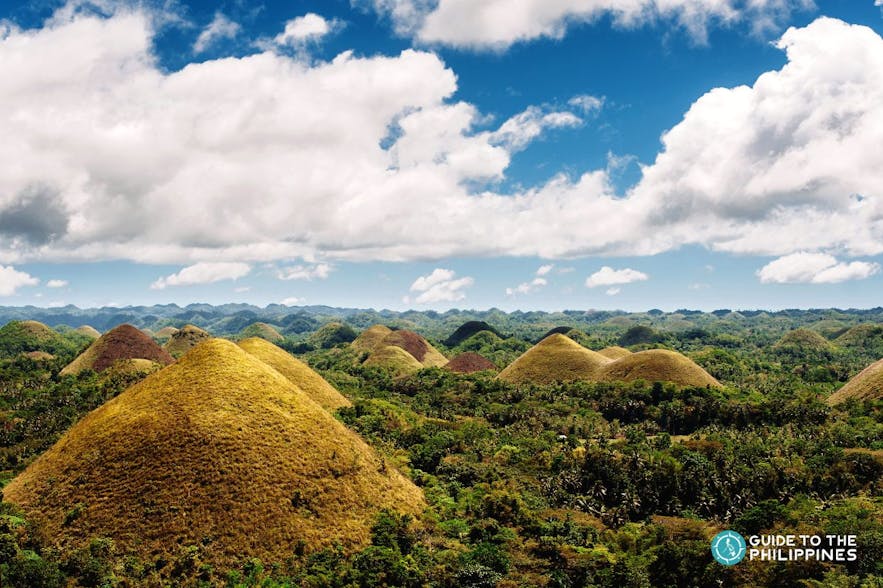
One of the provinces in the Philippines, Palawan , is known to be the Philippines' "Last Frontier" because of its rich biodiversity, featuring pristine beaches, hidden lagoons, islands, limestone cliffs, and vibrant marine life. It also features the renowned destinations: Coron , El Nido , and Puerto Princesa . The Puerto Princesa Underground River is named one of the UNESCO World Heritage Sites, with the Tubbataha Reef in Sulu. Aside from Palawan, Boracay is also named the "Best Island in the World" because of its white sand beach and crystal-clear waters.
Beyond the beautiful islands and beach destinations in the Philippines , the country offers unique charms from beaches to cities. Baguio and Tagaytay are known to be a refreshing escape because of the city's cooler temperatures and scenic landscapes. For a cosmopolitan lifestyle with luxury hotels, restaurants, and vibrant nightlife, Manila and Cebu are the urban cities to visit. The Philippines is also home to religious landmarks, including centuries-old churches in Intramuros , Manila, and the Basilica Minore del Santo Niño in Cebu.
See our popular Top Tours in the Philippines
Boracay island hopping shared tour with lunch, kawa hot bath & snorkeling package, coron island hopping tour to kayangan lake & barracuda lake | palawan super ultimate package, shared puerto princesa underground river tour in palawan with lunch & hotel transfers.
When looking for a destination that combines the vibrant energy of urban city life and beach life, going to the Philippines should be considered. There are flights to the Philippines available to book and you can also include Philippines airport transfers , with the best Philippines itinerary travel packages , and Philippines guided tours to check. You can also check Philippines hotel booking for your stay or car rental in the Philippines if you wish to explore the country on your own.
Moreover, because of the country's many offerings, it's important to note some of the packing essentials and what to bring to the Philippines. Each city or island in the country needs different packing items and clothing, as some areas require you to be modest or comfortable. This ultimate Philippines packing list will guide you on the things you need to pack, what to wear in the Philippines and other travel essentials.
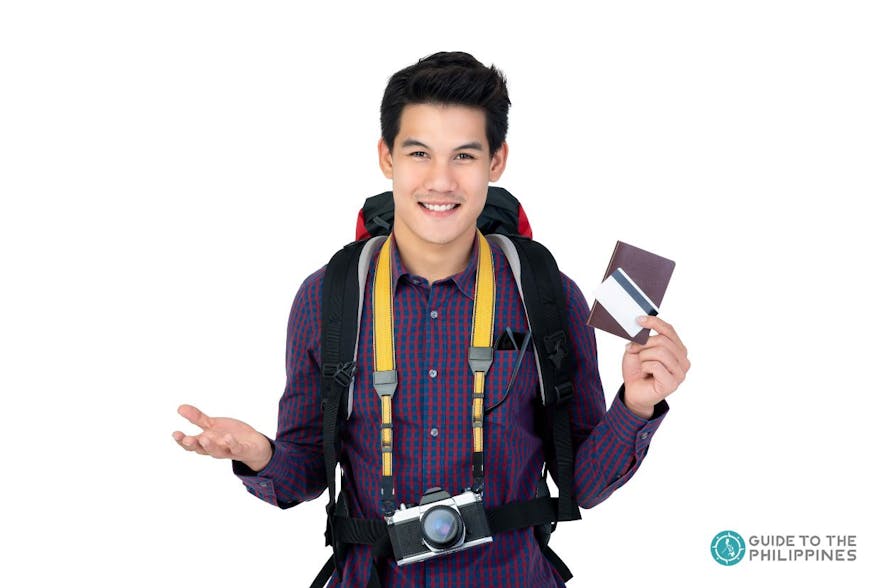
Packing for a trip to the Philippines requires planning and consideration to make sure you'll have a comfortable and enjoyable stay. Once you have done creating your Philippines itinerary , the next thing you need to do is figure out the things you need to bring in your visit to the Philippines. Here are some essential factors to know when packing for a trip to the Philippines:
See our popular Philippine Airport and Sea Transfers
Private el nido palawan lio airport to or from any el nido town hotel transfer service, private busuanga airport to or from any hotel in coron town van transfer service, private puerto princesa airport palawan to or from any puerto princesa city hotel transfer service.
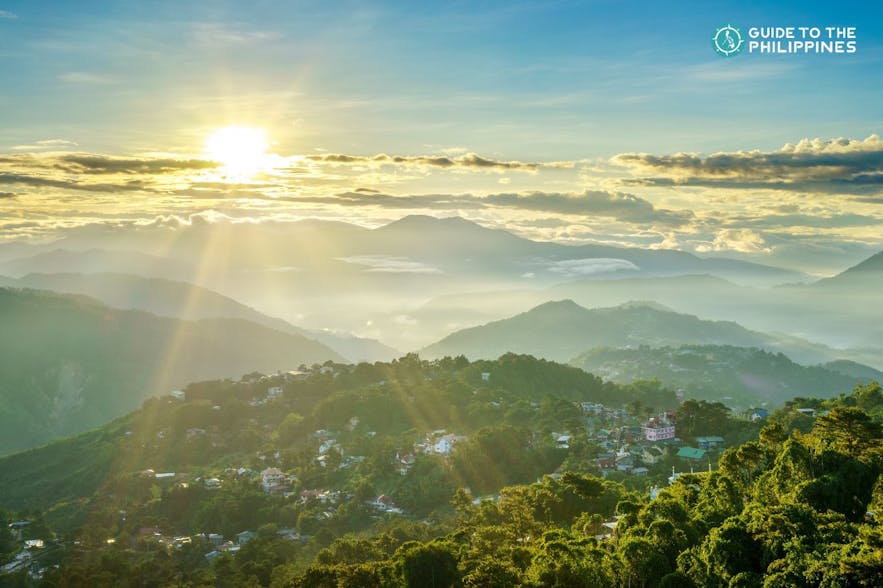
The average temperature in the Philippines is 25 °C to 30 °C. The country has a tropical climate with two distinct seasons: dry and wet season. The dry season usually starts from November to June, making these months the best time to go to the Philippines . On the other hand, the wet season usually occurs from July to October, when an average of nine typhoons hit the country. During these months, it doesn't rain every day or the whole day, so it's still good to travel to some of the areas in the country.
- Best places to visit in the Philippines in November
- Things to do in the Philippines in December
See our popular Adventure Tours
Boracay island hopping package private tour with lunch, snorkeling gear & kawa hot bath, private siargao tri island hopping tour with hotel transfers | guyam, naked, daku islands, what to wear in the philippines during rainy season.
During the rainy season in the Philippines , between July to October, wear a light rain jacket or raincoat. You can also bring boots, and umbrellas so you’ll stay dry.
- Visiting the Philippines in August
- Where to go in Philippines in September
- Visiting the Philippines in October
Pack lightweight, breathable clothing for the hot and humid weather. Also, bring a portable fan and bottled water. Don't forget your swimwear for beach activities.
The Philippines may experience periods of high humidity, especially during the wet season, that can cause discomfort with stickiness and sweat. It is advisable to pack moisture-wicking clothes to stay comfortable and consider packing waterproof dry bags, waterproof phone cases, and insect repellents. Also, bring good quality sunscreen, a hat, and sunglasses for sun protection during the summer or hot months.
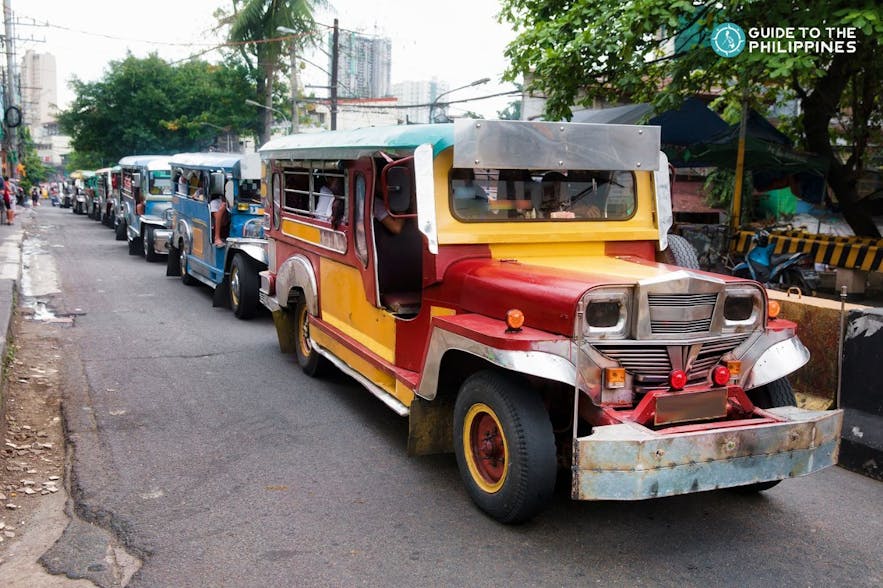
You may experience commuting in the Philippines via jeepneys, tricycles, or buses. Also, expect a lot of walking and vehicle transfers, so it is advisable to pack light and wear comfortable footwear.
See our popular Budget Small Cars in the Philippines
Toyota vios mt or similar, toyota wigo - manual or similar.
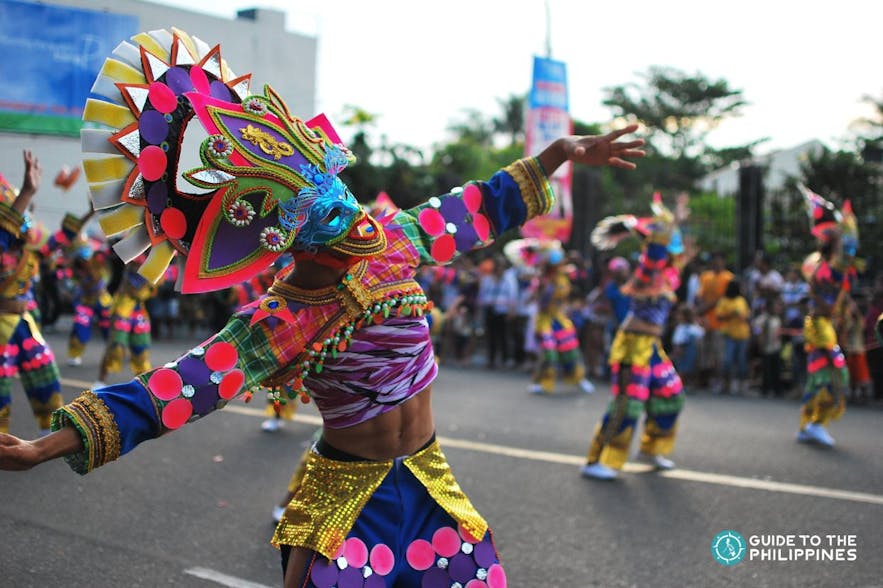
There are some areas in the Philippines where it is recommended to wear modest attire, especially in conservative areas. The country has a diverse and vibrant culture shaped by various influences. As one of the largest Catholic countries in the world, the Philippines showcases a deep-rooted religious heritage, which is evident in its numerous historic churches and religious celebrations.
Aside from the country's Catholic population, the Philippines is also home to regions with Muslim communities, such as Mindanao, where Muslim traditions and customs are observed. Wear clothes that cover your shoulders and knees when visiting temples, religious landmarks, or churches.
Aside from religious sites, you might visit a certain area where there are cultural events or famous festivals in the Philippines . Festivals like Sinulog and Ati-Atihan showcase the enthusiasm and dedication of Filipinos. So, make sure to check if there are specific events to happen on the day of your visit. Expect that during these times of festivity, areas could be crowded, so pack accordingly.
See our popular Cultural Tours
Bohol chocolate hills countryside private tour with transfers & add-on loboc river cruise lunch, bohol countryside private tour & shared loboc river lunch cruise with transfers, bohol countryside private tour with loboc river cruise lunch & transfers from cebu city.
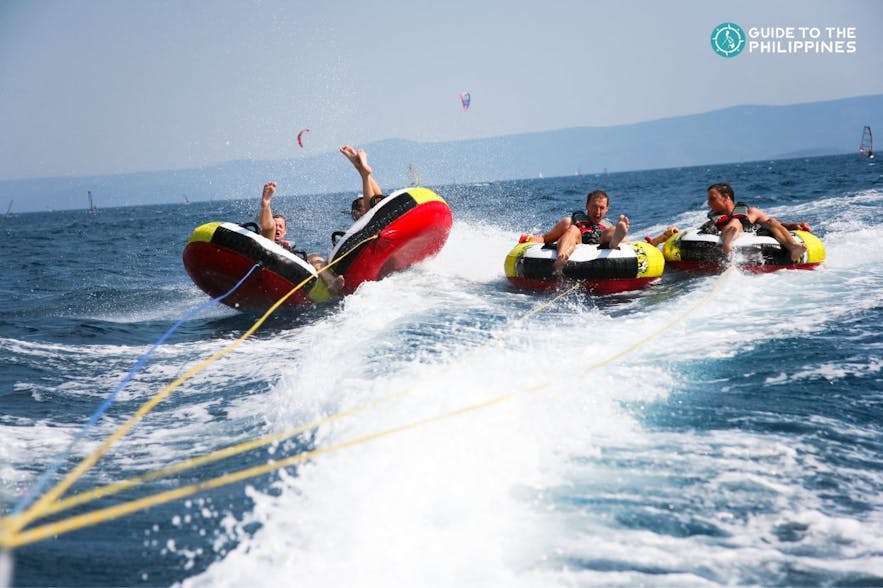
You can do a lot of activities in the Philippines, from beach outings to city tours, hiking, canyoneering, whitewater rafting, island hopping, or even swimming with whale sharks in the Philippines .
Wear comfortable clothes and shoes, and pack light if you are planning for walking tours. If you're going to the beach for an outing and swimming, bring flip-flops, swimwear, and sunblock. Sporty or comfortable clothes and hiking shoes are advisable to wear if you go trekking or hiking in the Philippines .
Don't forget essential accessories like a reusable water bottle, a small or belt bag, and a power bank for other outdoor activities.
If you plan to visit the country during Christmas or the holiday season, you can try checking out some things to do in the Philippines in December to maximize your vacation in the country. You can look for Christmas lanterns in San Fernando, Pampanga, or have a staycation in Baguio. However, expect the traffic and crowded malls and terminals, so make sure you wear a comfortable outfit and bring a belt bag.
- Check the 2024 Philippine holidays
- Book Philippines holiday packages
See our popular Island Hopping Tours
Palawan coron malcapuya, banana & bulog dos islands shared tour with lunch & transfers.
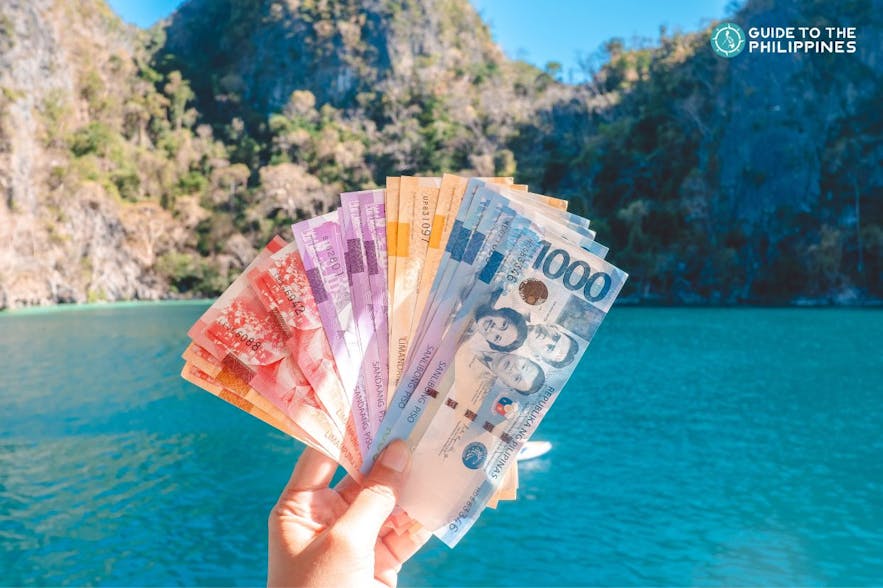
Major cities in the Philippines have ATMs, while other remote areas may have limited access. Carry enough local currency cash, especially if you plan to visit rural areas in the country.
Before heading on your trip, make sure you exchange your money to Philippine peso. If you brought your card, you may also need to notify your bank ahead of your travel to avoid any issues with card transactions.
How much money to bring to the Philippines
The amount of money you bring to the Philippines depends on the number of days you'll be staying in the country. Plan your travel budget, check hotel accommodations rates, tour prices, and meal costs. Make sure you exchange your money to the Philippine currency.
Check any medical facility around the area you plan to visit since there are some rural destinations that don’t have fully-equipped hospitals. Consider travel insurance as well for emergencies.

There are some essential things you need to pack when going to the Philippines, especially since different destinations in the country differ depending on the activities you want to do. Below is the list of what to bring and what to wear to the Philippines, with details of activities and destinations and when to pack them.
See our popular Philippines Vacation Packages
Relaxing 4-day beachfront mithi resort bohol package from manila, amazing 4-day movenpick boracay 5-star resort package with airfare from manila or clark & transfers, fuss-free 3-day bohol package at mithi resort with airfare from manila & transfers.
Because of the Philippines' tropical climate, it's best to wear lightweight and comfortable clothing. There are clothes made with quick-dry fabrics, which are ideal for the country's humidity. If you plan to explore beach or island destinations like Palawan, and if you are going for hikes like in Banaue , comfortable clothing is a must.
With tons of beaches in the Philippines , from Palawan , Boracay , and Batangas to Siargao , there's a big chance that you'll visit one. Make sure to pack swimwear and a cover-up if you like.
- Book Boracay tour packages
- Check out rates for Siargao tour packages
See our popular Boracay Vacation Packages
Luxurious 5-day boracay package at 5-star movenpick resort & spa with airfare & chocolate hour, stress-free 4-day boracay package at tides hotel with airfare from manila or clark & island hopping.

Bring sunglasses and a hat to protect yourself from the intense heat of the sun, especially when visiting Luzon tourist spots , since it usually includes more walking tours. Whether you're lounging on the beaches of Batangas or Palawan or exploring the historic streets of Vigan , Intramuros, or Taal, Batangas, these accessories can help you on your tour.
Aside from sunglasses and hats, sunscreen is the best essential to protect you from the sun. Whether you’re exploring hiking spots in the Philippines or surfing in the Philippines , it’s best to keep your skin protected from the hot weather in the country.
It is not mandatory, but it's best to bring reef-safe sunscreen, especially if you are to explore and snorkel in the vibrant coral reefs, diving spots , and snorkeling spots in the Philippines , like Apo Island or Tubbataha Reefs in Palawan. Some sunscreens contain Oxybenzone and Octinoxate, which are harmful to marine ecosystems, specifically the coral reefs. So, it is recommended to use reef-safe sunscreen to help save the reefs.
See our popular Philippine Scuba Diving Packages & Courses
Boracay island scuba diving with instructor & equipment, boracay introductory scuba diving with divemaster, gear & underwater photos, palawan el nido discover scuba diving for beginners with equipment, tank, weight belt & snacks.
For beach outings or waterfall adventures in Kawasan Falls , a quick-dry towel is recommended. It is compact, lightweight, and dries quickly, making it convenient for on-the-go activities. It could be a hassle to bring towels that don’t dry fast and are a little heavy to carry around.
If you intend to engage in activities like boat tours, island-hopping in El Nido , or exploring waterfalls in the Philippines and the underground river of Puerto Princesa , it's best to bring a dry bag to protect your electronics and valuables from moisture. It is also useful during unexpected rain showers.
- Check out Philippines island hopping tours
- Book El Nido, Palawan tour packages
- Check Puerto Princesa tour packages
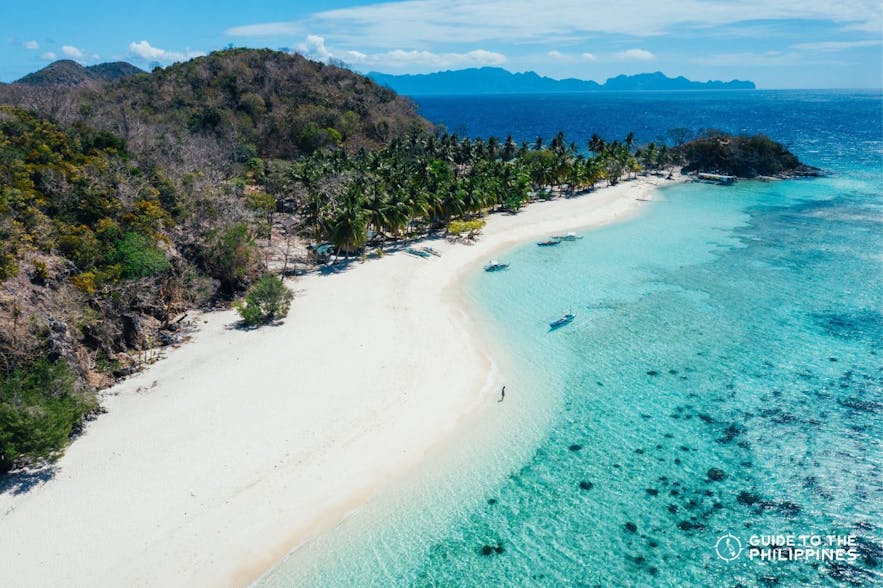
Engaging in activities with boat tours, scuba diving in the Philippines , island hopping adventures in Coron , and canyoneering in Cebu involves having your phone near the water. Bringing a waterproof phone case can help protect your phone from sudden downpours or falling in water. It can also help you capture underwater experiences like snorkeling in the clear water of Moalboal .
See our popular 10-Day Philippines Tour Packages
10-day beautiful palawan beaches tour to puerto princesa, port barton, el nido & coron package, exciting 10-day islands & adventure tour to cebu, coron & el nido palawan package from manila, exciting 10-day islands, whale shark & nature tour to boracay, cebu, puerto princesa & el nido.
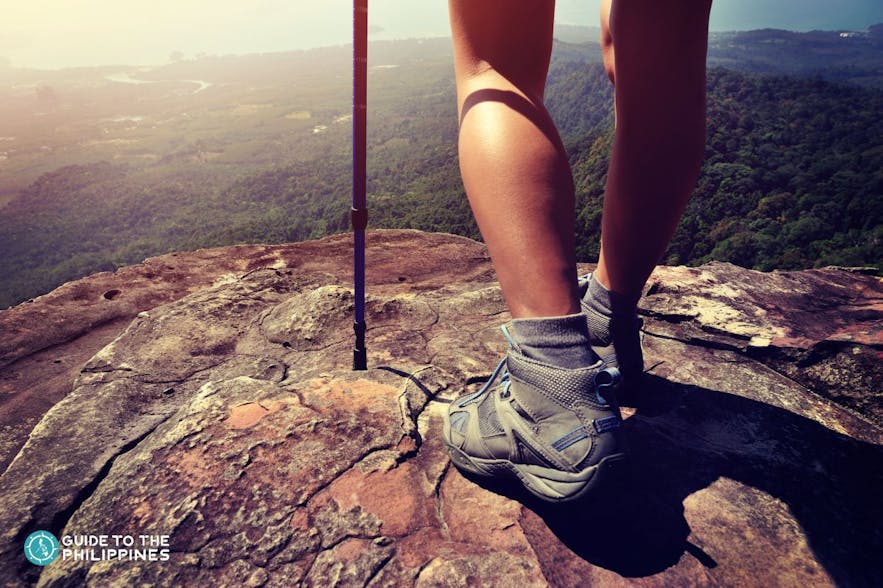
If you want to go trekking through the beautiful landscapes of Sagada or hiking in some Philippine mountains in Rizal , wearing hiking shoes or flip-flops is advisable for a comfortable hike.
Wearing aqua shoes or water shoes is recommended if you are going to walk along the white sand beaches in the Philippines , canyoneering in Kawasan Falls, or exploring the islands of Islas de Gigantes in Iloilo to protect your feet from cuts, unintentional coral abrasion, and sea urchin stings.
- Check out Cebu tour packages
- Book Iloilo tour packages
- Book Coron, Palawan tour packages

For those planning on cave tours like in Sagada or exploring one of the tourist spots in Mindanao , the Enchanted River in Surigao del Sur, a headlamp would be helpful for hands-free illumination. It is also reliable in times of sudden power interruption or when you're staying somewhere with not enough lighting.
See our popular Cave Tours
Bohol countryside tour with loboc river cruise lunch & panglao island tour, siargao land tour to magpupungko rock pools, cloud 9, coconut mountain view & more with transfers, palawan el nido shared island hopping tour b with lunch & transfers | snake island, cudognon cave.
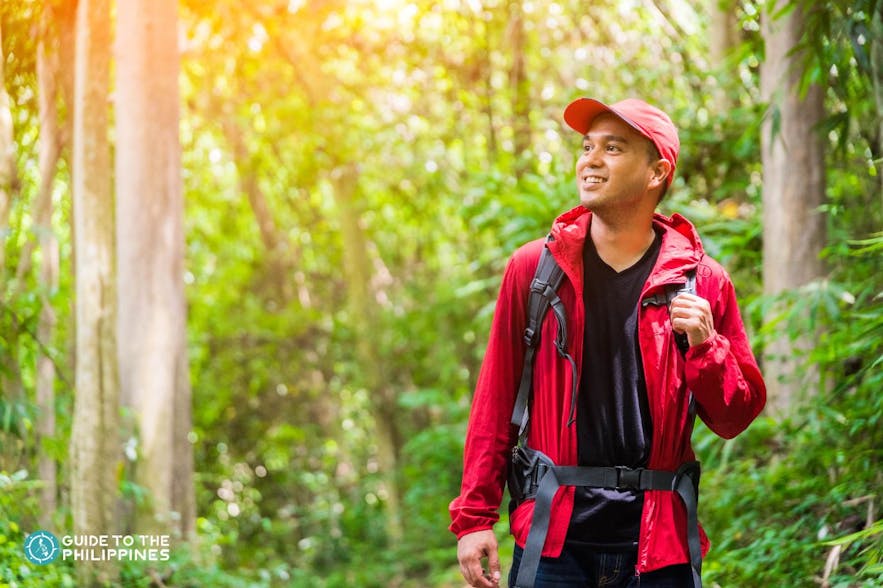
It's not cold in the Philippines, but you'll never know when a sudden rain shower pour or if you go to malls and areas with cold temperatures like Baguio and Tagaytay. So, it's best to have a light rain jacket or poncho with you.
Bringing heavy bags is a hassle when traveling, so it's best to bring a carry-on backpack that is light and convenient. If you are going on day tours and countryside tours like in some Visayas tourist spots , city explorations, or island-hopping in the Philippines , it's easy to bring essentials with you with a backpack.
Other than the things you need to bring and wear during your stay in the Philippines, it’s also best to know some travel essentials for your hassle-free journey, especially when you’re on tours and travel destinations. Below is the list of what to pack for a trip to the Philippines:
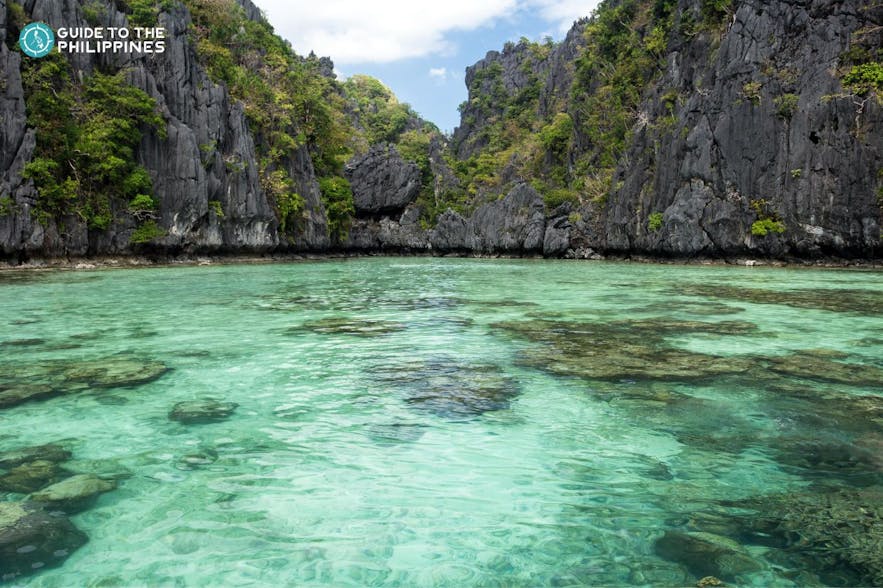
Since the Philippines is a tropical country, bugs or mosquitos can be prevalent and tend to linger in areas with the most people, especially in lagoons found in El Nido, villa pools, waterfalls in Iligan , countryside of Bohol, or campsites like in Rizal. It's advisable to pack insect repellant to protect yourself from insect bites.
- Check out Bohol tour packages
See our popular Visayas Tour Packages
For long bus rides, day tours, or island-hopping adventures, you want to make sure your devices stay fully charged. Bringing a power bank is essential since there is no guarantee that you will find an outlet to charge when you are on tours.
If you are taking any medications, make sure you always bring them with you. Also, pack a small travel medicinal kit with essentials like pain relievers and bandages. You might not have any access to nearby medical facilities, especially when engaging in outdoor activities, and there are remote areas that might have limited access to these.
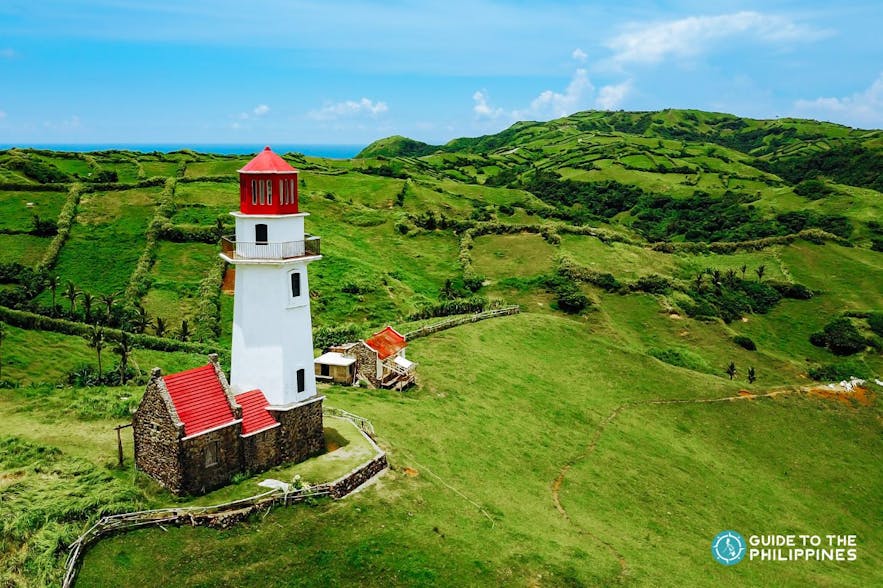
Opt for travel-sized toiletries to save space in your luggage. When you are having a staycation in different cities like Manila or Cebu , or having a nature trip in Batanes , it's best to have compact toiletries with you so it will be easy to carry around.
- Book Batanes tour packages
See our popular North Luzon Tour Packages
2-day adventure to buscalan kalinga tattoo village of apo whang-od from manila with homestay & meals, aureo hotel la union overnight package with breakfast, fascinating 7-day history, heritage & nature tour to laoag, pagudpud & vigan ilocos from manila.

Stay hydrated and bring a reusable water bottle when traveling in the Philippines. Whether you are hiking or trekking in the mountains or participating in day tours in Manila , having a water bottle will not only help you stay hydrated in the tropical heat but also contribute to reducing plastic waste.
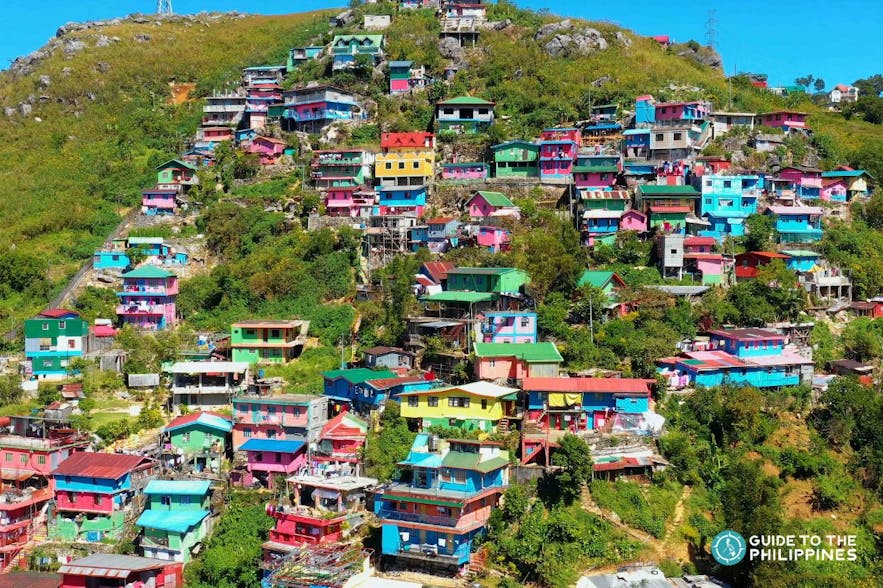
Keep your valuables secure while walking in the crowded markets in Baguio or Manila or experiencing the vibrant street food scene in Davao . A money belt is convenient and provides an added layer of security.
The Philippines is a safe country, but in every place, you'll never know if there are strangers taking advantage of people. So, a money belt would be helpful for you when you roam around the cities in the Philippines.
Outlets in the Philippines are in types A, B, and C. Just to be sure, you may bring your adapters for electrical outlets. A universal adapter ensures you can charge your devices in various locations, whether you're in the urban sprawl of Quezon City or the rural landscapes of Dapitan.
See our popular Mindanao Tour Packages
Hassle-free 4-day budget island package to siargao with accommodations & airport transfers, 3-day relaxing budget island package to siargao with accommodations & airport transfers, 5-day stress-free budget surfing package to siargao with accommodations, surfing lessons & transfers.
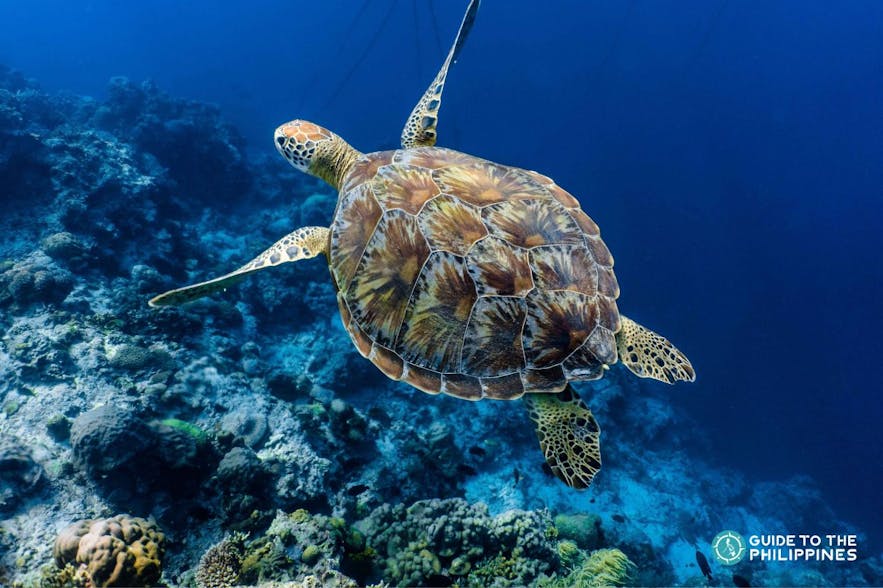
Capture the stunning underwater scenery while snorkeling in Moalboal or while riding an ATV around Mayon with an action camera. It's a perfect companion for adventure activities in the Philippines . You may bring your own action camera or opt to rent one.
- Check out Baguio tour packages
Make sure you stay connected on your travels with an eSim in the Philippines . This is useful for navigating the bustling streets in the country, especially if you’re on a 2-week tour in the Philippines . This way, you can stay in touch with fellow travelers during tours.
Ensure a worry-free vacation by investing in travel insurance . Travel insurance provides peace of mind in case of unforeseen circumstances, whether you are simply roaming around the cities or island hopping.
- Check out 10-day Philippines tours
- Book 8-day tours in the Philippines
- Check out 1-week tours in the Philippines
See our popular 2 Weeks Philippines Itinerary Tour Packages
2-week stunning islands & beaches tour to coron, puerto princesa & el nido palawan from manila, amazing 2-week island hopping & nature tour to palawan, cebu & boracay from manila, best 2-week islands & adventure tour to el nido & coron in palawan, cebu, siquijor & boracay package.
Travel-ready to the Philippines

Traveling to the Philippines is exciting and will surely make your visit worthwhile. With tons of beautiful destinations to visit, from cities to beaches, and fun activities to do, like food trips or water adventures, there is room for every traveler in this tropical country.
For a hassle-free journey, make sure to pack all the essentials that you might need, and check all the Philippines travel packing lists and travel guides for every destination you visit. Knowing all these details will not only help you enjoy your visit to the Philippines but will also provide you with a seamless and light journey.
Popular articles

Best Palawan Guide: Top Tours, Where to Stay, How to Get Around
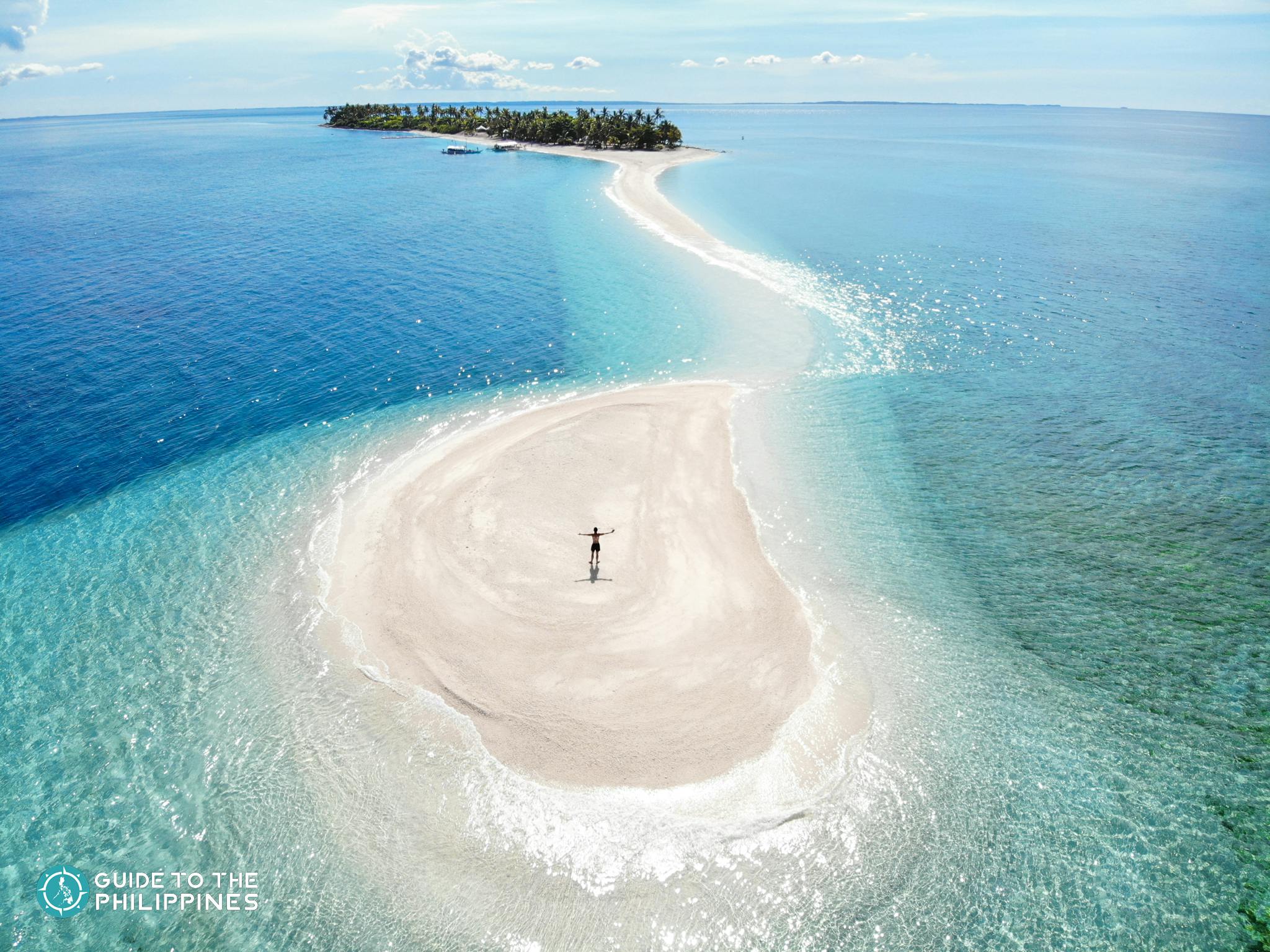
20 Most Beautiful Sandbars in the Philippines: White Sand, Longest, Vanishing
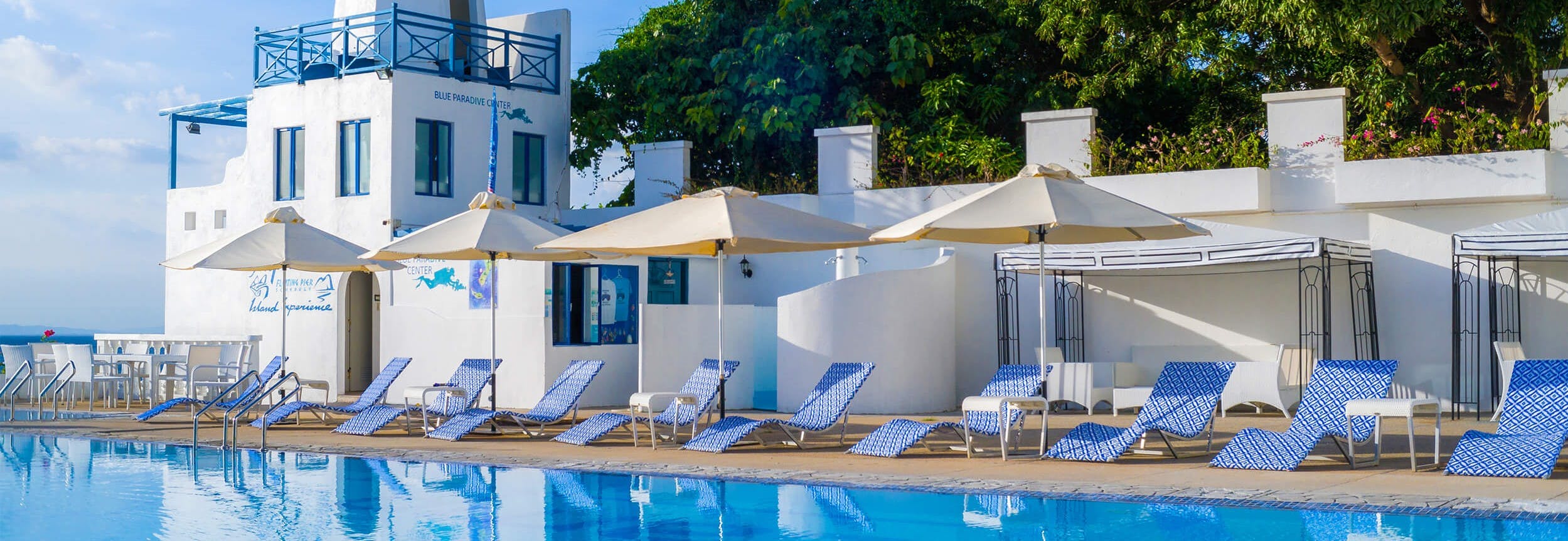
11 Best Santorini-Like Resorts in the Philippines: Near Manila, Cebu, Palawan, Vigan
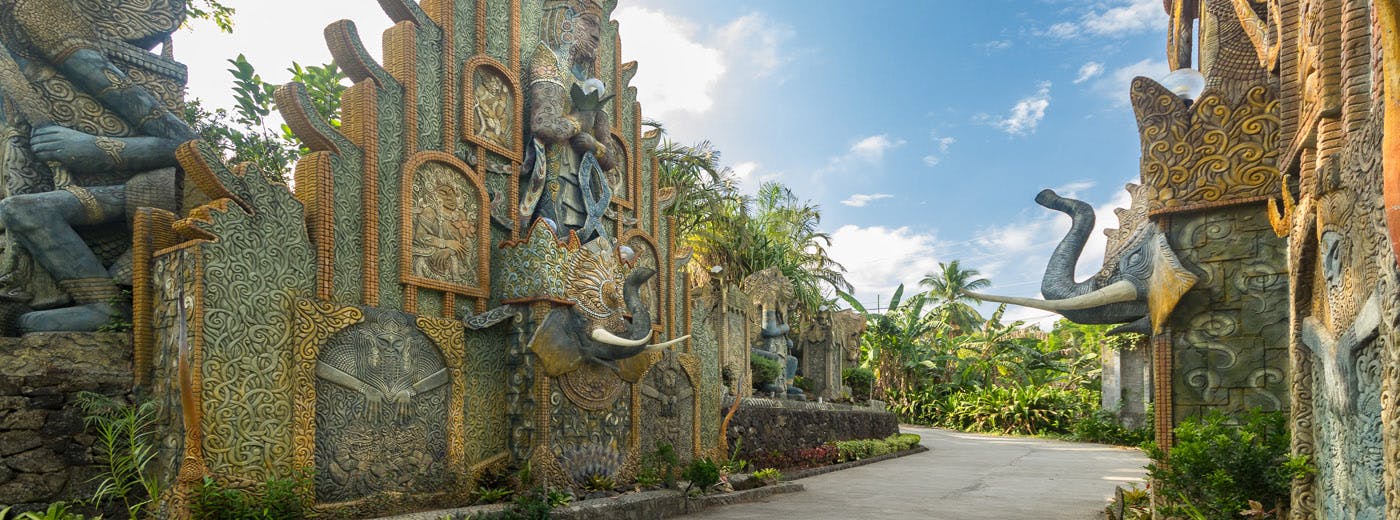
15 Best Tropical Bali-Like Resorts in the Philippines: Near Manila, Siargao, Cebu, Bohol
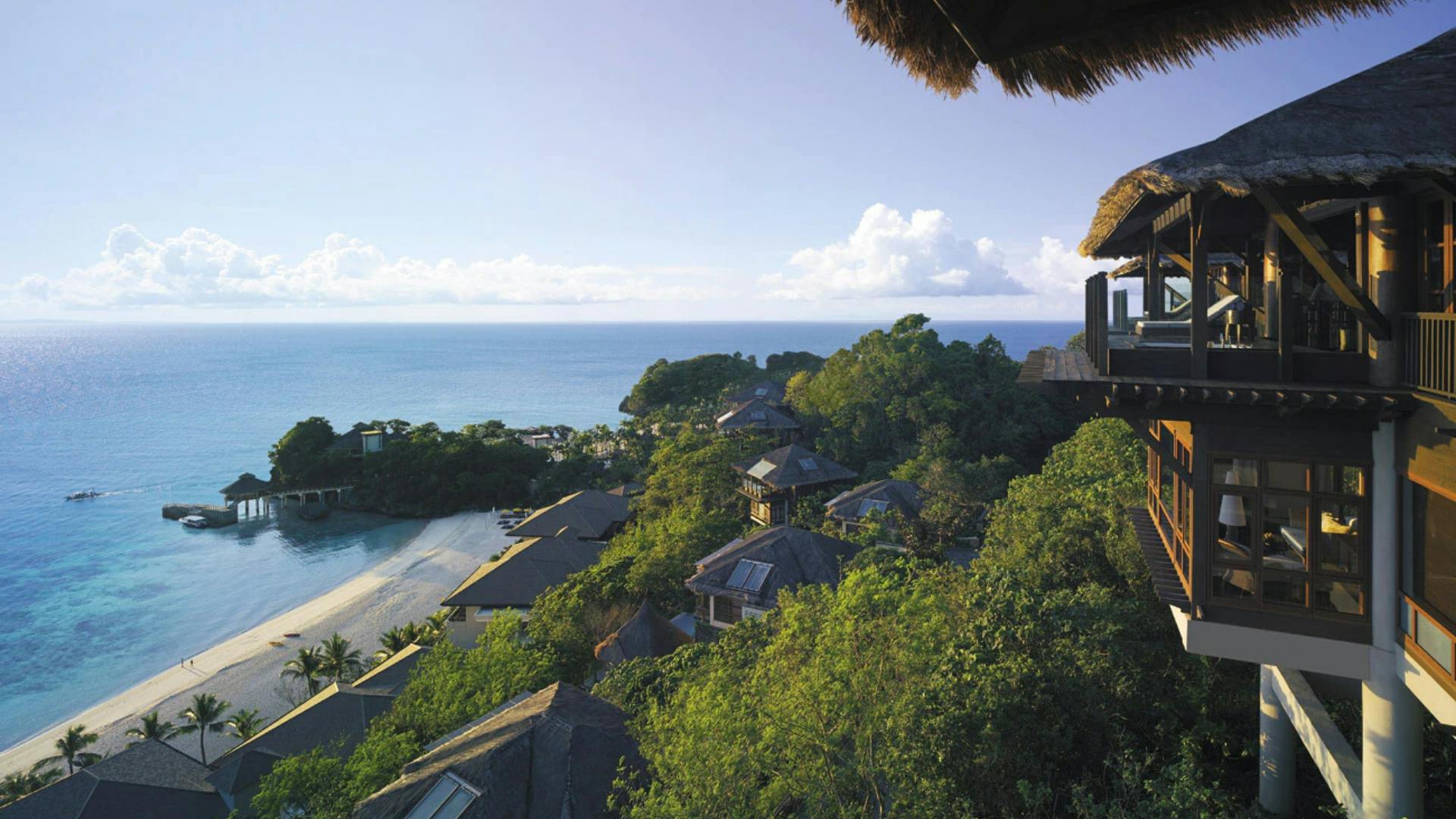
10 Best Treehouse Resorts in the Philippines for a Scenic Getaway at Mountains, Beaches & Rivers
Other interesting articles.

Guide to Chocolates in the Philippines: Where to Get the Best, Farm Tours, Local Brands
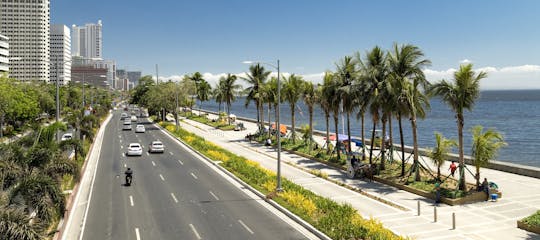
How to Rent a Car in the Philippines: Everything You Need to Know
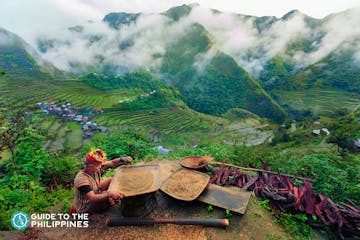
North Luzon Travel Guide: Explore Highlands of Baguio, Sagada, and More
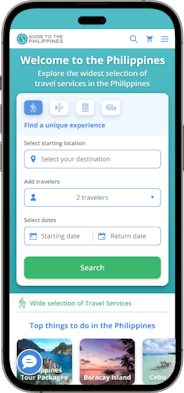
Download the Philippines’ biggest travel marketplace to your phone to manage your entire trip in one place
Scan this QR code with your phone camera and press the link that appears to add the Philippines’ biggest travel marketplace into your pocket. Enter your phone number or email address to receive an SMS or email with the download link.
Top things to do in the Philippines
Discover all the adventures you can experience in the Philippines
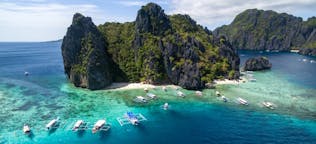
Philippines Tour Packages
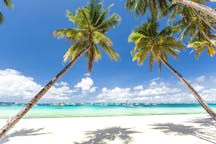
Boracay Island
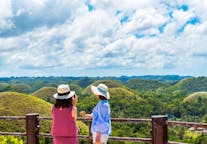
Bohol Island
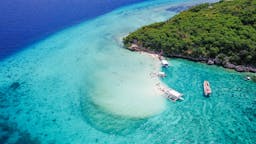
Cebu Island
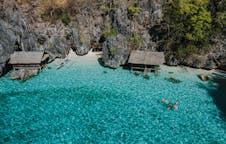
Coron Palawan
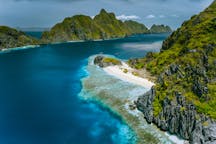
El Nido Palawan
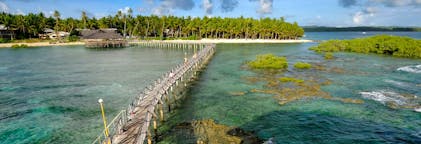
Siargao Island
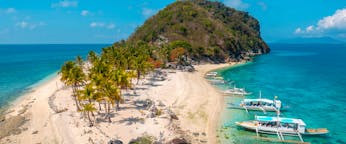
Iloilo City and Nearby

The Philippines Packing List: What To Pack And Why
Jackson Groves
Posted on Last updated: October 21, 2023
Categories PHILIPPINES
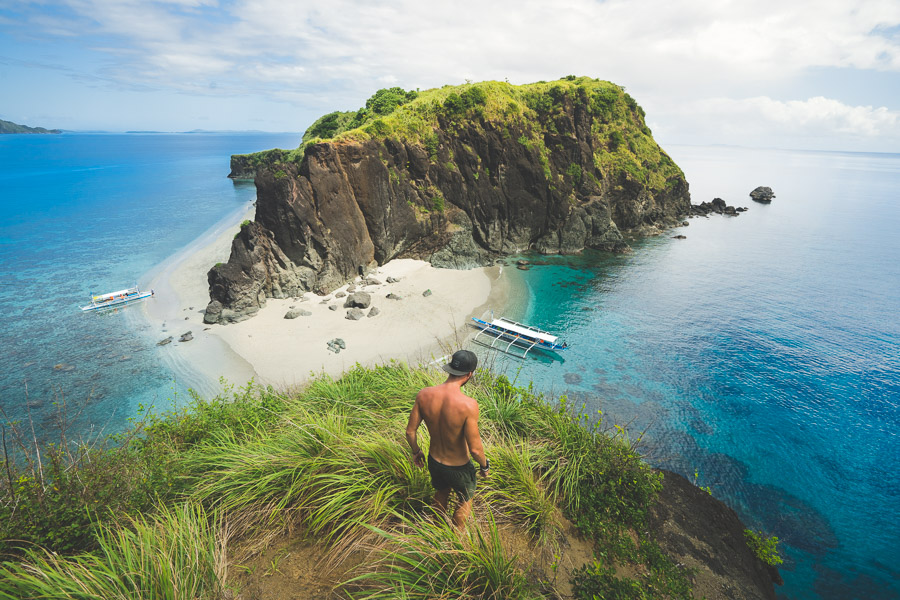
The Philippines is my favorite country in the world! And if you’re reading this now before your travels, it’s about to be yours too. If you’re looking to adventure, go cliff jumping, snorkeling, and waterfall hunting I’ve got you covered. This is the Ultimate Philippines Packing list to prepare you for your adventures throughout the 7,500 islands that make up the Philippines.
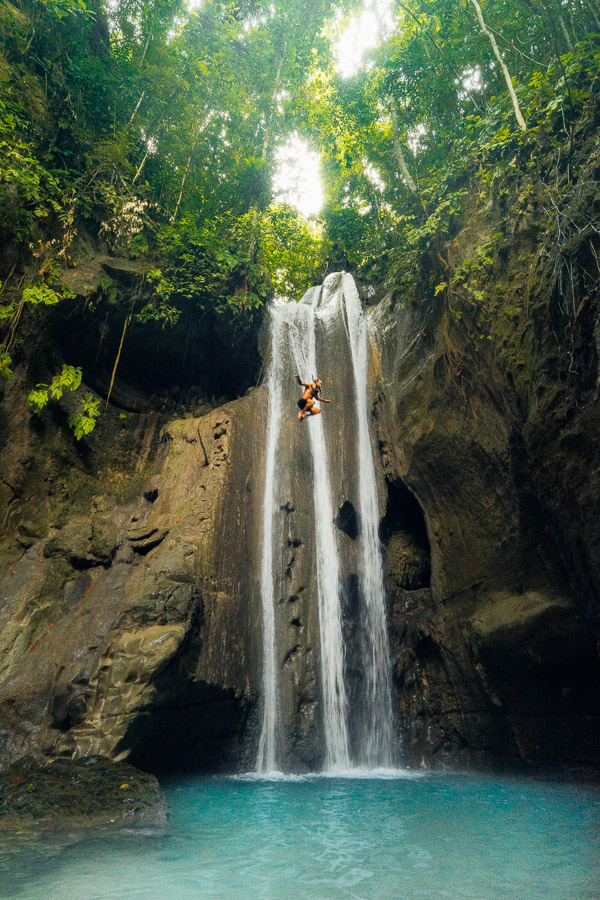
Table of Contents
THE ULTIMATE PHILIPPINES PACKING LIST
Here’s everything you didn’t know you needed to make the most of your trip to the Philippines. First, I’ll include a list of items to prepare you for your vacation. At the end of the blog post, is a complete Philippines Packing Checklist to ensure you don’t miss any important items.
THINGS TO KNOW WHEN PACKING FOR THE PHILIPPINES
There are a few key factors that make the Philippines different from other countries and therefore make your packing list different are the following:
- Humidity : The Philippines can be sticky, sweaty, and a bit awkward at times. Waterproof dry bags , phone covers , insect repellents , and other measures need to be taken into account.
- Rain : The Philippines can be boiling hot one minute and pouring with rain the next. You can still have an awesome time but a waterproof jacket that isn’t too thick is key.
- Water: There are a lot of waterfalls and island hopping activities so a GoPro or waterproof camera can be a really fun tech toy to help record your adventures.
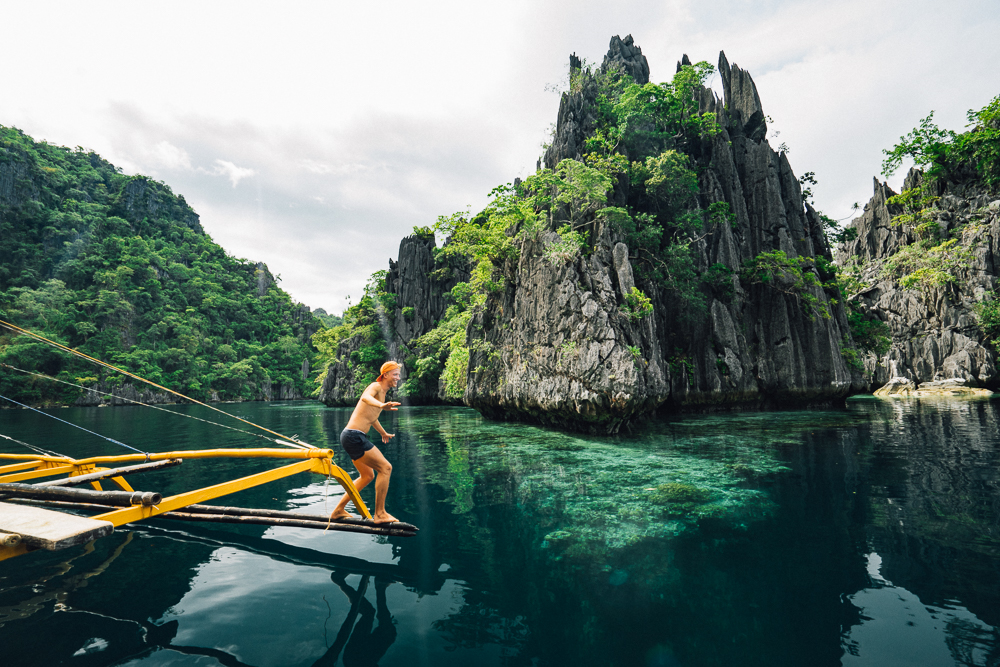
BEST INSURANCE FOR TRAVELERS
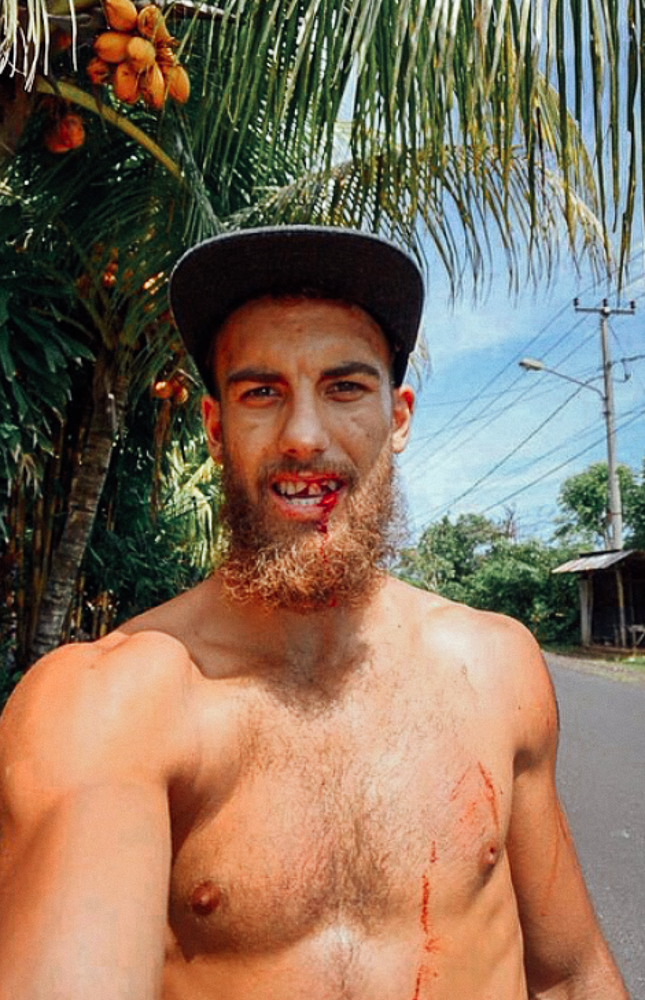
Don’t wait for an accident to happen… get insured! My travel insurance is HeyMondo which offers low-cost travel & medical insurance. That’s me on the left with three teeth knocked out after a motorbike crash in Bali!
You can click to read my Full Review of the Best Travel Insurance .
I’ve made several successful claims with HeyMondo and find their customer service very quick and helpful. Click the button below to get a 5% DISCOUNT
Reef Safe Sunscreen
While not officially banned in the Philippines, sunscreens containing Oxybenzone and Octinoxate cause damage to marine environments. Their continued use endangers the fragile coral reefs of the Philippines. In other words, opt to pack in reef-safe options to minimize your impact on the local environment.
Non-nano Zinc Oxide sunblock provides effective protection without risking absorption into your bloodstream, making it the safest option for you and the environment. Raw Elements Face + Body SPF 30 offers 80 minutes of water resistance to get the most out of a single application. My favorite reef-safe option for the face is SuperGoop’s Unseen Screen .
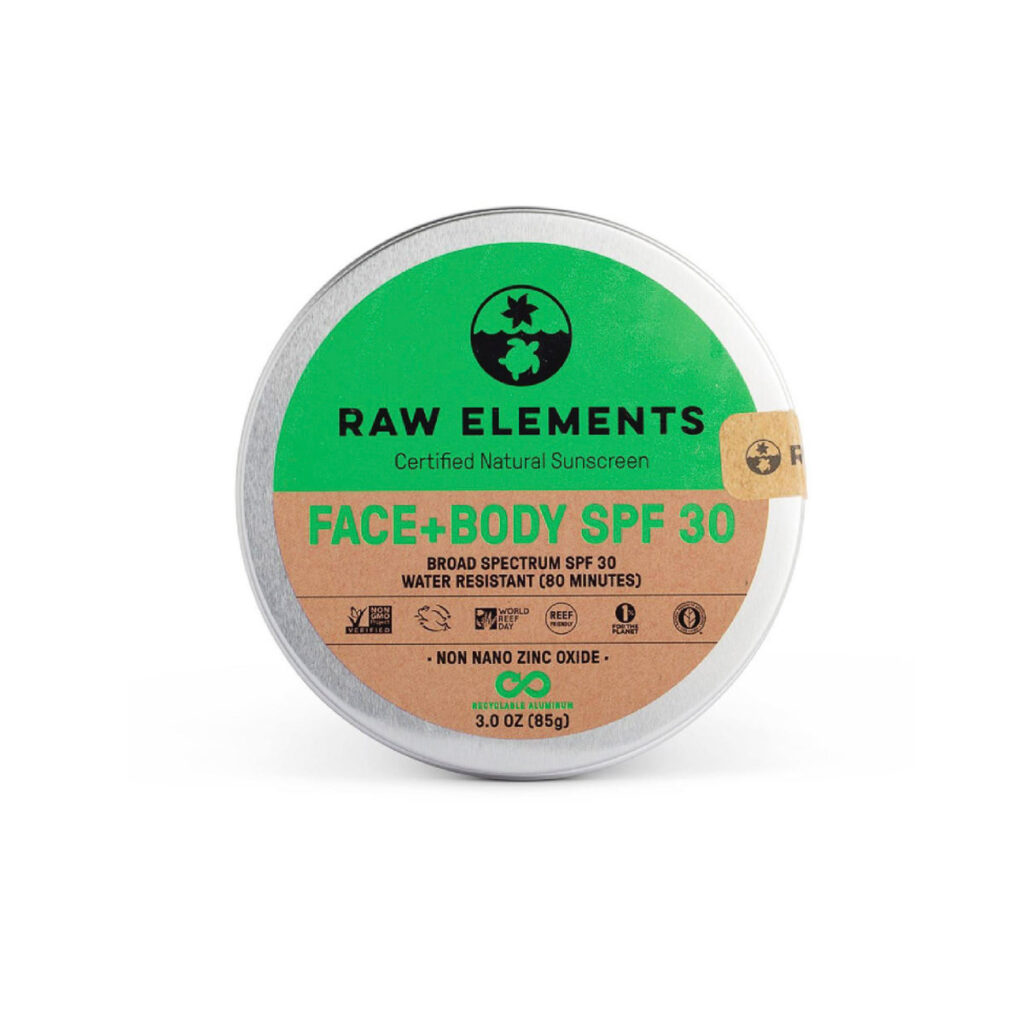
FACE + BODY SPF 30
- Non-nano zinc particles
- 80+ minutes water resistant
Waterproof Phone Case
With island-hopping, waterfalls, and world-class beaches, chances are you’ll have your phone with you near the water. Many smartphones are advertised as water-resistant these days, but water-resistant is far from waterproof. Consequently, a waterlogged phone is the most easily preventable way to ruin a trip to the Philippines.
Save yourself the trouble and invest in a waterproof phone pouch like this . Or, if you want to turn your phone into an underwater camera rig, the Axis GO is a great investment.
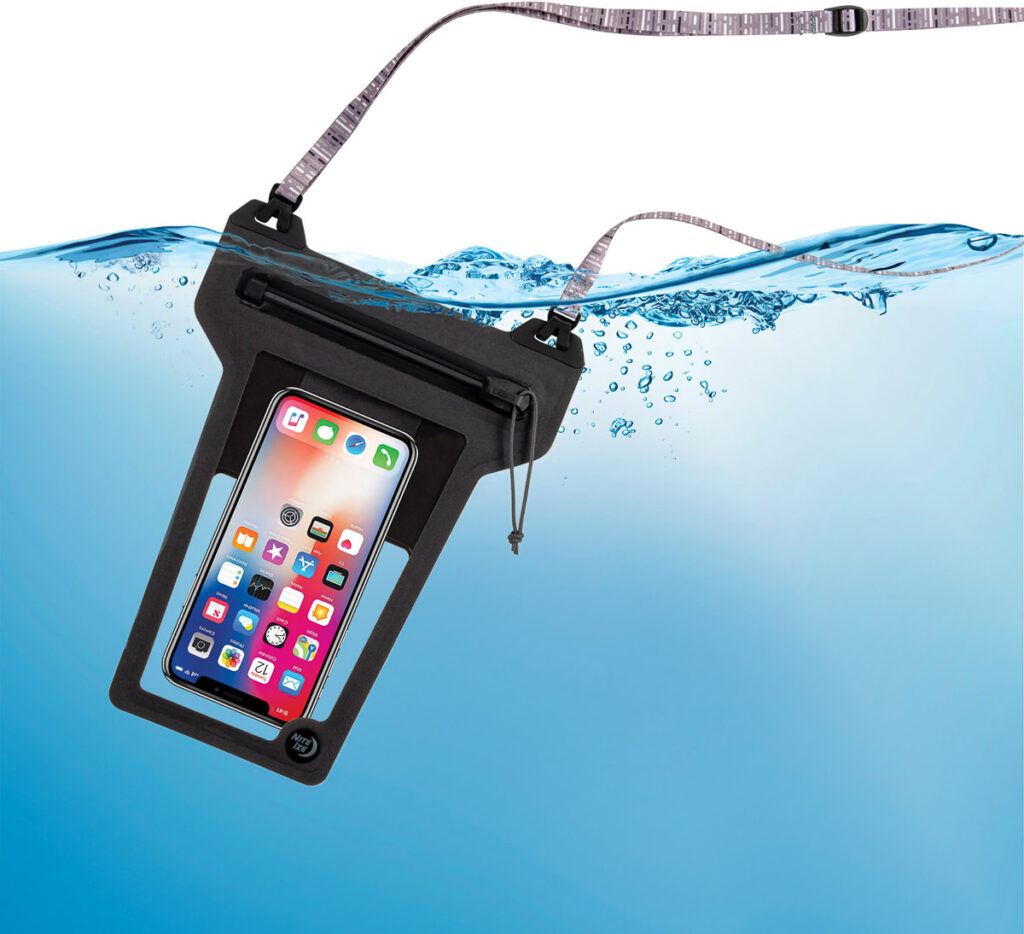
- Touch-screen & camera friendly
- Flexible pouch fits most phones
- Adjustable lanyard
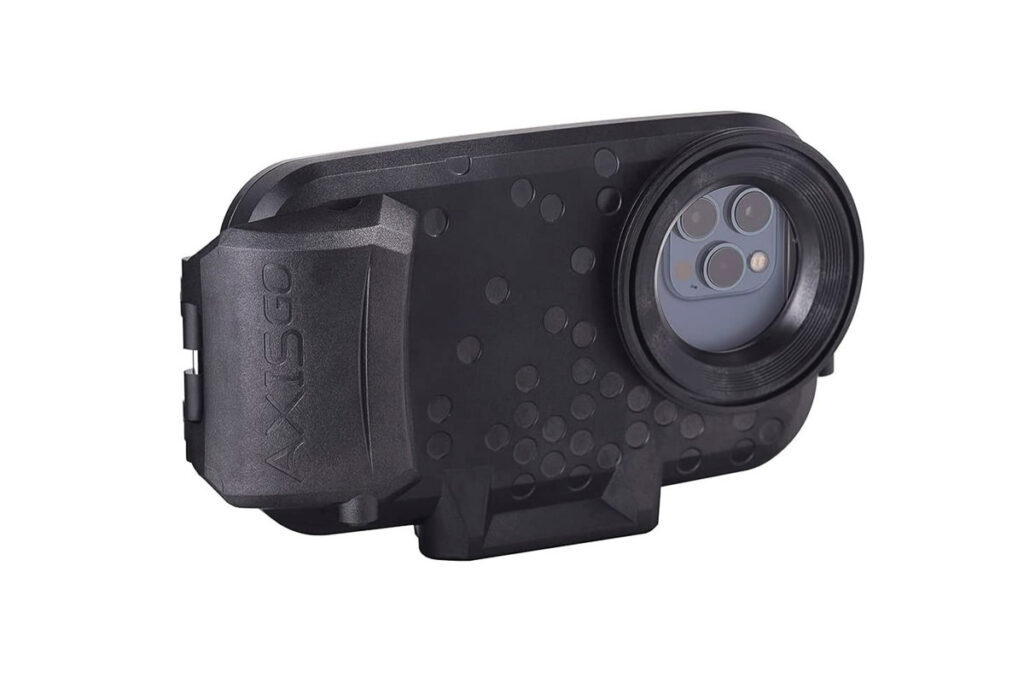
Mosquitos run rampant in the hot, humid climate of the Philippines. Pesky tropical mosquitos love to hang around same places you do, like palm trees, lagoons, villa pools, and pretty much anywhere else you’ll find water.
While Malaria and Zika are rare in the country, Dengue is common. If you plan to visit, it’d be best to pack an effective Deet-free mosquito repellant like this one . If you want full coverage, here’s an alternative with Deet .
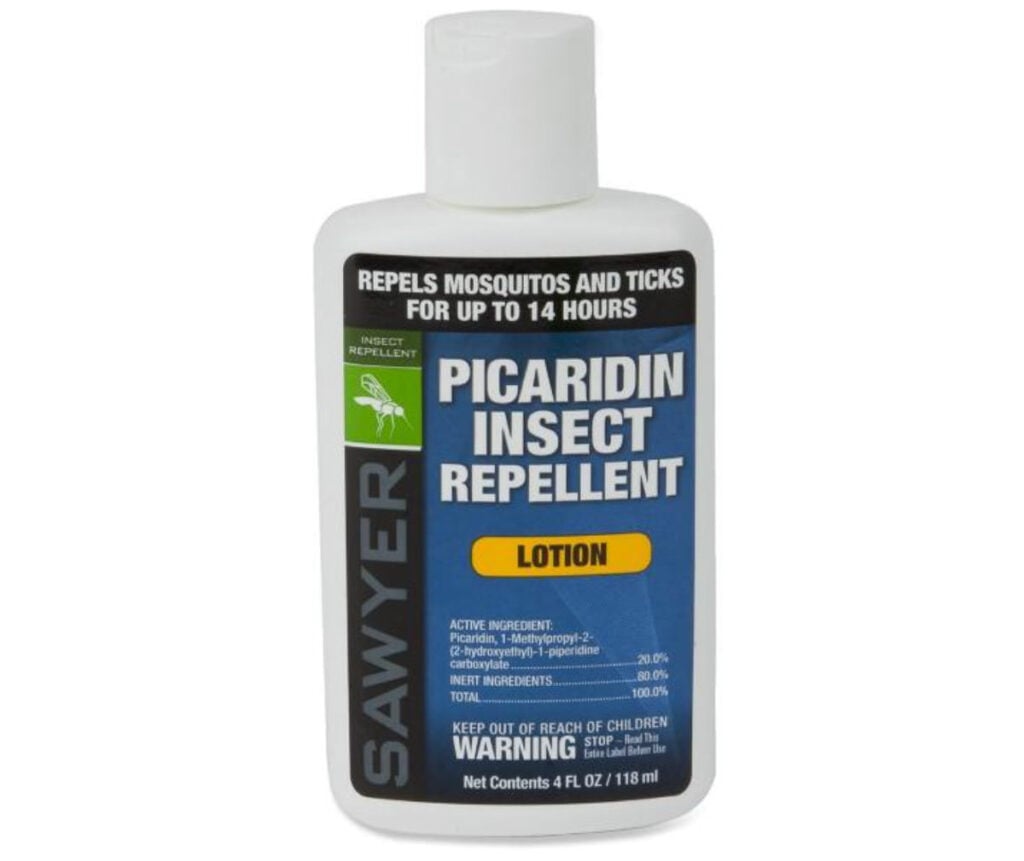
Picaridin Insect Repellent
- Repels mosquitoes, ticks, & flies
- Doesn’t harm gear or equipment
- Low-odor, non-greasy lotion
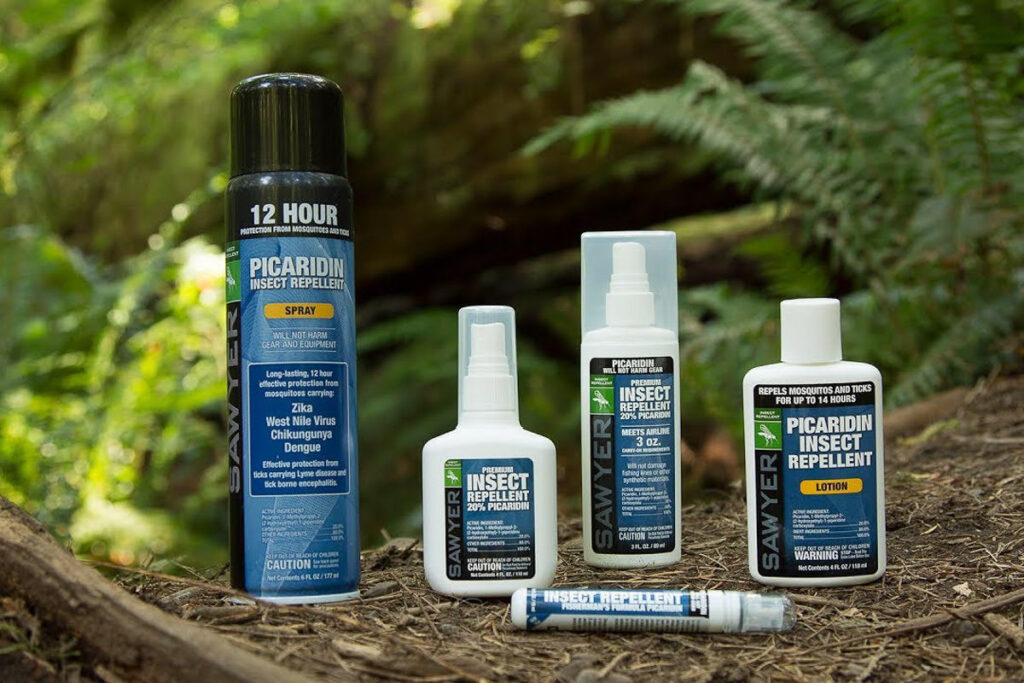
Water Shoes
Water shoes are a great way to explore the Philippines. Firstly, they prevent cutting up your feet on the volcanic rock that often accompanies its white sandy beaches. They also protect your feet from sea urchin stings and accidental coral abrasions. Secondly, they can also protect your feet against hot, midday sand, and provide traction on muddy waterfall trails.
These Xero Water Shoes tick all the boxes, with these NRS Water Shoes offering a slightly more cost-effective option.
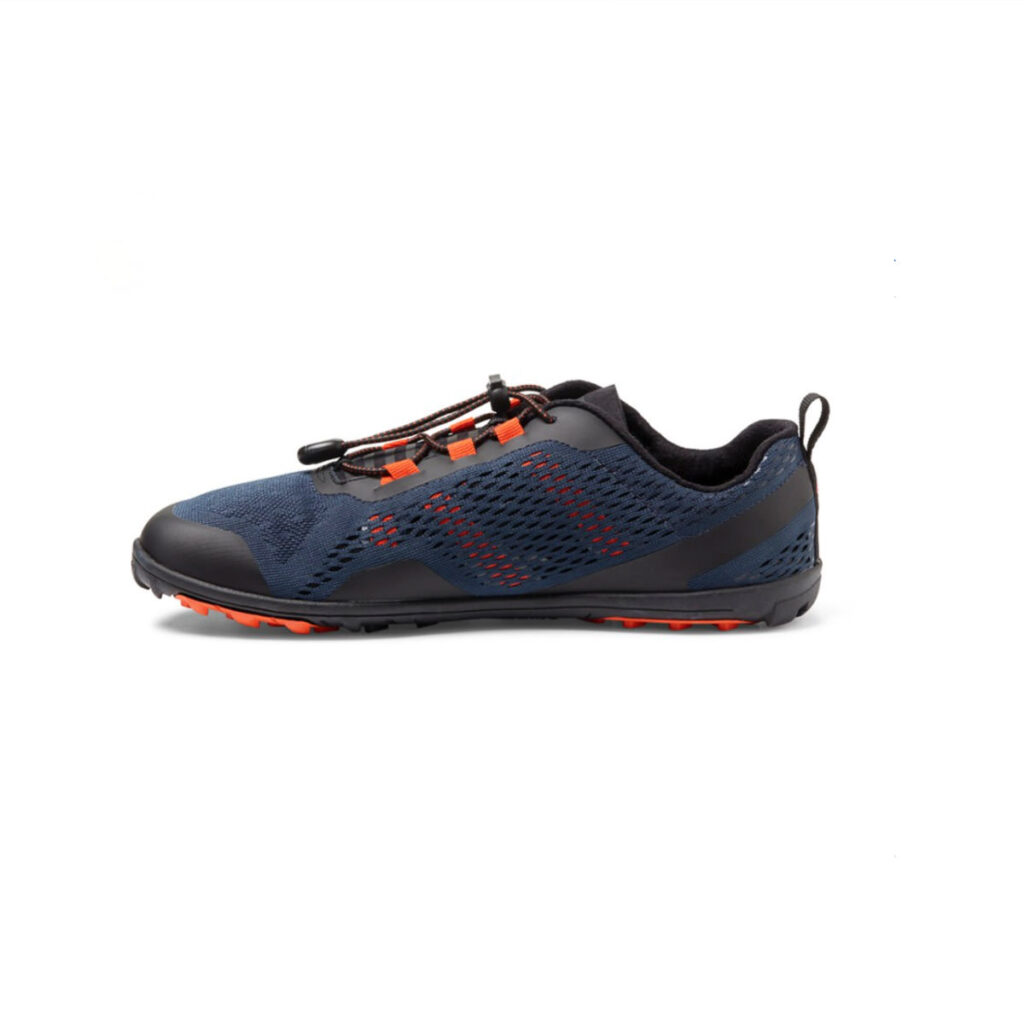
Xero Water Shoes
- Quick-dry linings
- Removable 2mm insole
- Grippy 5mm FeelTrue sole
- Vegan friendly
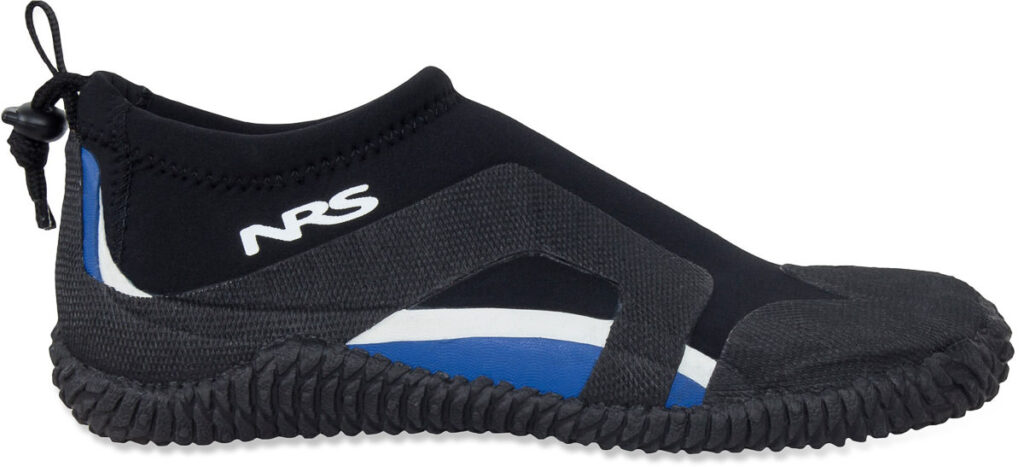
An easy way to ensure all your electronics and valuables stay dry, traveling to an island without one seems negligent. If you plan to do any island-hopping, waterfall, or boat tours, a dry bag is highly recommended.
If you’re visiting during shoulder-season or the monsoon, a dry bag might be necessary to keep your electronics safe during sudden downpours. Either way, make sure one of these options makes its way into your packing list!
This dry bag is large enough to fit all your valuables and includes backpack straps for easy carry. For a more minimal approach, this EarthPak Dry Bag provides 5 liters of protection at a more budget-friendly price.
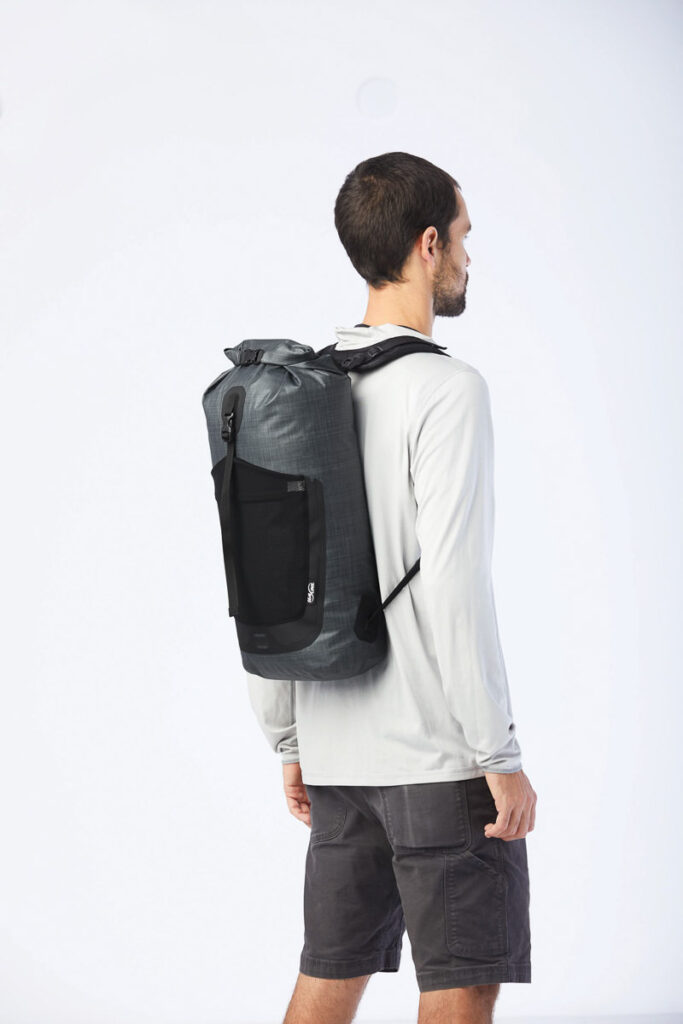
EarthPak Dry Bag
- 100% waterproof
- DrySeal™ roll-top
- Removable straps and hip-belt
- Exterior bungee system
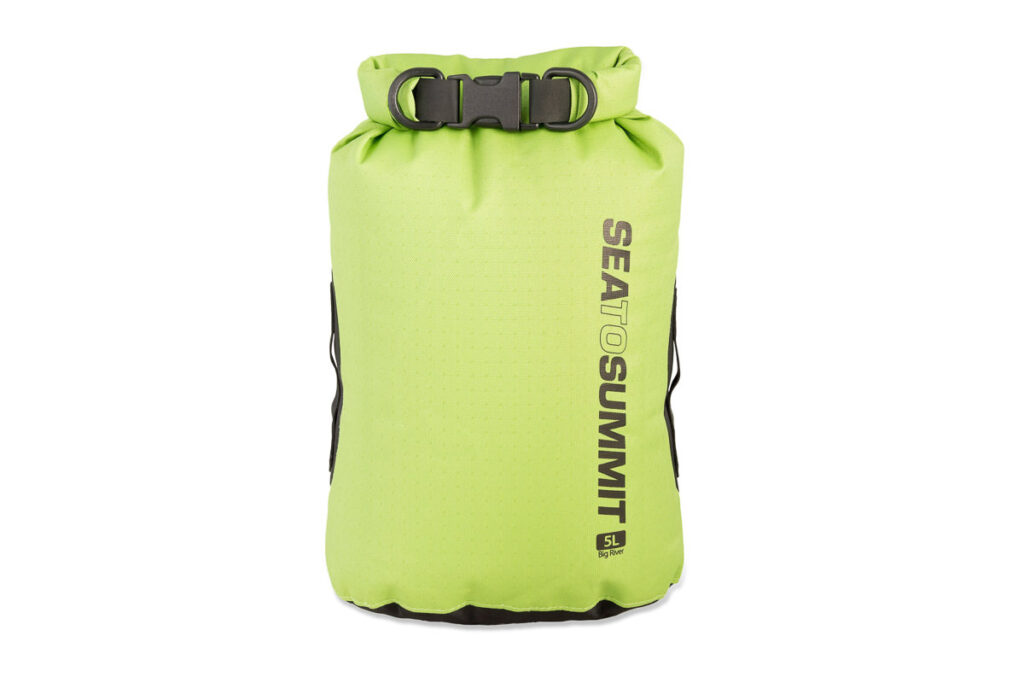
Travel Day Pack
Also known as the carry-on pretending to be a personal item, few people travel to the Philippines without one. A pack like this can comfortably carry your laptop, water, snacks, and a change of clothes for your long-haul flight to Manila. It also doubles as an adventure bag for your island hopping tours and waterfall hikes. In conclusion, it’s an item that shouldn’t be left at home.
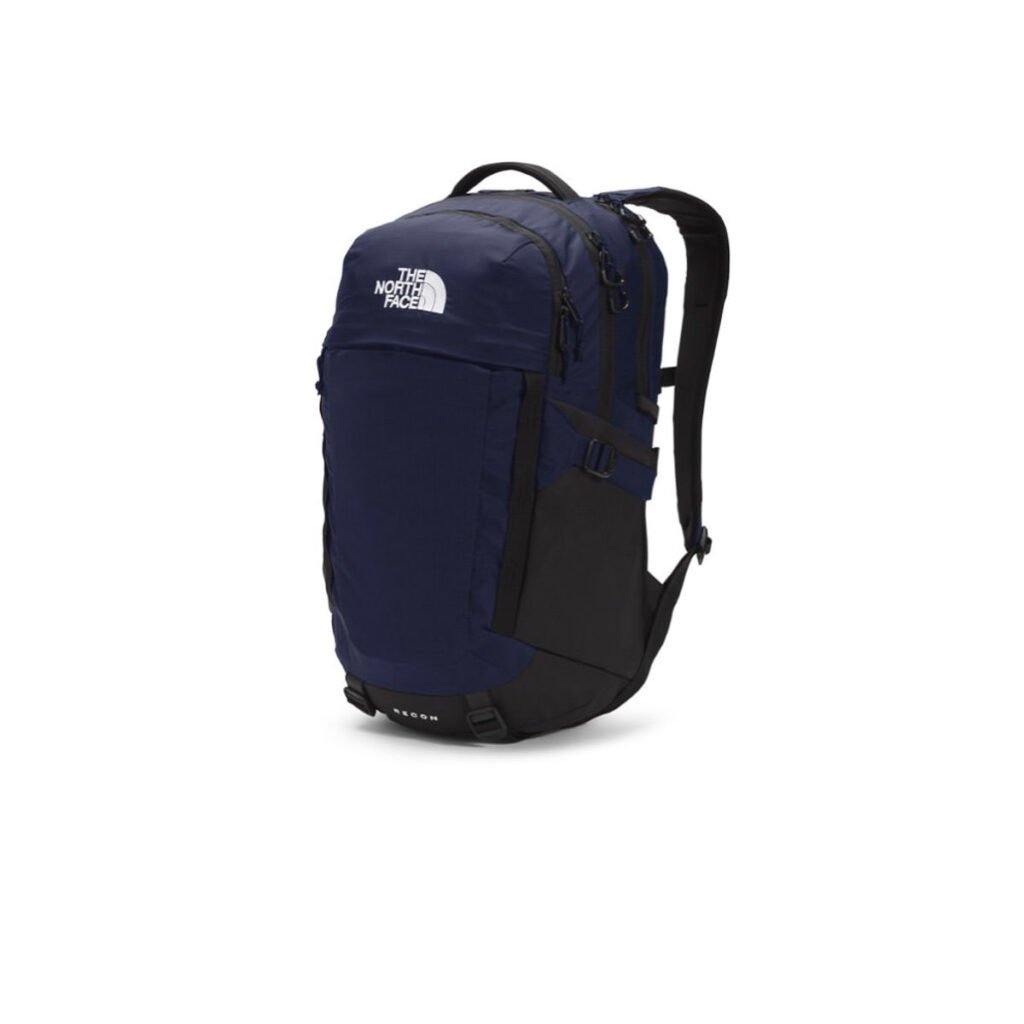
Hiking Backpack
- 30L capacity
- Laptop compartment
- Removable hip belt
- 2 external water bottle pockets
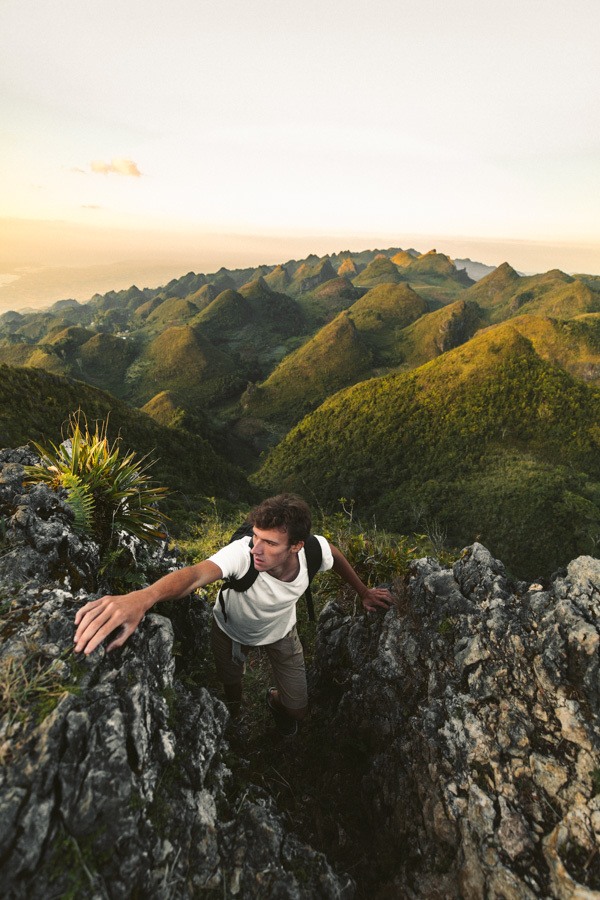
Underwater Camera
While we’re on electronics, let’s talk about underwater cameras. With so many picture-perfect beaches, waterfalls, and underwater activities to offer, having a waterproof camera on hand is always a good call. For this, the GoPro Hero 12 is my top recommendation. With HyperSmooth available in 4K resolution and slow motion, shaky, dull vacation footage is a thing of the past.
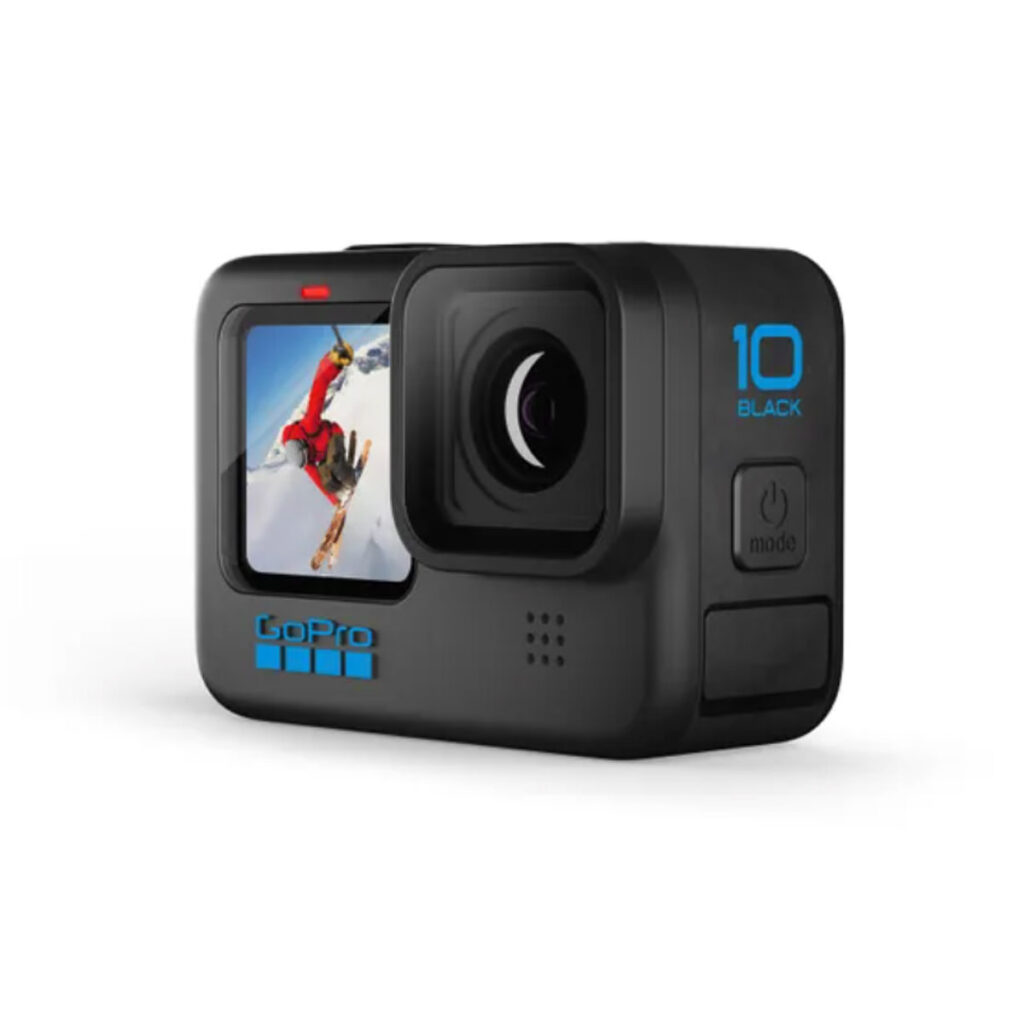
GoPro Hero 12
- Waterproof to 10m (33ft)
- 60fps ; 4K resolution
- 120fps ; 2.7K resolution
- Hypersmooth 4.0 stabilization
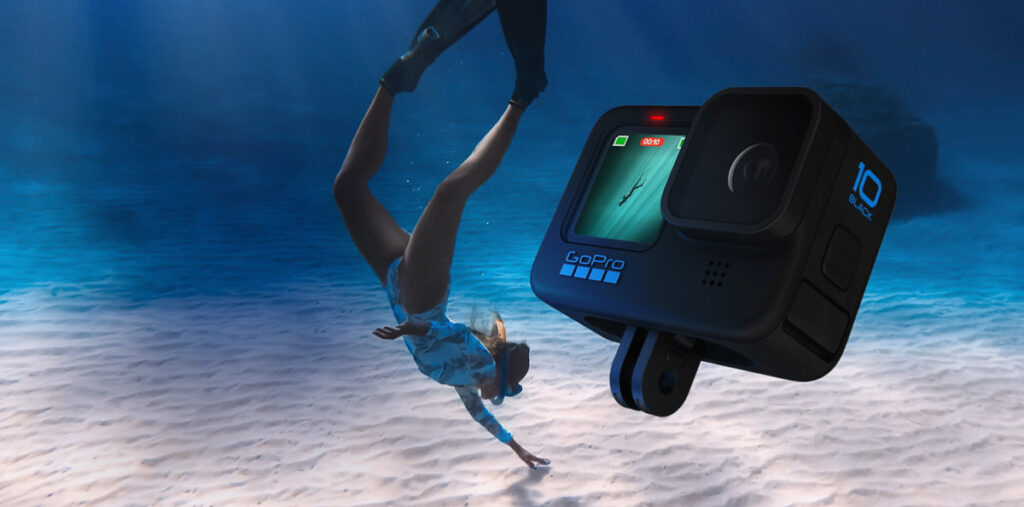
If you don’t opt for the Axis GO phone housing, I’d highly recommend a cheap dome port attachment for your GoPro. While a bit bulky, these make for awesome over-under shots. The double handles also help keep your underwater footage stable. Certainly, if there’s any time to use a dome port, it’s in the Philippines. I wrote a whole blog post about how to get great over/under shots with a dome port .
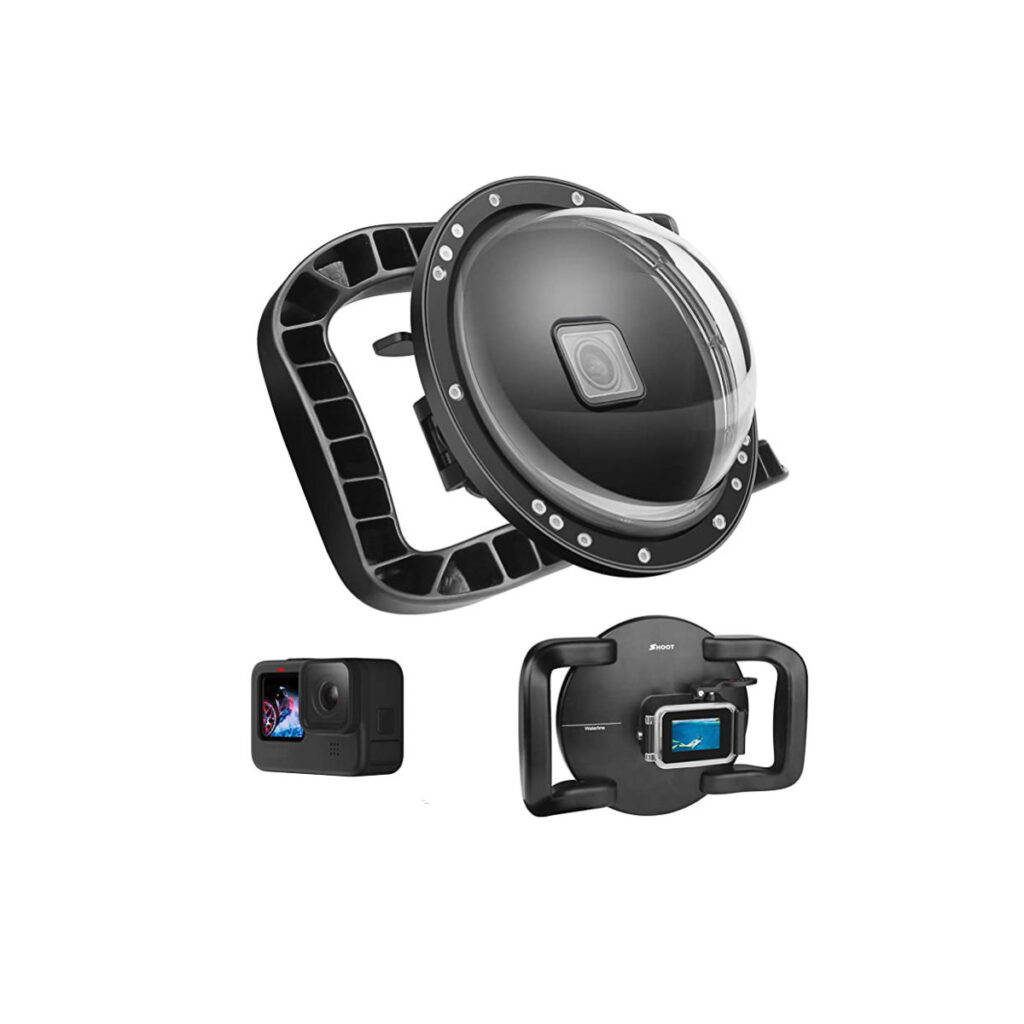
Dome Port for GoPro
- Waterproof to 45m
- Double handles for stable shooting
- Create 50/50 shots easily
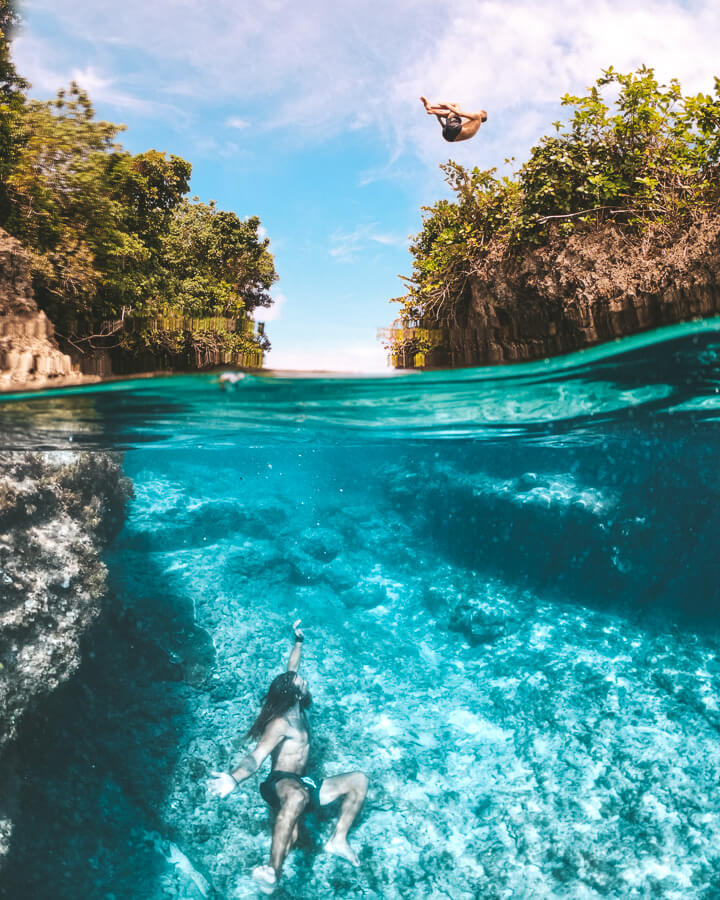
Selfie Stick
Need I say more? Pack yourself a selfie stick robust enough to handle the hard impact of the Philippines’ best cliff jumping spots, and long enough to get the whole crew in the shot. Don’t be ashamed of using your selfie stick. They capture some of the best and most engaging angles.
I use the Sandmarc GoPro Pole for a few reasons. Firstly the Sandmarc pole is longer than the default GoPro stick. Second, it doesn’t have a three-arm bend.
Most importantly, it’s built for holding out during a cliff jump, on a moped – it doesn’t bend or need adjusting. Just whip it out, get the shot, and put it away before anyone notices!
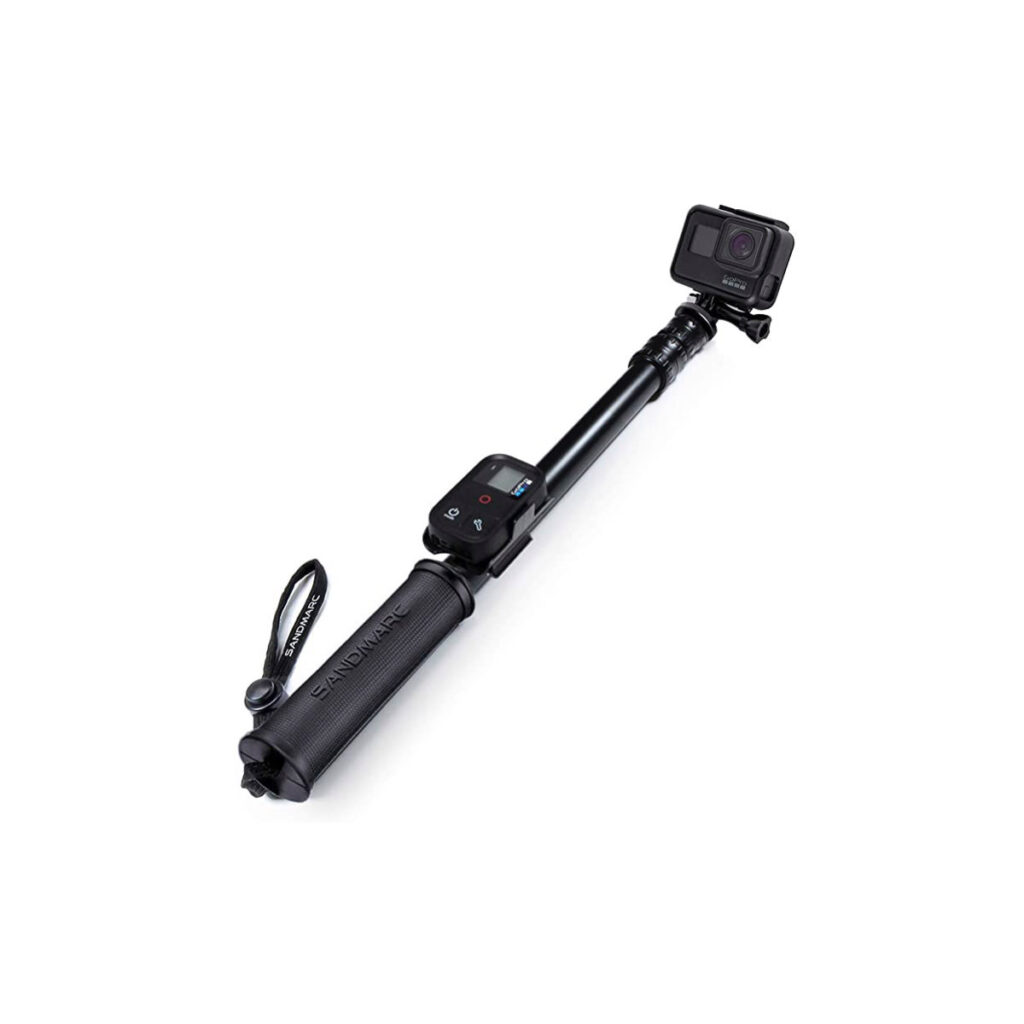
Sandmarc GoPro Pole
- Designed for action
- Telescoping length
- Lifetime warranty
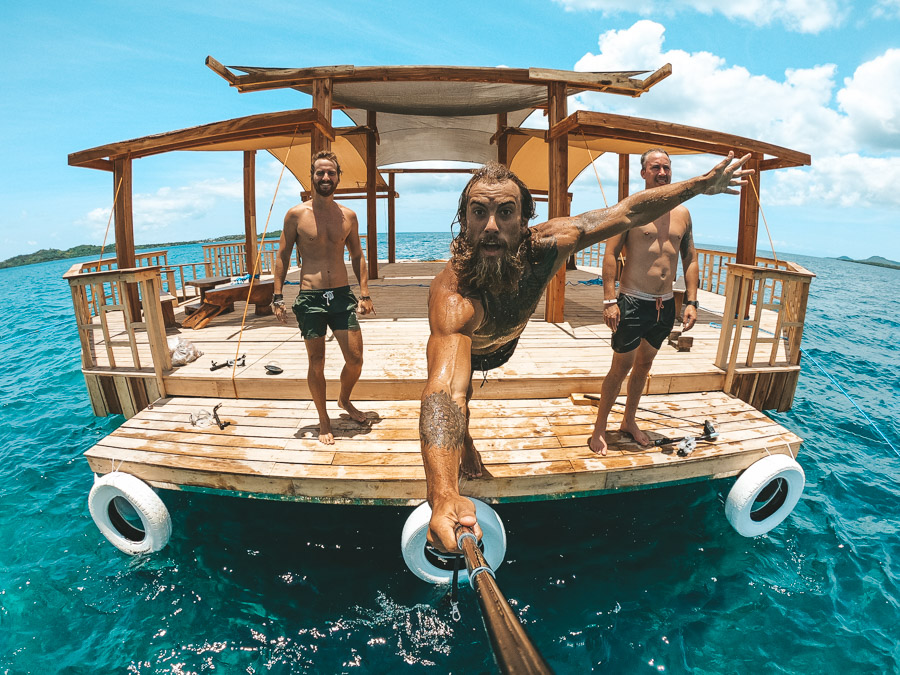
Reusable Water Bottle
Being on a tropical island shouldn’t be the only time you’re eco-conscious, but it can be a great reminder. Help keep the Philippines clean by opting out of plastic water bottles, and carrying a refillable Hydroflask instead.
Insulated and built to last, this is the bottle for all your adventures. Moreover, most bars and restaurants will happily fill a reusable bottle. If not, you can use the next item in my list to filter your water.
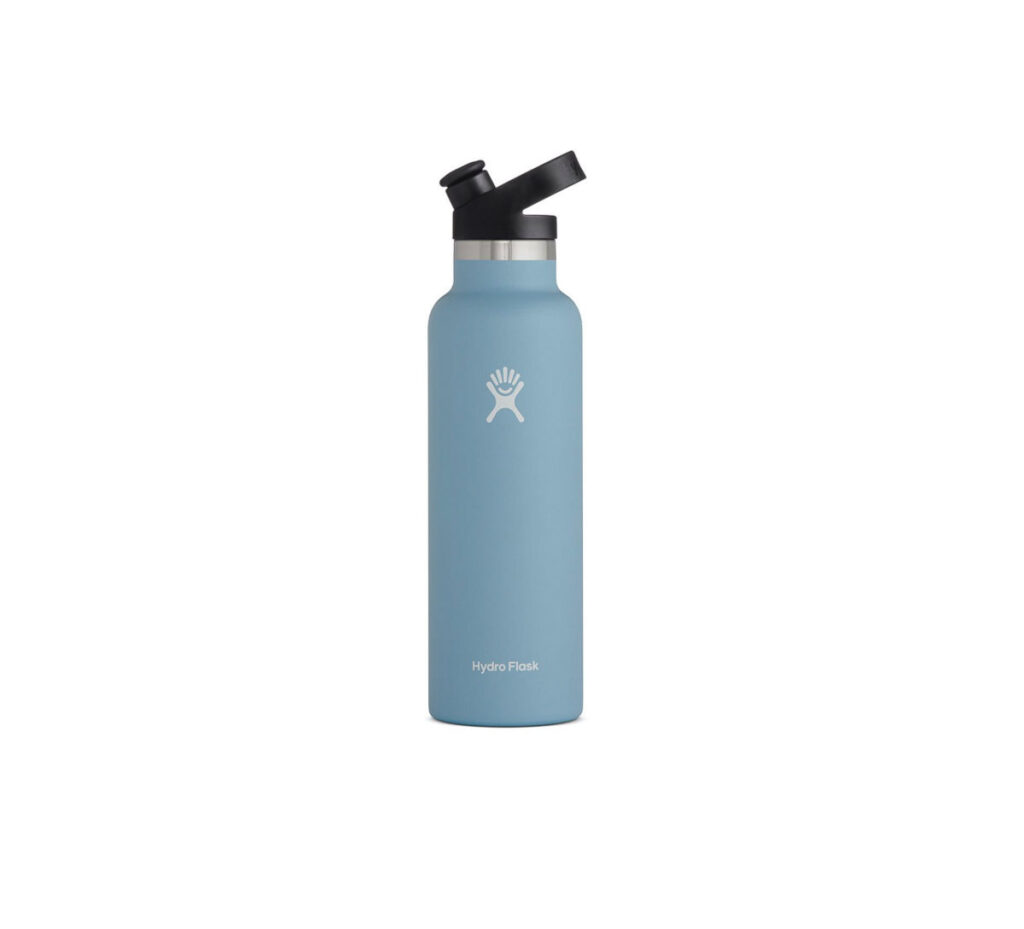
Hydroflask Water Bottle
- TempShield™ vacuum insulation
- Food-grade stainless steel
- Covered by a lifetime warranty
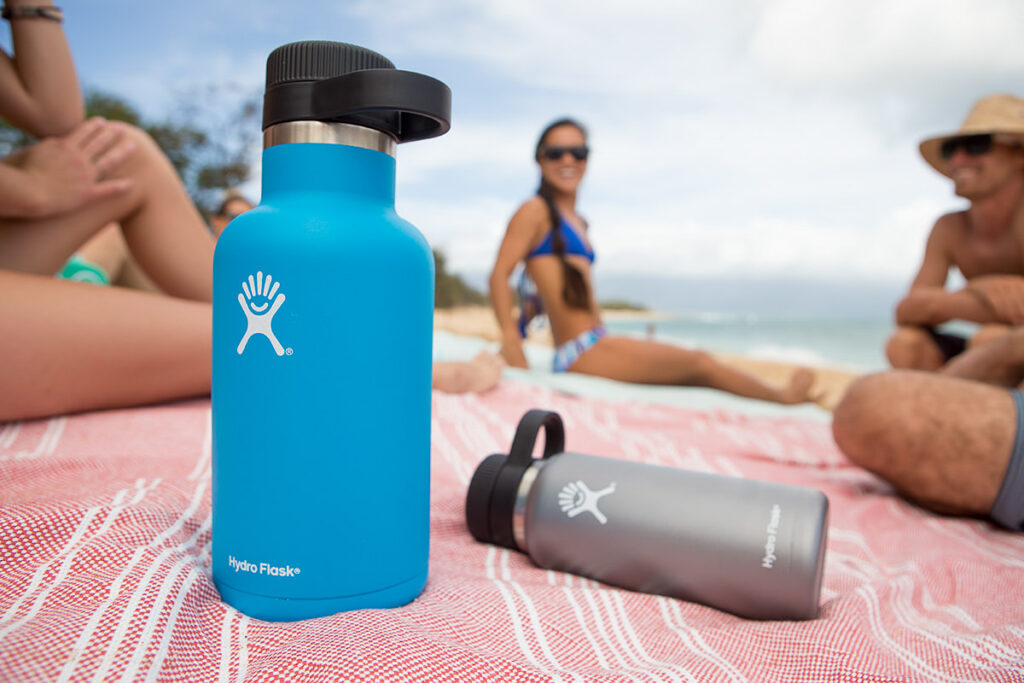
Grayl GeoPress Water Filter
I’ve used this for the past three years while traveling to some of the most remote and raw places in the world, and have never gotten sick. It filters your water with one 8 second press. In addition, you can drink directly from it once it’s been filtered. As a result, you could never buy a plastic water bottle again!
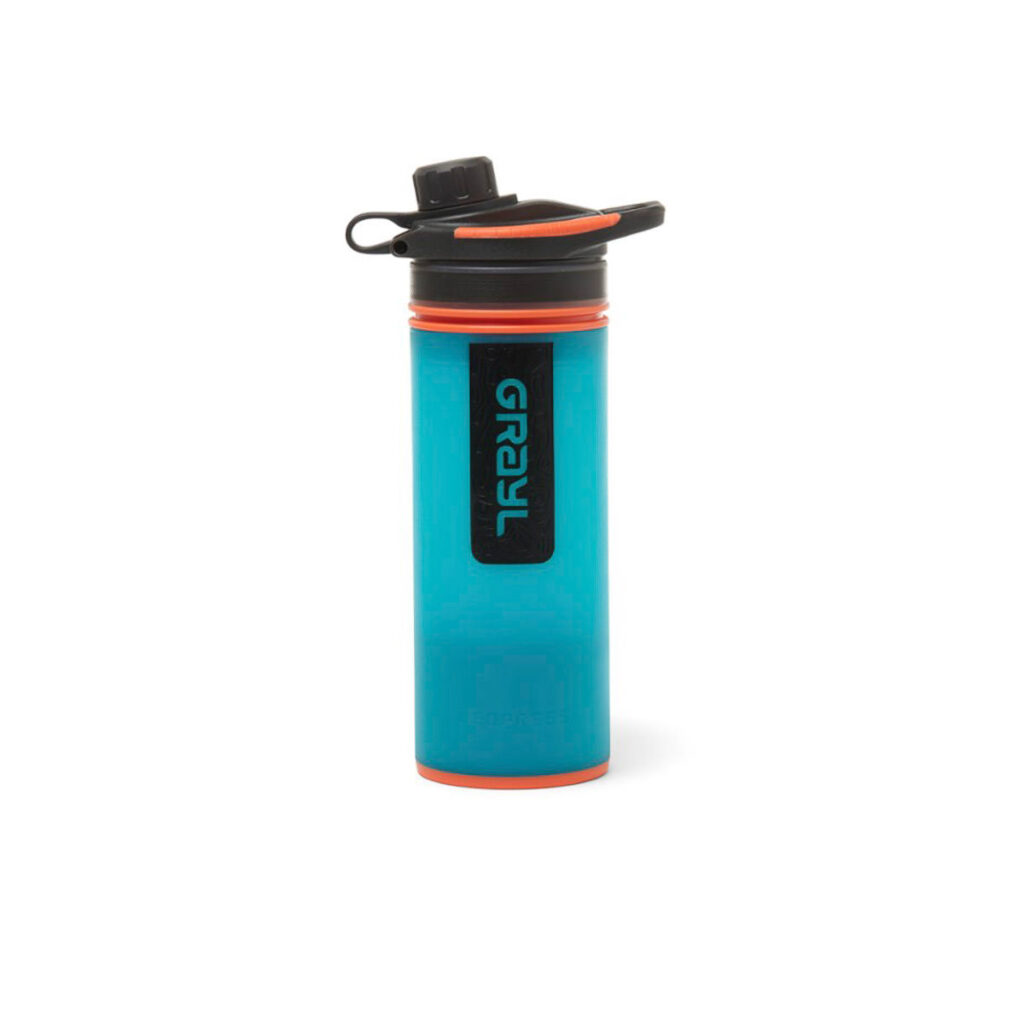
- Removes viruses & bacteria
- Activated carbon
- Purifies and filters in 8 seconds
- Travel Adapter
You should never travel without a travel adapter, even if you’re visiting a country with the same plug-in points. Being stuck during a layover with dead electronics is a drag. This universal travel adapter includes 2 USB ports to allow multi-device charging, as well as covering over 150 countries. It’s a lightweight and convenient way to improve your travel kit for a couple of bucks, and certainly shouldn’t be overlooked.
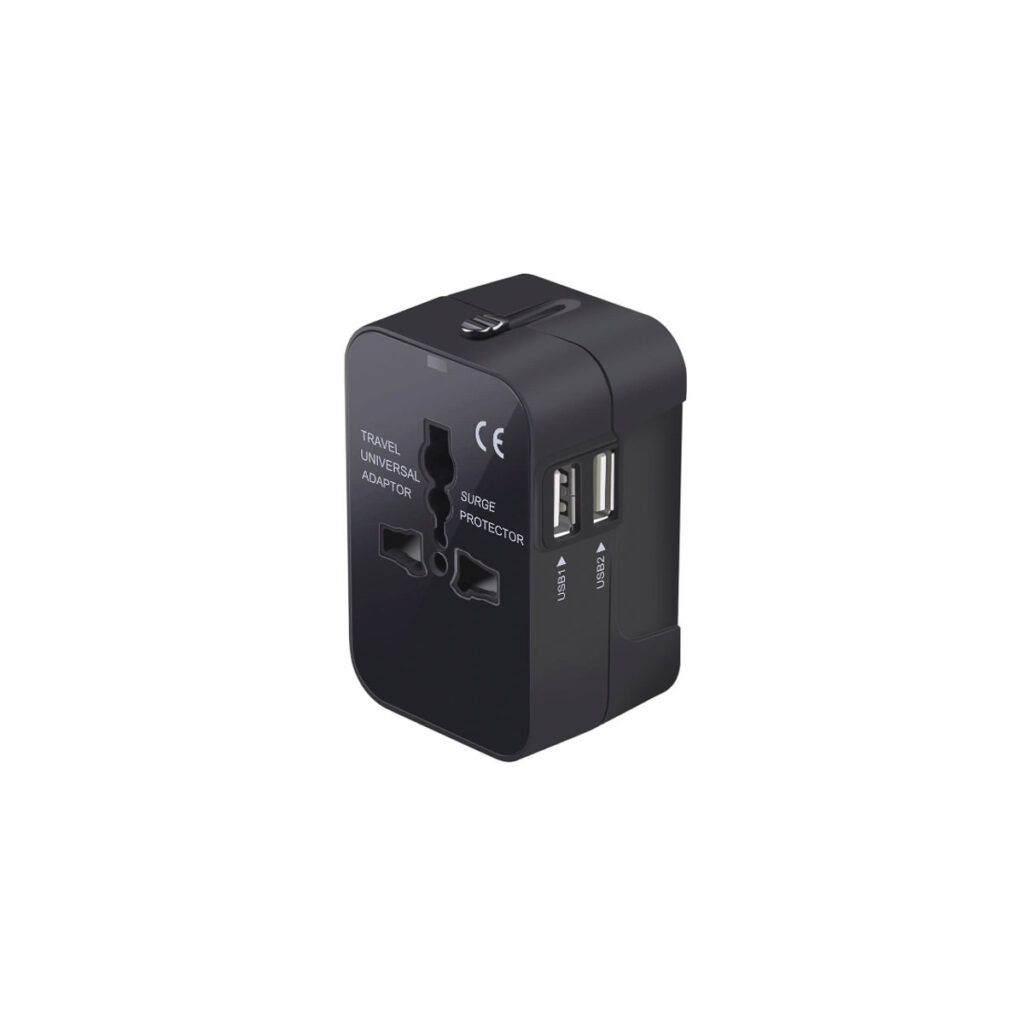
Universal Travel Adapter
- Covers 150+ countries
- Dual USB ports
- LED power indicator
I’ve been using Anker power banks for years and highly recommend them for a few reasons. Firstly, this model features dual-USB ports to allow multi-device charging. Secondly, it comes with a massive storage capacity, which can be more useful than you know. It’s great to have during the power outages that sometimes sweep through the Philippines, for example.
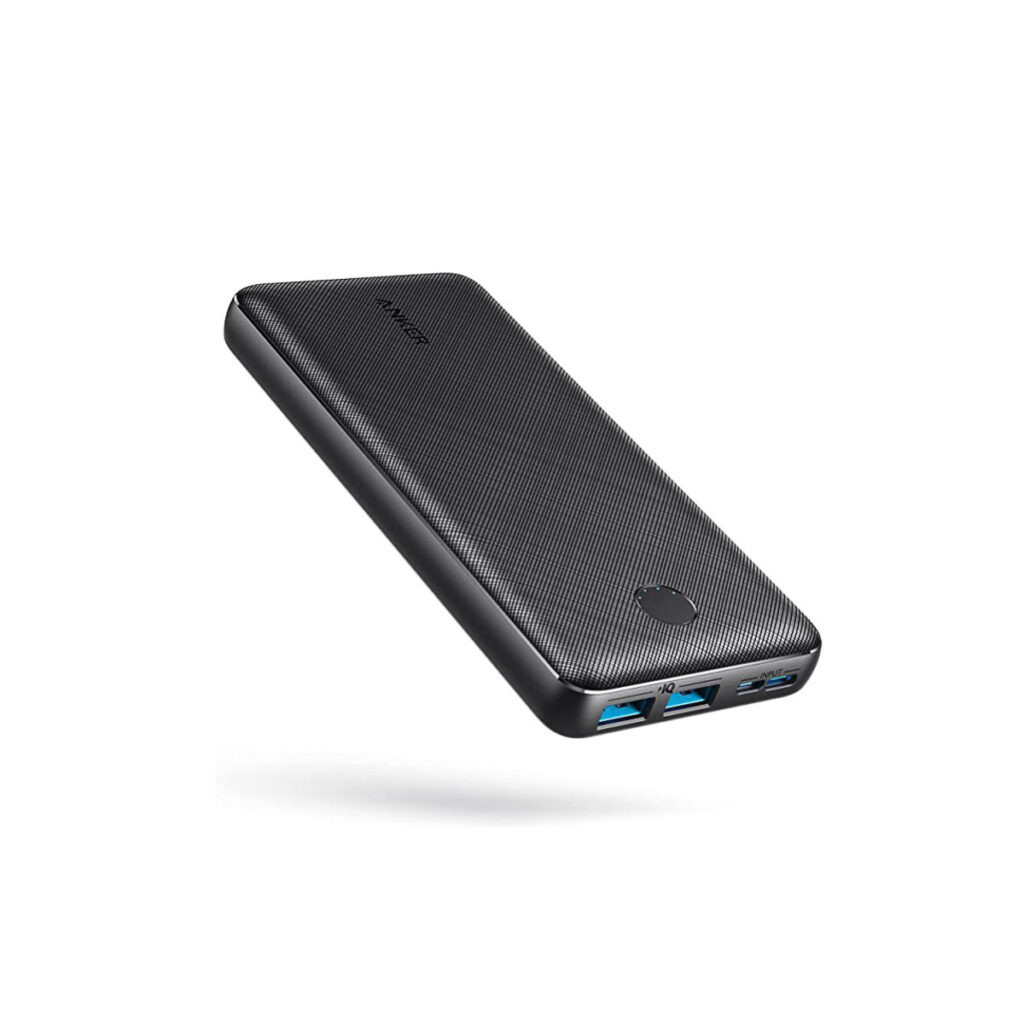
Anker Power Bank
- 92 hours of extra phone battery
- Versatile recharging
Light Rain Jacket
A lightweight rain jacket is a very handy addition to your adventure backpack. The Philippines is known for its great weather but it’s pretty common for there to be a short burst of rain each day. From the late night moped rides, to protection from torrential downpours or waterfall spray, you’ll be happy to have one of these in your bag.
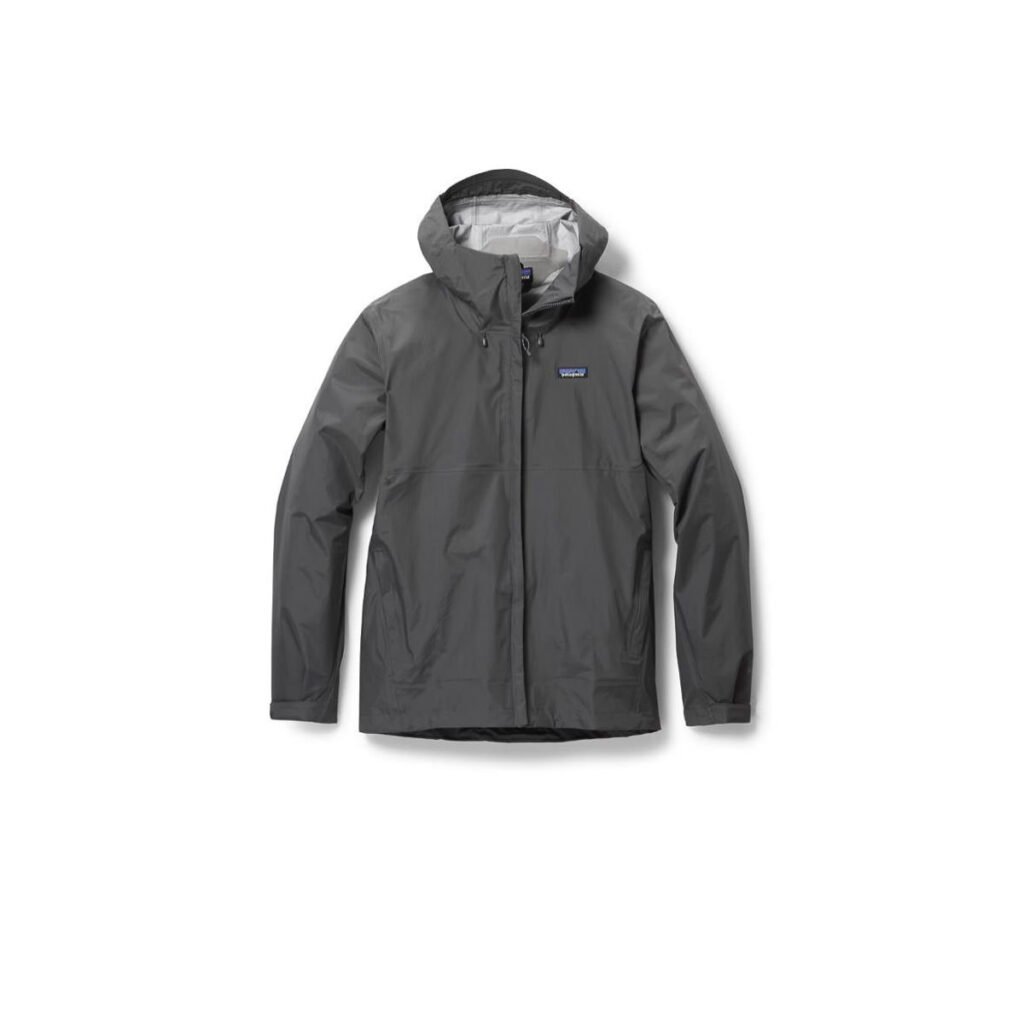
Arcteryx BETA AR Rain Jacket
- 3-layer H2No® Performance
- Self-stuffing pocket
- bluesign® approved and Fair Trade Certified
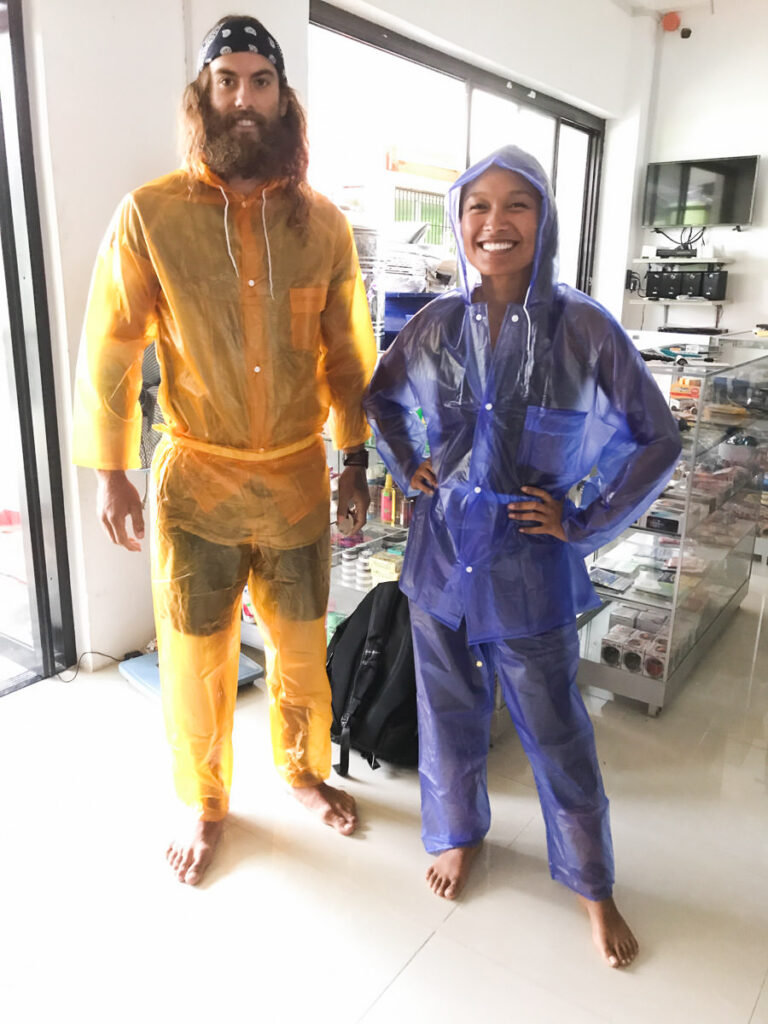
Travel Towel
Never underestimate the need for a lightweight travel towel – especially in a place like the Philippines. Having a microfiber towel on hand can be the difference between shivering through a boat ride or enjoying a sunset cruise. These microfiber travel towels pack very small and easily fit in your day pack or beach bag.
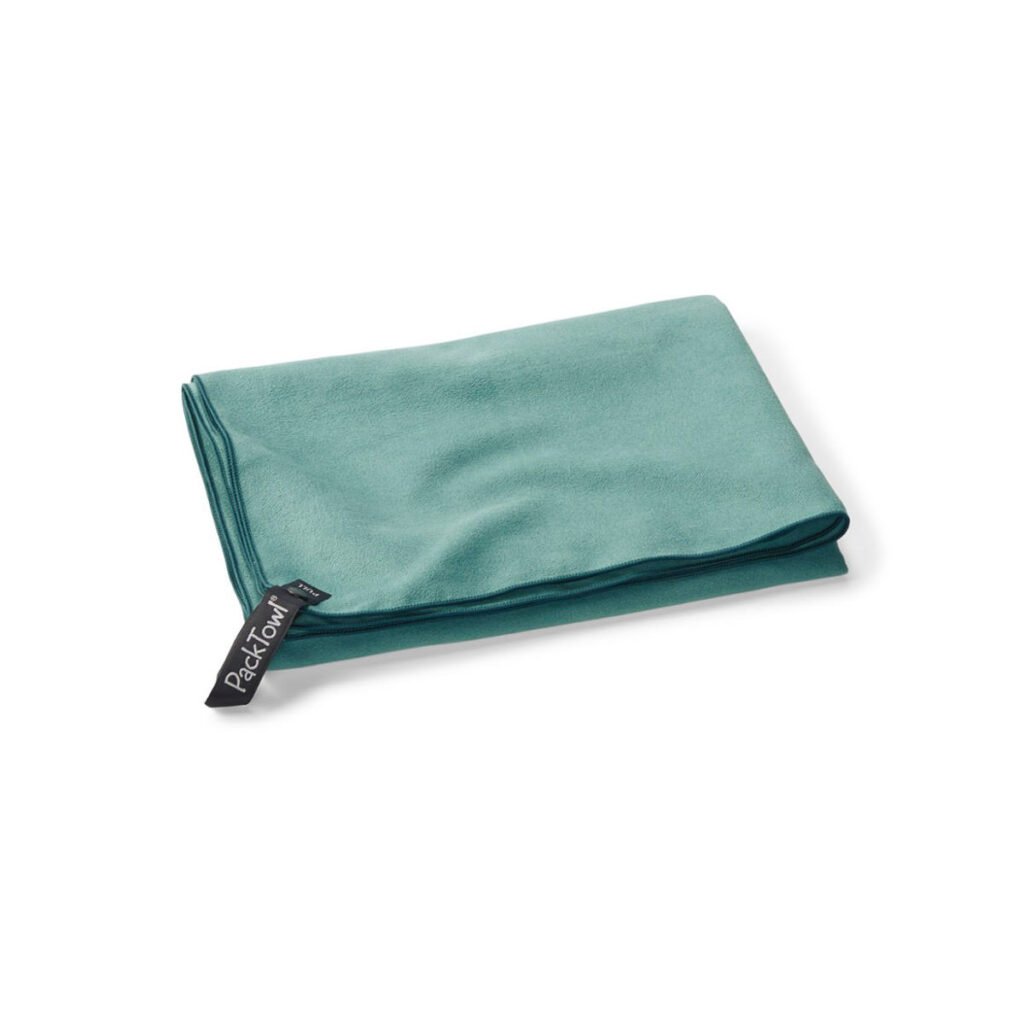
PackTowl Personal Towel
- Absorbs 4x its weight in water
- Antimicrobial treatment
- Variety of sizes & colors
- Included travel pouch
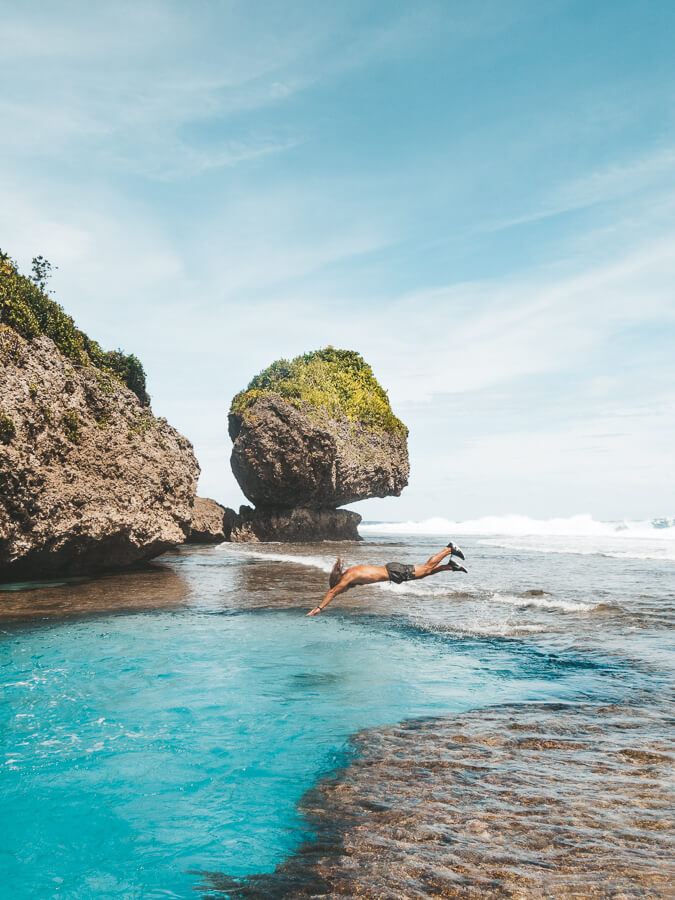
Crushable Sun Hat
The Philippines is way too close to the equator to not pack a hat. A wide-brimmed hat offers an extra layer of sun protection while also keeping beach hair under control. A crushable hat makes for the most travel-friendly option. If you’re looking for something you can also take hiking, this Lanzom Crushable Fedora also offers UPF 50 protection, sweat wicking fabric, and a chin strap.
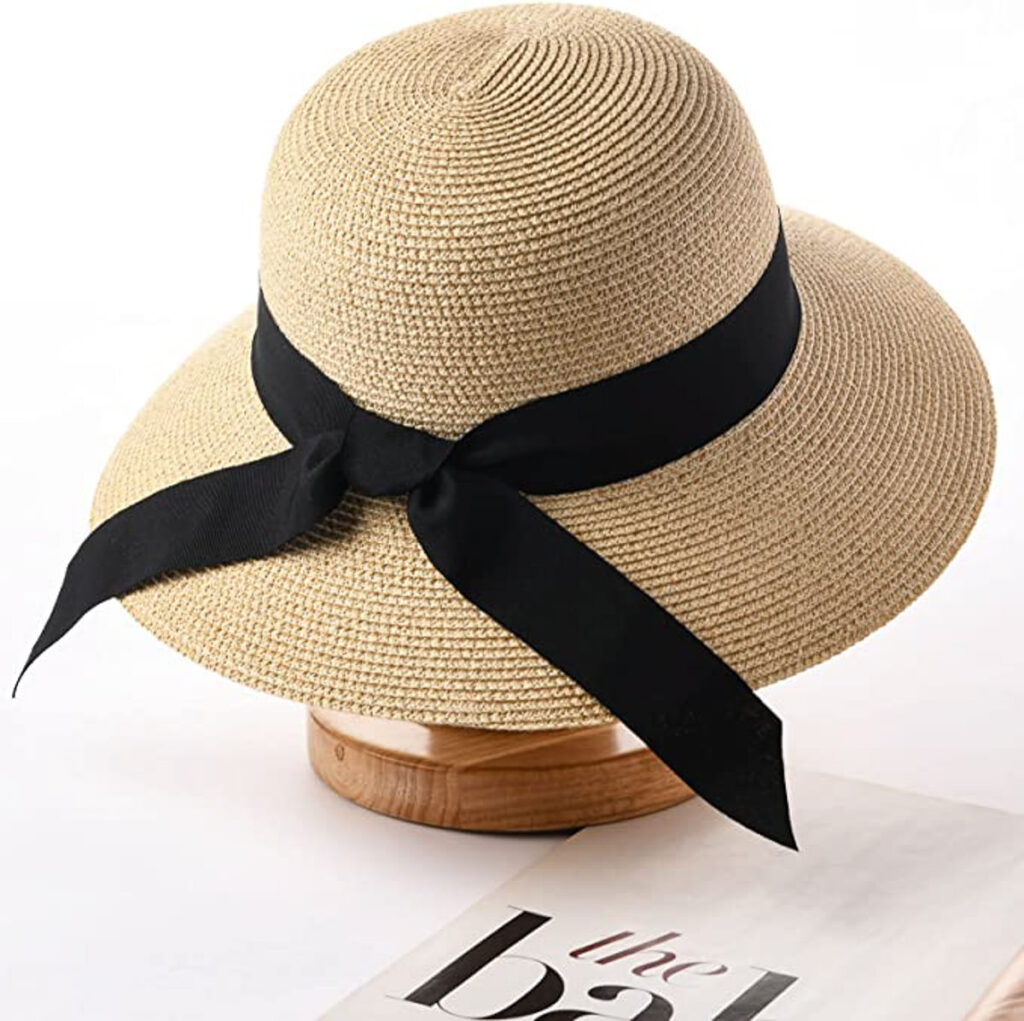
Crushable Sunhat
- UPF 50+ sun protection
- Adjustable size
- Travel friendly
Leave-In Hair Conditioner
If you’ve got long hair and are planning to spend time in the water, I’d recommend taking good care of your hair. My girlfriend worked on a dive boat and swore by this leave-in conditioner to keep her hair healthy despite the salt water and sun day after day. Stream to Sea includes eco-conscious packaging and natural, reef-safe ingredients for guilt-free care.
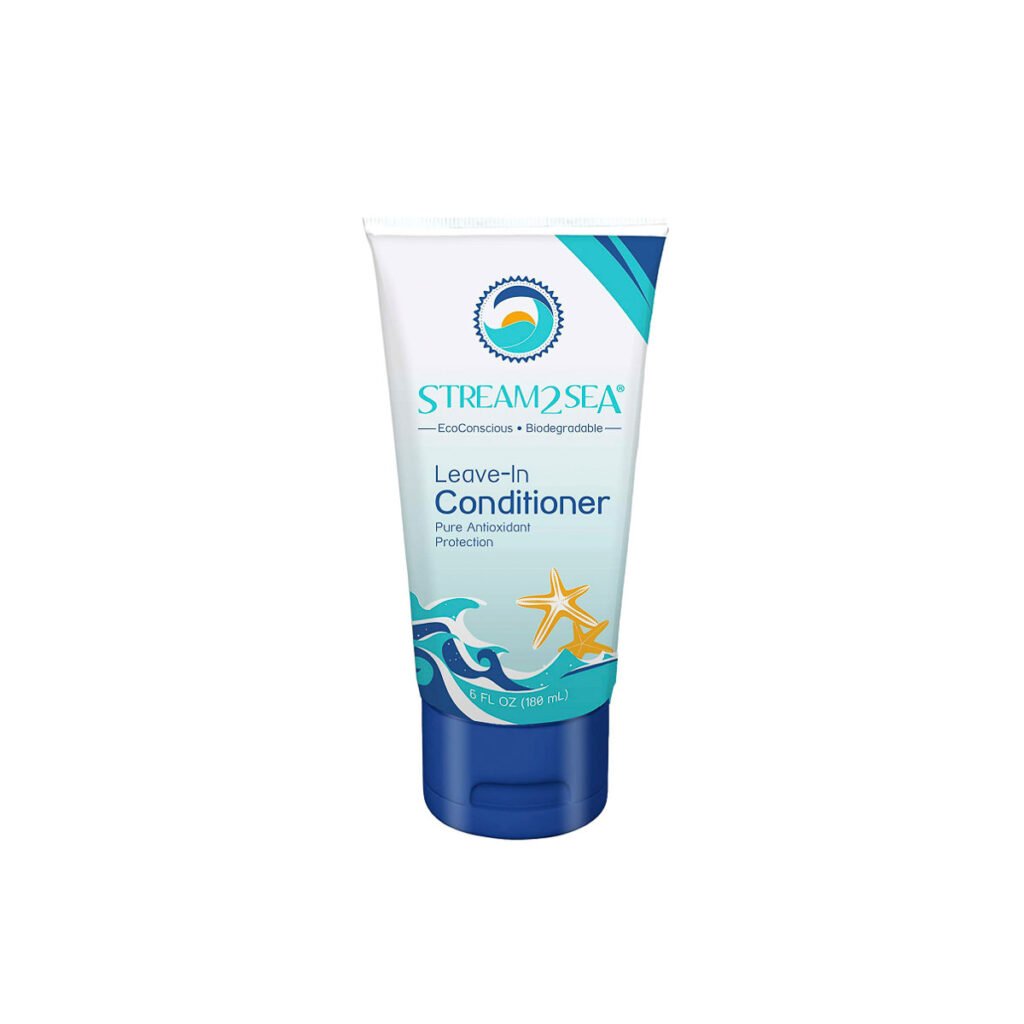
Leave in Conditioner
- Paraben & Sulfate-free
- Lasting UV protection
- Detangles and restores shine
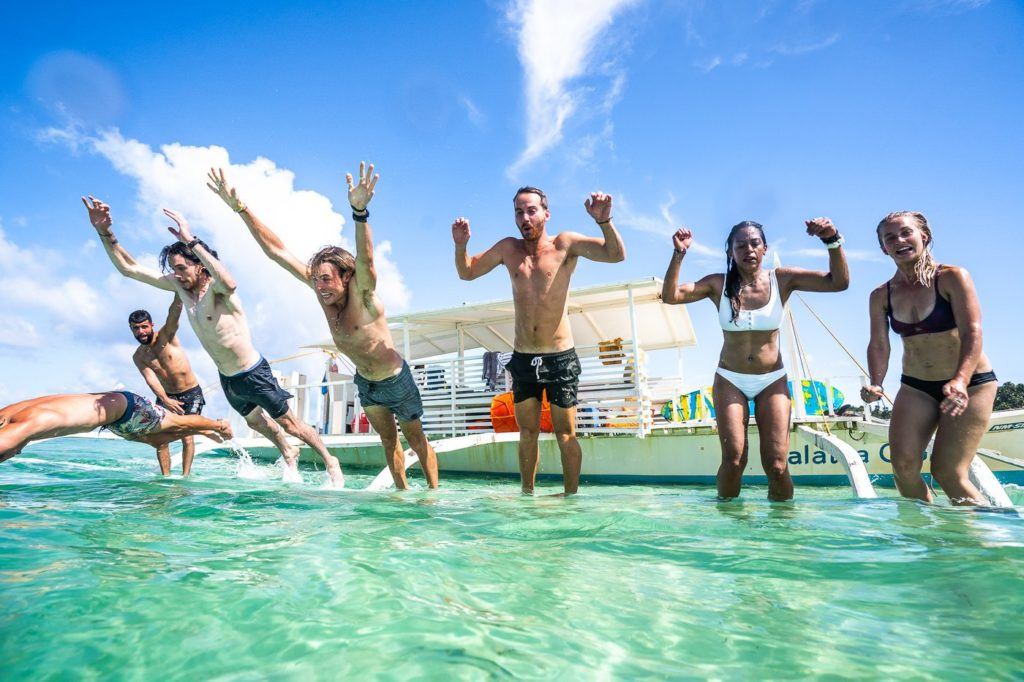
Packing Cubes
Declutter your suitcase and invest in some packing cubes. This packing set can keep help separate your electronics from your swimwear, activewear, and resort casual outfits. Personally, I love packing cubes as they’re the closest thing to having a wardrobe and chest of drawers on the road.
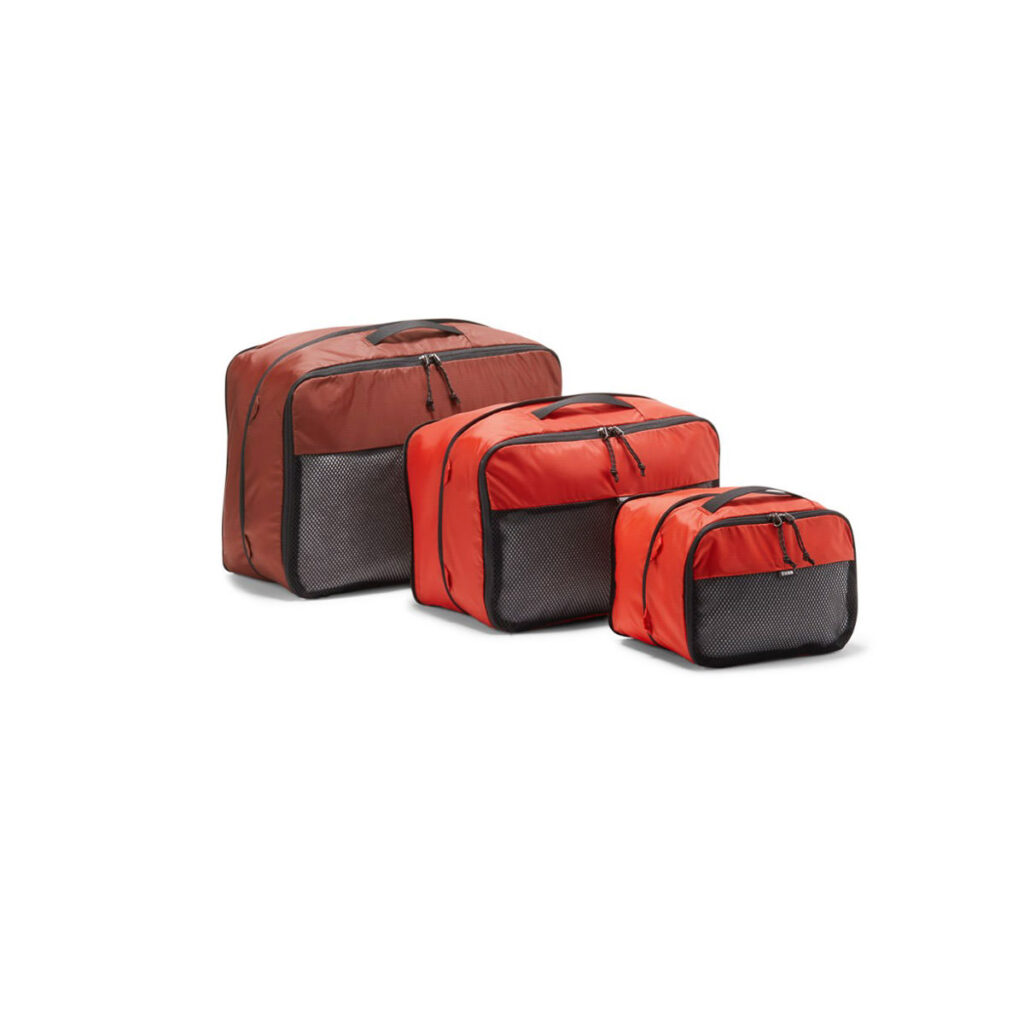
Packing Cube Set
- Durable Ripstop Nylon
- Water repellant finish (DWR)
- Expansion zippers
- Top and side handles
While the Philippines is generally known as a very safe and travel-friendly destination, I always recommend carrying the next two items on the list. First up, is the money belt . This is a sleek redesign of the travel fanny pack and hides seamlessly under a shirt. The silk fabric makes it cool and comfortable to wear, and an elastic waistband leaves plenty of room for chicken adobo and pancit.
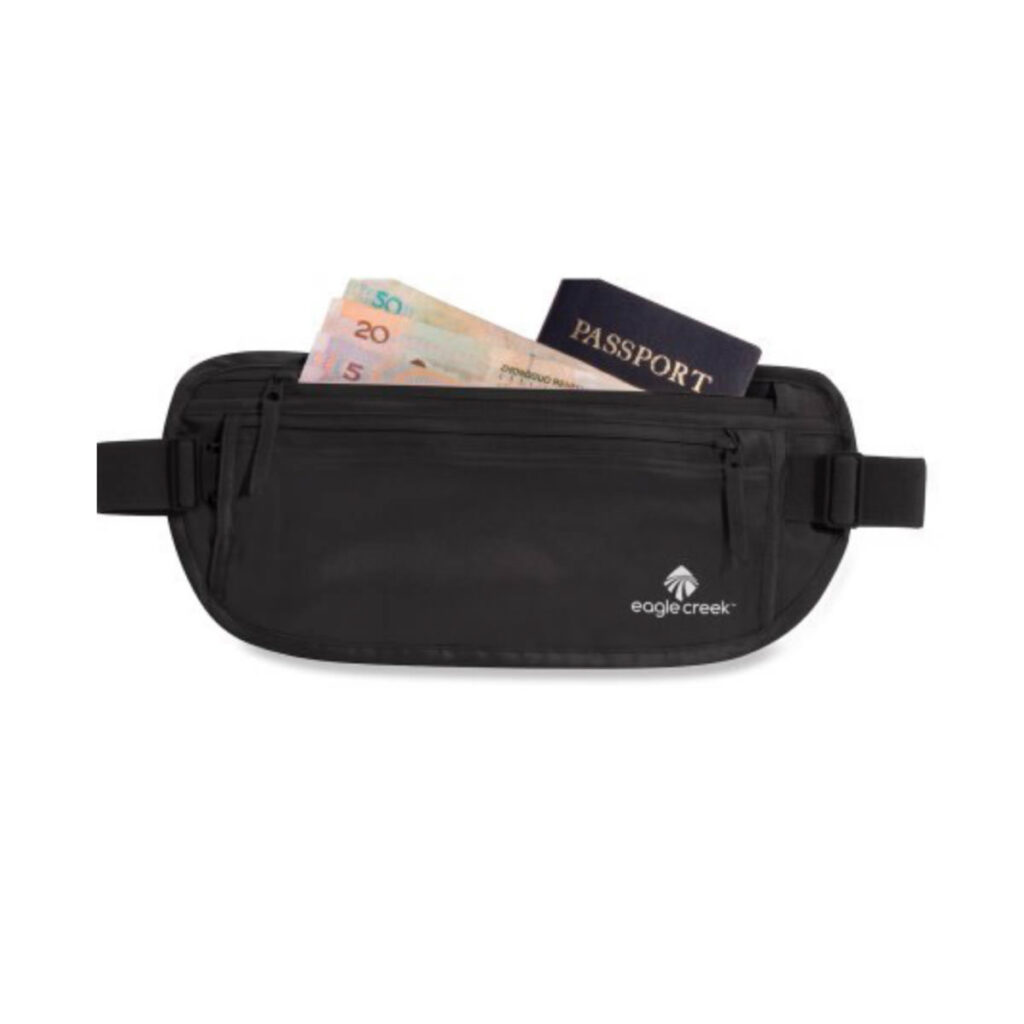
Silk Undercover Money Belt
- 2 zippered pockets
- Sweat-resistant satin
- Adjustable elastic waistband
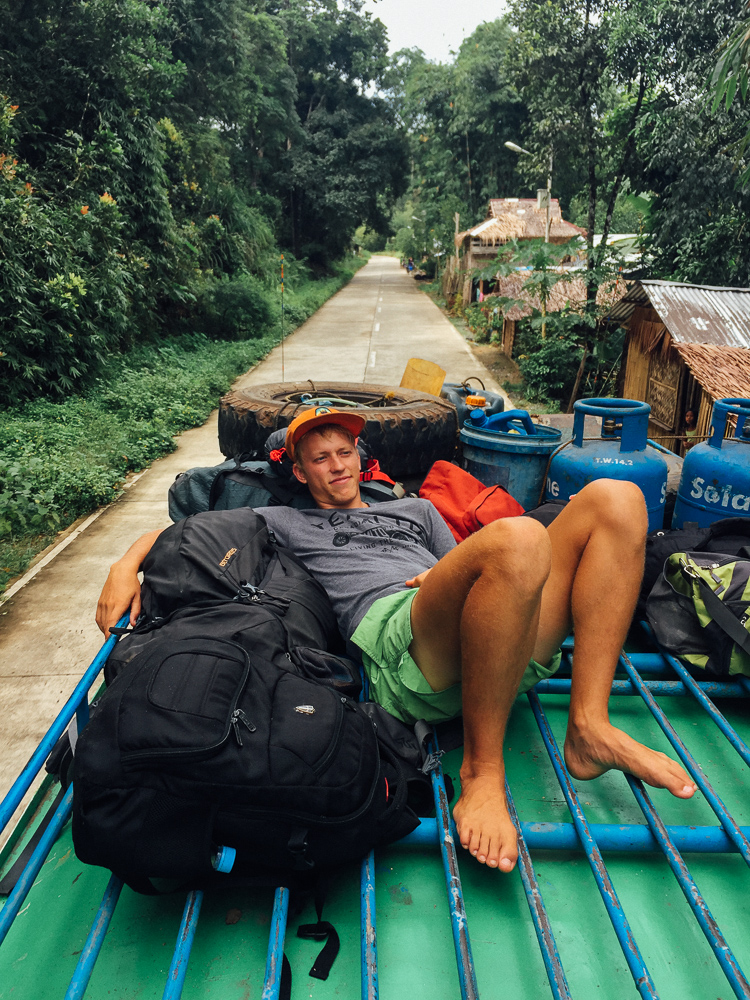
Sarongs / Beach Cover Ups
While not necessary for modesty (the Philippines is pretty open in most places), having a quick coverup or sarong handy is great for ladies. If you’re feeling a bit extra, my girlfriend loves this white beach wrap .
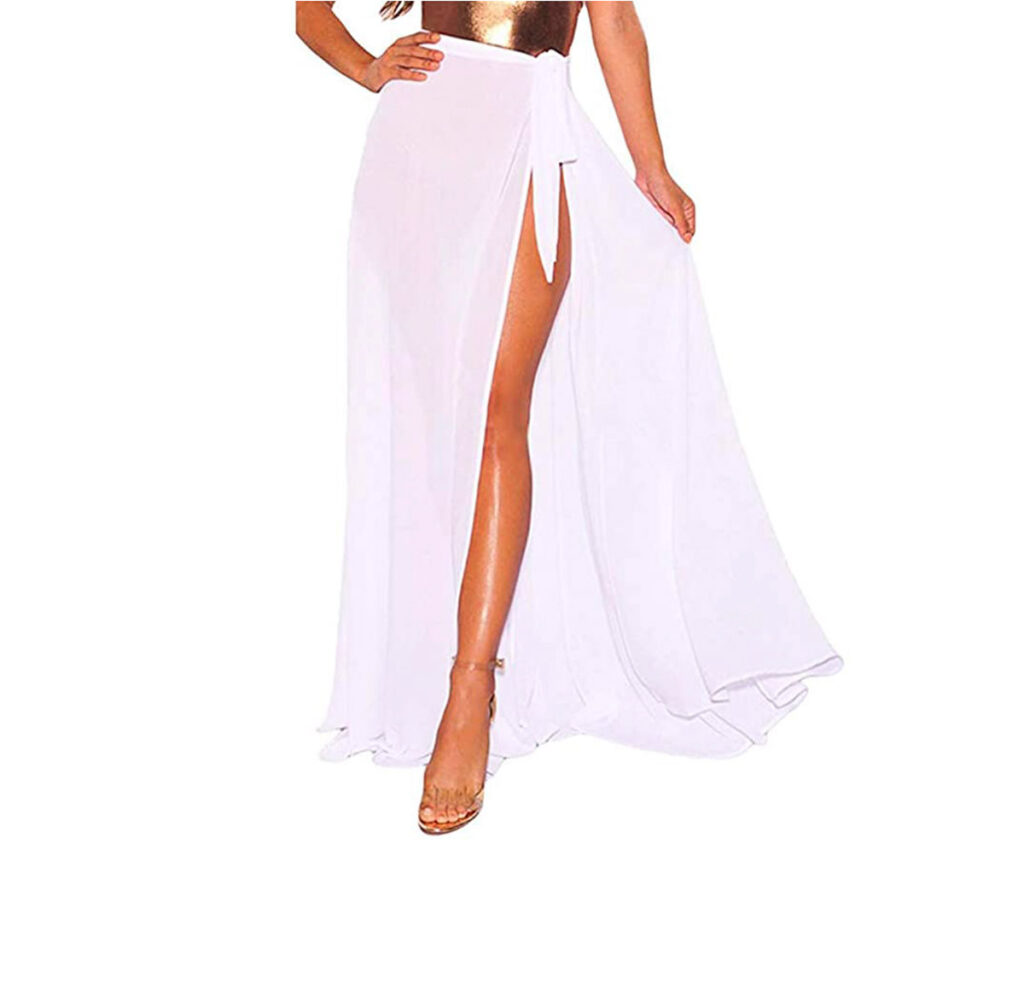
Beach Wrap Skirt
- Multiple sizes/colors
- Adjustable ties
Passport Wallet
I’ve been keeping my travel documents and bank cards in my passport wallet for the past 6 years, and have never had an issue – unlike some of my friends randomly losing passports and atm cards. With vaccine cards to add to the list of travel requirements, having a place to store all your documents is needed peace of mind. Therefore, I always recommend a passport wallet.
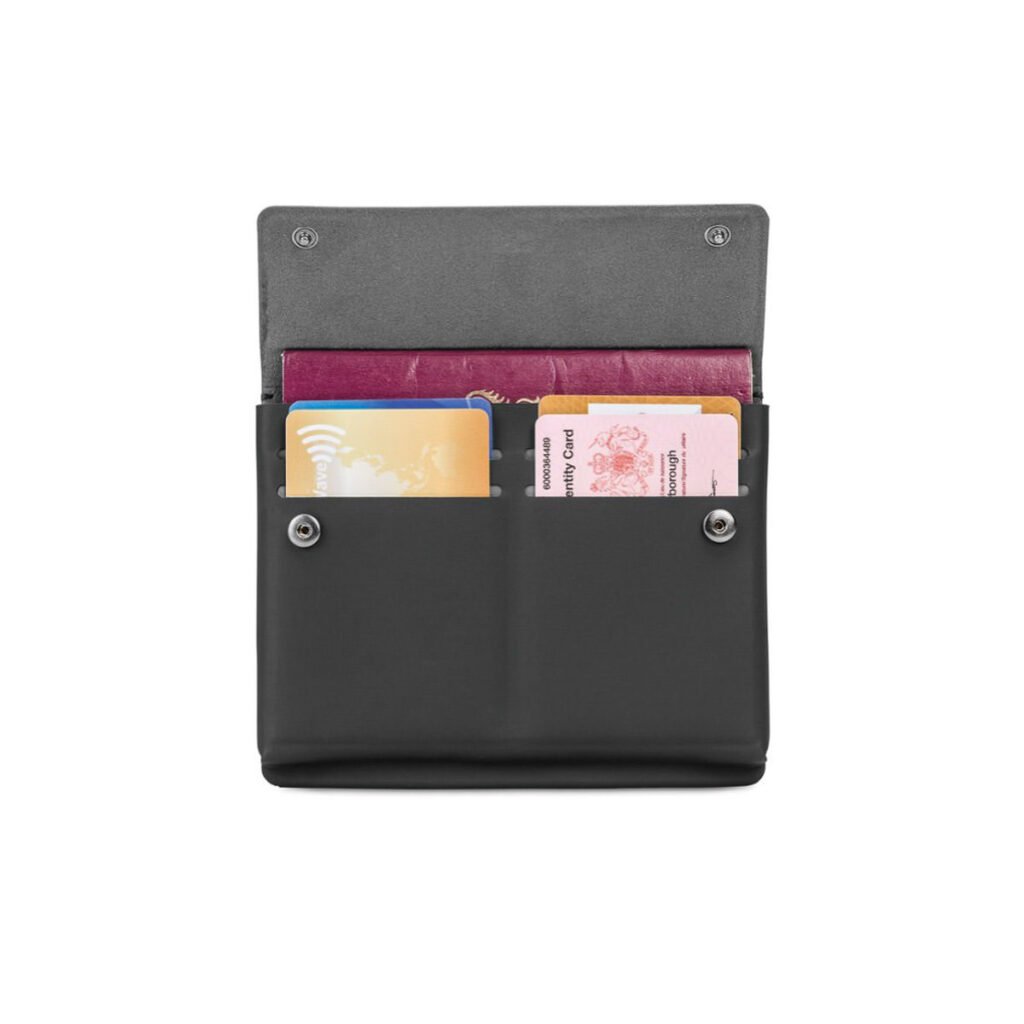
RFID-safe TEC Passport Wallet
- RFID-blocking
- 4 card slots
- Fits up to 2 passports
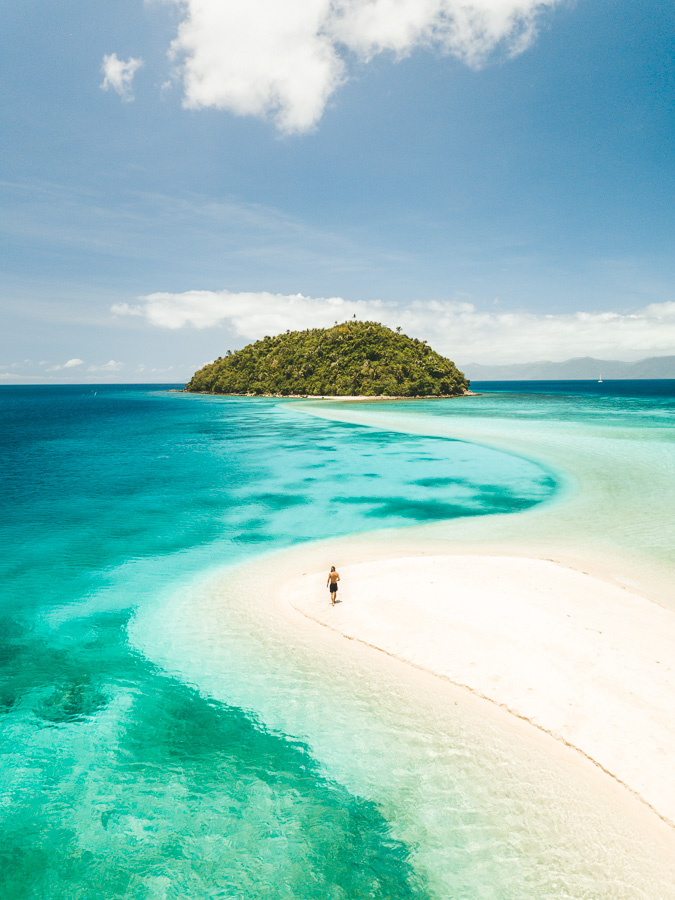
Philippines Packing Checklist
Aside from the highly-recommended items above, here is a complete Philippines Packing Checklist so you can start packing for your island vacation:
- Breathable t-shirts (2-3 pairs)
- Quick-dry shorts (1-2 pairs)
- 1 pair of full-length pants
- Long-sleeved outer layer
- Rain jacket
- Light puffy jacket (if hiking in the mountains)
- Workout clothes for hikes & adventures
- Bathing suits/ board-shorts (always have spare while used pairs dry)
- Beach cover-ups & sundresses for women
- Long-sleeved button-up shirts for men (Resort casual is enough to get you into most places)
- 1 dressier outfit if going out in Manila, Cebu, or upscale bars
- Hiking/walking shoes
- Water shoes (optional but recommended)
- 1 dressier shoe (some nightclubs require for entry)
Toiletries:
- Lip balm (SPF)
- First-aid kit
- Prescription medication
- Insect repellent
- Lotion (local products often contain whitening agents)
- Feminine hygiene products (tampons can be hard to come by in remote areas)
- Shampoo & conditioner (optional if hotel/local products suffice for you)
Electronics
- Tablet/Kindle
- Charging cables
- Memory cards
- Spare batteries
Miscellaneous
- Backpack or bag for daily adventures
- Reusable water bottle / water filter
- Packing cubes
- Passport wallet
- A good book
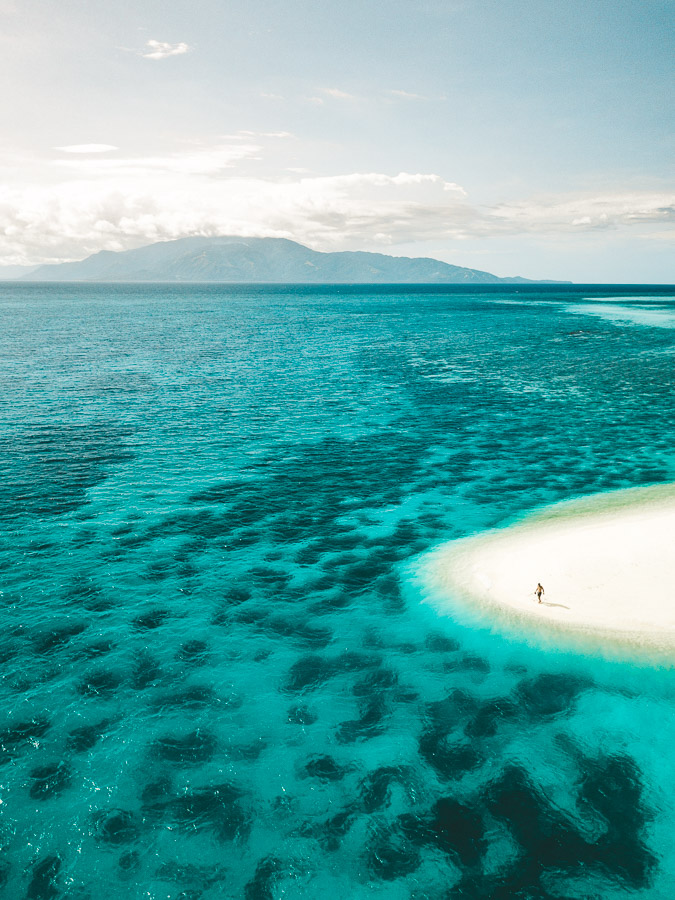
How the weather impacts your packing list for the Philippines
The weather in the Philippines can vary depending on the time of year and the region you plan to visit. It’s important to consider the weather when packing for your trip. Here’s an overview of the Philippines’ climate and how it can affect your packing:
- Dry Season (November to April): During this period, the weather is generally hot and dry. This is the peak tourist season. You can expect plenty of sunshine, making it ideal for beach activities and outdoor exploration. Lightweight, breathable clothing, swimwear, and sunscreen are essential.
- Rainy Season (May to October): The rainy season brings heavy rainfall and occasional typhoons. While travel is still possible during this time, it’s important to be prepared for wet weather. Pack a lightweight, waterproof jacket or poncho, quick-drying clothing, and waterproof footwear if you plan to be out and about. Rain showers can be frequent but often short-lived.
- Humidity: The Philippines can be very humid, especially during the rainy season. Lightweight, moisture-wicking clothing made of breathable materials like cotton or linen can help keep you comfortable.
- Footwear: Comfortable, waterproof sandals or flip-flops are suitable for the beach and casual outings. However, if you plan to explore more rugged terrain or do a lot of walking, consider bringing sturdy closed-toe shoes or hiking boots.
- Sun Protection: With the high temperatures and strong sun, sun protection is essential. Pack sunglasses, a wide-brimmed hat, sunscreen with a high SPF, and insect repellent.
- Clothing: Light, loose-fitting clothing is recommended due to the heat and humidity. Don’t forget swimwear, but also consider modest clothing if you plan to visit religious sites.
- Cultural Considerations: In some parts of the Philippines, particularly in conservative areas, it’s advisable to dress modestly. Pack clothing that covers your shoulders and knees for visits to temples or religious sites.
- Travel Documents: Ensure you have all necessary travel documents, including passports, visas (if required), and copies of important documents like itineraries, travel insurance, and identification.
- Medications and Health Supplies: Depending on your health needs, pack any necessary medications and personal health supplies. It’s also advisable to have travel insurance in case of emergencies.
- Travel Adapters: The Philippines typically uses Type A, B, or C electrical outlets, so bring the appropriate travel adapters and voltage converters if needed.
- Luggage: Opt for lightweight, easy-to-carry luggage, as you may need to navigate uneven terrain or crowded streets.
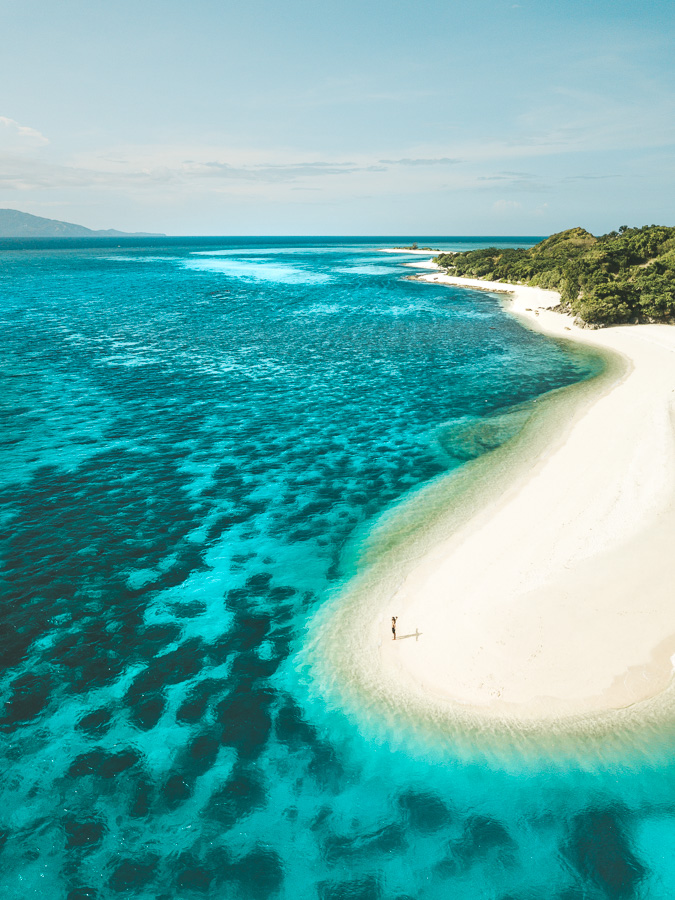
Final Thoughts
There it is, the most extensive Philippines Packing List. Have a blast, enjoy the raging waterfalls and be sure to send it off a few wild cliff jumps for me. P.S Don’t forget to wear a helmet on the moped.
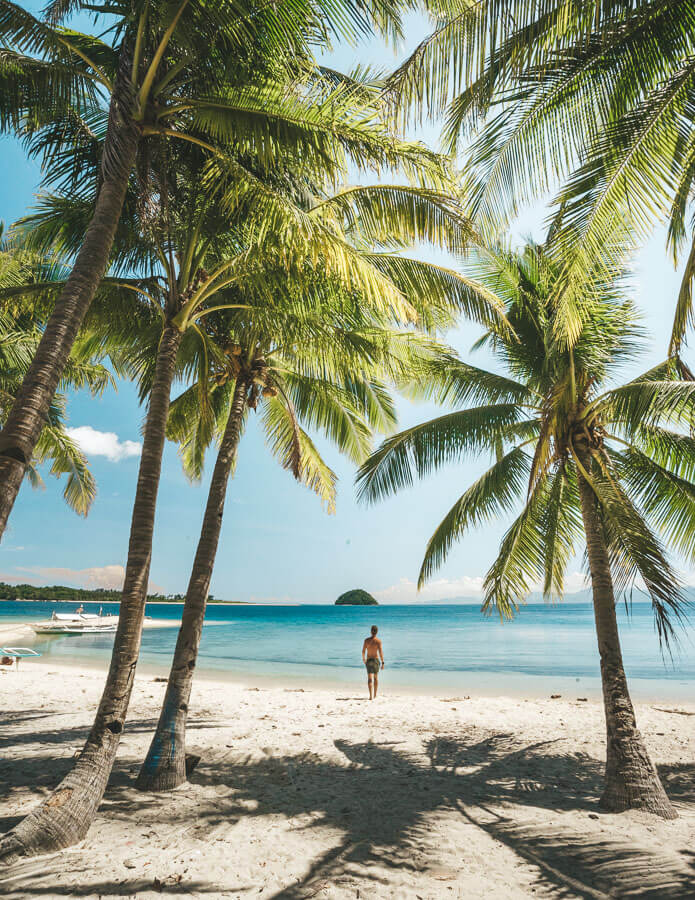
Wednesday 3rd of April 2024
This has got to be one of the best lists I've come across. You even included items like leave-in conditioner. Wow! You're awesome. Thank you.
Thursday 15th of February 2024
Thank you for the list this is great!
Thursday 26th of October 2023
I havent traveled to cebu since 2005...I appreciate your tips ( orginally from cebu)..traveling in x 5 days from chicago with 93 year old dad.. any tips for cab ride from mactan airport to cebu hotel by capitol? ...thanks
Monday 25th of September 2023
thanks ur list are so helpful
Friday 8th of September 2023
I am visiting Philippines in Jan 2024 and this will be my first international trip. Your blog is like a bible. So far I've read 10+ blogs mainly of Cebu, Coron and Bohol. These are so detailed, i love them. Love the pictures as well.

Project Untethered is reader-supported. When you buy using our links, we may earn a commission. Learn more .
The ONLY Philippines Packing List You’ll Ever Need
⚠️ The things on this list are what you’ll actually find in my backpack. Unlike many generic packing lists found online, I own and use all items that I recommend (unless stated otherwise).
Workin’ on your packing list for the Philippines?
If so, you’re in luck.
Before our trip, we spent hours online researching what to pack for the Philippines. But in the end, there was a bunch of stuff we wish we had brought (as well as things we definitely didn’t need).
So, after spending a month in the Philippines, I want to share with you exactly what we would have packed if we could do it all over again.
Whether you need to know what to pack for 2 weeks in the Philippines or 2 months, you’ll find it here (hint: there’s not much difference).
Don’t have time to read the entire post? Click here for a free downloadable packing checklist for the Philippines
Make sure to check out this ultimate Philippines bucket list when planning your trip…you won’t wanna miss this stuff!
Table of Contents
How to Pack for Philippines Weather
Men’s clothes packing list for philippines:, women’s clothes packing list for philippines:, suitcase or backpack for philippines, anti-theft day bag, packing cubes, waterproof phone case, reusable water bottle, microfiber towel , snorkel and mask, water shoes, money belt or fanny pack, passport wallet, pacsafe portable safe, luggage locks, gopro + extra batteries, selfie stick, bluetooth speaker, first aid kit, body spray , travel insurance, travel rewards card, charles schwab debit card, “fake” return ticket, credit card tasks, what not to bring to the philippines, free philippines packing checklist.
Before we get into the list of things to pack for a trip to the Philippines, a quick note on the weather.
Philippines has two seasons: wet season and dry season. The exact rainfall depends on the specific region you’ll be visiting, but most places follow this general curve:
Temperatures are roughly the same all year round (hot). But in rainy season, you might get some— you guessed it— strong rain storms. The good news is these storms usually pass in an hour before the sun comes back out.
We went during dry season and got hit by a typhoon (go figure). In the end, no matter what time you go, you’re packing list will stay the same.
What to Wear in the Philippines
Here are the clothes I recommend packing for a week-long trip. If your trip is longer, just pack for one week and wash as needed (which, if you use lightweight, quick-dry material and some Axe body spray, won’t be often 🙈).
Remember, when packing for the Philippines, it’s better to take LESS than you think you’ll need (especially shirts). That way you’ll have room to buy yourself some new clothes as souvenirs.
Also, shoot for neutral clothes that can serve multiple functions (ex. Black t-shirt that matches with everything and can be used for exercise or going out).
- 3 t-shirts (preferably anti-odor merino wool )
- 2 tank tops
- 1 light hoodie
- 1 rain jacket (alternative: just buy a poncho if it starts raining)
- 1 swimsuit
- 1 pair comfortable lightweight pants (like my favorite hiking pants or stretchy jeans)
- 3 pairs of socks (you’ll use mostly flip flops)
- 7 underwear (better safe than sorry)
- Tennis shoes (bonus points if you have hiking shoes that double as tennies )
- Flip flops (or the fugly-yet-popular Keens sandals )
This was the perfect amount of clothes for our time in Palawan and Manila.
(By the way, if you plan on visiting Palawan, make sure to check out my detailed Palawan itinerary —it’s chock-full of insider tips and underrated destinations).
- 1 beach dress
- 1 pair comfortable lightweight pants ( hiking pants or stretchy jeans)
A Note on Dress Code: The dress code in the Philippines is more laid back than other countries in Southeast Asia. You don’t really have to worry about covering up like you do in Thailand, for example. That said, it’s best to keep the bikinis on the beach and put on normal clothes when in towns, stores, restaurants, etc.
Before delving further into our packing list, let’s clear up one important question…Should you use a suitcase or backpack for the Philippines?
I’ll let this picture answer your question..

I can’t tell you how many travelers I saw stumbling down the beach to their hostel, struggling to carry their heavy suitcases over their heads.
In the Philippines, a good backpack is 100% necessary.
If your trip is just a couple weeks, you can get away with a carry-on size backpack…
But if you’re planning a longer trip to multiple countries, I recommend the Osprey Farpoint 70 —this is the new version of the bag I use.
Some may argue it’s too big…but nobody said you had to cram it full!
In my experience, it’s more comfortable to have wiggle room than to have to constantly puzzle piece everything together inside a tiny bag.
FREE 5-DAY COURSE
Learn the simple step-by-step process I used to easily land my first freelance clients and build a business I can run while traveling the world.
By signing up, you'll also be added to my legendary email list and receive exclusive travel lifesyle tips I don't share anywhere else.
Philippines Packing Essentials
IMPORTANT: If this is your first big trip and you’re about to splurge on a bunch of supplies, I HIGHLY recommend looking into opening a rewards credit card like this one first. If you use it for all your purchases, it’ll help you earn the signup bonus (which at the time of writing is worth $750 in free flights!).
Alright, let’s start with the essentials. Here are 17 things you definitely don’t want to forget:

Really, any ol’ day bag will do. But if you carry expensive equipment like a laptop or camera, an anti-theft bag will keep your valuables safer. Plus, they’re pretty cheap.
My wife bought this inexpensive model on Amazon and loves it. It looks small, but I was blown away how much you can fit inside.

I used this almost every day during our time on Palawan Island. They are super handy for boat rides, beach days, and island hopping tours.
If you forget the pack one, there are vendors selling them all over the place (although they’re probably cheaper to buy ahead of time).
I bought the 5-liter bag and it’s a bit cramped. 10L would’ve been better.

Packing cubes are a must for anyone traveling more than a few days. Instead of dumping and digging through all your clothes to find something. They keep you organized AF. And organization makes me happy.

These are great if you don’t have a fancy waterproof phone (or if you’re like me and simply prefer not to test the claimed waterproof-ness of said phone).
Tip: Get one that comes with a necklace—these are great for kayaking. Mine doesn’t have a strap and I was constantly terrified of knocking it overboard.

Drinking tap water in the Philippines is a big No-No. So, instead of buying tons of plastic water bottles and murdering the earth, get yourself a refillable water bottle.
You can either refill it with big jugs or filter the tap water yourself, which brings us to the next item…

This little guy is good to have no matter where you go. It’ll give you peace of mind knowing you can have clean drinking water available at all times.
That said, I didn’t use my LifeStraw in the Philippines. We just bought 6-liter jugs of water and refilled are smaller water bottles every day.

If you’re still traveling with a regular fluffy towel, stop it. Microfiber towels are SOOO much better. They fold smaller, dry faster, and don’t stink as much.

This one’s not mandatory, but if you have one, might as well bring it. Most tours don’t include snorkels are masks, so you end up paying a few bucks each day to rent them.
If you’re going to be at the beach and doing lots of tours, why not use that rent money towards buying a set of your own?
The only time I wouldn’t recommend this is if you’re traveling long-term and don’t want to take up precious backpack real estate.
Also, I’m pretty sure this style mask is for people who prefer to snorkel from the surface. I think it would be tricky trying to dive down deep with these.
( Disclosure : I just have a traditional mask in my bag, but I saw others with these full face masks and they look sweet!)

Just like a snorkel, you’re going to be renting water shoes a lot at the beach. If you have space in your backpack, I would just buy your own (it’ll probably end up costing the same as it would to rent for a few days).
If you leave the Philippines and decide you don’t want to carry them anymore, donate them to a fellow traveler and earn some good wanderlust joo joo. (Can’t believe I just wrote that).
A lot of beaches and snorkel spots are filled with coral and sharp objects that you won’t want to step on with bare feet. A guy on one of my tours tried to save money by not renting water shoes, and it ended in a bloody mess.

I don’t travel anywhere these days without my fanny pack.
If you only have a couple items to carry, it’s way more comfortable than lugging around your entire day pack.
And for you fashionistas who think fanny packs are ugly, at least get yourself a standard money belt to hold your valuables when walking around. Cell phones and wallets have a way of disappearing when you keep them in your regular pockets.

Your passport is your life. Protect it. Chucking it into your bag loosey goosey is asking for trouble.
Make sure to get one with RFID technology to protect your personal data that’s encoded in your passport.

I carry headlamp with me everywhere I go. You never know when you’ll have to walk down dark streets, pack your bags without turning on the lights, or survive a city-wide typhoon power outage.
Yes, you could use your cell phone flashlight. But a lantern attached to your face is much more convenient.

This is for digital nomads or those traveling with expensive equipment.
99% of the time you won’t need this. But the 1% that you DO need it, you’re going to wish you had it.
It’s basically a portable safe. If you stay at a hostel or guesthouse that doesn’t have lockers, you can secure this slash-proof bag to a fixed object to lock up your laptop, camera, money, etc.
I’ve heard multiple stories of travelers leaving their valuables out in a private room, locking the door, and coming home to realize their stuff was jacked.
The problem is, you never know who else has a key to your room. That’s why whenever I leave my MacBook in my room to go out exploring, I lock it up in my Pacsafe.
An alternative option is this bag protector that locks up your entire backpack.
(Other options: Amazon )
The sun from the Philippines is strong. Unless you want to be a raisin-face when you’re older, pack a hat.

You can never have too many of these (especially if you lose them as often as I do).
I recommend four. One for your locker, two for your bags, and an extra in case you need to lend one to a friend.
I like to have two ”normal” style locks, and two “cord” style locks. That way you should have something that works in any situation.
This is Traveling 101. Don’t leave home without snacks. You never know when you’ll get stranded somewhere. And the last thing you want is to be hangry during a stressful situation (and if you’re ever in Manila, I can almost guarantee a stressful situation).
What to Pack for Philippines: Electronics
Now that we’ve got the basics out of the way, here are the electronics you’ll want to add to your Philippines packing list.

A quality portable battery pack (AKA power bank) will definitely come in handy in the Philippines—especially if you plan to take all-day (or even overnight) island hopping tours.
The last thing you want is to go on an amazing tour, only to run out of battery before arriving at the most beautiful spot.
While it is possible to pick these up in little shops along the way, I wouldn’t recommend it. When it comes to chargers, I’d stick with name brands to avoid melting your phone.
Side note: If you make it to Sabang and find two powerbanks sitting on the charging station in Cafe Sabang Hostel, they are my gift to you…Which brings me to an unrelated lesson I learned the hard way: NEVER try to charge things at the last second while you’re waiting for your transport to a different city. (You will forget it 😓)
(This one doesn’t have the highest capacity, but it’s handy because it doubles as your regular wall charger)

Here’s travel staple you should carry with you anywhere you go. In the Philippines, 90% of our hostels has adapters built into the walls. But, I’d still pick one up just in case. Better safe than sorry.
I like this adapter because—unlike traditional travel adaptors—this one lets you charge up to 5 devices at once (handy for rooms with only one plug).

A GoPro is something that needs to be on your Philippines packing list. You don’t have to have the latest fancy model, but these bad boys take epic shots.
You’re going to have loads of spectacular photo opportunities in and under the water. It’d be a shame to travel across the world and not be able to capture all the stunning snorkel, diving, kayaking, and marine life spots.
I’d also grab an extra set of batteries.

I always pack two selfie sticks: one for my phone, and one for my GoPro. If you’re a savvy space-saver, you could find one pole that fits ( this one looks promising, but needs an adapter).
I use this Yoozon selfie stick for my phone. It has a built-in tripod, a Bluetooth remote, and packs down pretty small.
My Gopro stick is five years old and no longer sold online. If I had to buy a new one, I’d make sure it’s sturdy, waterproof, and doesn’t have any metals parts that would rust.
Update: Since writing this post, I have switched my selfie stick setup. I bought this 360 camera that comes with a free quality selfie stick (this camera is sweet, btw). I now use the selfie stick that came with it and just screw on this attachment for my phone. That way, I don’t have to lug around a separate selfie stick for every camera.

There’s nothing better than lazing around on the beach in a hammock reading a good ol’ Kindle book.
If you’re going to be in the Philippines for several weeks, I recommend scheduling in a couple chill days to recharge your batteries. If you cram your itinerary too full, you’ll get worn out and things won’t be as fun.

Music can definitely make or break the mood when traveling. With a rugged, waterproof Bluetooth speaker like the JBL Flip 4, you can take your tunes with you wherever you go. Whether you’re hiking, beach bumming, or playing cards with friends at your hostel during a typhoon… you’ll be happy you packed a speaker.

I splurged on these for my latest trip and am kicking myself for not buying them sooner. These nifty lil’ lenses clip onto your phone’s camera so you can take better pictures (no need to lug around a big fancy-pants camera).
This set comes with a wide-angle lens and a close-up lens.
If you’re trying to capture a beautiful view, the wide lens allows you fit more scenery into the frame. The close-up lens takes detailed close-up pictures of small objects like bugs, flowers, detailed art, etc.
Update: These are only really necessary now if your phone doesn’t have wide-angle mode built in (unless you just want the close-up lens).

I used to only use cheap headphones while traveling. After all, they might get lost, stolen, or damaged… so I didn’t dare pack anything expensive…
Unfortunately, that plan hasn’t worked well for me. When it comes to headphones, you get what you pay for. Don’t be surprised if the sound cuts out on one ear halfway through your trip.
Nowadays, I carry a couple nicer pairs and just make sure to be extra careful (so far so good 🤞).
Everyone has their own unique taste in headphones, but these Jabras are the ones I use.
If you’re a digital nomad or plan to work on the road, look for a noise-cancelling pair. In the Philippines, I used my WX-1000XM3’s (pictured above) to work distraction-free in many loud hostel environments (the downside to these over-the-ear headphones is they take up more space in your backpack).
Update: They have since released newer models that are even better – but my old ones still work fine 🙂
Speaking of working on the road…If you’re looking for ways to fund your adventures, check out this ginormous list of 109+ best travel jobs .

I always carry an HDMI cord with me in case I have a Netflix-craving emergency. Just connect your computer to the TV at your accommodation and squeeze your fav show in before bed (don’t binge too much though!).

The Philippines is a drone-owners dream.
Unlike Thailand and many other heavily regulated countries, in the Philippines you can fly to your heart’s content (at least you could at the time of writing this).
We met a couple on one of our island-hopping tours with a DJI Mini, and they convinced me to buy one of my own.
Grab the most GARGANTUAN list of travel jobs known to mankind (FREE)
By signing up, you will be added to my legendary travel lifestyle email newsletter.
- 65-page eBook jam-packed with every imaginable way to earn money on the road (107+ ideas)
- Learn ways you've never thought of before (it only takes ONE to kickstart your travel lifestyle)
- Everything you need to know in one handy document (income potential, how to start, resources)
Philippines Packing List: Toiletries
And that brings us to toiletries…If you’re wondering what to pack for Philippines, here’s what I recommend:

This is definitely a Philippines packing list essential. Chances are, you’ll be staying in small towns with limited medical care. If you get scraped up, you’ll want to have some basic first aid equipment with you just in case.
You can find complete travel first aid kits on Amazon, or you can just raid your medicine cabinet and make your own like I did.

There’s no need to pack a mini-pharmacy, but there are a couple things you’ll want to have on hand.
I recommend packing motion sickness pills, ibuprofen, and any prescriptions you need.
Unlike many other countries in Asia where you can buy just about anything over-the-counter, in the Philippines, you’ll need a prescription from a doctor.

Body spray is a lifesaver for light-packers who can’t afford to wash their clothes every other day. Grab your shirt, fire directly on the pits, and you’re good to go! 👌

Ain’t nobody want dengue or malaria. Keep yourself protected by bringing along strong skeeter spray. They sell normal repellent in the Philippines, but I feel safer with the 100% DEET you can find online.
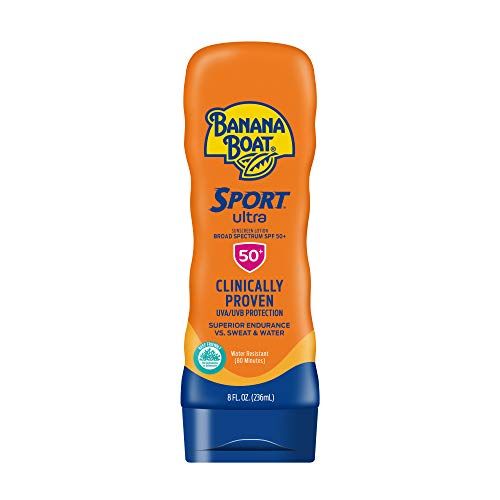
Do your wallet a favor and pick up a nice big bottle of sunscreen before you leave home (unless you’re traveling carry-on only, that is). The sun in the Philippines is FIERCE, and the sunscreen is EXPENSIVE.

These things are lifesavers. I can’t tell you how many hours of sleep and magnitudes of grouchiness I’ve saved by always having ear plugs with me. They are essential for sleeping better while traveling .
Whether you’re dealing with obnoxious snorers, buttcrack-of-dawn bag-packers, or I-don’t-know-how-to-whisper drunken loud-mouths…you’ll be glad you packed these.
These are obvious, but this Philippines packing list wouldn’t be complete without mentioning your bathroom basics: Toothbrush, toothpaste, floss, deodorant, soap, glasses/contacts, retainers, etc.
Other Important Things Not to Forget
So you got your bags packed, but you’re not done yet!
Here are a few other important things to remember before take off.
After my month-long food poisoning in Chile and motorcycle accident in Thailand, I cannot stress this enough. It doesn’t matter how careful you are. Sometimes things happen that are outside of your control. So far, purchasing travel insurance has saved me nearly $20,000.
I’ve used both World Nomads and SafetyWing travel insurance over the years, and they’ve both served me well. SafetyWing is much cheaper at ~$42/month, but World Nomads offers more comprehensive coverage. (Get a quick quote to compare World Nomad prices to SafetyWing prices by filling in your info below)
For more info on travel insurance, check out my Safetywing review and comparison of top travel insurance companies .
While you’ll probably pay for most things in cash, it’s also smart to carry a travel rewards credit card that doesn’t charge foreign transaction fees.
If you’re from the US, you have several different options, but one of my favorites is the Chase Sapphire Preferred Card (and after the signup bonus, you might even be able to get your flight for free).
As I mentioned, cash is king in the Philippines. This leads to some problems…
If you use currency exchanges, you’ll get a bad rate. But if you withdraw from ATMs using your normal ATM card, you’ll get smacked with fees.
Fortunately, the Charles Schwab debit card is here to save the day. If you use their free checking account, they’ll reimburse you for all ATM fees worldwide. These reimbursements have saved me hundreds of dollars over the years.
If you’re entering Philippines with a one-way ticket, you’ll need to provide proof of onward travel. There are a couple ways to do this.
You can buy a refundable flight, then cancel it during the refund period (usually 24 hours)…
…OR you can pay for a “ temporary ticket” using an onward flight service like Best Onward Ticket . It’ll cost around $12, but it’s a lot less hassle than refunding the ticket yourself (plus, with such long travel times, you might miss the refund period).
Just make sure you use a reputable company. There are a couple “copycat companies” that have a bunch of bad reviews. I used Best Onward Tickets and it worked flawlessly.
Sometimes we get so wrapped up thinking about clothes and gadgets that we forget the most essential item of all— your passport. Most nationalities can stay for 30 days without a visa, but check your country here just to be sure.
Also, if you plan to continue traveling after the Philippines, make sure you have plenty of blank pages left in your passport. I only had a couple left and needed to order a new one.
Before leaving, make sure to notify your banks of your travel plans. Also, take pictures and make copies of the fronts and backs of your credit cards and IDs. You can then save them to the cloud or email them to yourself just in case.
You have several options here. The most popular are to either…
(1) Buy an international data SIM card before you leave, or
(2) Buy a local SIM card when you arrive, or.
(3) Buy a travel eSIM (basically a digital version of a SIM that doesn’t require a physical card)
Local SIM cards are cheapest. But nowadays I always use eSIMs because they are way more convenient (and I’ve had some bad experiences buying local SIMs).
For heavy data users, this travel eSIM offers unlimited data plans in many countries. Use code PROJECTUNTETHERED for a discount.
For lighter data users, go with this one (use code MITCH9827 for some free credits).
So we’ve gone over everything you SHOULD pack. Here’s what you SHOULDN’T:
- Drugs. Not worth the risk, my friends.
- Suitcase. I can’t emphasize this enough. Suitcases and Philippines don’t mix. Get yourself a backpack.
- Heels. Tennies and flip flops are all you need, ladies!
- Valuables. While I never felt unsafe in Palawan or Manila, it’s best to leave the flashy stuff at home.
- Too many clothes. Pack less than you’re comfortable with. Buy more as needed.
- Tons of makeup. If your just gonna sweat it off in 20 minutes, why bother? Don’t worry about how you’ll look in photos…that’s what editing is for 😉
Check out this list of crucial Philippines travel tips to discover 10 other noobie mistakes I learned the hard way (please don’t follow in my footsteps! ).
Alrighty! All that’s left is to print out this packing list for Philippines, check the items off as you pack, and enjoy your trip!

I hope this gives you a better idea on what to bring to the Philippines. If you found it helpful, please share using the buttons below! 🤓
Like It? Pin It?

You Might Also Be Interested In: – 11 Amazingly Cheap Places To Visit in Philippines for Couples

Mitch is your typical nomadic backpacker. Or at least, he was . But after stopping in Colombia to take “one week” of salsa lessons, his life took a sharp left turn. He met a cute Colombian girl in dance class, fell in love, and got married. Over half a decade has passed since he left his career to travel the world as a digital nomad, and he’s never looked back.
Nowadays, he’s the blogger behind Project Untethered — where he runs an awesome email newsletter and Youtube channel teaching adventure-craved wanderlusters how to escape the rat race, earn money from anywhere, and build an “untethered life”.
His advice has been featured in Forbes, USA Today, Yahoo, MSN, Reader’s Digest, Condé Nast Traveler, and more.
Mitch's Travel Recommendations: Travel Planning Resources - Everything you need to plan your trip on one convenient page. Going Cheap Flights Newsletter - Get flight deals from your airport up to 90% off sent straight to your inbox. Safetywing Insurance - This cheap travel insurance has saved me over $15,000 in medical bills. Booking.com - Book accommodation without adding your credit card (in case you need to cancel). Trusted House Sitters - Take care of pets in exchange for free (sometimes luxury) accommodation. Flexjobs - Find remote jobs without having to sift through crappy ones. Skillshare - Free trial to take unlimited classes that teach digital nomad skills. Wise - Send and receive money abroad cheaply (great for freelancers).
By signing up, you'll also be added to my legendary email list and receive exclusive travel lifesyle tips I don't share anywhere else.
Discover how to travel FOREVER
Grab this "Cheat Sheet" to discover the tricks full-time travelers use to slash their costs to practically nothing.
You're Seconds Away...
What to expect:
- Bonus guides, ebooks, and other freebies
By signing up, you'll be added to my legendary email list.
- Realistic advice on setting up life on the road (no hype)
- Cool travel hacks that'll save you money
- Direct access to me for questions
From learning exactly how to travel the world full-time, earn money from anywhere, and live a completely "untethered" life.
Where should I send your itinerary PDF?
By signing up, you'll also be added to my legendary email list and receive handy travel lifestyle tips and inspiration I don't share anywhere else.
Where should I send your packing checklist?
By signing up, you'll also be added to my legendary travel lifestyle email list.

The Ultimate Philippines Packing List: 33 Essential Items for Philippines Travel
Wondering what to pack for your trip to the Philippines? Read on to discover the ultimate items you need with this brilliant Philippines packing list.
If you’re a fan of sparkling blue water, white sand beaches, fresh coconut juice, and lush green spaces, the Philippines is the perfect place to visit. And if you’ve decided to make the trek to visit this beautiful island nation, you’re probably a pretty adventurous traveler.
But figuring out what to pack for the Philippines – with its diverse terrains and activities – can be somewhat challenging.
After 7 trips to this beautiful island nation, I’ve (mostly) gotten my packing down to a science, so I decided to sit down and write this Philippines packing list to help you with your trip planning.
If you’re planning a trip to the Philippines and need some help figuring out how not to massively overpack what to bring with you, read on for my recommendations for clothes, travel gear, and other helpful items.
The Ultimate Philippines Packing List: What to Pack for the Philippines
Philippines packing list: the absolute essentials.
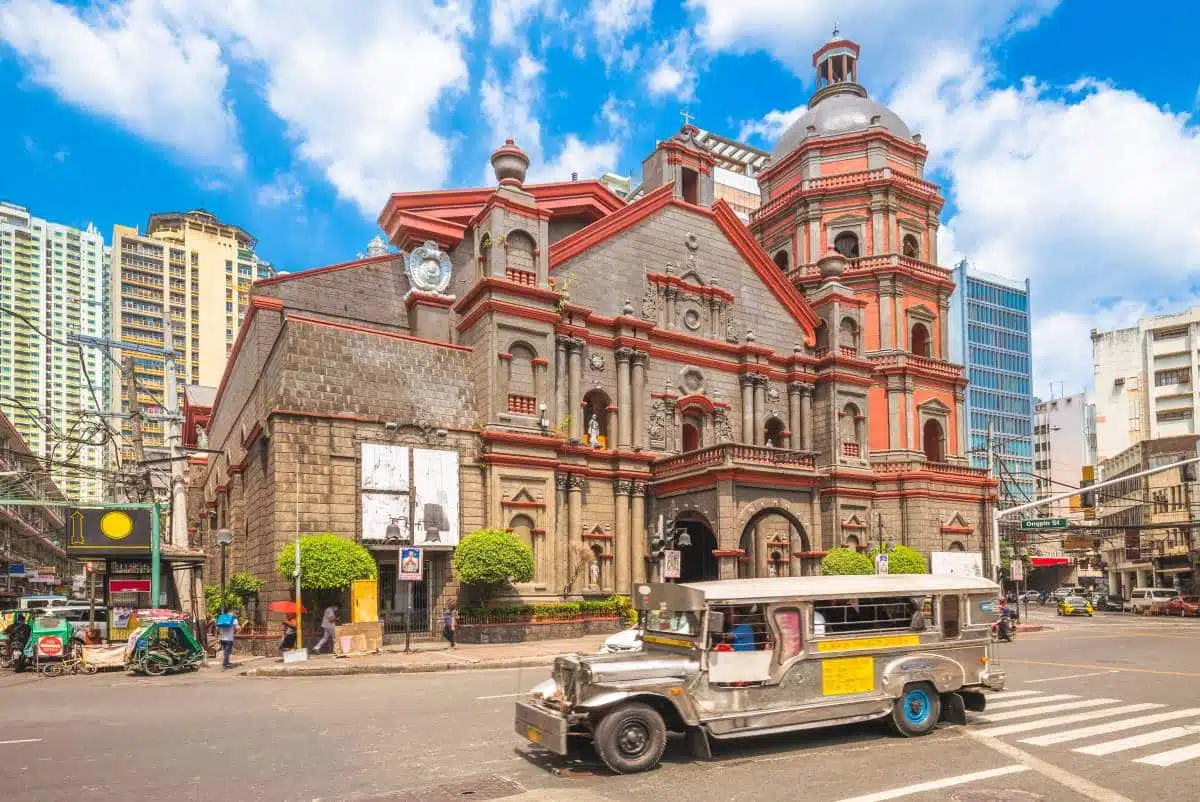
I’ll be going through many of these things in more detail later in the post, but first I wanted to give you a tl;dr version of the absolute essentials for your trip.
These are the items you should absolutely not travel without in the Philippines. Forgetting any one of these could be costly and/or potentially dangerous, so if you read anything in this post, read this!
- Travel insurance – It is absolutely essential to buy travel insurance before traveling to the Philippines (or anywhere abroad). While the country is safe to travel in, like any foreign country, medical issues, flight delays, and theft are still very real threats. I use and recommend WorldNomads for every international trip; I’ve had to make claims with them several times in the past and they are great to work with.
- Cash – While credit cards are becoming more widely accepted in large cities, the more rural areas and small towns are still predominantly cash-based. Be sure to bring some cash with you to exchange, as well as a debit card for making ATM withdrawals. Small bills are essential as many local stores and taxis won’t have change for 1,000 or 500 PHP bills. Bring a money belt to protect your cash as well.
- Reef-safe sunscreen – Most of the activities in the Philippines are outdoors, and you’ll want to protect yourself from the sun. However, normal sunscreens aren’t safe for the beautiful coral reefs or marine life in the Philippines. Use reef-safe sunscreen like Su n Bum to keep the environment clean and avoid looking like a lobster throughout your entire trip.
- Bug spray – Like many tropical countries, mosquito-borne illnesses like Dengue Fever are a possibility in the Philippines. Pack bug repellent that’s comfortable and that you don’t mind wearing all day (like this lotion blend ), because you’ll need to have a healthy layer of this stuff on at all times.
- Sweat-wicking clothing – The Philippines is a tropical country that’s warm and humid basically year-round. Therefore, you’ll want clothing that will keep you cool and dry. I’ll cover this in more detail in the next section.
- Durable shoes – You’ll be doing a TON of walking in the Philippines, and often the terrain is gravel/dirt roads or sand. Bring a couple of pairs of durable, lightweight shoes (including water shoes) to keep your feet comfortable at all times – I’ll share my recommendations a bit later in this post.
Philippines Packing List: Warm Weather Clothing & Durable Shoes
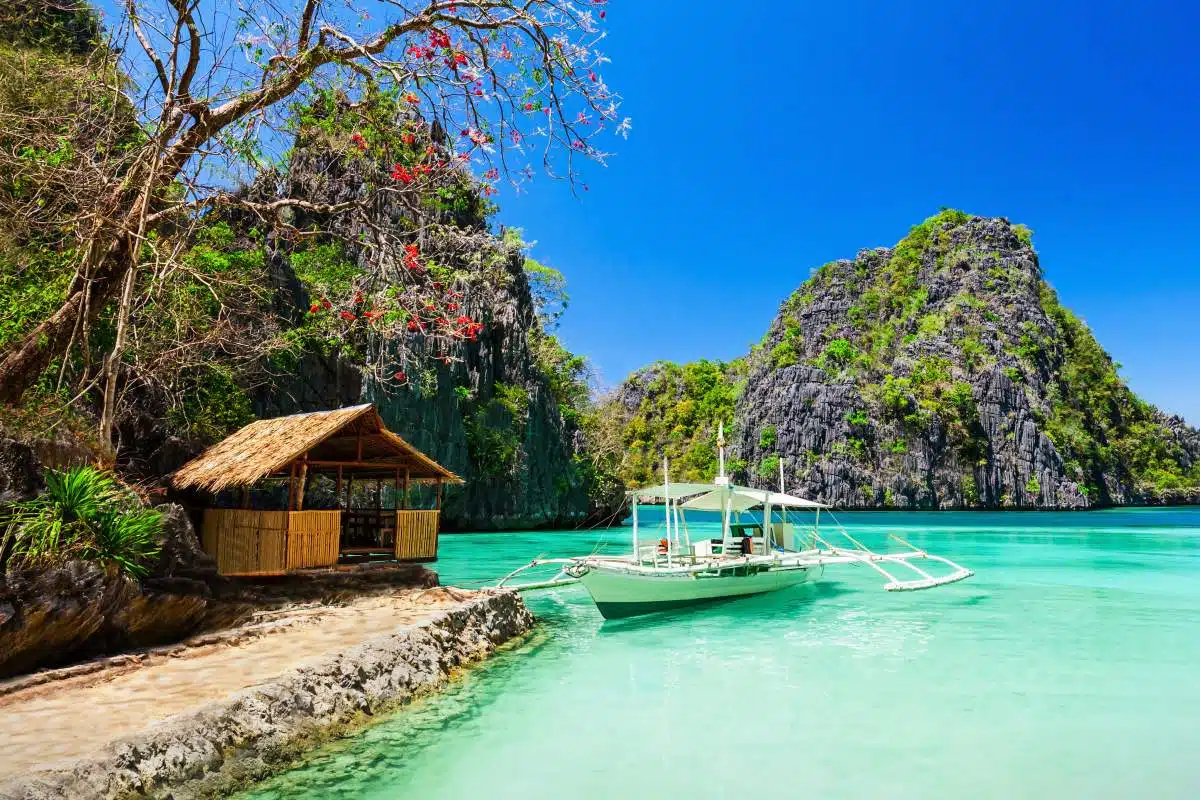
Like I mentioned above, the Philippines typically has warm and humid temperatures year-round. The good news? You can rely mostly on super lightweight clothing (so you don’t have to carry around big, bulky bags of clothes).
The bad news? Clothes tend to retain moisture and, if you don’t bring the right fabrics, you might end up with a musty-smelling bag ( gross ) for most of your trip. Figuring out what to pack for the Philippines is super important, so you don’t end up with a heavy bag of backpacker stink!
To combat this problem, I always opt for sweat-wicking fabrics like merino wool, lightweight cotton, or synthetics.
- Sweat-wicking tank tops and t-shirts – Bring a couple of basic, sweat-wicking tops for your trip.
- Leggings – I basically live in leggings while I’m in the Philippines, since they’re so lightweight and breathable, thin enough to stay cool but thick enough to prevent mosquito bites. I have a pair of the PrAna Transform Crops and a pair of the Lululemon Wunder Unders and those together usually do the trick for me.
- Shorts – Did I mention the Philippines is HOT?! For the days you’ll be on boats or lounging on the beach, it’s best to bring shorts with you. For traveling in hot climates, I have a pair of sweat-wicking PrAna shorts (that were sadly discontinued) and my Lululemon On the Fly running shorts .
- Hiking pants – Hiking pants are a great alternative or addition to leggings, as they’re breathable and sweat-wicking. The best part is that you can use them while hiking, or simply lounging around on a breezy beach. Men’s option here .
- Pants – Optional, but if you’re planning to go out to a nice restaurant or resort, it’s a good idea to have at least one pair of nicer pants. I use the Madewell Roadtripper jeans in black for basically all of my travel – they’re stretchy, cozy, and versatile and I can dress them up or down! They come in all different lengths (petite, regular, tall, and extra tall) to fit basically ANY body type, which I LOVE as a short lady. They also have them in blue if you prefer more color in your wardrobe.
- Sundress – Also optional, but I find that dresses are nice and breezy for those hot and humid days. They also dry quickly.
- Rain shell – Being in the tropics, it can sometimes rain a lot in the Philippines. It’s a good idea to bring a light rain shell to stay dry on rainy days. I use the North Face Tamburello which is light, wind and waterproof, while Raf uses the Venture 2 rain jacket .
- Lightweight jacket – It’s not cold in the Philippines, but it can be chilly in airplanes, shopping malls, and restaurants. Pack a lightweight jacket (I love this one from Marmot , and Raf has a hoodie that he basically lives in) that you can bring with you to these places.
- Swimsuit – Duh. It’s an island nation. Bring your swimsuit and prepare to get wet! I’d recommend bringing at least one sturdy, wave-proof bikini or one piece for more adventurous days ( so, ya know, you don’t accidentally flash someone or lose your top or something ).
- Cover up – You’ll likely go island hopping or take boat rides to swimming places during your trip. It’s smart to pack a cover up for when you’re not swimming but you’re not ready to change out of your swimsuit.
- Brimmed hat & sunglasses – It’s sunny in the Philippines and most beaches don’t have a lot of tree cover. Bring a brimmed hat and a durable pair of sunglasses you can wear on sunny days.
Additionally, you’ll want some durable shoes to cover you on basically any kind of terrain (except ice and snow; you won’t find those in this tropical nation!). You’ll be doing a lot of water activities, so having shoes that can protect your feet in the water is highly recommended.
- Durable outdoor sandals – Your feet will mostly live in sandals in the Philippines, between beaches, boats, and swimming. Although it was totally unnecessary, I brought two pairs of durable sandals on my last trip: a pair of Birkenstocks and a pair of Chacos . I didn’t regret bringing either one!
- Lightweight hiking shoes – For hiking in the Philippines, I don’t recommend the usual, clunky pair of hiking boots. In fact, I didn’t bring any on my last trip there. Instead, bring a pair of lightweight, breathable sneakers for your hiking. This way, your feet can breathe and you won’t be lugging around giant shoes the whole time.
- Water shoes – It’s very, very important to bring water shoes if you’re going to be doing any kind of water activities. The Philippines has areas that are full of corals/shells/rocks, and you can easily cut your feet if you don’t wear shoes in the water. I recommend a water shoe like this one that covers the entire foot.
- Indoor/shower shoes – The Philippines has a culture of taking your shoes off before you enter a home, and it makes sense: roads and sidewalks can be dusty and full of gross things that your shoes will track in. A lightweight pair of rubber flip flops is helpful for walking indoors or using hostel/guesthouse showers.
Philippines Packing List: Toiletries & Personal Items
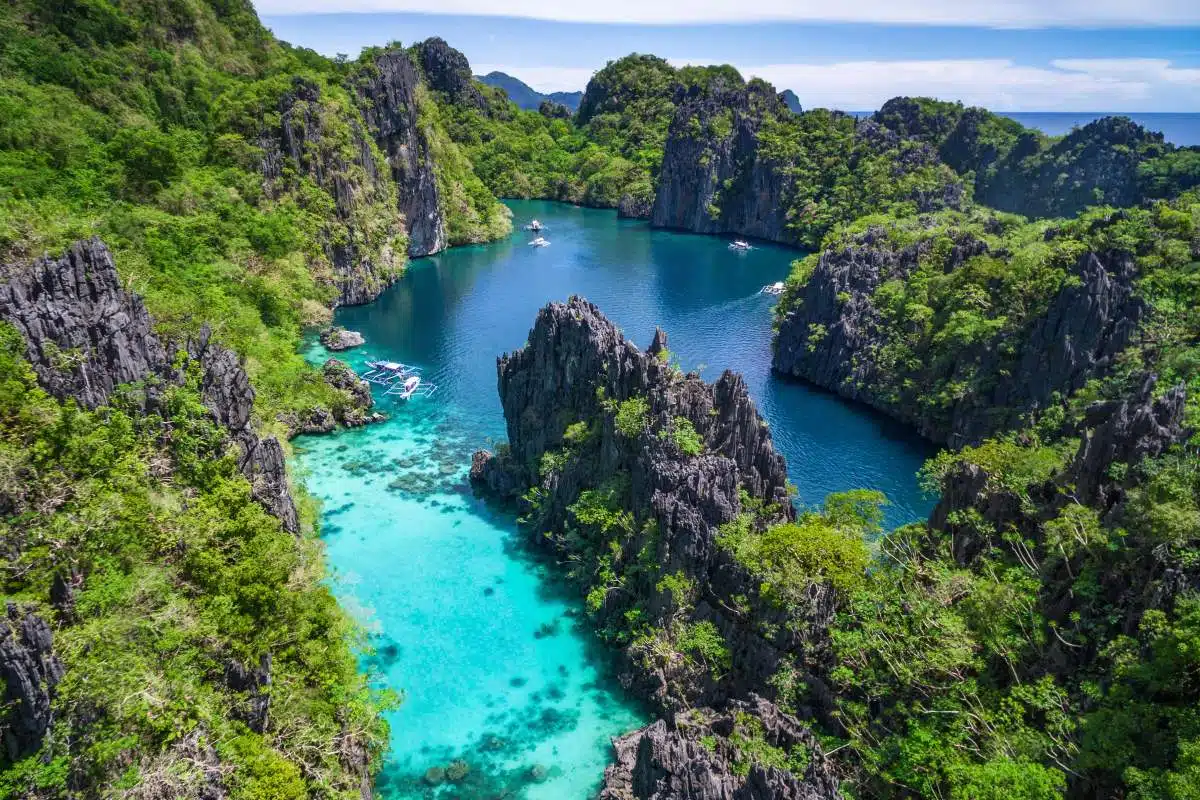
Packing toiletries and hygiene items for the Philippines isn’t too different from any other trip. However, determining what to pack for the Philippines, especially with regards to toiletries, is extremely important.
There are a few items you should make sure to bring in your toiletry bag that you might not be aware of, especially when it comes to protecting the fragile marine environments in the country.
The items below are my recommendations for environmentally friendly, must-have items for traveling in the Philippines.
- Reef-safe sunscreen – It should be obvious that you need sunscreen for your trip, but one thing to note is that many types of sunscreen are VERY harmful for marine life . Swimming, snorkeling and diving are popular activities in the Philippines, so if you’re planning on getting in the ocean, please be kind to the corals and fish and wear reef-safe sunscreen. No Philippines packing list should be without reef-safe sunscreen. We use Sun Bum – it works well, smells good, and only uses natural ingredients that are safe for corals!
- Bug spray/lotion – Mosquitoes thrive in the hot, humid environments of the Philippines. You should always try to protect yourself from itchy bites and harmful mosquito-borne illnesses by wearing bug spray or lotion.
- AfterBite – You’re still probably going to get bitten. Be sure to bring After Bite or some other kind of anti-itch cream to soothe your irritated skin.
- Permethrin spray – Did you know you can get bug spray for your clothes, too? Permethrin spray is made specifically for fabrics and can help you repel bugs even more effectively. You can even buy pre-soaked mosquito repellent shirts (for women and men ).
- Stomach medicine – While the food in the Philippines is amazing, sanitation conditions can vary and travelers often report getting bouts of diarrhea, nausea, or food poisoning. I’d recommend bringing some Immodium and Pepto-Bismol to help treat any stomach problems. You might also want some Dramamine if you get motion sickness on buses or boats.
- Solid toiletries – Be a responsible traveler and minimize your plastic use by using plastic-free toiletries. Ethique has a fantastic line of solid shampoos and conditioners for different hair types, as well as soap and face care items.
Philippines Packing List: Useful Travel Gear
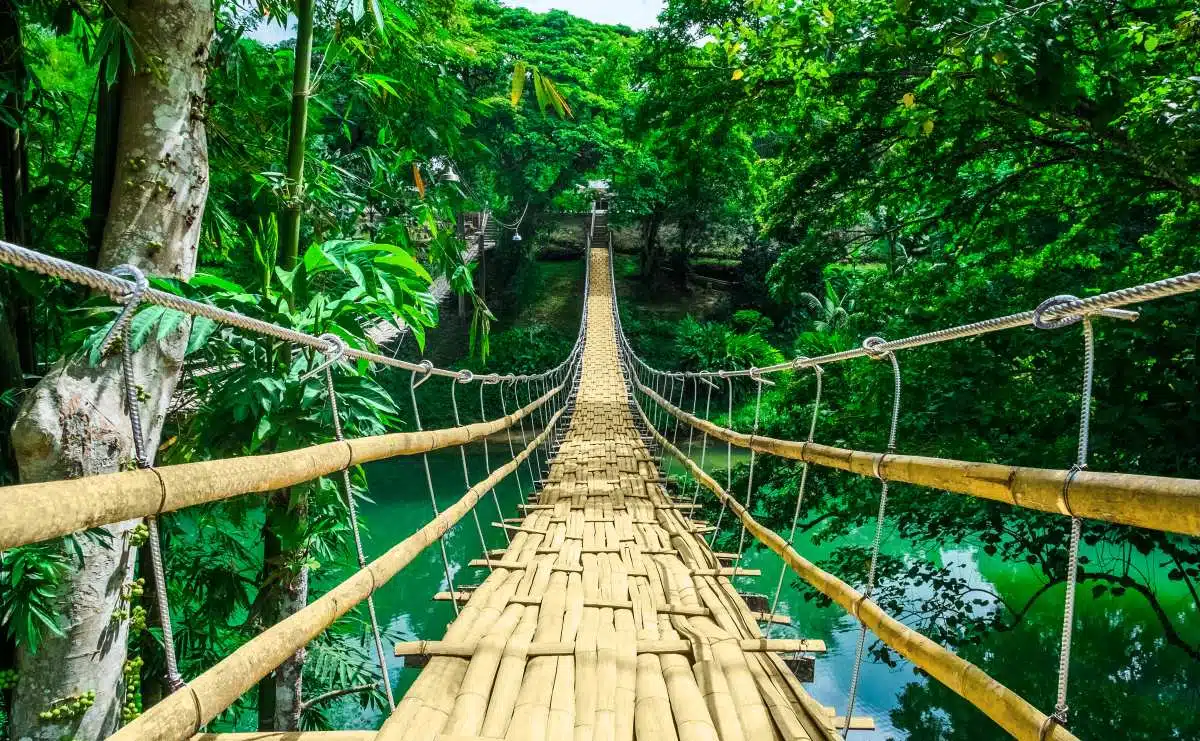
- Snorkel & mask – You can rent these in any beach shop, but the costs can start to add up quickly. If you’d rather use your own mask and snorkel, be sure to bring them with you.
- Head lamp – Streets in the Philippines can get really dark in the night. We always recommend bringing a head lamp (our favorite headlamps are from Black Diamond ) everywhere to be safe.
- Dry bag – For days at sea or island hopping, you’ll want a way to ensure your electronics and clothes stay dry. A dry bag is the solution! We usually use a 5L or 10L Ocean Pack dry bag that works like a charm at keeping our clothes, electronics, and documents dry.
- Quick dry towel – Regular beach towels are bulky and smell bad when it’s humid out. Bring a lightweight quick-dry microfiber towel like this one instead, which comes in all kinds of cute colors!
- Portable clothes line – After a day at the beach all your clothes will be wet. A travel-friendly portable clothes line is perfect for hanging wet clothes in your hotel room or out on a balcony.
- Money belt – Keep your valuables safe and secure at all times by putting them in a money belt! Raf usually holds our stuff in this RFID-safe money belt , but when I travel alone, I usually opt for a slim-fit running money belt .
- Reusable bottle & filter – We talk a lot about reducing plastic, and the easiest way to do this is by using a reusable bottle and filter. I have a Hydro Flask , a USB-chargeable SteriPen , and a Sawyer Mini water filter with me on every trip so I always have access to clean water (without buying plastic bottles).
- Unlocked cell phone – Many Filipino tour companies, hotels, and restaurants do not have websites, and can only be reached by phone. I strongly recommend bringing an unlocked cell phone and buying a local Globe SIM card when you arrive.
- Carry-on backpack – Most airlines in the Philippines have restrictions on how much you can carry on. Pack all of your important stuff into a carry-on sized backpack that’s comfortable.
Philippines Packing List: Extras You’ll Be Thankful For Later
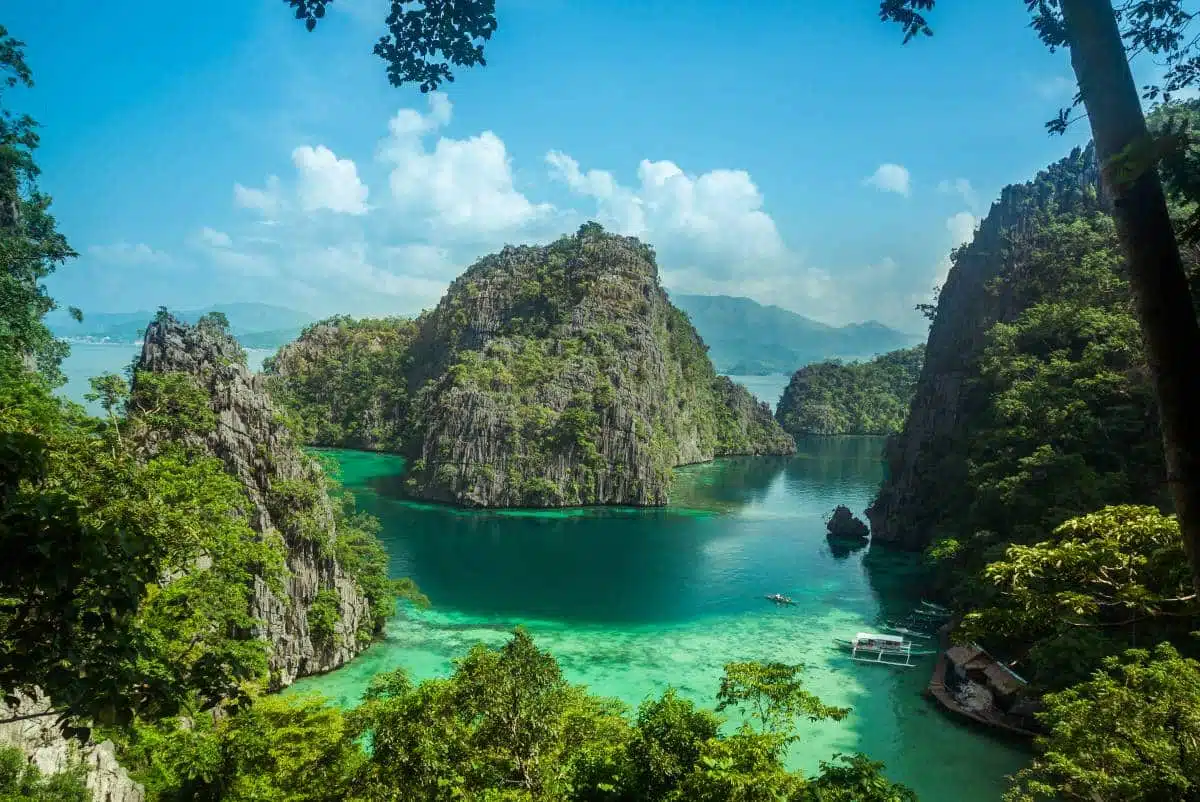
- Gifts for hosts & people you meet along the way – There’s a gift-giving tradition in the Philippines called “pasalubong,” where you offer a few small gifts as a sign of thanks and hospitality. If you’re planning on staying with any locals or interacting with them in a meaningful way, bring some small gifts from home (like postcards, magnets, candy, etc.) to give as a thank you.
- GoPro & holder – A GoPro is the perfect adventure companion for water activities (and there are a LOT of these in the Philippines). We took our GoPro with us while diving, snorkeling, hiking, and surfing in the Philippines, and it barely has a single scratch on it. Plus, the photos are awesome!
- Travel camera – Again, not totally necessary if you’re already bringing a GoPro, but I like having a mirrorless camera to take beautiful shots of my surroundings and the people I meet.
Did you catch all that? I hope so.
If you couldn’t tell from the gorgeous photos or my crazy enthusiasm, the Philippines is a gorgeous and friendly country to visit, and has something for any kind of traveler. However, figuring out what to pack for the Philippines can be tricky (as always).
It can be somewhat difficult to find travel and eco-friendly items there, so it’s important to plan ahead. By packing well for your trip, you’ll save a lot of time and hassle and have a fabulous adventure in one of the most stunning countries in the world!
Philippines Packing List: Read Next
27 essential things to know before traveling in the philippines: top philippines travel tips, 30 absolutely spectacular places to visit in the philippines.
- The Ultimate Holiday Packi ng List: Holiday Essentials for Your Trip
Love This? Save and Share on Pinterest
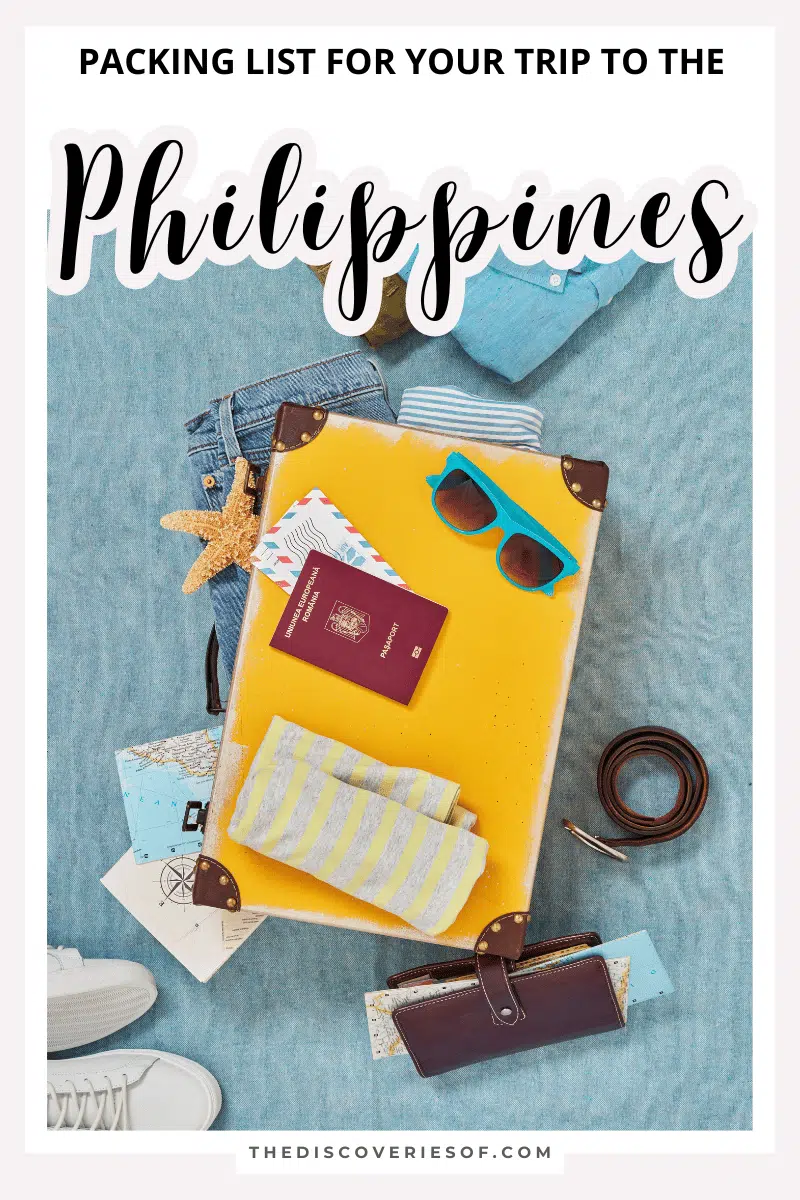
I’m Kay. I’m originally from small town Virginia, but have moved all around the East Coast and the United States for basically my entire life. I spent my childhood days blissfully wandering through the Blue Ridge Mountains, rolling in leaves, playing in creeks…you know, the usual overly adventurous 5-year-old stuff.
But those early years spent outside gave me a real problem: I’m now an adventure addict. Basically, if I’m not at my computer banging out articles or photos, I’m probably out hiking, biking, or camping somewhere beautiful.
Related Posts
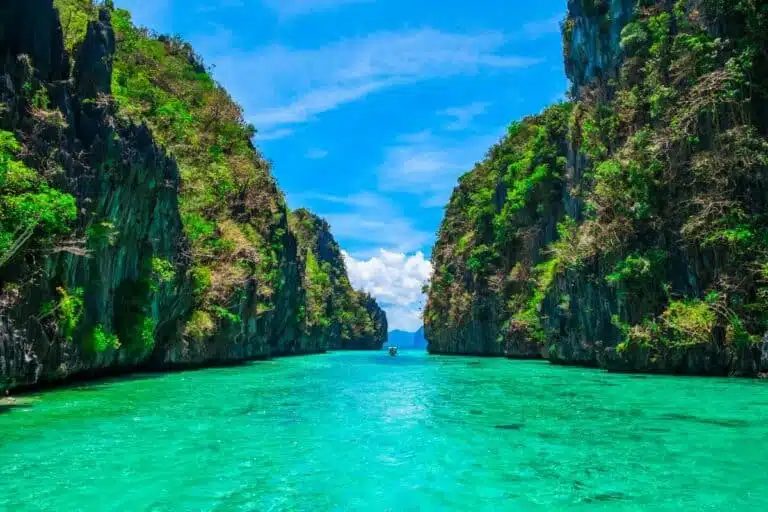
Things to do on Camiguin Island: A Local’s Guide to One of the Philippines’ Best-Kept Secrets
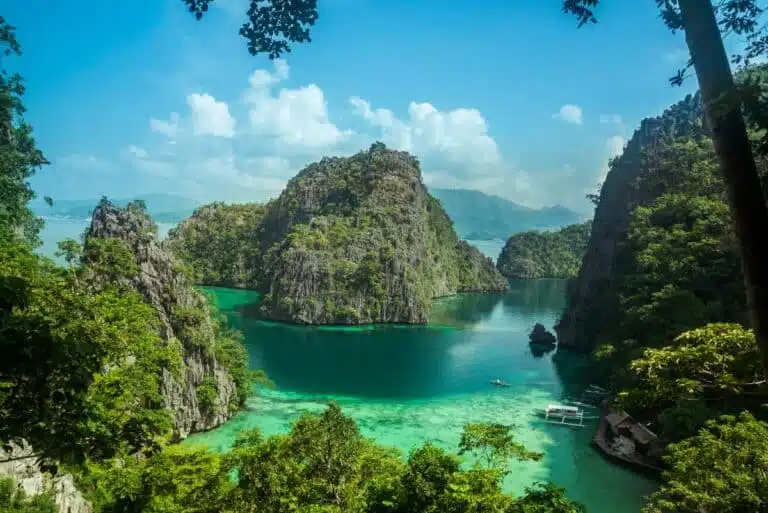
Leave a Reply Cancel reply
Your email address will not be published. Required fields are marked *

Follow me on Instagram for travel inspiration, tips, and guides.
- Meet the Team
- Work with Us
- Czech Republic
- Netherlands
- Switzerland
- Scandinavia
- Philippines
- South Korea
- New Zealand
- South Africa
- Budget Travel
- Work & Travel
- The Broke Backpacker Manifesto
- Travel Resources
- How to Travel on $10/day
Home » Southeast Asia » Philippines » Packing List
23 Items You NEED in your Philippines Packing List (2024)
If you’re an adventurer, water sports enthusiast and an island aficionado – you can’t get much better than backpacking through the Philippines. With over 7,000 islands, there is one for everybody!
But with so many islands and so much to do in the Philippines, you may be confused about what and how to pack. If you are wondering what to bring to the Philippines then you have come to the right place.
So get comfortable, read on and equip yourself with all your pre-travel material. Then, you get to focus your energy on the good part – your epic Philippines backpacking adventure!
So, let’s get to it…

Unlock Our GREATEST Travel Secrets!
Sign up for our newsletter and get the best travel tips delivered right to your inbox.
The Ultimate Philippines Packing List
What to pack for the philippines checklist: personal gear, the basic stuff to pack for philippines, final thoughts on what to pack for the philippines.
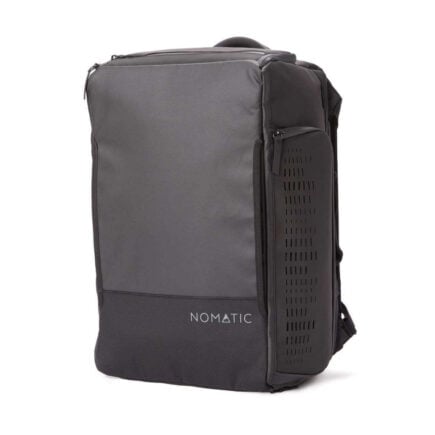
Nomatic Travel Bag
- Capacity > 30L
- Price > $299
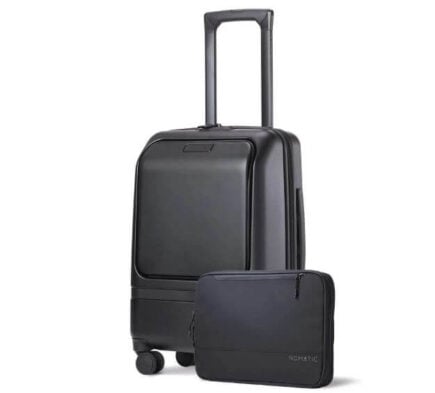
Nomatic Navigator Carry On
- Capacity > 37L
- Price > $400
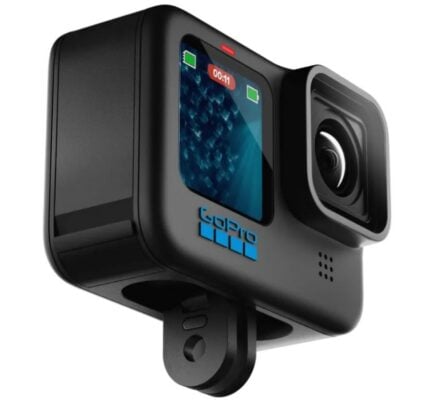
GoPro Hero 11
- Resolution > 5k
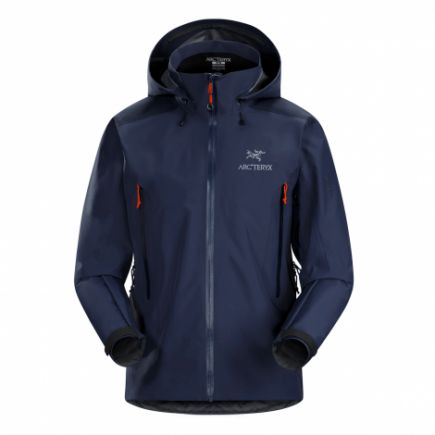
Arc’teryx Beta AR Jacket
- Price > $600

Insurance From World Nomads
- Price > Click For a Quote
The weather in the Philippines is tropical and mostly hot. However, there is some climatic differences between regions and there is a monsoon, wet season that you absolutely have to be mindful of. Let’s check out the Philippines packing essentials.
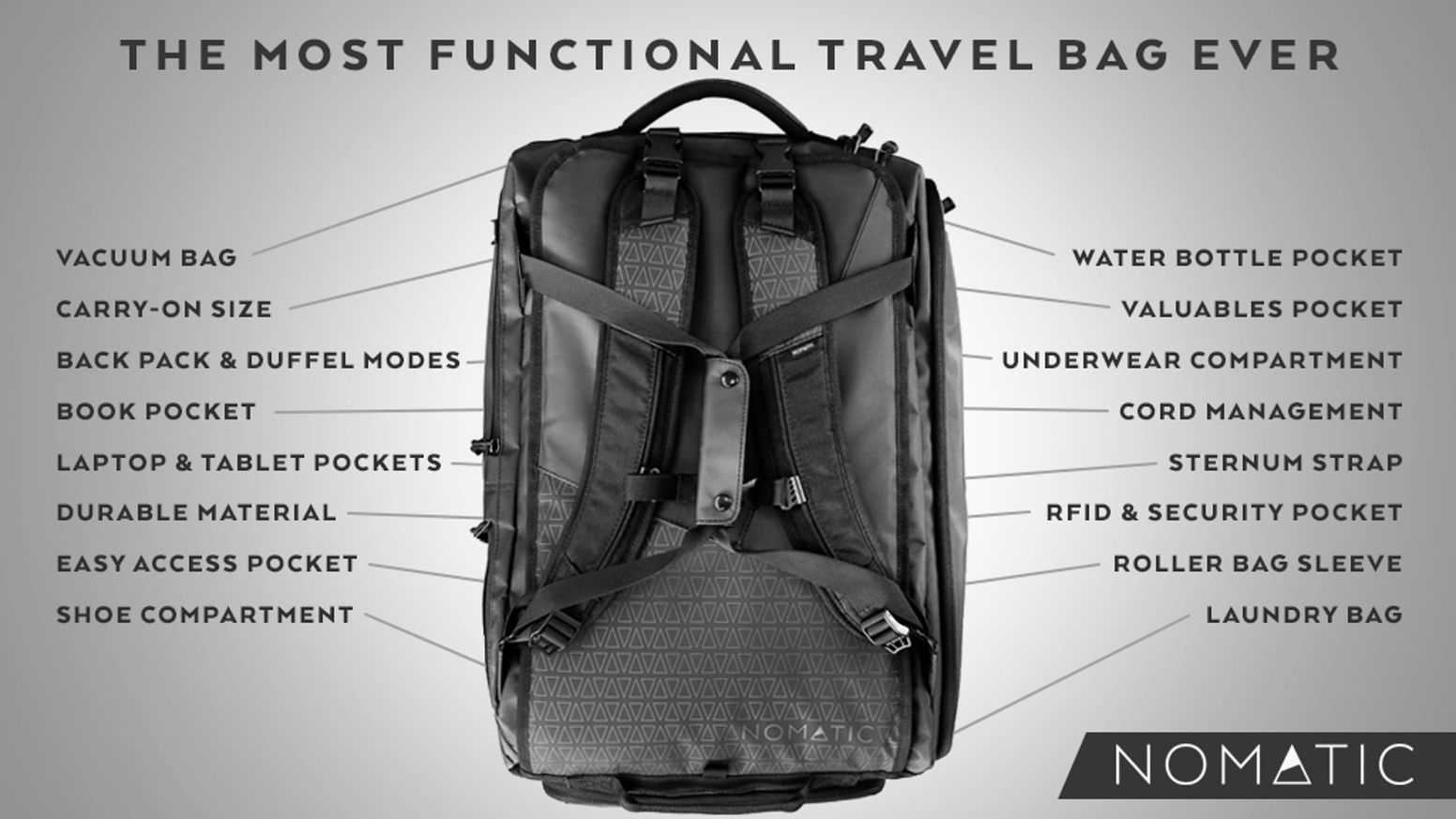
Best Backpack For The Philippines: Nomatic Travel Bag
Before you even take on the task of figuring out what to pack for Philipines, you’ll need an amazing backpack to pack it all into. For all types of travelers and destinations, our number one recommendation is the Nomatic Travel Bag .
The Nomatic travel bag covers every detail to make backpacking travel the best experience. Because of its smart design, it manages to provide loads of packing space in a convenient, carry-on size package! Its handy built-in pockets make plenty of room for all the necessities on your what to pack for Philippines checklist – you’ll find separate compartments for important items like shoes, water bottle, electronics, underwear and socks. As an added bonus, there’s also an RFID-safe and cord management pocket.
You have a choice between backpack or duffel bag carry, and extra carrying comfort for your back thanks to its innovative strap system and detachable sternum strap. And its black, waterproof material is every bit sleek and modern as it is durable and tough. There is a reason why most Broke Backpacker staff swear by this backpack.
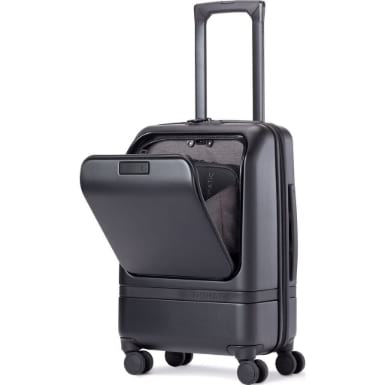
Best Suitcase For The Philippines: Nomatic Carry-On Pro
Backpacks not your thing? That’s ok. Our friends at Nomatic are back again with a great alternative to their badass Travel Bag; the Nomatic Carry-On Pro.
This suitcase is ultra-durable, sleek, and comes with a handy tech compartment for transporting your laptop and other electronic bits. Nomatic has been an industry leader when it comes to travel gear and that reputation is reflected in the quality build design and functionality of the Carry-On Pro suitcase.
Check out our Nomatic Carry-On Pro review to learn more about this epic suitcase. The Nomatic is a great for packing for the Philippines.
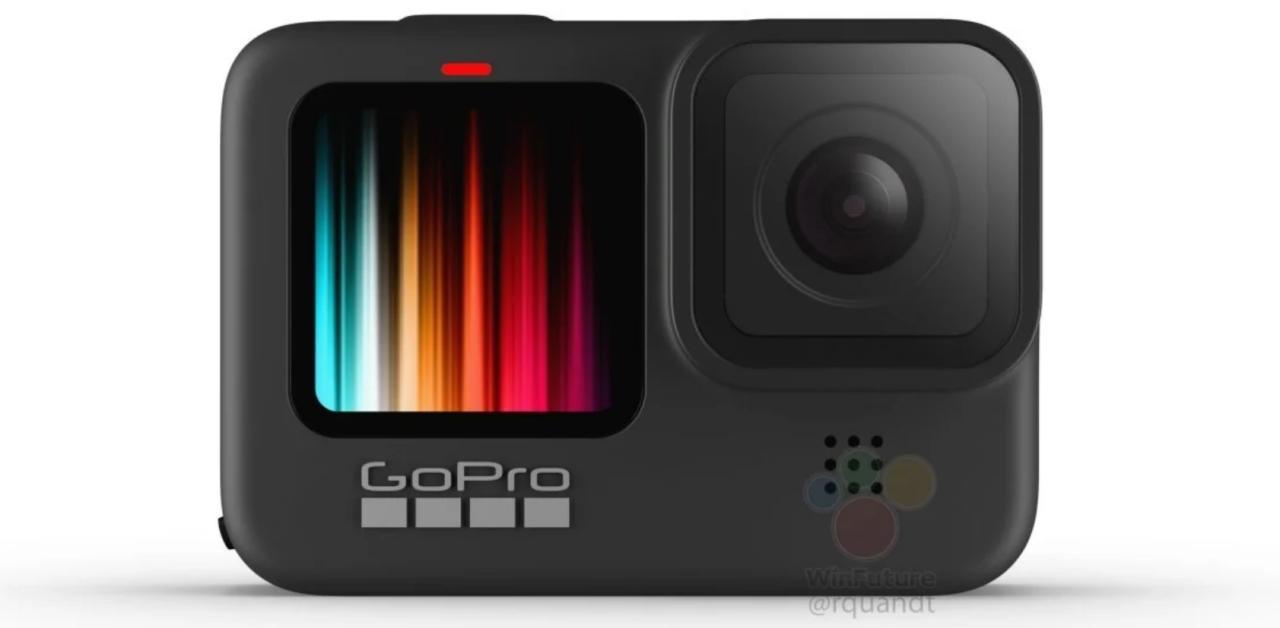
Best Camera For The Philippines: GoPro Hero9 Black
For most of us, our smartphones now feature cameras with stunning photo capabilities.
But… if you are an aspiring photographer who wants to take next-level photos and video beyond iPhone selfies, I recommend going with an action camera like the GoPro Hero9 Black .
It does deliver pro-quality video and gives you a bunch of a different angle options and shooting speeds to work with for photos (including a selfie-mode).
Think of a camera purchase like this as a long term investment that will have you capturing epic shots well beyond your time exploring here.
If you are looking for something cheaper for video specifically, check out these epic GoPro Alternatives .
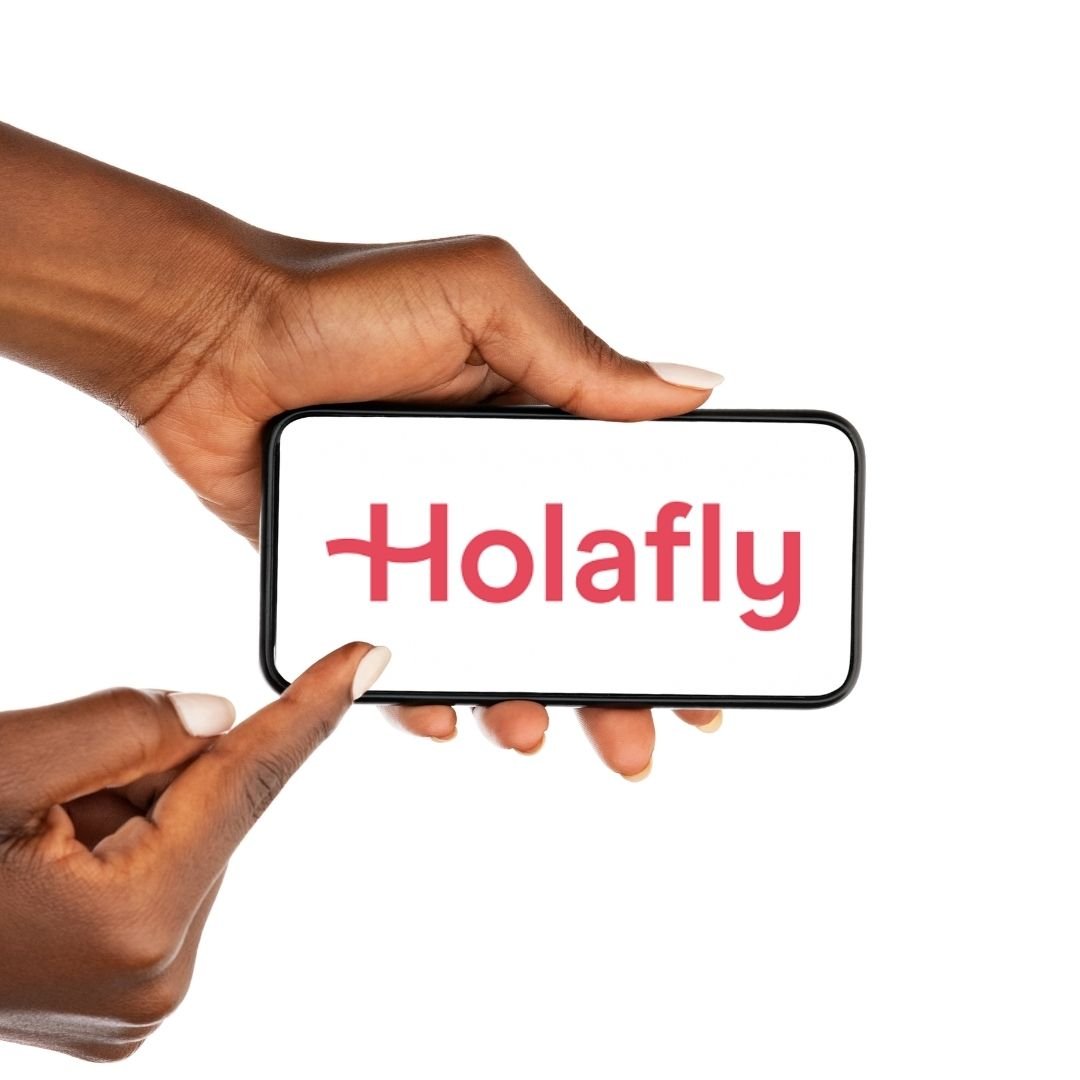
Best Sim For The Philippines – HolaFly eSim
The good news about visiting the Philippines is that there is extensive 4g and 5g Internet coverage, taxi apps and food delivery apps. The bad news is that your native SIM card will not work and so you will not be able to access any of this online goodness until you rectify that particular situation.
You can waste time hanging around phone shops queuing to get a plastic sim or you can simply install a eSim onto your phone before you leave home. You just access the HolaFly site, choose the Philippine package, download it and off you go – you are online the moment you land at the airport.
eSims are easier to set up and better than the environment than plastic sims. The downside is that not all phones are eSim ready.
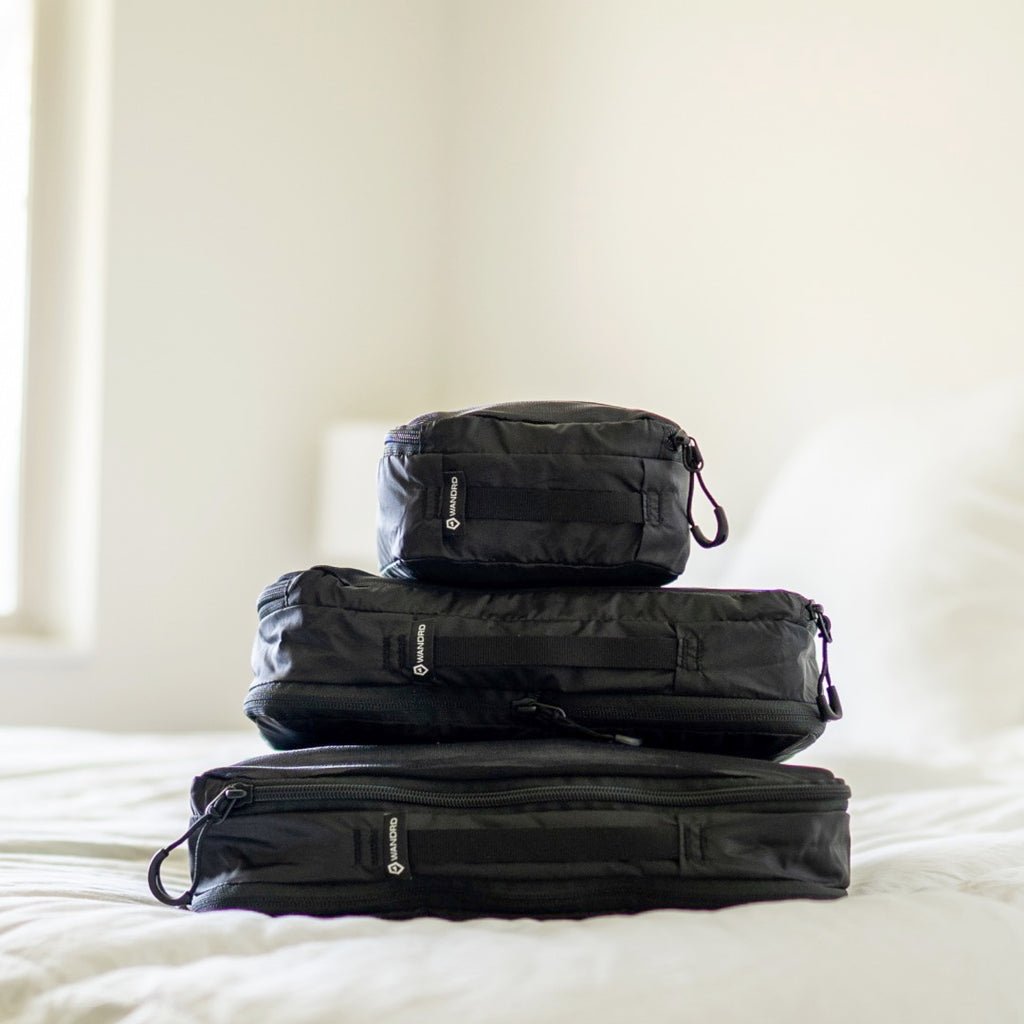
Packing Cubes For The Philippines – Wandrd Packing Cubes
In case you have never used them, packing cubes are little compression cubes that allow you to neatly pack clothes in in order to help facilitate better packing. They allow you to pack more stuff, and to keep it all better organised.
For the longest time, I thought that packing cubes were a superfluous indulgence, but boy was I wrong. Now I never travel without a few.
These ones from WANDRD are great quality and excellent value for money.
In terms of clothing, you can get pretty far with standard backpacker gear and many of the locals live their entire lives in shorts and t-shirts! If you are going into the jungles, trekking or camping though, then some proper gear is a must.
When deciding what to bring to the Philippines, first research if you are going to hit a rainy season. Then, try to decide what activities you intend on doing as this will make the checklist a whole lot more useful to you.
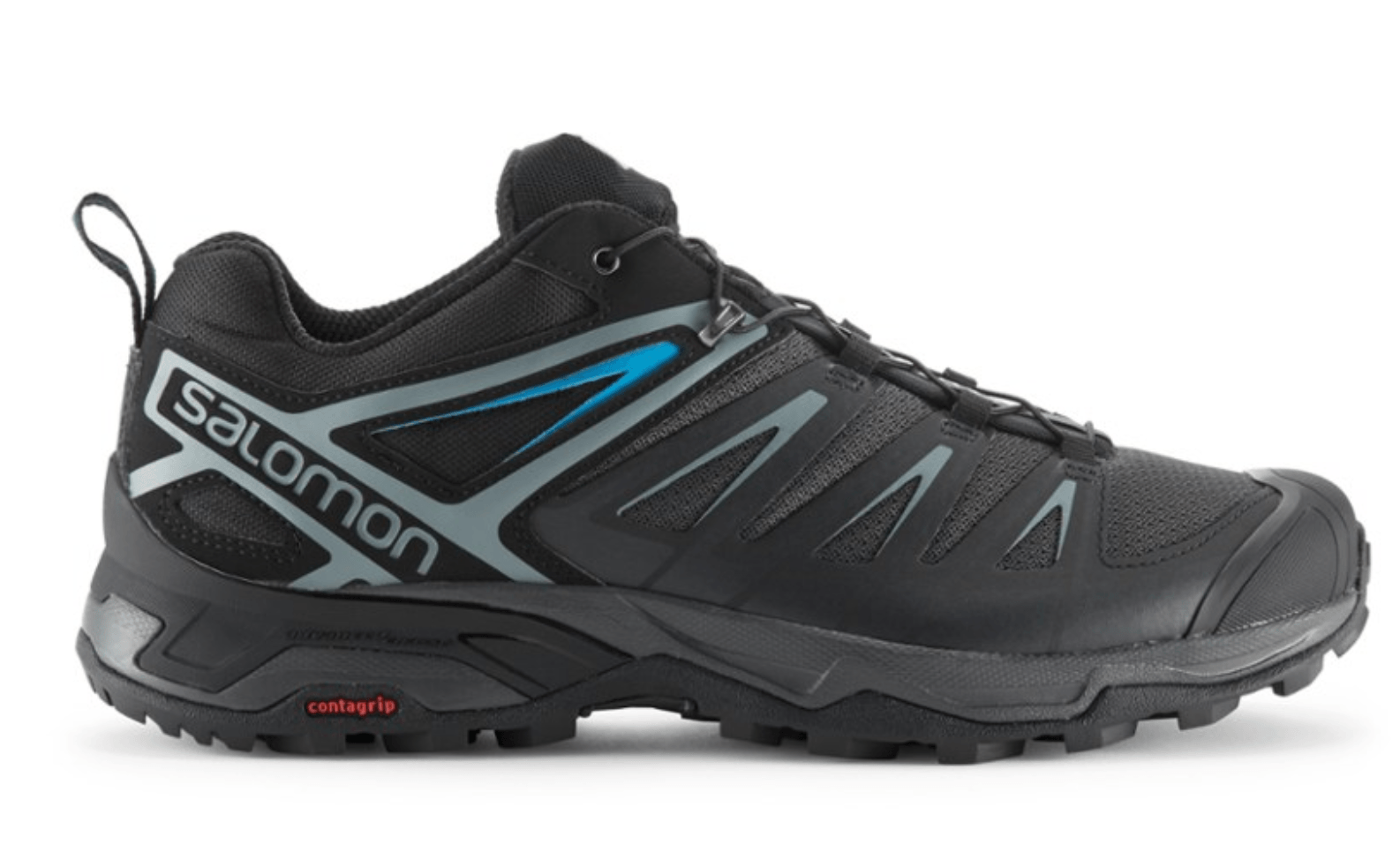
Salomon X Ultra 3 Low Aero
Visitors to the Philippines have a tendency to underestimate the amount of walking that is part the experience. But it is not all beaches and hostel life. Some of the cities are bloody huge, the trekking opportunities plentiful and the sheer amount of ground the average visits covers commendable! Therefore you need good shoes!
I admit that most shoes that are also good for hiking are not the most attractive pieces of footwear. But they are some of the most comfortable and deliver good ankle support for a long day of walking about town. If you rent a bike or scooter, it is always a good idea to wear proper closed shoes when riding it,
Check out the women’s Salomon X Ultra 3 Low Aero .
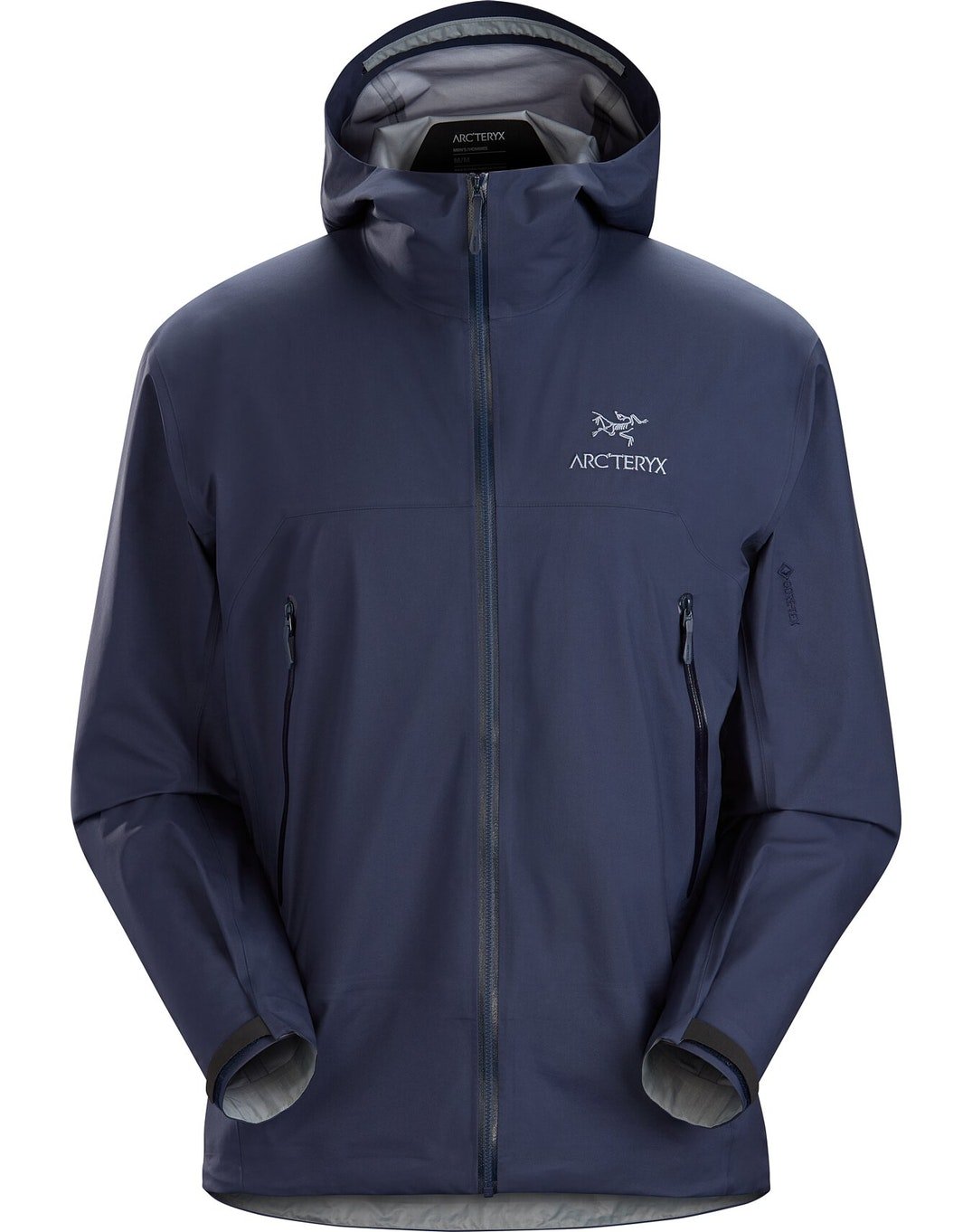
Arcteryx Beta AR
Did you know that the surface of the earth is over 70% covered in water? And you know how that water got there? Yep because it tends to here rain here on planet earth quite a lot! If you are visiting the Philippines in June to October, then it is the wet season which can see intense rains fall most days.
There is no such thing as bad weather, only the wing gear for it. Don’t let a bit (of a lot) of rain ruin your trip and make sure you are ready with some top notch rain gear.
This is our pick of the many rain jackets we have tried. It’s reliable & stylish and looks good worn out in the mountains or in city bars.
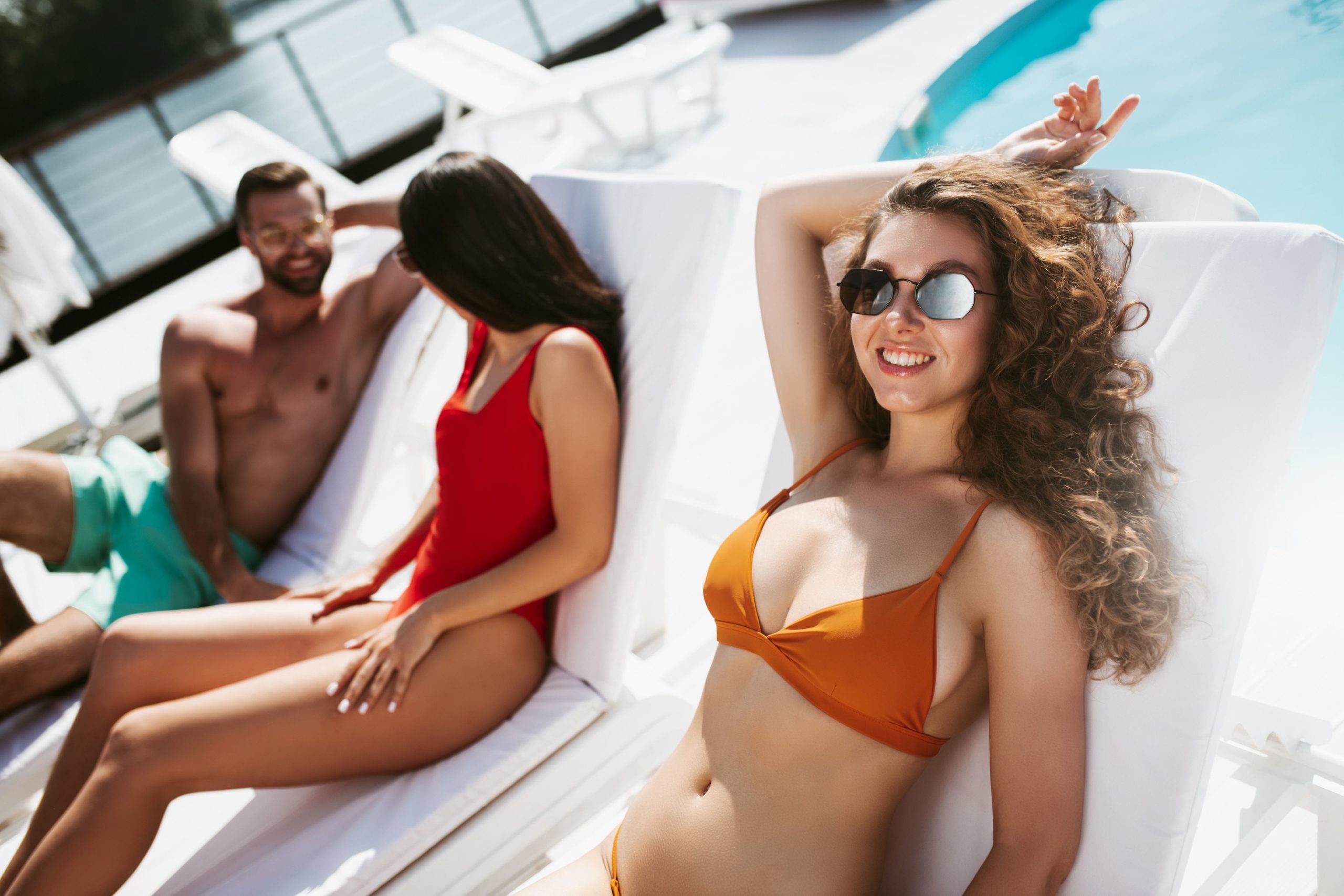
Any time of the year there is a beach, pool or jacuzzi waiting with your name on it in the Philippines. I mean, a country of 7000 islands boasts an insane amount of ocean.
Whether you go diving, surfing, snorkelling or just paddling in the waves, your swimwear will get plenty of use.
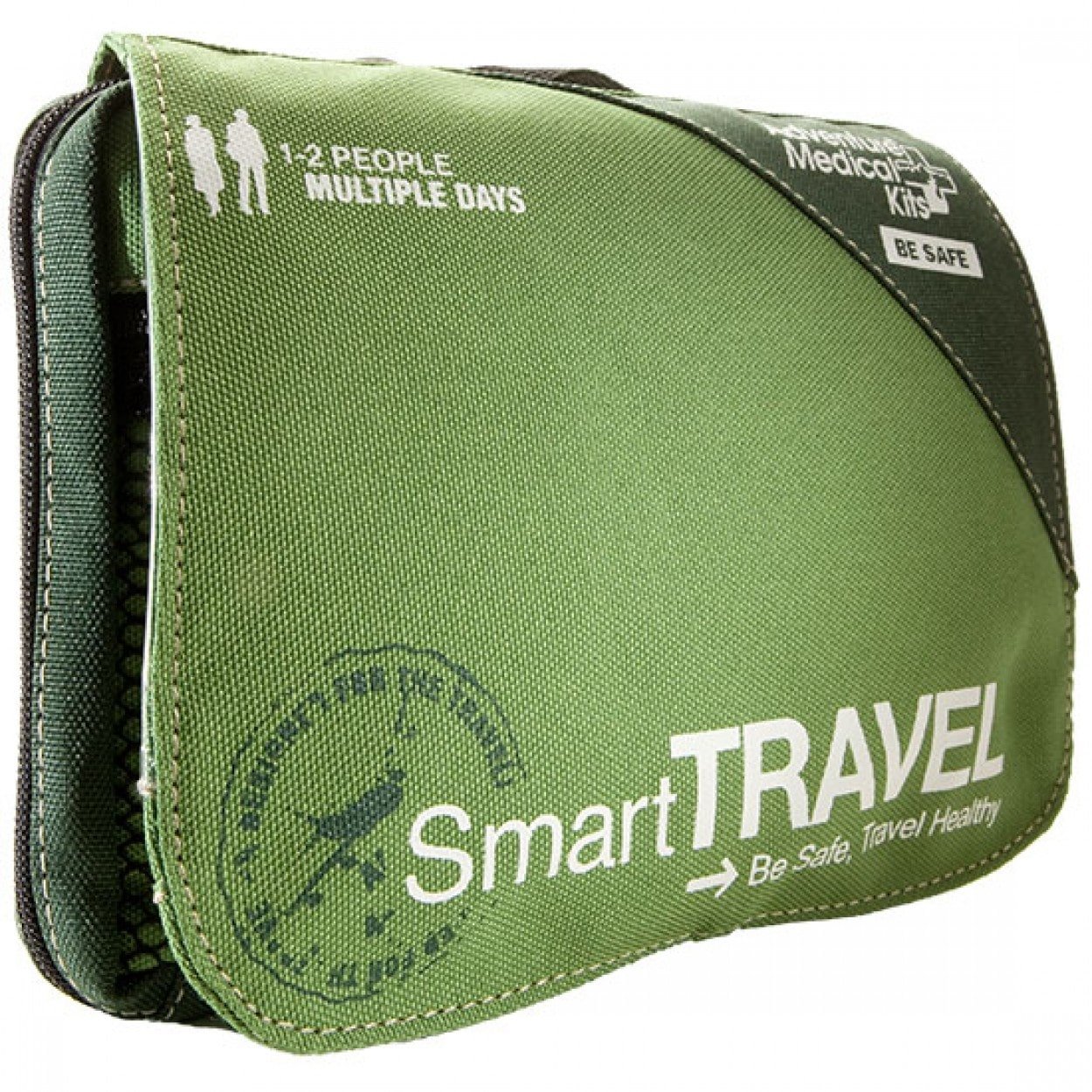
Travel First Aid Kit
You don’t need to tote around half a pharmacy, but a well-stocked first aid kit should be in all our backpacks. Stuff happens on the road and it’s inconvenient and embarrassing when you can’t manage small situations like a cut finger or hangover migraine.
You can tuck this lifesaver away in a forgotten pocket – and it’ll be there when you need it.
Tip: Add a few bits and pieces to the first aid kit after you purchase it, like extra headache medicine, any personal meds you need (like allergy pills), whatever you take to calm your stomach and a few more plasters.
Travel Insurance From World Nomads
ALWAYS sort out your backpacker insurance before your trip. There’s plenty to choose from in that department, but a good place to start is Safety Wing .
They offer month-to-month payments, no lock-in contracts, and require absolutely no itineraries: that’s the exact kind of insurance long-term travellers and digital nomads need.

SafetyWing is cheap, easy, and admin-free: just sign up lickety-split so you can get back to it!
Click the button below to learn more about SafetyWing’s setup or read our insider review for the full tasty scoop.
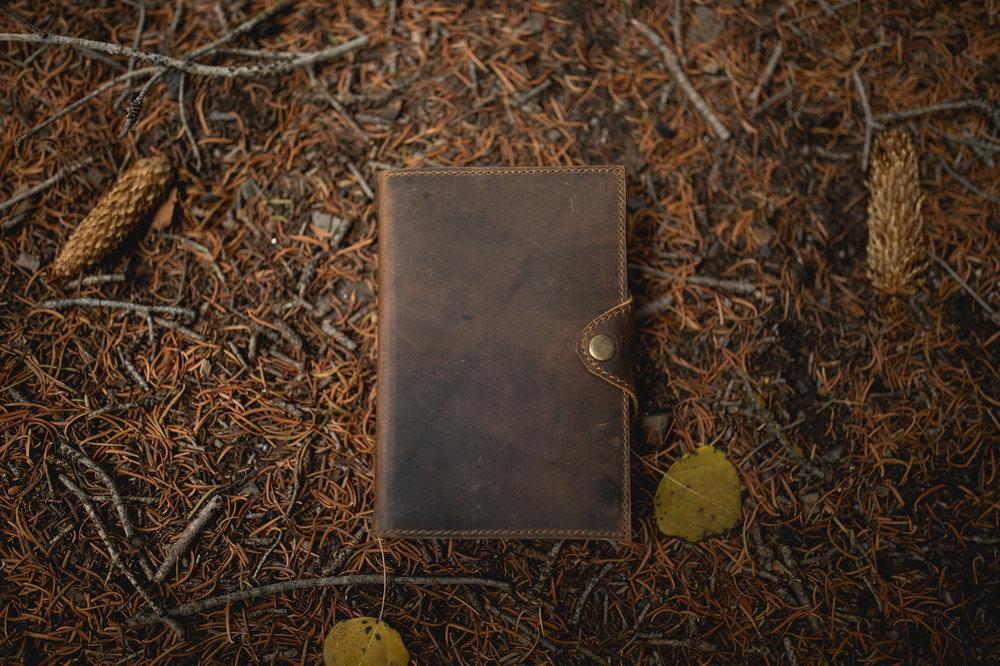
Planner/Travel Journal
Keeping a journal is one of the best things to do when traveling. The Drifter Leather Journal by Kodiak is our favorite, it works great for digital nomads and organized backpackers and can be used as planner or a dream diary – whatever you want!
Keep on track with your goals, travels and save those precious memories, especially the ones you do not want to share online. This one is bound in beautiful leather so it looks beautiful and will withstand life on the road.
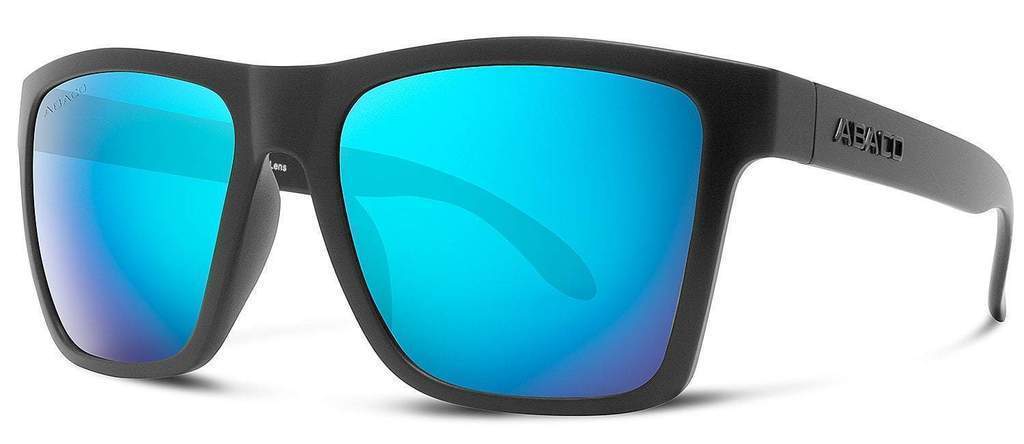
Abaco Sunglasses
A reliable pair of sunglasses is undoubtedly one of your Philippines packing essentials. Our favorites are Abaco Polarized Sunglasses because they deliver on quality and style.
They’re built tough with triple-layer scratch-resistant lenses and trademarked Adventure-proof Frame Material. You can also customize them with your choice of lens and frame colors to reflect your own style.
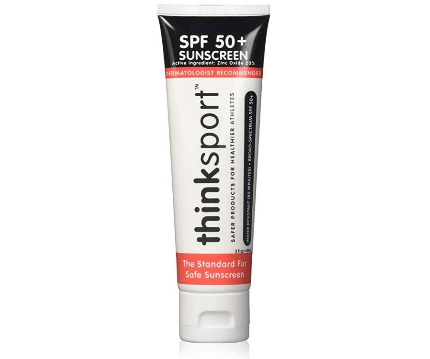
Suncream: Thinksport Safe SPF 50+
By now, all of us are as pasty as the driven snow from sheltering in place for the last six months. Am I right? This means we are even more vulnerable than usual to the sun’s fierce rays. Packing sunscreen for the Philippines may seem like a no brainer, but you would be amazed how many sun-burned cocktail-toting people you see wandering around.
Thinksport Safe SPF 50+ sunscreen gives folks strong sun protection in a non-oily formula that’s free of gluten, paraben, phthalates and biologically harmful chemicals.
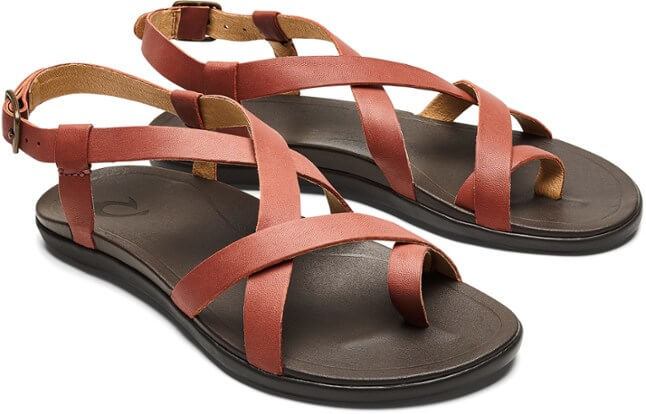
OluKai ‘Ohana Flip-Flops
Circling back to the footwear question, now we are going to talk about sandals. Chances are that a lot of your Philippines trip will be spent beachside or hanging around you hostel where “proper” shoes may feel like overkill.
Your feet will be tired and sweaty from those long days wearing shoes so do yourself a favor: pack sandals and give your feet some well-deserved cushion and fresh air. These Olukai flip flops are ultra-comfortable, well-made, and come in a variety of colors.
Check out the women’s OluKai ‘Ohana Flip-Flops .
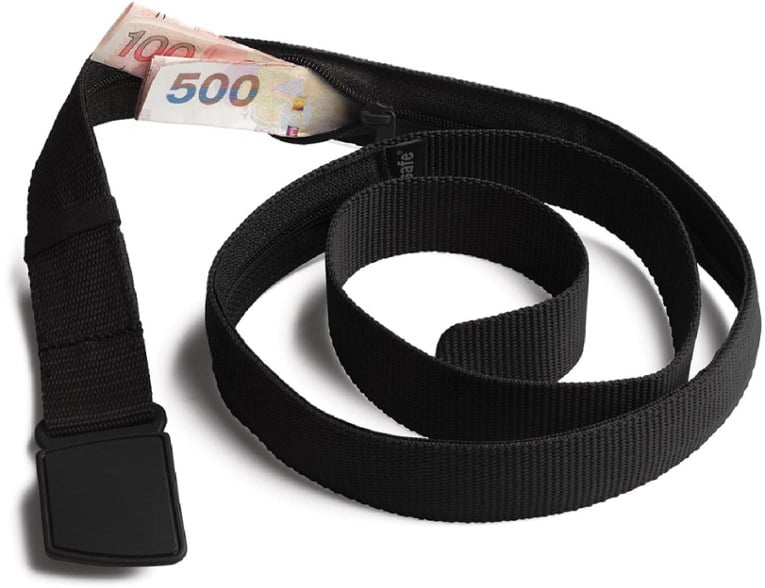
Money Belt By Pacsafe
Whilst the Philippines is not particularly dangerous, crime can still happen and tourists are sometimes targeted.
In particular, Manilla does see its share of bag snatching, pick pocketing and even muggings.
Therefore it is always a good idea to use a money belt to hide your cash just in case something does go wrong. The one we have selected from Pacsafe is built to last too.
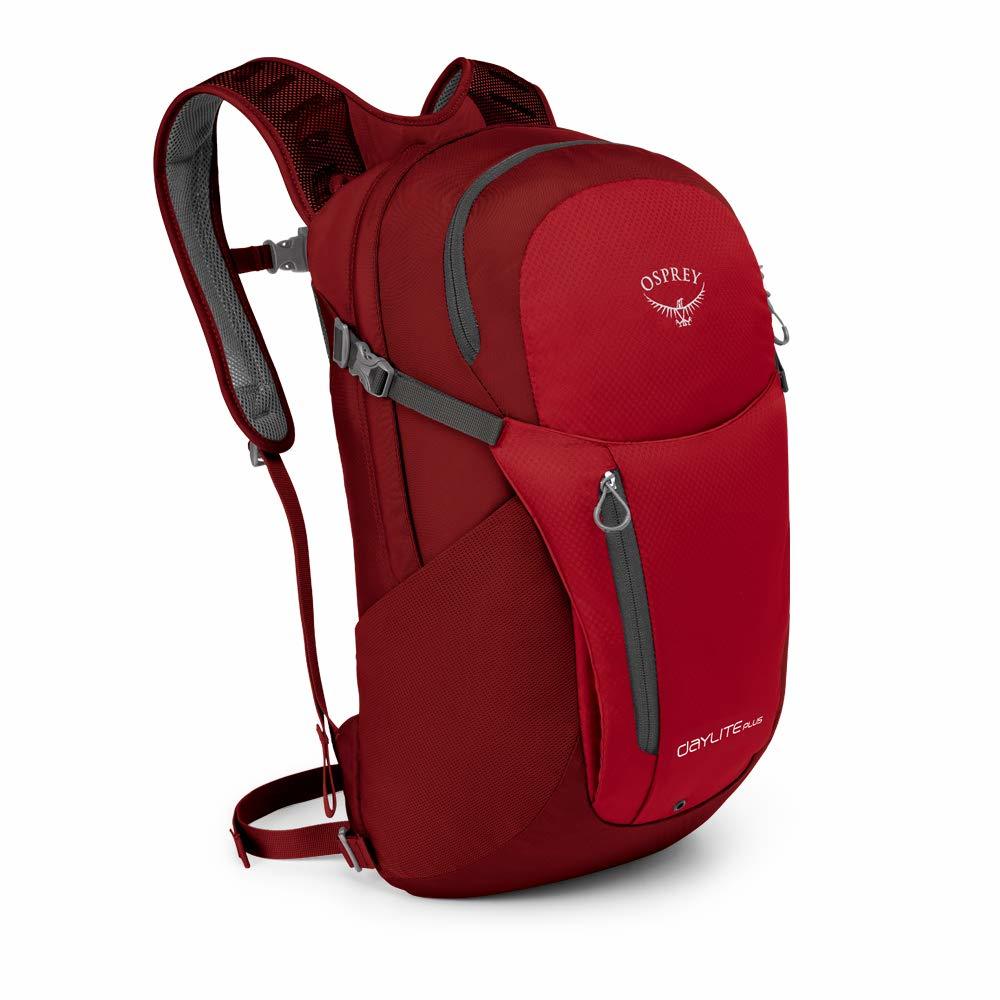
Osprey Daylite Plus
If you intend on doing any hiking, camping or day then you will need a daypack. They are great for carrying water, hat’s and gloves and for packing sandwiches for lunch. We love Osprey products and this daypack is our personal pick.
The Osprey Daylite Plus has a mesh-covered panel to keep your back cool and fresh by minimizing contact with the back of the pack itself and allowing air to get between you and the pack.
Check out our full review of the Osprey D a ylite plus for more details.
Additionally, you can attach it to other Osprey packs in case you want to add more capacity and carry just one piece of luggage… but the reviews on this feature are mixed.
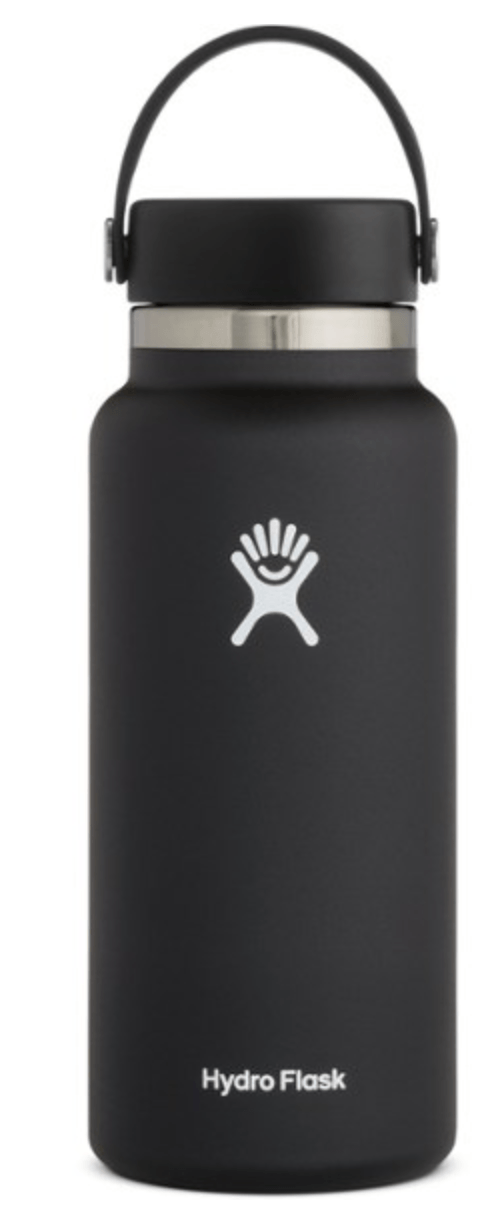
Hydroflask Vacuum Bottle 32 oz.
Packing a reusable water bottle is probably the best thing you can personally do to combat single-use plastic bottle use whilst traveling. There is simply zero need to buy plastic water bottles. Whilst you should not drink the tap water, you can but big, reusable water bottles and fill this each morning.
We love the Hydroflask Vacum Bottle for its quality and because it keeps cold water cold for many hours and vice versa for hot beverages. This bottle is the ideal water bottle to get not just for your Philippines trip but for daily use. Please don’t be that person buying plastic water bottles. We are all judging you…especially mother earth.
If you go with the Hydroflask, you’ll probably never need to buy another waterbottle again.
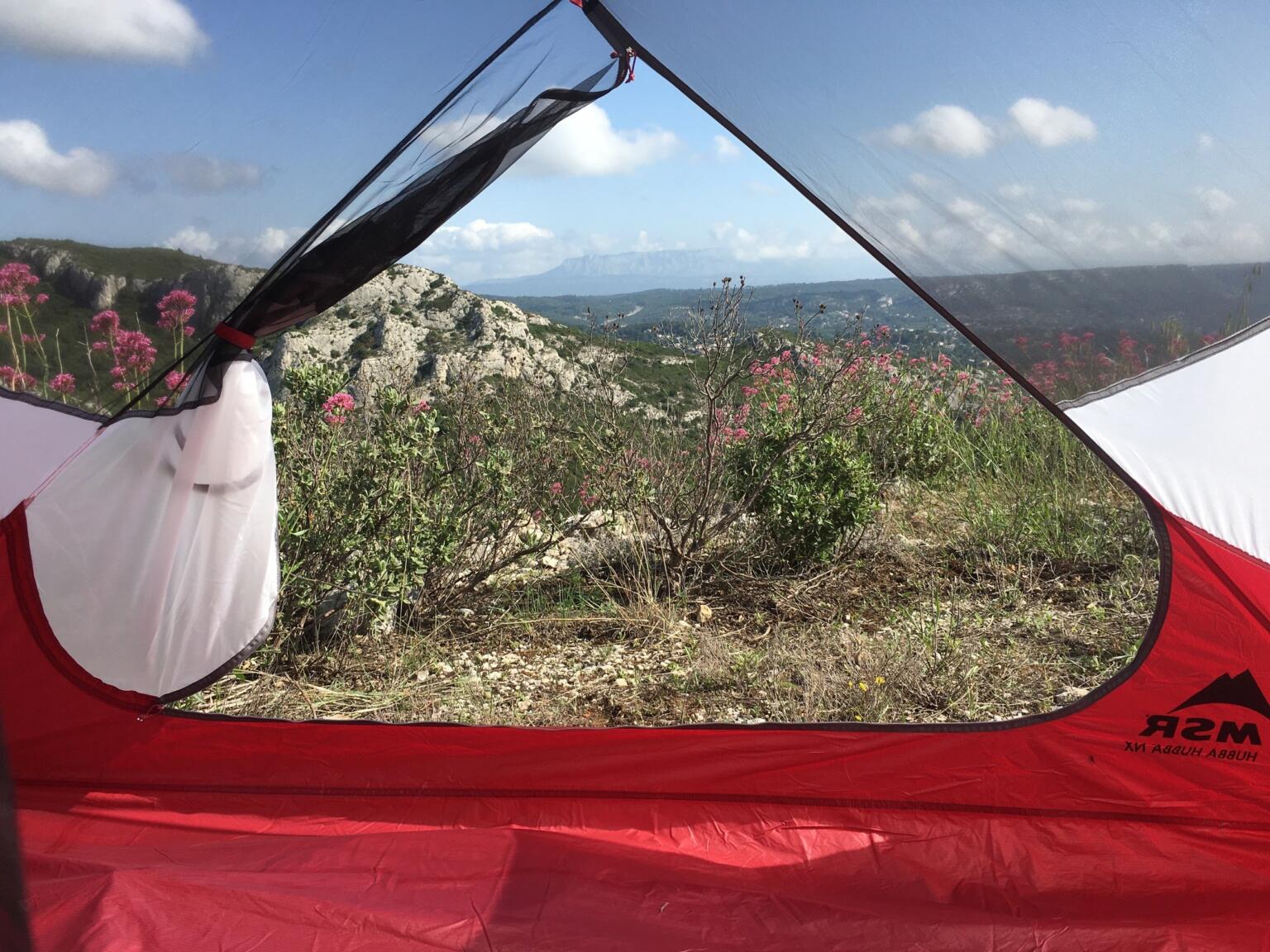
MSR Hubba Hubba 2p Tent
There are some awesome camping possibilities in the Philippines. Not only do you get outdoors but you can save a few bucks here and there by sleeping inside your tent.
This is more the choice for those in the market for budget backpacking gear. It’s got all the perks of a top-notch backpacking tent without all the freakishly high numbers on the price tag.
Yeah, it may not quite make the cut as ultralight backpacking gear but think of what you’re getting! The MSR Hubba Hubba 2p is mega-roomy and has multiple of pockets for keeping your self organized when settling in for the night.As far as budget backpacking tents go, this is one of the best. It’s a happy medium between the ‘prepared for anything’ mode and the ‘I wanted to go for a trek so I bought this for 2000 rupees’ afterthought.
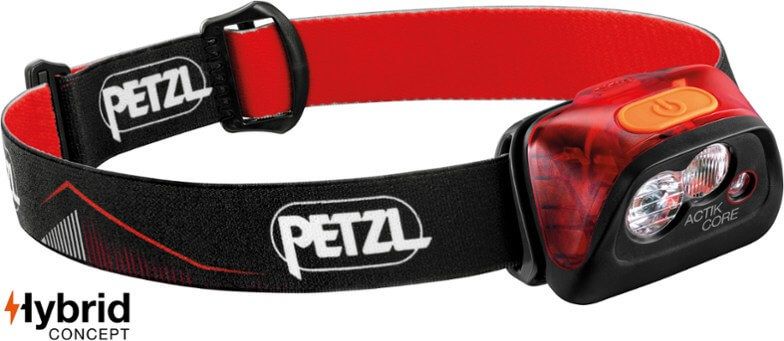
Petzl Actik Core Headlamp
Headlamps are great for traveling for many reasons. Firstly, they are useful as hell if you go camping or on an early sunrise mountain hike. Then, they come in useful for finding your way to your hostel bed at 3am without having to turn the lights on. They are also a Godsend if there is a power cut (pretty common in India, Nepal or Venezuela) and great for navigating darkened alleyways in Turkey & Spain.
Not all headlamps were created equal and this is one of the best. The Petzl Actik Core comes with a USB rechargeable battery (full recharge in 3 hours or less); however, it is compatible with AAA batteries. Water-resistance is another critical feature. This product can withstand splashing; but keep in mind, water-resistant does NOT mean waterproof.
On top of the essential items listed above, here is an additional suggested checklist of what to pack for your trip:
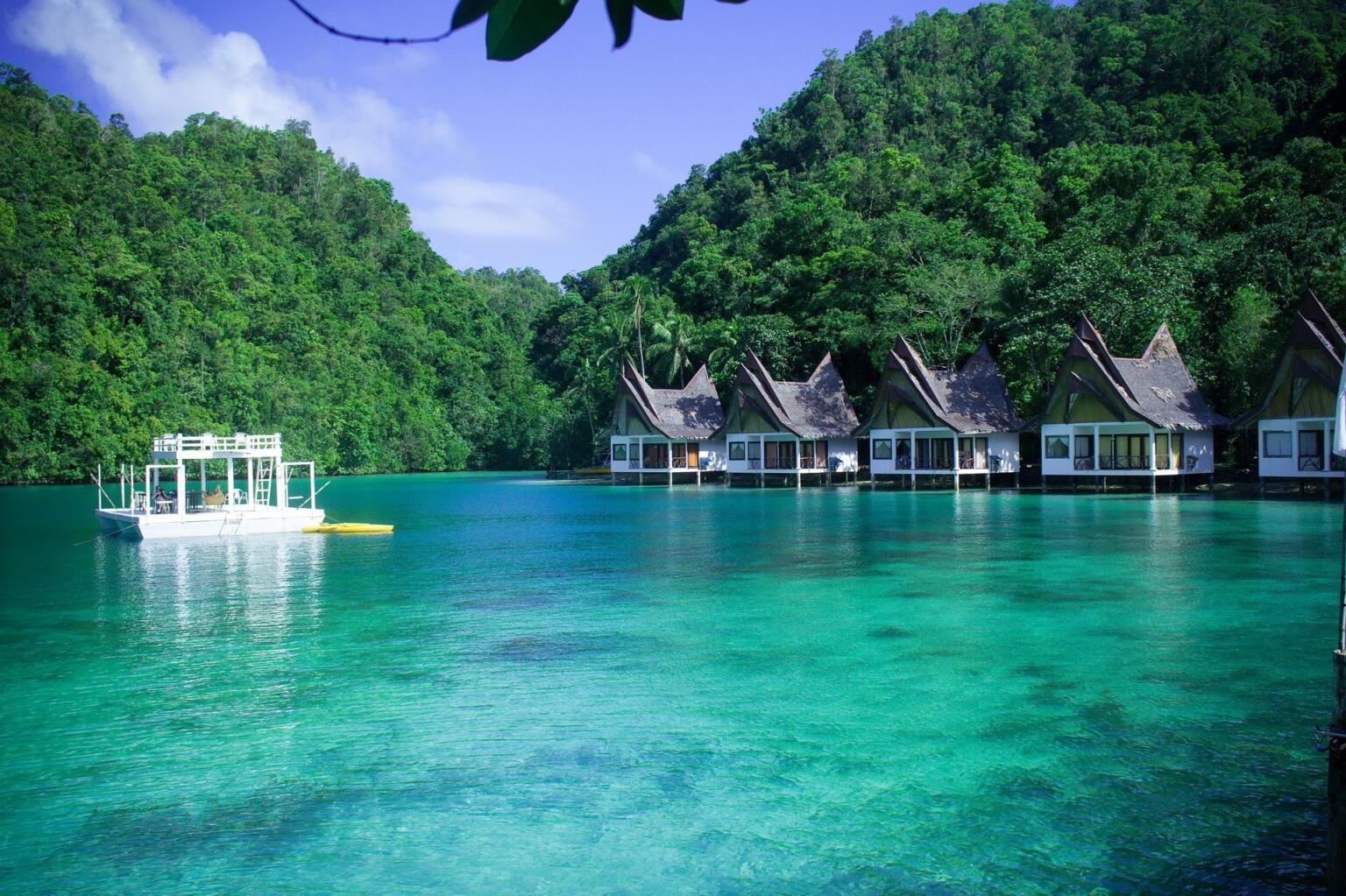
- 1-2 pairs of comfortable pants/jeans
- 1-2 pairs of shorts (summer/late spring)
- A few pairs of socks
- (Sexy) underwear x 2/3
- Ladies: a few dresses, pants, outfits, or desired lady apparel for a night on the town. Whatever makes you comfy!
- Dudes: A few collard shirts or something half-way decent for a night on the town. Whatever makes you comfy!
- Smartphone with a good camera for photos if you are not bringing an actual camera
- Portable power bank for charging your phone on the go
- Phone charger
- Amazon Kindle for reading by the pool
- Copy of your passport just in case
- Cash (not too much, there are ATM machines everywhere
- Packable Towel

Our GREATEST Travel Secrets…
Pop your email here & get the original Broke Backpacker Bible for FREE.
All right, friends – there you have it! Your ultimate Philippines survival guide packed with all you need to know about what to pack for the Philippines. You have your top-23 needs packing list, a detailed look at seasons and weather conditions with tips on how to pack for each, special packing recommendations for men and women, and what NOT to pack to save yourself some space.
Just follow the tips laid out here and focus on the essentials to keep you safe and comfortable. No need to sweat the small stuff once you’re there – just go with the flow and enjoy the adventurous ride.
And, be happy because – guess what? You’re going to the Philippines!

And for transparency’s sake, please know that some of the links in our content are affiliate links . That means that if you book your accommodation, buy your gear, or sort your insurance through our link, we earn a small commission (at no extra cost to you). That said, we only link to the gear we trust and never recommend services we don’t believe are up to scratch. Again, thank you!
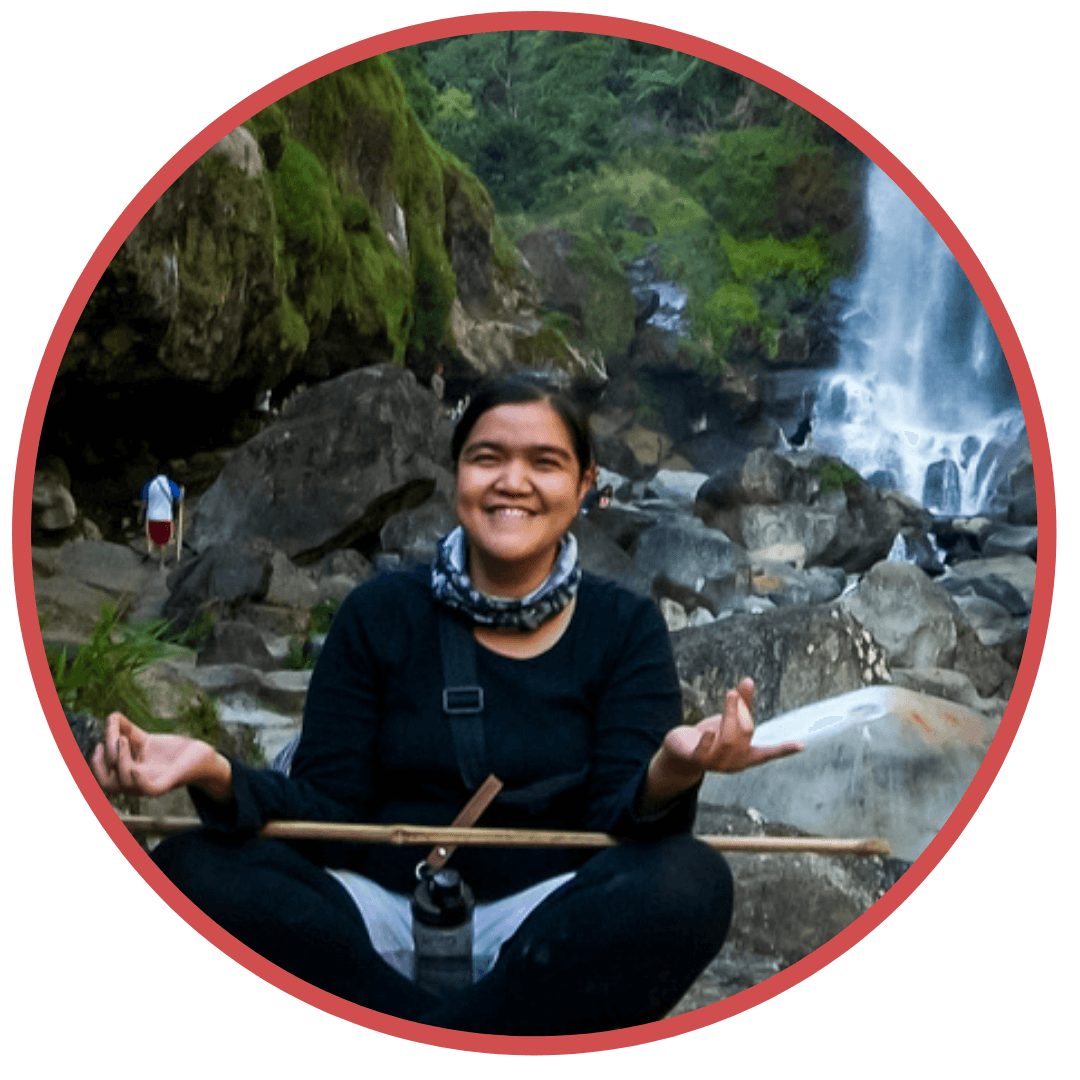
Rhenz Caguioa
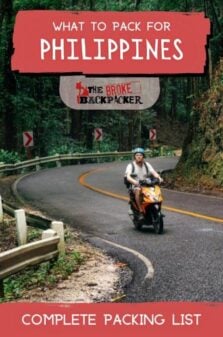
Share or save this post

Leave a Reply Cancel reply
Your email address will not be published. Required fields are marked *
Save my name, email, and website in this browser for the next time I comment.
Notify me of followup comments via e-mail.

The Perfect Philippines Packing List!
- Facebook 551
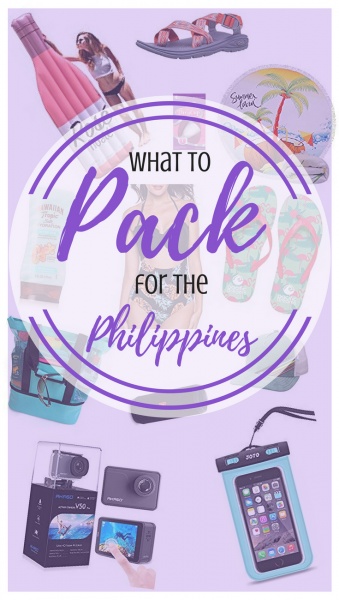
Planning a trip to the Philippines ? You’re bound to have the adventure of a lifetime! And while you’ll be spending most of your time in a swimsuit and flip-flops, you’ll probably want to pack a few other essentials as well, just in case.
Read on to learn all about the perfect Philippines packing list for your upcoming island hopping, waterfall exploring, beach lounging, and tropical paradise vacation in the Philippines!
Disclaimer: This post may contain affiliate links. If you make a purchase or booking through one of our links we may earn a small commission (don’t worry, it’s at no extra cost to you).
The Philippines Travel Basics
Appropriate dress in the philippines.
The majority of people living in the Philippines are Christian and you’ll see evidence of that everywhere – from bible verses painted on the sides of tricycles to giant billboards proclaiming how much God loves you. So there are no religious rules dictating that you need to cover up.
You’ll see tourists and locals alike frolicking on the beaches in skimpy bikinis or wandering around town in cut-off shorts. It’s also fairly unlikely that you’ll visit any churches so there’s never really a need to cover up unless you want to.
Weather in the Philippines
There are only two seasons in the Philippines – wet season and dry season. The wet season lasts from June until October and the dry season is from November through May. The hottest months of the year are April and May when temperatures average around 34 °C.
Tropical cyclones are quite common in the Philippines from July through September, with August being the most active month. If you plan on visiting during the wet season, you should be aware that ferries and boat tours are weather-dependent. It could put a big damper on your travel plans.
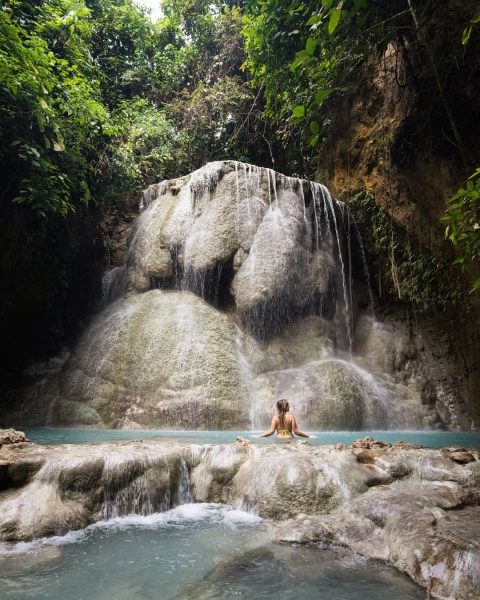
Visa and Passport Requirements for the Philippines
Citizens of most countries are not required to have a visa for a stay in the Philippines for up to 30 days (a few exceptions include India, Iran, Jordan, and a few others). Check your visa requirements here . Visitors from Israel can stay for up to 59 days without a visa. Be sure to purchase your return flight to your next destination prior to arriving at the airport or you may be denied boarding.
If you would like to obtain an extension on your 30-day stay, it is easy to do at any Immigration Office in the country. Your first extension will be 29 days and thereafter you may apply for 1 month, 2 months, or 6-month extensions at least one week prior to the expiration of your valid stay. Depending on what country you are from, you can extend your stay for anywhere from 24 to 36 months.
What to Pack for a Vacation in the Philippines
Baggage for packing for the philippines, travel luggage.
You’ll be taking quite a few rides in tricycles during your time in the Philippines, especially in the smaller towns where there are no taxi cabs. Tricycles are essential motorbike sidecars and they have minimal luggage space. So the driver will either tie your bag onto the back with some twine or throw it on the roof rack. Better to pack in luggage that has some flexibility and can take a bit of a beating.
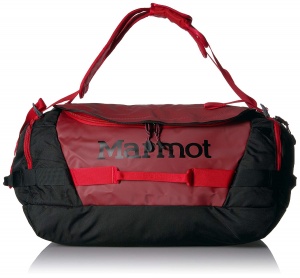
Carry-On Bag
Bring a carry-on that can double as a beach bag. You’ll be spending a lot of time jetting around on boats and lounging on beaches so this cute mesh tote is perfect for keeping your things organized and easily accessible during your vacation in the Philippines. It even has an insulated cooler bag section to keep your drinks cold!
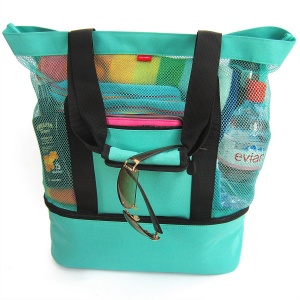
Travel Pillow
The Philippines aren’t exactly conveniently located, especially if you are coming from the US. Bring a travel pillow on your flight so you can get some shut-eye during that long flight. It packs down small so it’s easy to fit this travel pillow in your suitcase.
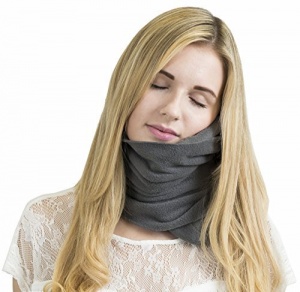
Electronics to Pack for the Philippines
Waterproof camera.
Some of the most popular tourist destinations in the Philippines are actually under the water. You’ll want to capture the vibrantly colored coral and fascinating marine life with a waterproof camera. GoPro HERO8 is the most popular but the price point is quite high. There are plenty of similar options available that take high-quality photos but don’t charge you for the brand name.
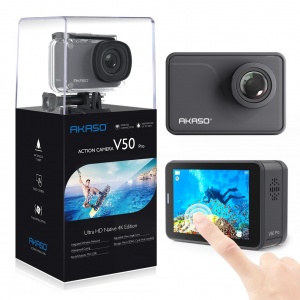
Universal Travel Adapter
The outlets in the Philippines fit types A, B, and C. The standard voltage is 220 V and the standard frequency is 60 Hz. It means that you won’t need an adaptor if you are coming from America, China, Japan, or Europe. However, you may find that having a universal adapter with multiple USB ports comes in handy so you can charge multiple gadgets all at once.
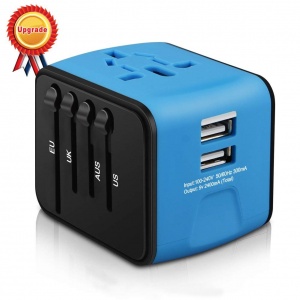
Waterproof Cell Phone Case
Whether you’re island hopping on a boat, waterfall canyoneering, or snorkeling with whale sharks, you’ll want to capture photos and videos of all of your adventures. Keep your cell phone safe and dry with a universal waterproof case by JOTO while snapping away.
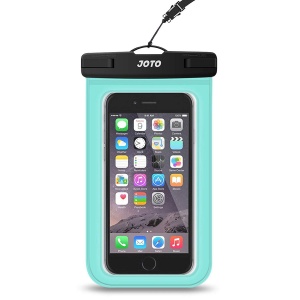
If you want to keep more than just your cell phone dry while cruising around the islands, invest in a high-quality dry bag that’s large enough to handle your camera and other gear. If you don’t mind if your dry bag leaks a bit, there are plenty of small stands all over the country selling inexpensive options as well.
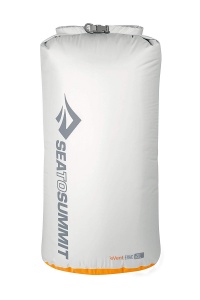
You’ll likely be relying on your phone throughout the day for Google maps, restaurant reviews, and taking photos of the landscape. Make sure your phone doesn’t run out of juice by investing in a power bank. This one by FosPower is small and waterproof so you don’t need to worry about keeping it dry while island hopping in the Philippines!
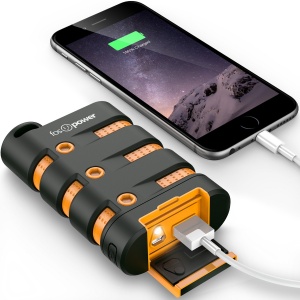
Don’t get caught without headphones on that long flight to the Philippines. This set of Bluetooth earbuds by SoundPEATS are super comfortable, have a long battery life, enter pairing mode right out of the charging case, and have built-in microphones for hands-free calling!
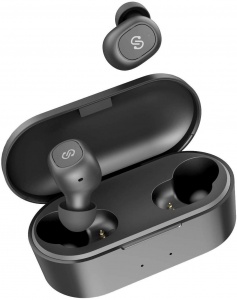
Portable Speaker
Long days spent lounging on the beach are more enjoyable when you have a cocktail in hand while being serenaded by your favorite jams. Invest in a set of waterproof Bluetooth portable speakers to keep yourself entertained for hours on the beaches of the Philippines!
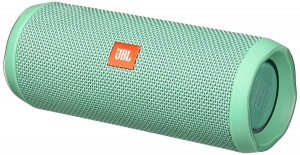
Apps and Entertainment for your Trip to the Philippines
- Don’t forget to download offline maps of the cities you’ll be visiting in the Philippines.
- Download Grab, the Uber of SE Asia ( iPhone | Android ).
- Get a subscription to Amazon Audible for access to a huge selection of audiobooks to listen to while at the beach or on the plane.
- Check out the must-visit destinations in these Philippines travel guides:

Toiletries to Pack for the Philippines
Containers for liquids.
Transfer all of your favorite products into small, leak-proof refillable travel bottles . They are perfect to throw in your carry-on to freshen up during your long flight to the Philippines. But don’t worry about packing all of the toiletries that you’ll need on our trip, there are plenty of places to purchase them once you arrive.
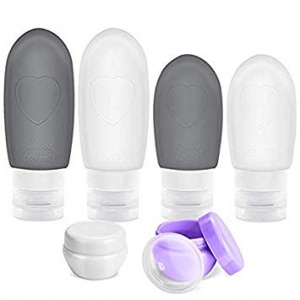
There are plenty of pharmacies and beauty supply stores in the Philippines (the most popular is called Watsons) where you can buy many toiletry brands that are popular in the states. However, there are a few things that are difficult to find and/or quite expensive including:
- Tampons are rare, especially in smaller towns including El Nido and Coron.
- Most of the lotions here contain “whitening” agents (i.e. bleach). Bring your own favorite lotions from home if you’d rather leave with a tan.
- Dental floss can be oddly difficult to find, even in larger grocery stores.
- Sunscreen is expensive in the Philippines! Pack your own to avoid overspending.
Travel health and beauty essentials to pack for the Philippines:
- Sunscreen and after-sun lotion
- Face and body lotion with SPF
- Mosquito repellent
- Shampoo and conditioner
- Toothbrush, toothpaste, and dental floss
- Feminine hygiene products or a Diva cup
- Any medications
- Hairbrush and hair ties
- Travel hairdryer
- 2 in 1 travel curling iron and straightener
Beach Wear for Island Hopping in the Philippines
You’ll pretty much live in your swimsuit in the Philippines so you’ll probably want to bring more than one. Don’t worry about wearing a bikini here, there’s no need to cover up unless you want to.
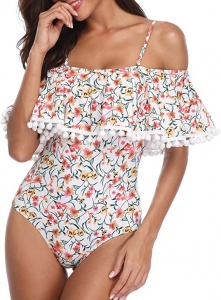
Swimsuit Cover-Up
The shade offered on most of the boats is minimal so be sure you have a swimsuit cover-up with you to keep your shoulders from burning!
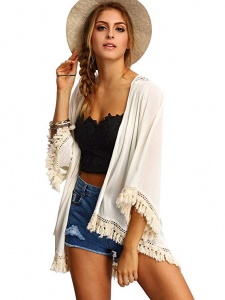
You’ll end up wearing flip-flops all day, every day while vacationing in the Philippines. Be sure to pack at least one pair! We love Ipanemas because they are incredibly comfortable but also durable so one pair will last you a long time!
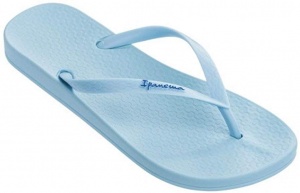
Water Shoes
In order to visit the most spectacular waterfalls on Cebu Island in the Philippines, you’ll be required to do a few water crossings and scramble up some slippery rocks. Be sure to pack some shoes with traction that you don’t mind getting wet. If you don’t want to invest in water shoes , an old pair of tennis shoes will work as well.
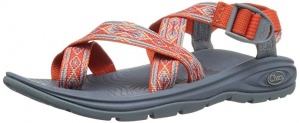
Beach Towel
While some hotels and boat tour operators in the Philippines will provide you with a beach towel, many will not. Best to pack your own. Pack a beach towel that is large enough to lounge on, lightweight enough to carry around with you on excursions, and that will dry quickly.
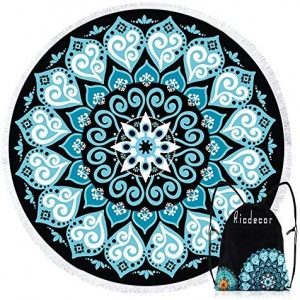
If you’re a snorkeling fanatic and can’t wait to see the underwater wonders of the Philippines, you may want to consider bringing your own gear. Most boat tour operators have snorkel masks available for rent but they have been through some wear and tear. You’ll love how well this full-face mask fits your face to keep the water out.
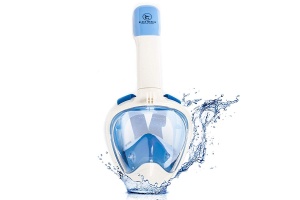
Pool Floaty
You’ll undoubtedly have a few epic photoshoots while enjoying the crystal clear water and sandy beaches in the Philippines. Bring a fun pool floaty to add a little something extra to your photos and to keep you entertained for hours at the beach!
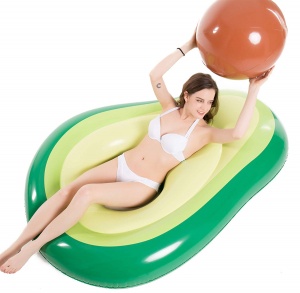
Other clothes to pack for the Philippines:
- Plenty of denim shorts and tanks
- Dresses for a night out on the town
- A light sweater for chilly evenings
- Dressier shoes if you plan to go to a fancy restaurant or nightclub (they often have a dress code)
- One pair of underwear per day
- One pair of socks per day
Accessories to Pack for the Philippines
Cross-body bag.
The Philippines is a reasonably safe country but, as with anywhere else, opportunistic crime can happen. Pack a crossbody bag and keep your hand on it when traveling in crowded areas of larger cities. Stay up-to-date on safety and travel advisories here .
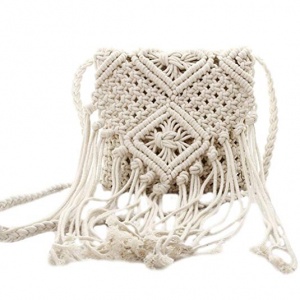
No matter how much SPF you slather on your face, you’re still bound to get more rays than you want in the Philippines. Bring a cute hat with a wide bill to keep your face protected throughout the afternoon.
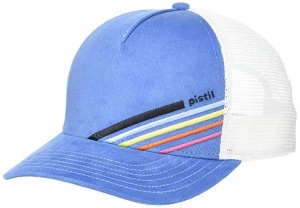
Keep those eyes protected from the harsh rays with a pair of polarized sunglasses and a sturdy case to keep them safe in your carry-on!
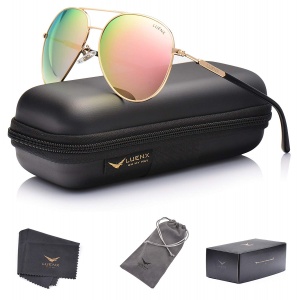
Don’t Forget to Pack
- Your passport!
- To purchase your return ticket in advance.
- Sign up for a credit card with no international transaction fees (we use and recommend the Chase Sapphire Preferred credit card ).
- Get a debit card that will refund your ATM transaction fees (we use and recommend the Charles Schwab debit card).
- Call your credit card company and release your card for use in the Philippines.
- A backup credit card in case you have any issues with your primary.
- To upgrade to an international cell plan during the month that you’ll be gone.
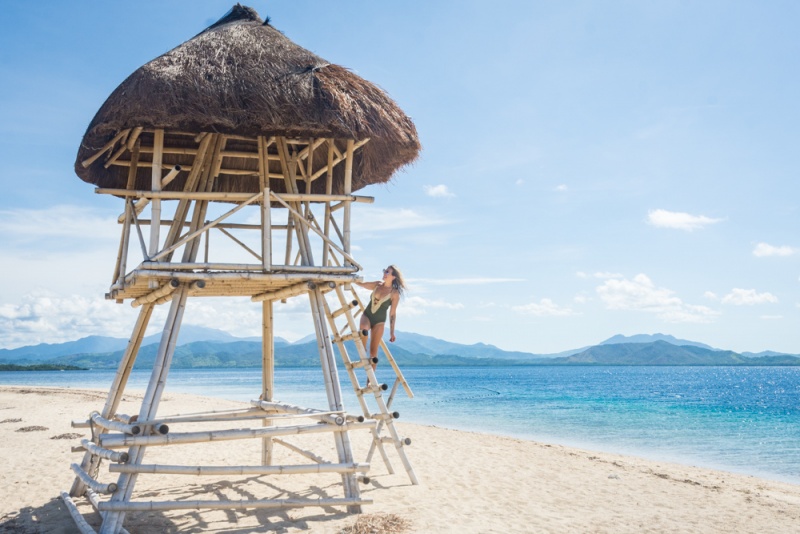
Are we missing anything important? Let us know in the comments so we can add it to the list!
Share this on pinterest.
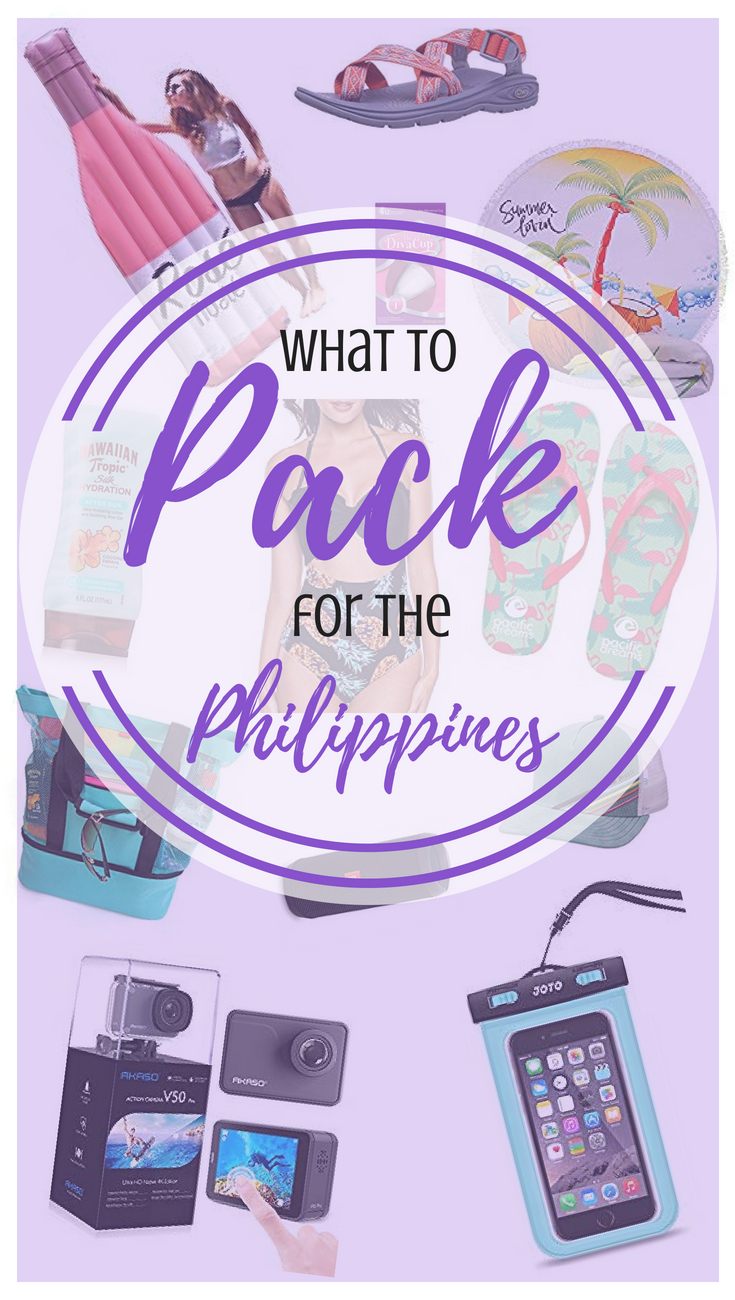
About the Author:

Val grew up in Portland, Oregon but moved to Oahu on a whim back in 2013. She sold her house and all of her belongings and bought a one-way ticket. Since then she’s taken two around-the-world trips and has visited 60-ish countries while living out of a duffel bag. Val started documenting the Wandering Wheatleys travels back in 2013 as a way to update friends and family about her whereabouts and to relay humorous daily interactions. The only readers were her mom and her mother-in-law but that didn’t stop her! These days you’ll find Val dreaming up future trips, creating new travel content, managing a team of amazing travel enthusiasts, and chasing around her two adorable but naughty kids.
View all posts
Related Posts
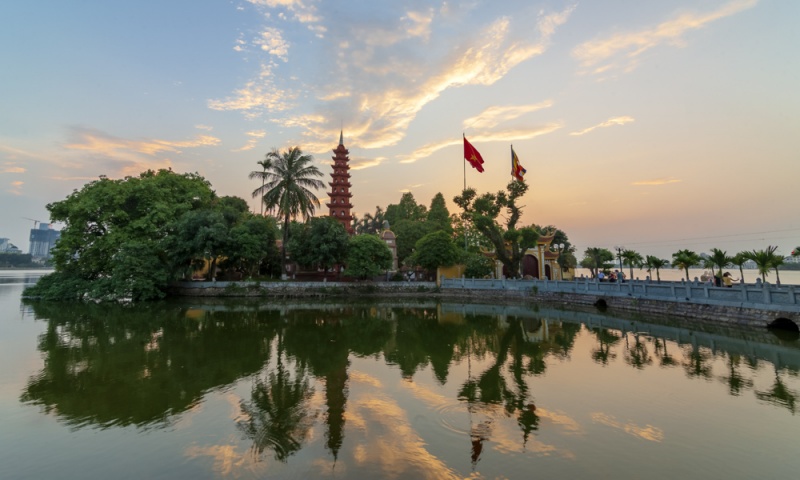
Where to Stay in Hanoi, Vietnam: The 10 Best Hotels
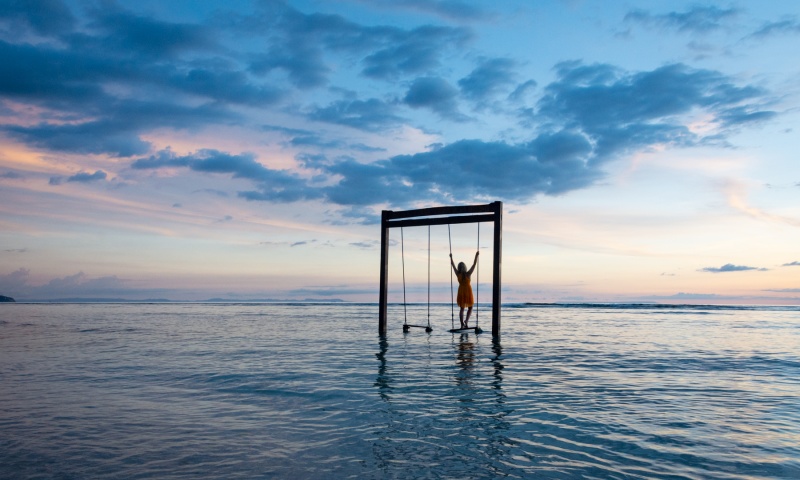
9 Incredible Things to do on the Gili Islands, Indonesia
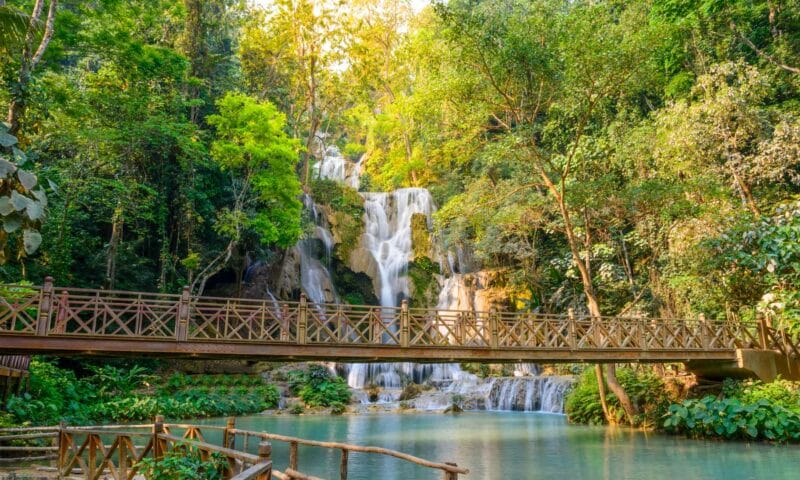
The 12 Best Boutique Hotels in Luang Prabang, Laos
2 thoughts on “the perfect philippines packing list”.
what size dry bag do you recommend?

That all depends on what you plan on carrying in it. We have a 20-liter dry bag because we’re often carrying around our DSLR camera and an extra lens. In general, I would recommend between 13-20 liters.
Leave a Comment Cancel Reply
Your email address will not be published. Required fields are marked *
Download my free iPhone Photography Guide

The Ultimate Philippines Packing List for 2024
The Philippines is a beautiful country with lots of activities to do, which is why it is important to know what things to pack to add to your Philippines packing list for your trip. I have traveled to the Philippines 9 times and I feel like I have the packing down and have created the ultimate Philippines packing list. Whether you are one month in the Philippines or just a few days, this Philippines packing list has you covered. There are a lot of things to keep in consideration when packing for the Philippines. I have listed my favorites and some of my necessities for this ultimate Philippines packing list.
This site contains affiliate links to products. We may receive a commission for purchases made through these links. Support my blog here
The Ultimate Philippines Packing List – Planning a trip to the Philippines
If you are still planning your trip be sure to read about some of my favorite spots in the Philippines. Planning a road trip? Check out my favorite road trip essentials .
- Travel Tips for the Philippines
- Philippines Tourist Spots
- Top 10 Places to Visit in the Southern Philippines
- Cebu Tourist Spots
- Bohol Tourist Spots
- Cebu Itinerary
- Philippines Itinerary – The Perfect Philippines Backpacking Itinerary from 2 weeks to 1 month itinerary for the Philippines
- Bohol Man Made Forest
Travel Essentials for the Philippines – what to pack for a trip to the philippines
Philippines packing list | documents and money.
Furthermore, be sure to check out your local government for information about visas or medical documents needed for your Philippines packing list. These are your Philippines travel essentials and must-haves.
- Passport Valid for at least 6 months
- Visa – If your country requires a visa , be sure to check with your local Philippines embassy
- Cash, cards are not available to use unless you happen to be in a mall or Hotel . Be sure you have at least 2,000 Pesos at the end of your trip since it is required for the airport tax
- Travel Insurance
- Printed Travel Itinerary – Include Hotels , Flights, Rentals, etc. The Internet is not as easily accessible in the Philippines so it’s important to keep hard copies or screenshots/photos of your important documents.
Philippines Packing List | Activities to Pack for the Philippines
You can’t go to the Philippines without doing some sort of water activities. These are some necessities for your Philippines packing list when it comes to outdoor and water adventures in the Philippines.
- Dry Bag or Waterproof Case
- Water Bottle
- Reef Friendly Sunblock
- Backpack or Day Pack – Keep a lock on your back to prevent theft.
RELATED: Best Snorkel Fins for 2018
Philippines Packing List | What to bring to the Philppines Accessories to Pack for the Philippines
These are some of my favorite accessories to add to my Philippines packing list.
- Hat – Optional, I prefer not to carry one.
- Sarong or Scarf
- A folding fan to fan yourself or block the sun in your face
- Crossbody Bag – These are best to avoid pickpocketing since they are close to your body and hard to rip off.
Philippines Packing List | Electronics
Obviously, you want to pack your favorite electronics on the trip including in my Philippines Packing List. Keep in mind the humidity will fog up your camera lens so be sure to have a weatherproof or waterproof camera .
- Voltage Converter or Transformer (Step down fransformers are for items that are 110V only)
- Type C Adapter – For items that read 110-220V
- Chargers, Cords, and Cables
- GoPro or an Action Camera that is waterproof
- Travel Camera of Choice
- Unlocked Phone – You can get a sim in the Philippines
Philippines Packing List | Medication and First Aid Kid
In general, food poisoning is a very common thing to have in the Philippines. One of the reasons is the water is not drinkable unless you are a local who is used to it. Moreover, cleanliness in the kitchen is not as strict as other countries. Additionally, I suggest you check in with your doctor or travel nurse about what medications or vaccinations you may need before traveling to the Philippines.
- Travel Pill Container – Consolidate all your travel medication into one easy to go travel pill container
- Dramamine or some form of Anti-Motion Sickness, it’s quite easy to get sick on the buses and the boats
- Imodium or some form of Anti-Diarrheal – If you don’t get these, just look for loperamide at the local pharmacy
- Pepto Bismol
- Excedrin or Headache Medication
- Insect Spray
- Allergy Medication
- Travel Scissors
- Any other personal medication you need to bring
You may also be interested in: Must Eat Foods in the Philippines
Personal Necessities to Pack for the Philippines
Ultimately, these are items I suggest you keep on you at all times for your Philippines packing list. Additionally, keep in mind that a lot of bathrooms in the Philippines may not have everything you need to feel clean and fresh.
- Hand Sanitizer
- Toilet Paper – You can steal a roll from your hotel , but toilet paper is not common in public bathrooms all over the Philippines unless you are at the mall. Toilet seats are not common as well, so be prepared to hover squat.
- Purchased Water – Water is not safe to drink in the Philippines so be prepared to buy bottled water. Make sure the caps are sealed because sometimes people will refill used bottles. If you have a life-straw, it might be helpful to use.
- Deodorant Wipes
- Your favorite cosmetics – For makeup, I would stay minimal since the humidity will sweat it right off of you.
- Tampons or Menstrual Cup – Tampons are hard to find especially in rural areas.
- Shampoo Bar – Consider a Shampoo bar for travel to reduce your liquid amount to bring on your carry-on that will also last you quite a long time.
Clothes to Pack for the Philippines
Firstly, you should pack things that dry quickly and are light and breathable.
- Cover up or wrap dress
- Cotton Dresses
- Chiffon Tops
- Ziplocks or Wet Bags for packing Wet or Damp Swim Suits
Shoes to Pack for the Philippines
- Sandals or Water Shoes – Preferably a sandal with an ankle strap that you can jump into the water without losing them and avoid walking on sharp rocks. I prefer Saltwater Sandals .
- Light Sneakers – Something breathable, light, and less likely to smell.
- Fancier Sandal
- Flipflops – To fit in the Philippines, you have to have a pair of flipflops or thong sandals
Finally, there you have it, the Ultimate Philippines Packing List. Additionally, I am sure I will continue to add to this Philippines packing list as I remember or add more things necessary.
Travel to Philippines Checklist
If you are looking for a downloadable travel checklist, grab my free travel checklist below.
Philippines Packing List FAQ
What do i need to go to the philippines.
You might be asking yourself what do I need to visit the Philippines, well this information varies from country to country, however the packing list I’ve provided above gives you a pretty great breakdown of some things you might need for your next trip to the Philippines.
Whether you are spending 1 month in the Philippines or longer, this list has everything you need to consider before your trip or move to the Philippines.
How to plan a trip to the Philippines?
This can vary, I do have to say if this is your first time visiting the Philippines, then I highly suggest that you check out my Philippines Itinerary post. It will give you a basic idea of how to plan your travels to the Philippines and get your started.
How much money to bring to the Philippines?
On average, I would say be prepared to have about $50 per day. You could definitely live on less than that, however, finding a place to exchange money or ATMs can be difficult especially if you are not in the big cities. I suggest always carrying more on hand but make sure to keep them all hidden in different locations. You will never know when you will need money.
Things to Buy from the Philippines
This depends on the type of traveler you are. I would always suggest buying dried mangoes, pearls, and just overall enjoy yourself with food and drinks.
Philippines Bucket List
In short, I would say include Palawan, Manila, Cebu, and Bohol. These will be the bucket list locations for any first timer in the Philippines.
Is there Pepto Bismol in the Philippines? where can I buy Pepto bismol in the Philippines?
No, at least I haven’t seen it. I would suggest instead purchasing Loperamide at the local pharmacy in the Philippines if you happen to have any stomach issues. This is similar to Imodium.
What not to bring to the Philippines
Obviously do not bring any drugs or weapons into the country. I would suggest not bringing in any fruits, vegetables, or meat as this leads to many insects and diseases that are commonly not allowed in entering any new country. To see a more detailed list, visit the Philippines Embassy website .
What to bring in the Philippines from USA
If you happen to be traveling from the US to the Philippines and you want to know what to bring in the Philippines or what items to get for family and friends in the Philippines, I highly suggest getting some American chocolate, coffee, lotions like Cerave or Nivea (these are popular in the Philippines), clothes, shoes, bags, and so much more. These are all depend on the people you are bringing them for. My dad sometimes asks me to bring some clothing items and American spices.
Did you like this post? Feel free to support this blog by donating a small cup of coffee.

What do you think about this Philippines Packing List? Leave your answer in the comments below.
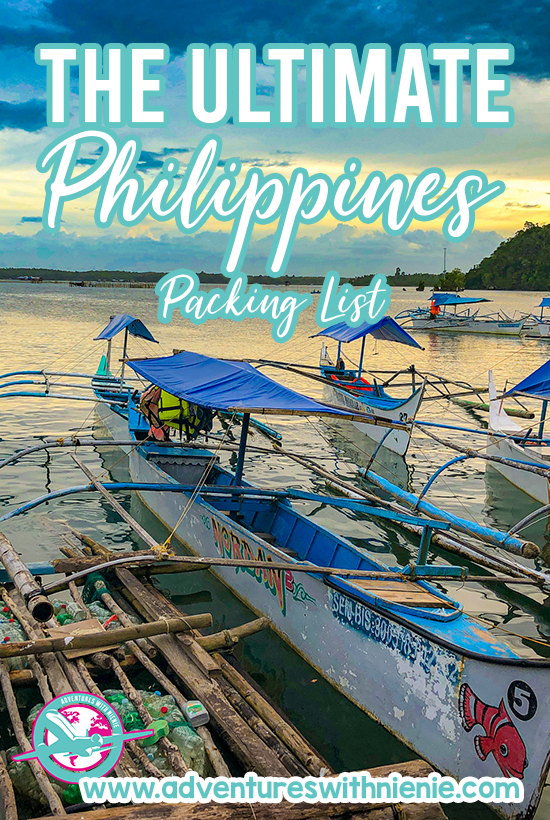
Hey, I'm NieNie, also known as Stephanie – a California native of hapa heritage (an American with a mix of Korean and German) with an enduring love for travel. Transitioning from my expat life in South Korea to embracing the experience of living in Germany, while also frequenting visits to my family in the Philippines, I'm documenting my adventure as a plus-size woman immersing herself in diverse cultures. Join me on Adventures with NieNie for travel tips, cultural insights, and inspiring stories from South Korea, the Philippines, and Germany. Let's embark on this adventure together!
Similar Posts
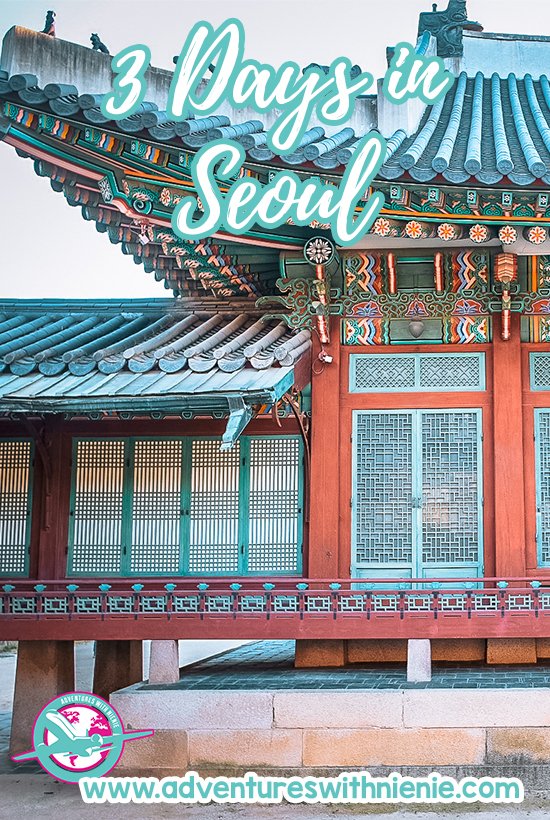
3 Days in Seoul | The Perfect Seoul Itinerary
If you’re looking for an amazing city to explore, look no further than Seoul! With its rich culture and history, there’s always something new to see and do in this…

Best of Southeast Asia
As an avid traveler to Southeast Asia, especially the Philippines, I have a huge bucket list of places I wish to visit in Southeast Asia. Above all, Southeast Asia is…

Myeongdong Shopping Street | What to Buy
If you are looking for the best place to shop in Seoul where you can get everything you need in one place, I present you Myeongdong Shopping Street. In this…
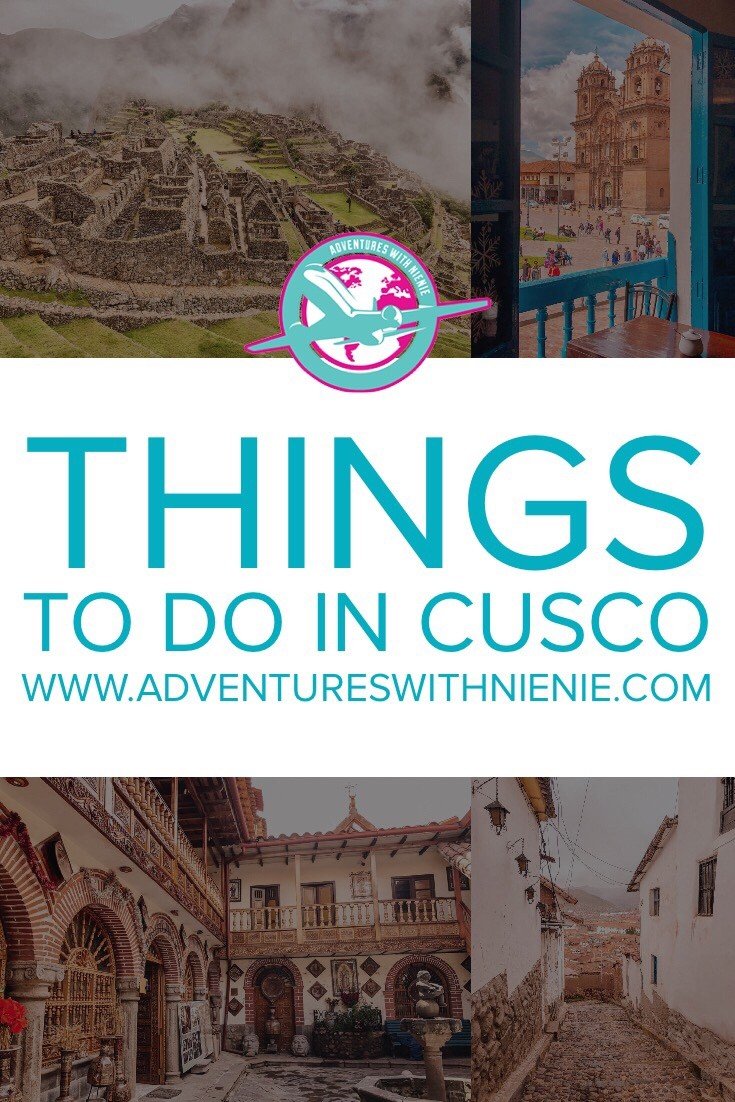
Things to do in Cusco for First Timers
Peru is a wonderful country to visit with a lot to do. There are many cities to explore like Lima and Cusco. Cusco is one of the most popular destinations…

20 Must Have Travel Apps for 2018
What I love about travel today is being able to do things so much more efficiently and affordably with 20 of these top travel apps that you should check out.

The Best Cameras for Bloggers for 2023: Your Guide to Choosing the Right Camera
Are you looking for a new camera to help take your blogging to the next level? If so, you’re in luck! In this blog post, we will discuss the best…
12 Comments
This is such a great list. It’s been over 15 years since I last visited the Philippines and at the time I wish I would have bought Travel Insurance. Definitely, wish I would have brought a cover-up or wrap dress when I was at the public pool.
Packing lists are always helpful because its easier to keep track of what you need. I love this list it is so detailed and seems very versatile for packing for island-type destinations. Thanks for sharing!
I haven’t visited the Philippines yet. Its so unfortunate most people get some sort of food or water poisoning. I would recommend bringing a water filter, and I always like bringing a few of my favorite teas for breakfast too.
I’ve gotten sick on even their filtered/bottle water. I have brought a lifestraw, but the water doesn’t do too well with my stomach haha.
Packing lists are always helpful! Do you think attaching a pdf checklist that is downloadable would help some visitors?
Packing lists are always useful especially for travelers like me who tend to overpack. And this destination specific packing list is amazing. The Philippines is on my list and I’m sure your packing tips would eliminate the hassle of packing. Thanks for sharing.
Philippines is on my bucket list so when I do go I will make sure to refer to this list. No matter how many times people travel, they are bound to forget something so having this kind of list will only help! I will also make sure to read your other Philippines articles!
Haven’t gone to the Philippines yet, but I adore this list! Bucket list location so now I know exactly what to pack.
I haven’t been to the Philippines yet, but I love this list! Bucket list location for sure so now I know exactly what to pack.
I so want to visit Philippines been planning from so long! this packing list gonna be a savior, bookmarking it. thanks for sharing.
I should admit I never thought about Philippines as a travel destination. Philippines has never been on my radar (I don’t know really why ?). However, thanks for sharing your list as packing can be stressful, requires a lot of planning, and the existential crisis that comes with condensing your life’s necessities into a 20-inch box 😉
In order to travel with ease, I tend to pack little. These are some essential things which we should not forget while traveling. Philippines is the great place to chill out with amazing track routes on Bohol and sailing through Palawan. Thanks 🙂
Leave a Reply Cancel reply
Your email address will not be published. Required fields are marked *
Privacy Overview
Terms and Conditions - Privacy Policy
A travel & food blog
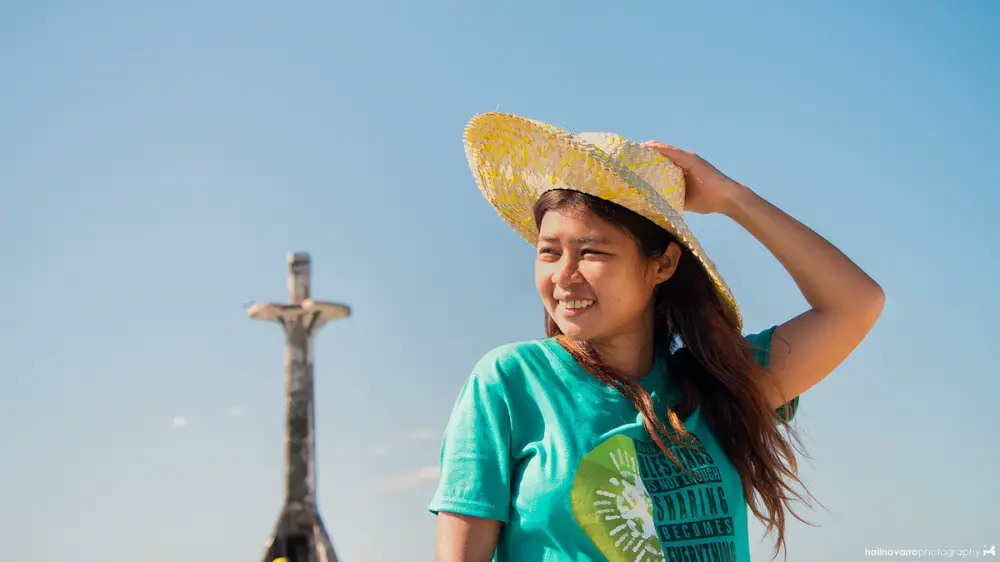
PHILIPPINES PACKING LIST: Essentials You Need to Bring
Are you planning a holiday to the Philippines? The Philippines is a beautiful country composed of over 7,000 islands, and so it draws a lot of international tourists who want to explore its tropical islands, waterfalls, and landscapes. Here we’ve compiled an essential Philippines packing list for your visit!
Weather in the Philippines
Dress code in the philippines, shorts and tees, swimsuit cover-up, lightweight jacket, flip flops and sandals, beach towel, shawl or sarong, sun hat/bucket hat, reef-friendly sunscreen, insect repellant, universal travel adapter, action camera, first aid kit, reusable travel bottle, waterproof cell phone case, a philippines packing list, travel tips, what to read next:.
Before anything else, it’s essential to know about the weather in the Philippines. There are only 2 seasons here: wet season and dry season . The dry season runs from November to May and the wet season is from June to October.
Due to its location in the Pacific Ocean, a lot of typhoons pass through the country especially from June to the ber-months. This can affect tours and boat activities and definitely something that you should note in case your visit falls on these months.
Please enable JavaScript

Unless there are typhoons or low pressure area, expect the temperature to remain hot and humid.
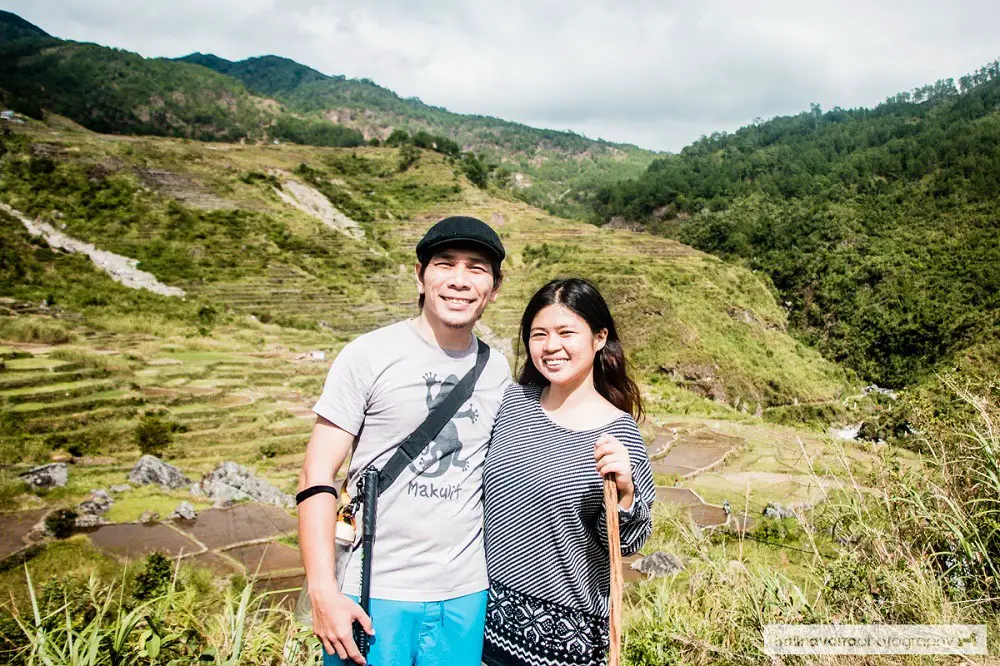
The Philippines’ population is mostly Catholic. There are no restrictive laws about clothing, so you are mostly free to wear whatever is comfortable to you.
That saying, when you’re in coastal towns like El Nido or Coron , it’s best to wear cover-ups for your swimwear when you are not in the beach. It’s usually frowned upon to wear bikinis when you’re in public transport or other places.
Clothes, shoes, and accessories
You want to bring clothes that are comfortable to wear in a tropical weather, such as tees made from cotton or linen which are light and breathable materials. A pair of shorts is also something that you will use everyday.
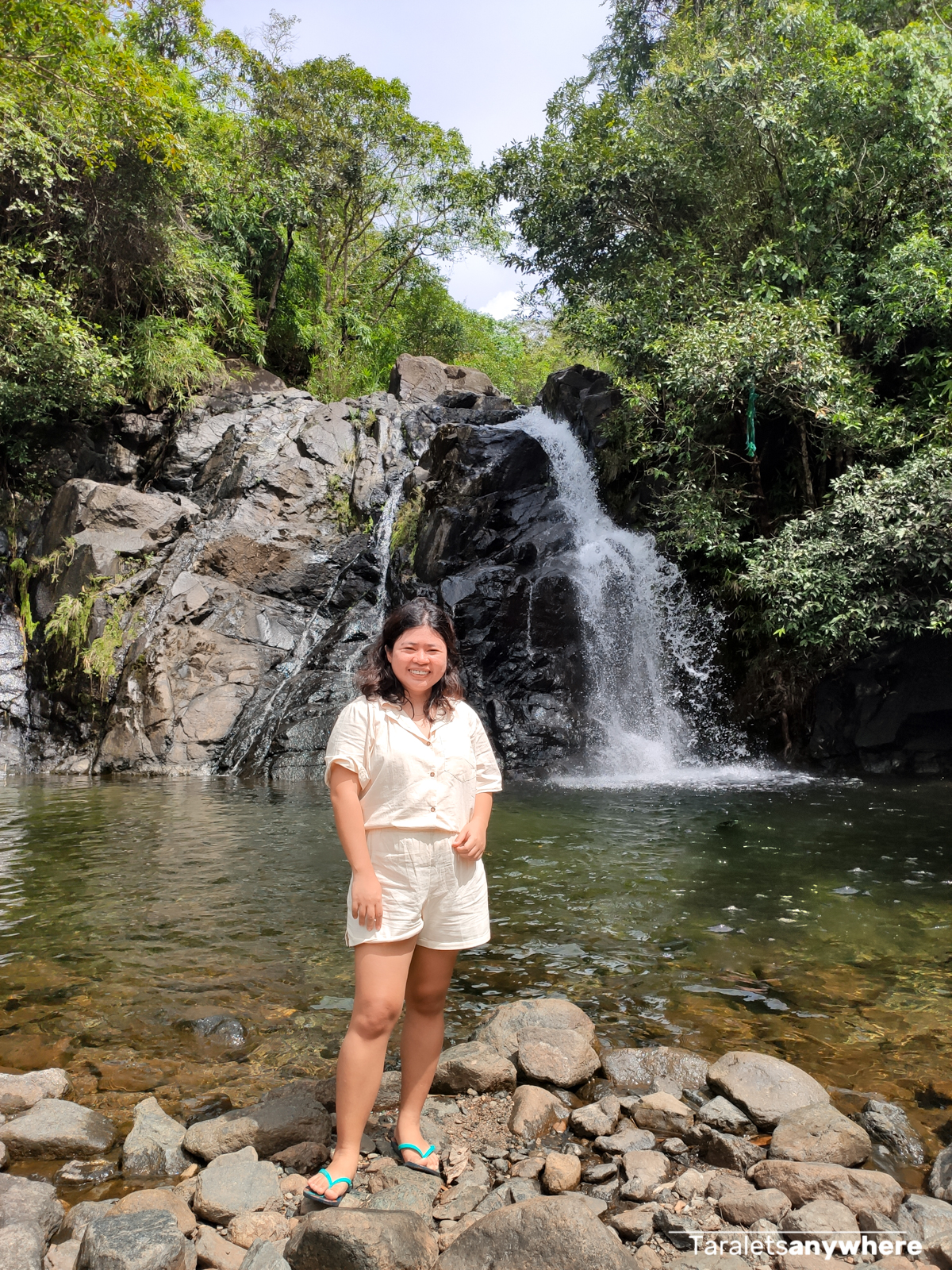
The Philippines has a lot of beaches, so make sure to bring the best bikinis for your trip! For men, a pair or two of quick-drying board shorts will do.
If you plan on snorkeling or diving, you might also want to wear a rash guard so your skin is protected underwater.
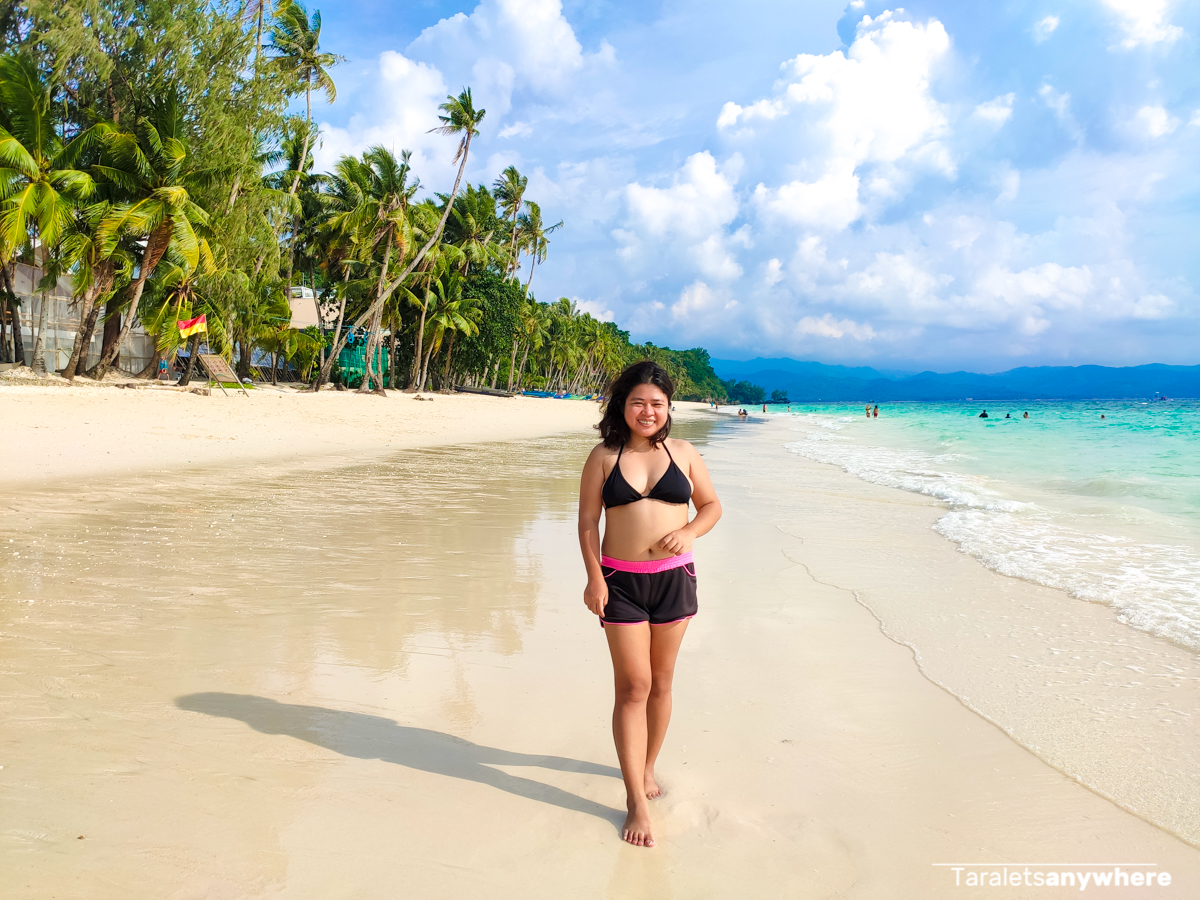
You need a swimsuit cover-up for when you’re going from your hotel to the beach.
It’s unusual to see people wearing bikinis on public roads, and some towns actually have regulations against it. A cover-up is also useful to help protect your skin during island hopping tours.
For women, a casual flowy dress is a must-have as it’s suitable for the weather and can be a great outfit to wear outdoors.
Bring a lightweight jacket like a microfleece for when you’re at the airport or indoors with heavy airconditioning. You can also wear it at night in cool places such as Tagaytay , Baguio , or other mountain towns.
It isn’t an exaggeration to say that all you need is a pair of flip flops will exploring the Philippines. You can use it at the airport, cities, and especially islands.
You can also bring trekking sandals if you plan on hiking to rice terraces, mountains, or waterfalls in the jungles. Walking shoes for touring towns and cities is optional.
There is no need to be formal here unless your itinerary includes fancy hotels and fine dining. So feel free to leave your high heels and boots at home!
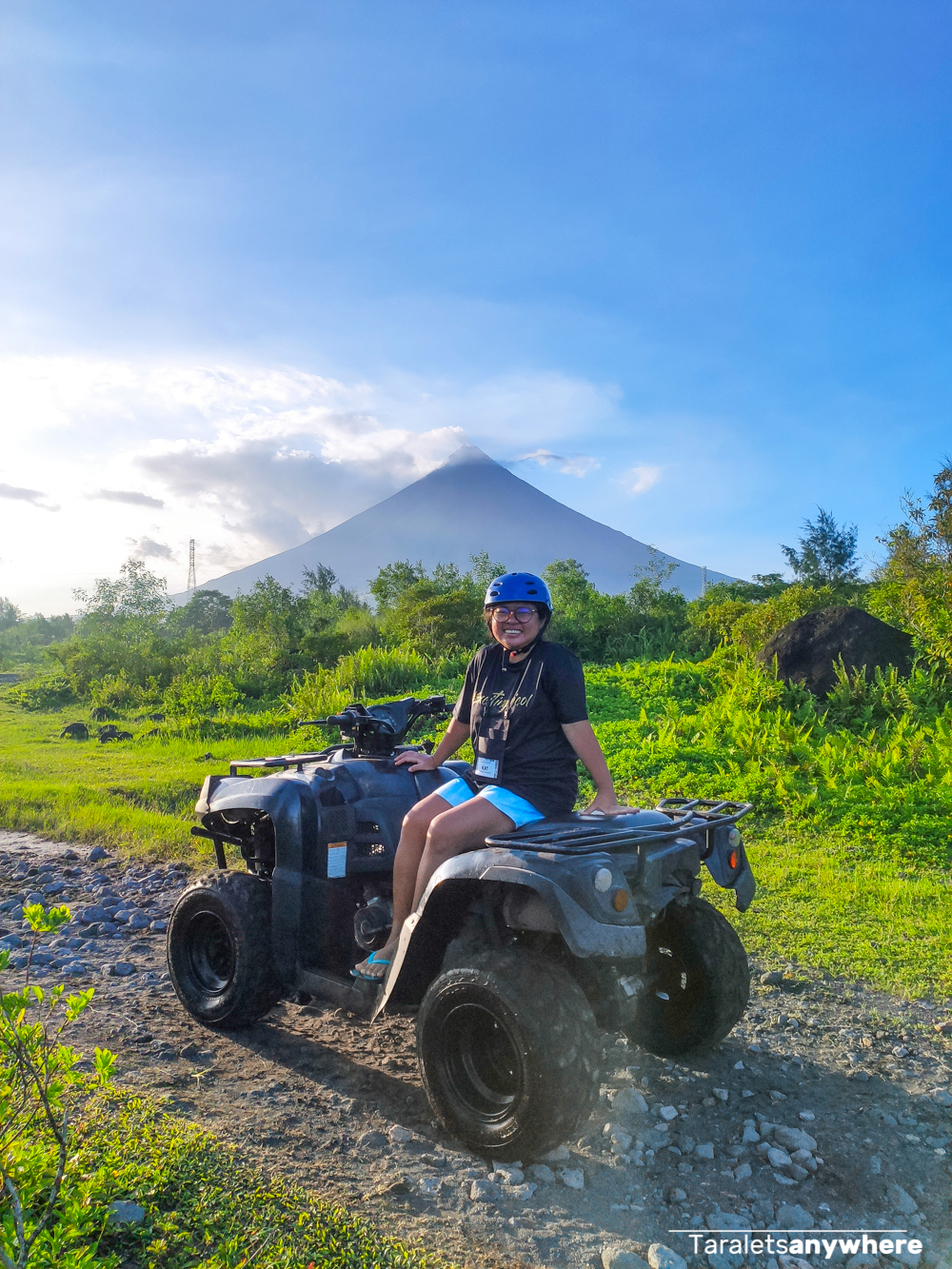
A lot of popular beaches in the Philippines are famous for their fine sands, but you’ll most likely encounter rocky shores as well. For that, a pair of aqua shoes comes in handy. This will help protect your feet from sharp rocks or corals.
Tourist destinations with rocky shorelines often have rental for aqua shoes, but bringing your own will ensure a comfortable fit — and will likely save you a few bucks too.
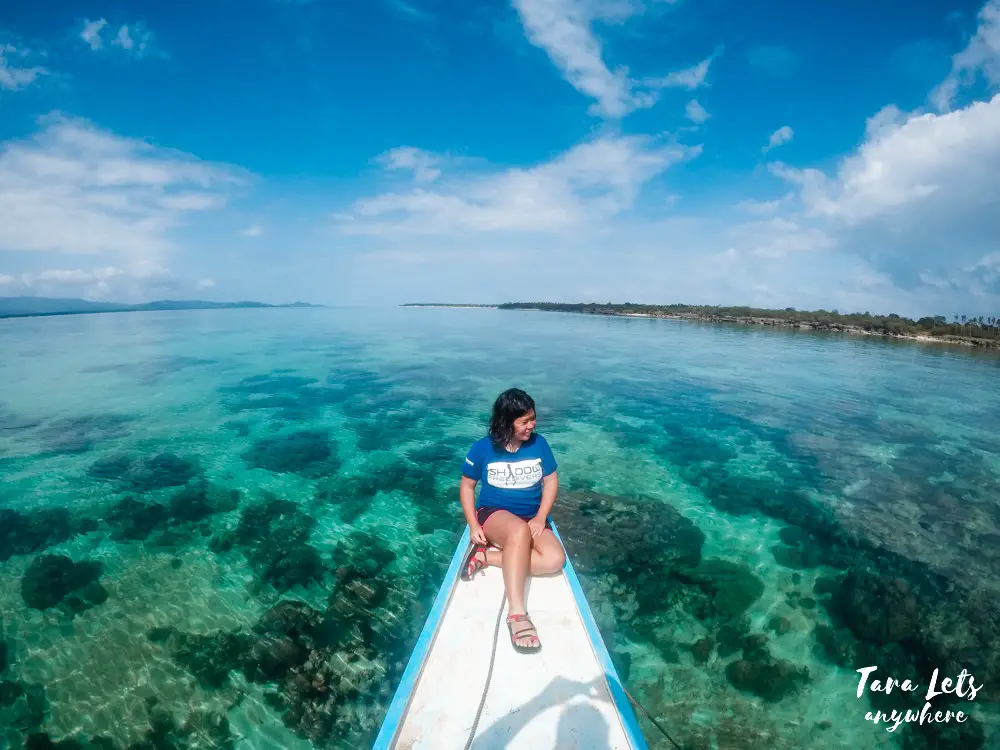
Some hotels and resorts will give you a beach towel, but it’s more likely that you’ll need to bring your own. A microfiber towel is great to have since it’s practical, light, and quick drying. A round beach towel is also popular since it can be used to lounged on the sand (and looks really cute in pictures!).
If you’ve traveled around Southeast Asia, then you know how versatile a shawl or sarong is! You can use it as a cover up, as a drape when it gets cold at night, or even as an emergency skirt. It’s also light and can easily fit in your luggage.
The Philippines is a tropical country and you can’t underestimate how hot summer days can be. As such, sun hats or bucket hats are essential things to pack when visiting the Philippines. A sunhat will give extra protection against harmful rays of the sun and will also keep your head cool when out and about.
You will need to apply sunscreen wherever you go in the Philippines! Not just in islands, but also when you’re in the mountains — in high elevations, you can get sunburn even when it’s cloudy.
You can buy your sunscreen when you arrive in the Philippines, but one thing you should know is that a lot of the skincare products have whitening ingredients, since fair skin is still a beauty standard. As such, it’s best to bring your own reef-friendly sunscreen. This way, you can choose one that’s right for your skin and also help in keeping the ocean life safe from harsh chemicals. A sunscreen with SPF 40 or 50 is recommended for maximum protection for the skin.
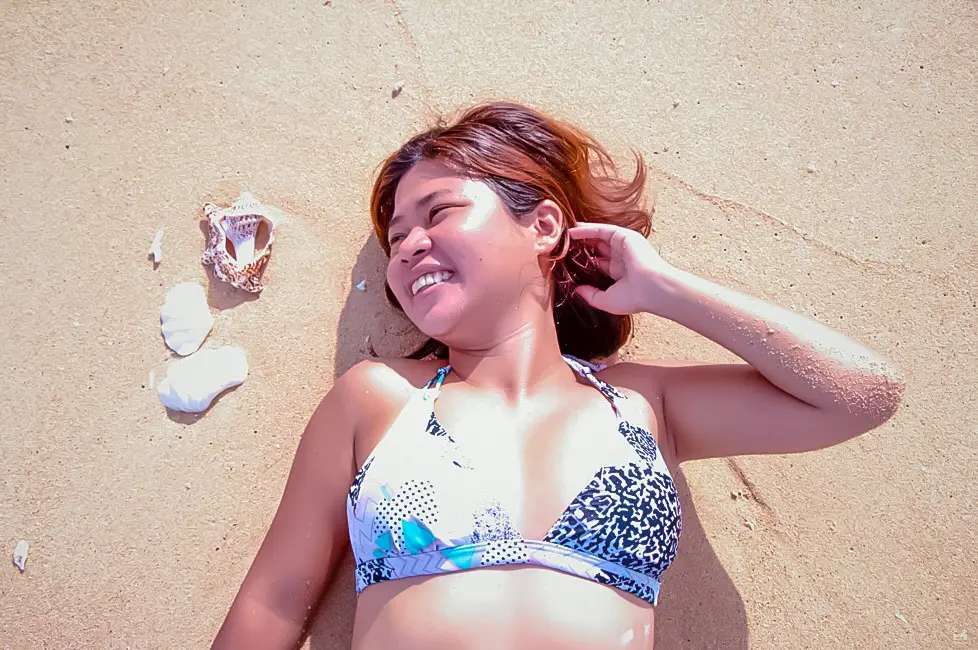
An insect repellant is a must in some destinations in the Philippines, especially those located in less developed areas including towns, mountains, and beaches.
You want to avoid getting mosquito bites which can lead to dengue. Some beaches are also home to niknik (sand flies), which cause itchy bites that can last for weeks.
Most women in the county use sanitary pads instead of tampons, so the latter can be hard to come by unless you’re shopping in mall supermarkets. It’s best to bring your own set of tampons for your convenience.
Electronic gadgets
A universal travel adapter is a nifty item to have. Electric outlets in the Philippines have a standard voltage of 220 V, which is similar to countries of America, China, Japan, and those in Europe.
Even if you come from a country with similar outlets, it’s still best to bring a travel adapter so you can charge your gadgets at the same time. You also won’t have to worry if you find yourself in an accommodation with limited sockets available.
It’s practical to bring a power bank with you to ensure that your phone is never low on battery. It’s also helpful since there are areas in the country with no stable electricity, so you might find yourself with limited charging resources.
You need an action camera to capture the moments when you’re visiting gorgeous beaches, swimming with turtles , spotting whale sharks in the wild , or otherwise swooping in the middle of a sardine run , or doing something adventurous like riding the topload of a jeepney to a mountain town.
GoPro remains the best choice when it comes to action cameras. Don’t forget to bring a water case so you can use it underwater and filters to keep it fog-free especially given the humid weather in the country.
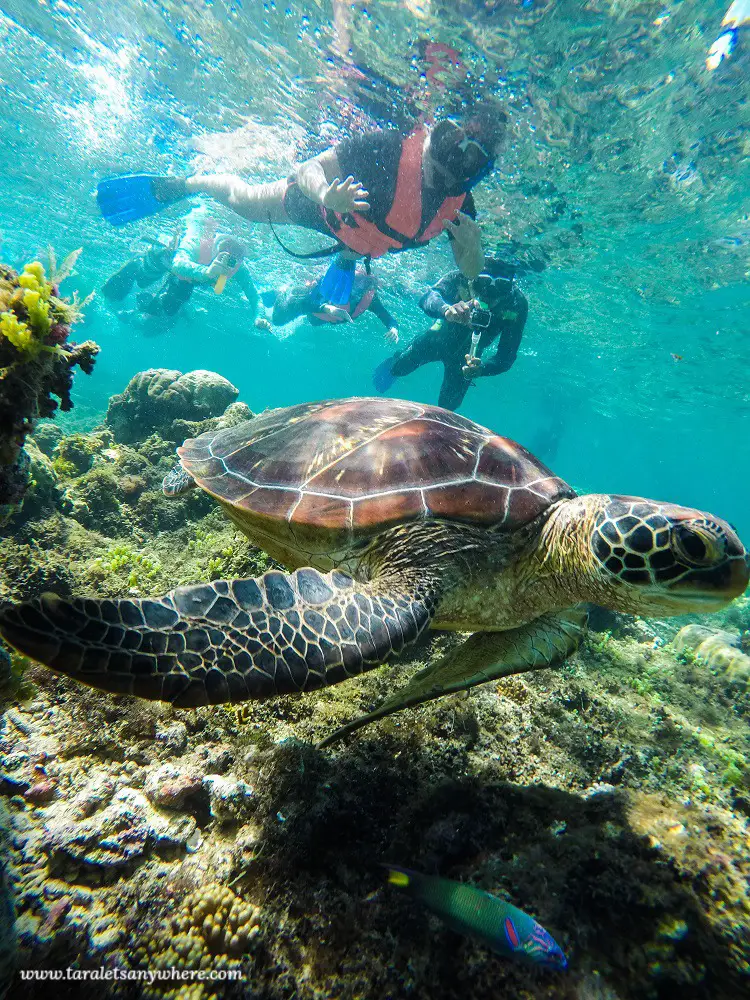
Miscellaneous
A first-aid kit is a must-have everywhere you go, so you can immediately attend to small wounds and injuries. In the Philippines, some places are quite far from established hospitals so having a first aid kit with you is helpful and can give you peace of mind.
Keep yourself hydrated at all times with a reusable travel bottle. You can easily refill it in your hotel or resort, and restaurants.
Unfortunately, the Philippines is one of the largest contributor of plastics and most people buy plastic bottles on tours. You can do your part in keeping plastic usage to a minimum by bringing your own reusable travel bottle that you can use throughout your trip.
A dry bag is useful all-year-round. You can use it to store your valuables when visiting waterfalls, going on boat tours, or doing other activities that might get you wet. It’s also incredibly useful during the rainy season so your phones and other electronic items won’t get drenched in the rain.
A 5-liter dry bag is enough for storing valuable items. If you’re carrying bulky items such as heavy cameras, go for the 10-liter dry bag instead.
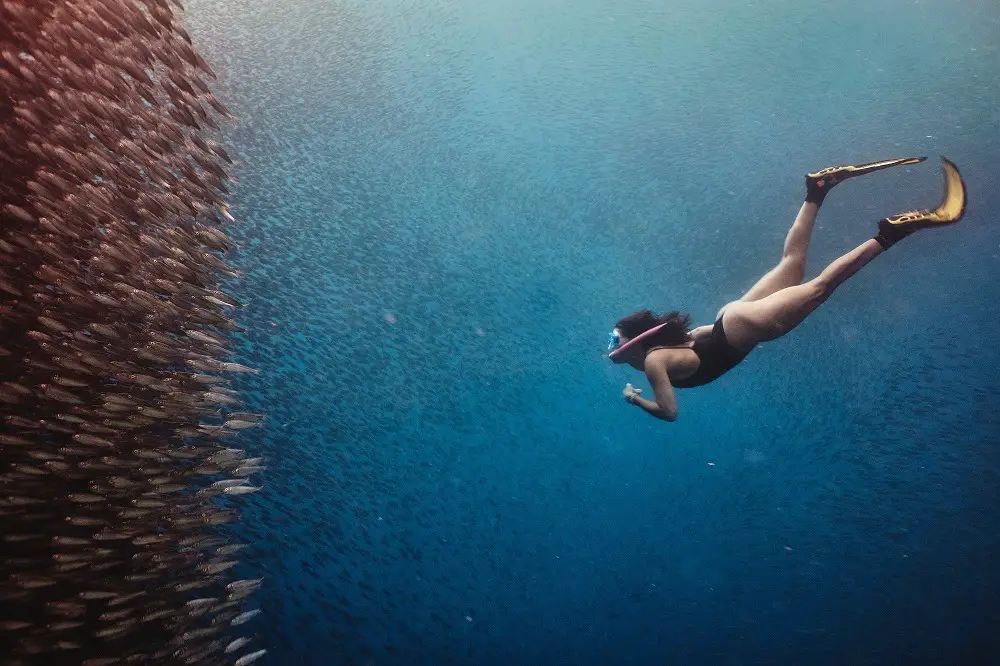
As an alternative to a drybag, a waterproof cell phone case is a must if you want to bring your phone on adventurous activities.
A lot of places in the Philippines are on a cash basis and you’ll mostly likely need small bills and coins to pay, so a coin purse is necessary to have.
Here’s a sample packing list for a 2-week trip to the Philippines .
Here are tips for packing for the Philippines:
- The Philippines is a warm country, so you can do with a light luggage even if you’re staying for weeks or months. Don’t worry about laundry service as it’s cheap and is easily available in most hotels and resorts.
- Bring essential toiletries like toothbrush, toothpaste, soap, shampoo, and sunscreen. Any other liquid that you need can be bought once you arrive.
- We’ve discussed what to bring, now here are things you don’t need to bring: jewelry, lots of make up, and snorkel and/or fins (these are bulky and can easily be rented in most island hopping attractions).
Do you have anything more to add to this Philippines packing list? Let us know in the comments section below!
Planning a trip to the Philippines? Check out these guides!
- First-Timers Guide to the Philippines
- Best Places to Visit in the Philippines
- Things You Need to Know Before Visiting the Philippines
- Is the Philippines Safe to Visit?
- Off-the-Beaten-Track Destinations in the Philippines
- Suggested 2 Weeks Itinerary in the Philippines
- Suggested 3 Weeks Itinerary in the Philippines
- Philippines Packing List
- Must-Try Food in the Philippines
- 21+ Top Adventures in the Philippines

Katherine Cortes is a long-time backpacker and a freelance writer/editor. She likes beaches, snorkeling trips, and relaxing staycations (preferably with bath tubs!).

Leave a Reply Cancel reply
Your email address will not be published. Required fields are marked *
Save my name, email, and website in this browser for the next time I comment.
Notify me of follow-up comments by email.
Notify me of new posts by email.
This site uses Akismet to reduce spam. Learn how your comment data is processed .


The Essential Philippines Packing List: What To Wear In The Philippines
Last Updated on March 16, 2024
The Philippines is one of the most underrated countries in Southeast Asia. Made up of over 7,000 islands, this tropical paradise is filled to the brim with white sand beaches, the clearest water you’ve ever seen, and island hopping tours in every corner you’ll find yourself exploring . During my two weeks in the Philippines , I realized there were a lot of things that I either wish I had packed or at least received a heads up about * coughs * I’m looking at you, toilet paper.
With this carefully curated Philippines packing list, you’ll find everything you need to feel comfortable, healthy, and eco-friendly while traveling around some of the most beautiful islands in the world. While planning what to pack for most other places can be rather seamless, the Philippines requires a little bit more elbow grease because you will seriously underestimate the amount of time you’ll be in transit on a ferry, plane, boat, or jeepney. While you pack you’ll want to keep mobility in mind, but this packing list is full of all the essentials you’ll need, in addition to the regular ol’ packing list items, so since I did all the dirty work for you, you can kick back with your cup of coffee, download my printable Philippines packing list, and be fully prepared for your trip!
Scroll to the end of this post for more Philippines travel resources like the best time to visit , travel tips , and more!
This post contains affiliate links for the products I mentioned, but as always, all opinions are my own. I make a small commission , at no extra cost to you, when you make a purchase or booking through these links. This helps to support this space and keep me blogging, which I am so extremely thankful for.
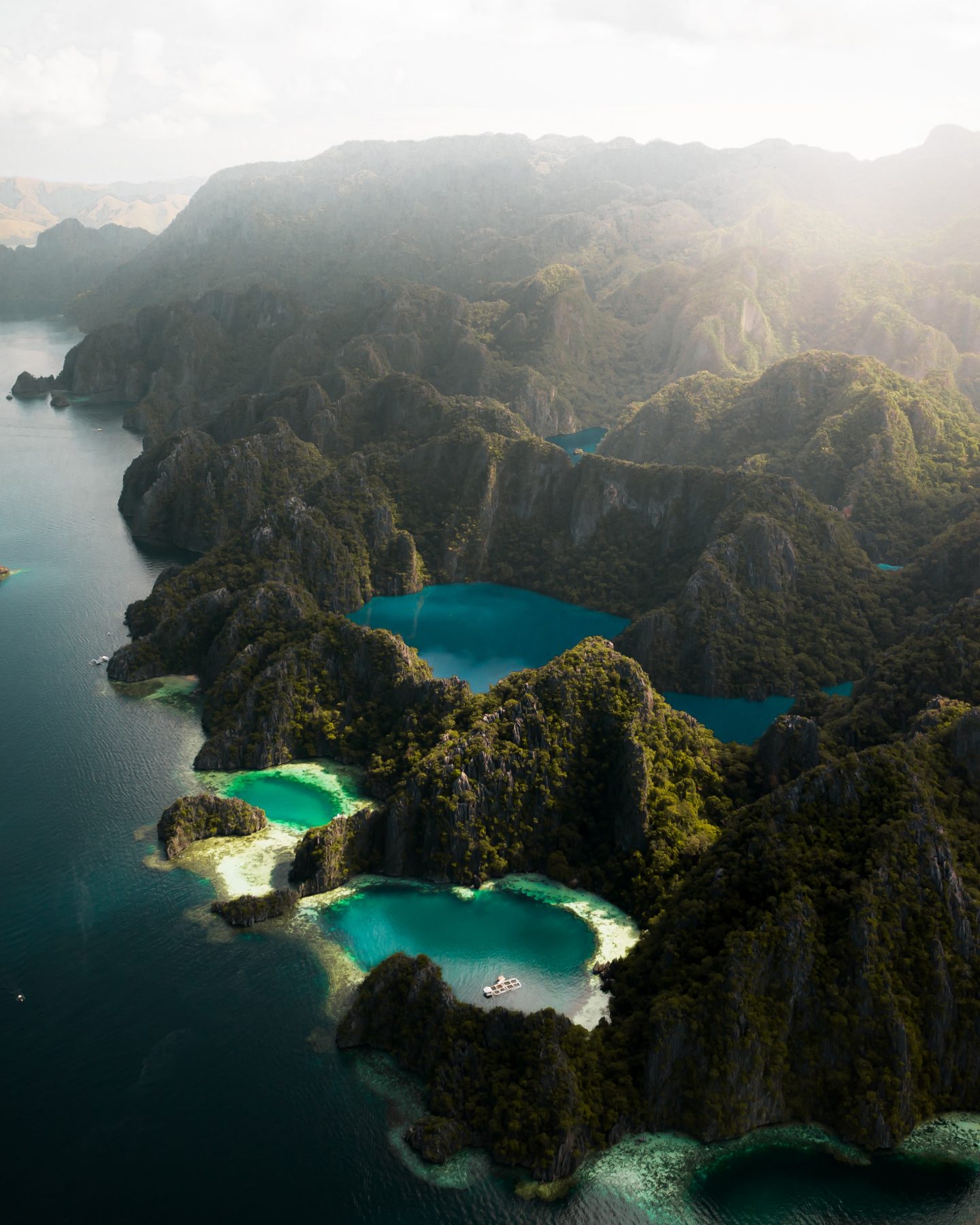
What To Pack Your Things In
One of the most important things you want to consider when packing for the Philippines is mobility. I’ve noticed most Philippines itineraries involve a lot of movement between islands, so there is a large chance yours does as well. Aim to pack light and you’ll be grateful for the lack of weight when you’re lugging bags on and off scooters, jeepneys, ferries, planes, and tricycles. The first thing to consider is what kind of bag to bring because that will dictate how and what you pack.
– CARRY-ON SIZED BACKPACK
I have used the same carry-on backpack since my first solo international trip to Bali in 2017 and that is my beloved Osprey Fairpoint 40L Backpack . This bag has been THROUGH IT. I have been nothing but rough on this bag and it still looks brand new. It’s my favorite for more adventurous trips because it’s small enough to be taken as a carry-on, so no need to check a bag, but big enough for any length of trip. While most backpacks are a pain to take traveling because they open from the top, this bag opens just like a suitcase ! It’s one of my favorite aspects of the backpack along with its laptop sleeve and a small zippered pouch for wet/dirty items. Most importantly, Osprey bags come with a lifetime warranty!
– CARRY-ON SUITCASE
If a backpack isn’t your style or you aren’t moving around as much, a carry-on suitcase is a fine alternative if that’s your travel style. Personally, I never travel with a suitcase unless I am going on a city break because most of my trips are fast-paced and adventurous, so a suitcase doesn’t always fit into that mix, but when and if I do, you’ll see me with an AWAY Suitcase . They really thought of it all when they created this suitcase: built-in luggage locks, detachable portable charger, and even a laundry bag comes with this suitcase. It’s worth buying if you’re on the market for a nicer suitcase and will fit aboard most budget or smaller airlines, which the Philippines is kind of known for.
A dry bag is one of the most essential items on this Philippines packing list. This is nice to have for island hopping tours and beach days in general. If you don’t have one you can pick one up after you arrive. You’ll be able to pick one up for very cheap at any beach or more touristy spots.
– PACKING CUBES
Traveling and packing cubes are like peanut butter and jelly. These are a universal staple in any and all types of travelers’ arsenal because they make organization and outfit selection a breeze. I try to whittle all my clothing options into these three cubes and it helps me save space and travel lighter.
– TOILETRY , LAUNDRY , + SHOE BAG
Look. I never thought I would see the day where I became passionate about a toiletry bag, or any travel bag for that matter but, here I am. My go-to bags for travel are by Tom Bihn , a company based out of Seattle. The Spiff Kit is my field-tested and approved toiletry bag no matter if I am camping, backpacking, on a city break, or even doing something local like spending the night at a friend’s apartment. This bag comes with four refillable containers for creams, lotions, etc., a hook so you can hang this bag anywhere, and a durable design unlike a lot of other bags. I like to pack reusable silicone bottles for my shampoo and conditioner. After a trip, I wash this and it looks brand new!
One of the biggest game-changers for my travel set-up was a laundry bag . If you only use packing cubes, then you end up mixing your dirty and clean clothes together, so I use a laundry sack to keep organized. I also recommend bringing along a bag or some type of shoe bag so your dirty shoes don’t get all over your clothes. These seem frivolous, but they actually do wonders for keeping your bag clean and organized.
What To Wear In The Philippines
I like to pack fabrics that are better suited for hot weather like cotton, linen, hemp, or wool. These are going to help you keep cool and wick away sweat to avoid rashes. Trying to pack for tropical destinations can be a maze, especially if you haven’t encountered this type of weather before, but keep those fabrics in mind and it’ll guide you in the right direction once you start packing.
Year-round, the Philippines’ temperatures will stay in the lower to mid-80s, and depending on the month, the humidity can be actual h*ll on Earth . I visited at the end of March, going into April, and I couldn’t believe how hot it was, so here is what I recommend so that you are comfortable. Don’t forget other essentials like bras and underwear… I don’t think anyone forgets to pack those, but you never know.
– LIGHTWEIGHT DRESSES
One of the best ways to beat the heat in the Philippines is by packing lightweight dresses. Most notably they’re breezy, but since you’ll be spending most of your time at the beach, on an island, underneath a waterfall, etc., these strip on and off easily and dry fast too which is why they’re a perfect clothing item for this Philippines packing list. They’re one of my favorite things to wear in hot weather and it makes putting a cute outfit together a piece of cake.
– TOPS & BOTTOMS
Because the weather in the Philippines can get so hot, packing loose-fitting and breezy outfits are key. For tops, you want to be comfortable, but you also don’t want to scream “tourist”. These Patagonia Capilene tops and tank tops are perfect for exploring in hot weather. Since they’re made from 100% recycled polyester, they’re going to dry quickly and they won’t stick to your body when you start sweating. Button-up tops are also a great option since you can get a good breeze rolling through because trust me, you’ll want that.
When it comes to traveling around the Philippines, you want to pack bottoms that are adventure-friendly, quick-drying, and comfortable. My favorite shorts for travel are Patagonia Baggies . They’re an all-around bottom no matter what you’re doing. They’re made from recycled nylon, which will dry quickly under the sun, and you can get them with a longer or shorter inseam depending on your preferences. Did I mention that they also have POCKETS? Ground-breaking, y’all. I wear the black and Joya blue colors, and every year I look to add another to my collection.
An honorable mention is some type of long sleeve top or bottom because for me I always get ROASTED by the sun before I tan. As much as you’ll want to stay in a tank top and shorts, protecting your skin is just as important, and if you do burn badly, you’re going to want something to cover it up so that you don’t make things worse. These travel pants are water repellant, protect skin from harsh UVA/UVB rays, and are made from quick-drying nylon.
– LIGHTWEIGHT RAIN JACKET
Even if you’re visiting the Philippines in the dry season, there is always a chance of rain, especially if you’re in the northern regions closer to Manila. Since this is more of a just-in-case item for your packing list, you’re going to want something that packs down super small and doesn’t take up much space. This rain jacket does exactly that. It’s tried and true in the outdoor community , so you know you can trust this to keep you dry and cool in those afternoon storms in the tropics. I wish I would have had something like this when I went on my whale shark tour because we got drenched on the way back to the guesthouse and the ride was freezing.
– TRAVEL SHOES
For the Philippines, you’re going to want walking shoes that are comfortable and will keep your feet cool. I wore sandals for the entirety of my trip for convenience sake, and because tennis shoes didn’t match any of my outfits, but I’ve heard amazing reviews for All Birds shoes for travel. However, my best recommendation is a comfy pair of sandals. You’re going to be hot and wet for the majority of your trip, so travel sandals make the most sense.
When most people think of going to the beach or a tropical place in general, the first thing they think to pack are flip flops, but that is the biggest mistake you could make while gathering what to pack for the Philippines. When you’re swimming underneath waterfalls , flip flops are going to slip right off your feet and float to the surface of the water, so you want something more robust like a water shoe or sport sandal. My favorite sandals are Xero Shoes because they’re light but sturdy and roll into the size of a gracious stuffed crepe, taking up minimal space in my bag. I’ve also heard a lot of great things about the Teva Tirra Sandals for travel.
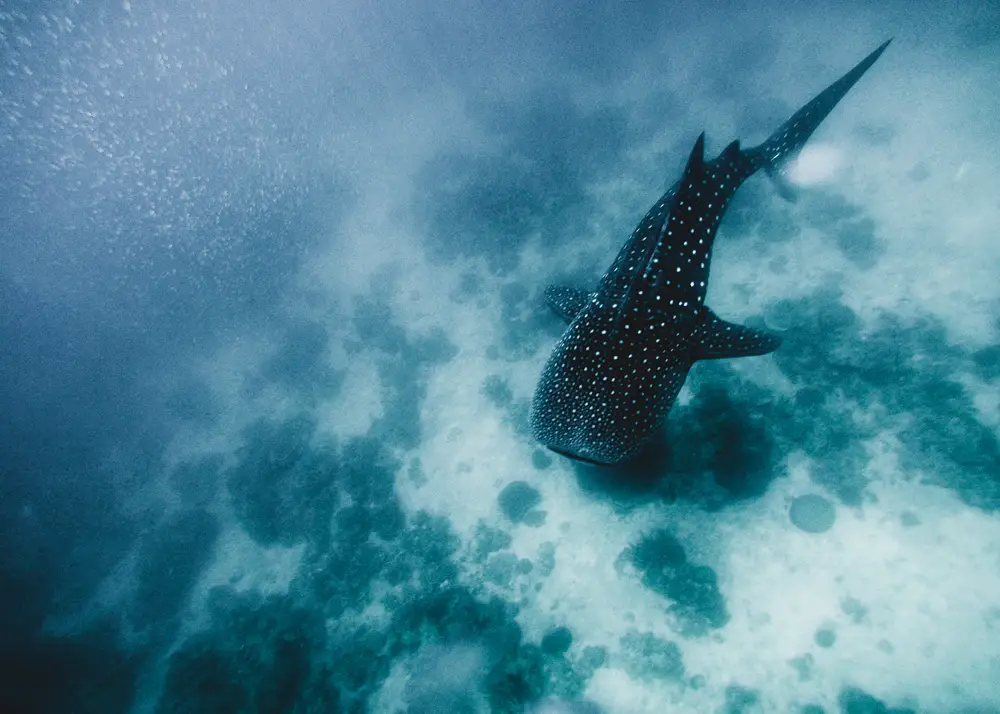
Toiletries, Laundry, & other Essentials
I am a huge believer that a proper selection of toiletries can improve your trip tenfold. I don’t list absolutely everything on this list because some are self-explanatory, but these will help you feel clean and fresh on your trip to the Philippines.
– SHAMPOO & CONDITIONER
Any of your favorite hair care products are more than likely unavailable in the Philippines so I recommend packing what you use at home. I had to buy a 2-in-1 shampoo and conditioner bottle at a 7/11 and let me tell you, I will never risk running out of shampoo abroad again. I prefer to pack solid hair products because they last a long time, get through airport security seamlessly, and will never leak all over your toiletry bag. I know LUSH is one of the few stores that sell these in a physical location, but I buy my favorite solid shampoo bar and solid conditioner bar online. My genetics gave me chronic dry-scalp three-hundred out of the 365 days in a year, so those are my essentials so I don’t bring any snow to the tropics if you’re catching my drift.
– CASTILE SOAP
Ladies and gentlemen, I present to you the swiss army knives of soap, Dr. Bronner’s 18-in-1 Castile Soap . I don’t know what I was doing before I had this in my life because this stuff cleans ANYTHING and EVERYTHING . What I love most about this soap is that it’s extremely concentrated so very little goes a very long way , making it last for the entirety of your trip. No more soggy soap bars, just this small bottle of magic. I mainly use it to wash my face, body, and my laundry. It’s come in handy in so many different ways and I never travel anywhere without this stuff.
– MOISTURIZER
A gentle and lightweight moisturizer is crucial for hot weather, especially when you’ll be layering sunscreen over the top of it. OSEA Atmosphere Cream protects my skin against the harsh UVA/UVB rays in the Philippines and helps protect my skin from sun damage.
– TOOTHBRUSH/TOOTHPASTE
This one is a little self-explanatory. Be sure to pack your toothbrush and toothpaste to keep your mouth so fresh n’ so clean .
– STAINLESS STEEL RAZOR
It’s the 21st century… There is no reason to be sleeping on stainless steel razors STILL. Why spend fifteen to twenty dollars a month on crappy plastic razors that suck after one use when you can buy a quality stainless steel razor that will last for the rest of your life? I’ve had mine for almost five years now and it’s one of the best decisions I’ve made. Replacement blades are cheap and I get a consistent, clean shave every time. The only caveat with these is that TSA will take these if you try and take them on your carry-on bag, coming from someone that had to travel through Iceland looking like a caveman.
– DEODORANT
You’re going to be sweating roughly 99% of the time in the Philippines. The weather is hot and the humidity is brutal, so pack your favorite deodorant to keep you stench-free. My Booda Organics deodorant is the ONLY plastic-free and natural deodorant I’ve tried that actually works. Seriously, I’ve tried probably every single option on the planet AND suffered through extreme BO, so this stuff is FIELD-TESTED.
– MENSTRUAL CUP
Ladies before you go, “ that’s weird “, and completely rule out the LIFE-CHANGING aspects of a menstrual cup , hear me out. I used to be in the same boat thinking that this was the most bizarre thing, but after trying it out over five years ago, I have never gone back to disposable feminine products. What made such an impact on my travels with this product is that I can wear it for up to 12 hours and never worry about leaks. So those days where I am island hopping, jungle trekking, or out on other adventures aren’t interrupted by my cycle. Also, disposable feminine products are difficult to find in the Philippines, so you want to make sure you pack this for peace of mind.
Different cups work differently for everyone, but this is a great one to try out because Saalt donates 2% of their revenue towards providing reusable period care options, educational scholarships, and life skills training for women in communities all over the world.
– TRAVEL TOWEL
Another one of the most important things to pack for the Philippines is a microfiber travel towel . This one folds up into a tiny square and dries almost instantly, making it perfect for beach days, snorkeling, or hiking.
What To Pack to Stay Safe & Healthy
There are a few things that I simply will not travel without for a fail-safe and extra reassurance in unfamiliar places. I used to never travel with travel insurance or a travel credit card, and now that I have experienced the ease of having both of these things with me, you’ll never catch me traveling without them.
– TRAVEL INSURANCE
This is the most important thing that should not be left off your Philippines packing list. I never travel anywhere without travel insurance . You really think you’re indestructible until your luggage is lost, flights are delayed, or something worse. My trusted travel insurance, and a cult favorite for fellow travelers, is World Nomads ! I love that they’re affordable no matter the trip duration and they cover a wide variety of activities and incidents.
– TRAVEL CREDIT CARD
One of my favorite ways to save money for traveling is by using my Chase Sapphire Preferred Credit Card . Every purchase earns me points to use for booking future trips or cashback. The card comes with plenty of perks but what I am most grateful for when I travel are protection for trip cancellation and delay, flight interruption, lost luggage reimbursement, and car rental insurance. I wish I would have traveled with this card sooner because it has changed the way I travel!
– SUN PROTECTION
Some of the most important items that you should pack for the Philippines all involve sun protection because the sun exposure here is intense. I recommend some type of baseball cap or a sun hat to protect your face, minimum SPF 30 sunscreen , and lip balm with SPF .
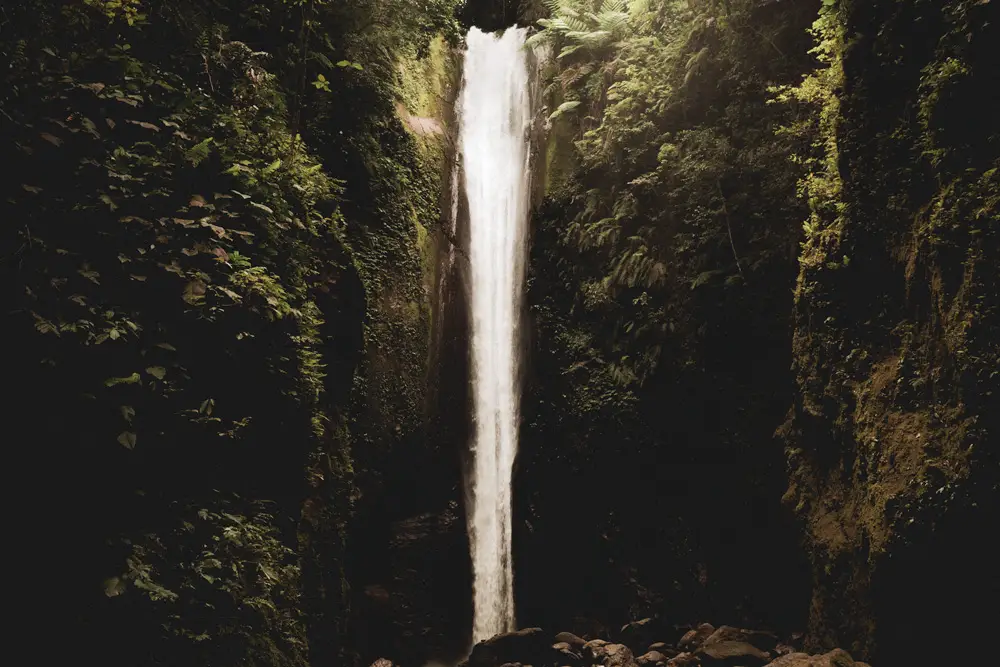
What To Pack To Stay Connected
In a perfect world, I could travel cell phoneless, with only a film camera in my bag, hanging onto each fleeting moment, but nowadays I have to run this blog and that comes with lugging around an obnoxiously heavy camera bag. You don’t need to have a bunch of different gadgets for the Philippines, but here are some travel-friendly essentials I think you’ll want to bring with you.
– POWER ADAPTER
The last thing you want to happen when you arrive in the Philippines is to get to your hostel or guesthouse and not be able to plug in any of your electronics because you didn’t pack an adapter. Other countries and regions have different plugs, so you want to make sure your adapter is compatible and can handle the wattage differences. This universal adapter has always worked wonders for me and it keeps me covered no matter where I travel to.
– EXTERNAL BATTERY
My cellphone is one of the most important items on a packing list because it allows me to stay connected. However, when I am pulling up language translations, maps, travel documents, directions, email confirmations, etc., my battery tends to run out faster than I’d like, so an external battery is super important. When I travel, my phone feels like a safety net in some ways, so keeping it charged gives me peace of mind, especially as a solo female traveler .
I am one of those pretentious-looking people that travel with their overpriced Macbook , but I have to run my blog when I travel so that’s why this is necessary for me to lug it along, unfortunately. Looking down the road, I would love to get something a little lighter like a Chromebook . It weighs so much less and it’s way more under the radar than a shiny, and rather large, Apple computer. That apple logo is like a massive bat signal for “steal me”. Chromebooks are pretty inexpensive and kind of come with built-in theft protection because let’s be honest, who is going to steal a computer worth only like $200? Probably like two people.
When I am looking to pack for any trip, my camera is always the first thing on my packing list. These days, you don’t need a fancy camera by any means because the quality of smartphone cameras is kind of insane, but I am someone that enjoys photography, so I always bring my DSLR Camera . With inter-island travel, something small and lightweight is going to be your best friend, coming from someone that lugged around a 20-pound camera bag for two weeks. The Canon G7 X is an amazing little camera for land adventures. I recommend a GoPro for all your island and water excursions.
Be sure to pack extra batteries, charging cables, lenses, and your favorite travel tripod !
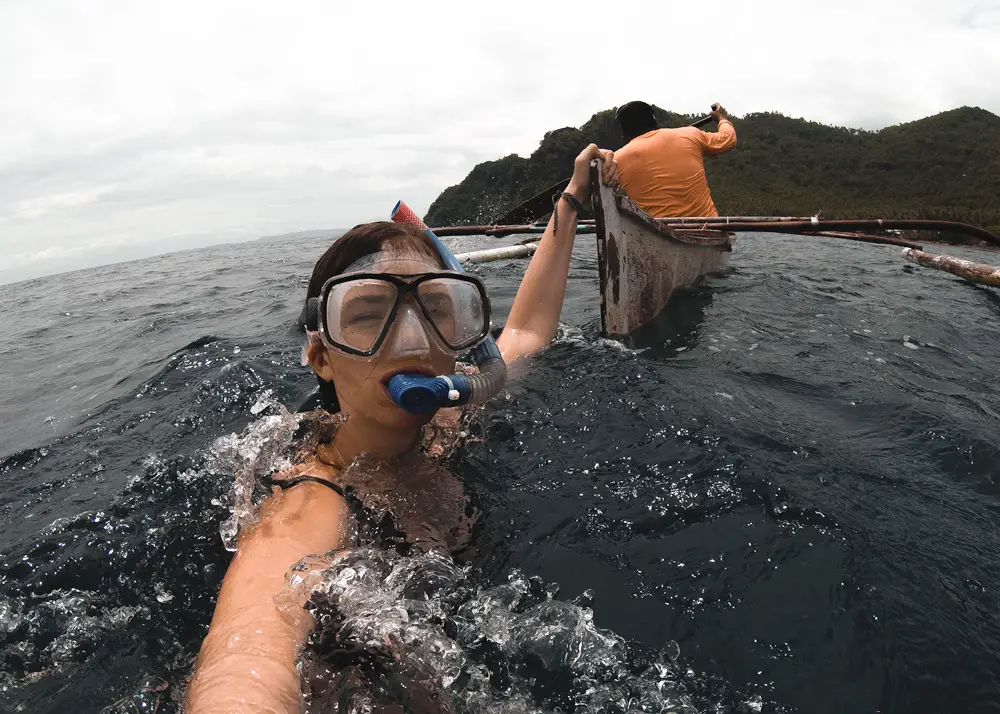
What To Pack To Reduce Waste
One of the number one things I try to prioritize when I am traveling is to reduce as much plastic waste as I can. On this Philippines packing list, it shows up mainly in the toiletries, but there are endless ways to help travel more plastic-free. When I was traveling around, I found these products to be the most useful during my ventures. A lot of countries in Southeast Asia suffer so much from plastic pollution already, so any small bit helps.
– REUSABLE WATER BOTTLE
Since tap water isn’t potable in The Philippines, you may be tempted to just buy the overwhelmingly cheap plastic water bottles at marts. Please do not do this. Not only does The Philippines doesn’t have reputable trash services , but constantly buying plastic water bottles is extremely wasteful and once you throw them away they are highly likely to end up in the ocean because of illegal dumping by trash collectors or open dumpsites near waterways. It’s a serious issue and to help keep these islands clean, please consider bringing along a reusable water bottle to refill at your hostel or guesthouse before you head out on your day’s adventures.
– REUSABLE UTENSILS
Going along with the same theme of the reusable water bottle reusable utensils will also come in handy if you pick up takeaway, munch on some street food, or if you want to avoid using a plastic utensil set elsewhere. These came in handy quite a bit for me since I ate A LOT of fruit on my trip so having my own wares was great for being able to eat on the go!
– REUSABLE STRAW
One of these bad boys comes in handy for travel as a whole, but with the number of fresh coconuts you’re going to be drinking, you’re going to want a reusable straw . This way you can avoid wasting plastic and be more sanitary. Most vendors separate the coconuts and the straws after collecting them and the skeptic in me wants to think that they don’t reuse the straws, but I can never be sure, so pack this to avoid the headache and possibly the germs.

More essentials to help you reduce waste in the Philippines.
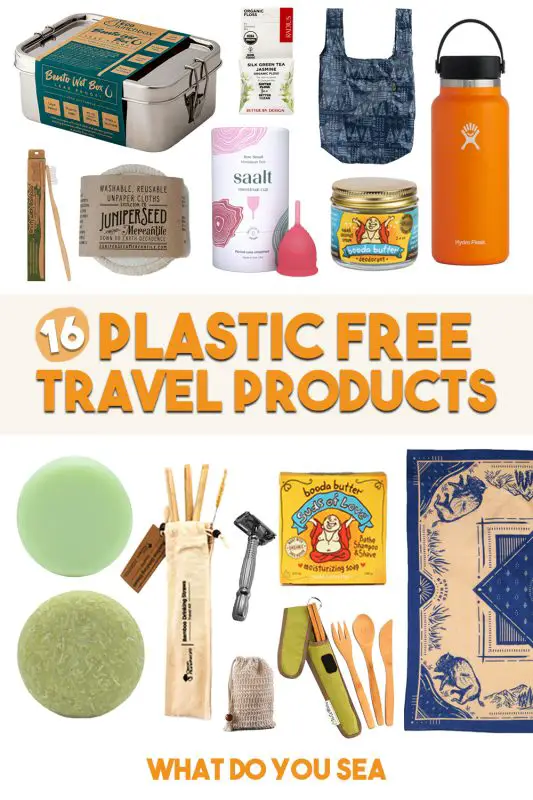
– TOILET PAPER ROLL
It took me around four trips to bathrooms with limited or zero supplies to finally get the message that toilet paper is a luxury in the Philippines. Once you arrive, and before you do anything else, find a 7/11 and pick up a roll to stash in your bag. You’re going to encounter a lot of surprises while traveling the Philippines, but you don’t want a lack of toilet paper to be one of those!
– HAND SANITIZER
Like toilet paper, a lot of bathrooms in the Philippines don’t have soap, so it’s best to bring your own hand sanitizer to stay clean. Plus, you’ll encounter heaps of island puppies and it’s important to clean your hands after you’re done playing with them.
– REUSABLE BAG
A reusable bag has become a staple for every trip that I go on, but I found one to be particularly handy in the Philippines. Whether I was grabbing some to-go pastries for breakfast, buying pineapple and mangoes from a local fruit stall, or going out the door for one of my morning surf lessons, I was glad that I had one of these with me. This bag packs down into a smaller bag that you can clip onto your day bag for easy access.
– BUG SPRAY
From lagoons to beaches, bugs are going to turn you into an all-you-can-eat-buffet, so packing a bug spray that works is crucial.
HELPFUL GUIDES FOR YOUR TRIP TO THE PHILIPPINES:
– 30 Travel Essentials For Backpacking Southeast Asia
– 50 Philippines Travel Tips For An EPIC Trip
– The Best Time To Visit The Philippines
LOOKING FOR DESTINATIONS IN THE PHILIPPINES? CHECK THESE OUT:
– The Perfect Philippines Itinerary For 2 Adventurous Weeks
– Tumalog Falls: Cebu’s Unmissable Waterfall
– Canyoneering In Cebu: Epic Cliff Jumping
– Exploring Kawasan Falls on Cebu (Without the Crowds)
– Island Hopping in Siargao: Guyam, Daku, + Naked Island
– Where To Stay On Siargao Island For A Dreamy Stay
– How To Spend A Day At Sugba Lagoon
– TakTak Falls: The Only Waterfall On Siargao Island
– Apo Island Day Trip: Snorkeling With Sea Turtles
– Casaroro Falls in Valencia: Hidden Waterfall Near Dumaguete (FULL GUIDE)
SOUTHERN LEYTE
– Where To See Whale Sharks Ethically In The Philippines
HAVE YOU TRAVELED TO SOUTHEAST ASIA? SHARE WITH ME IN THE COMMENTS BELOW!
DID YOU FIND THIS PHILIPPINES PACKING LIST USEFUL? SAVE IT FOR LATER!
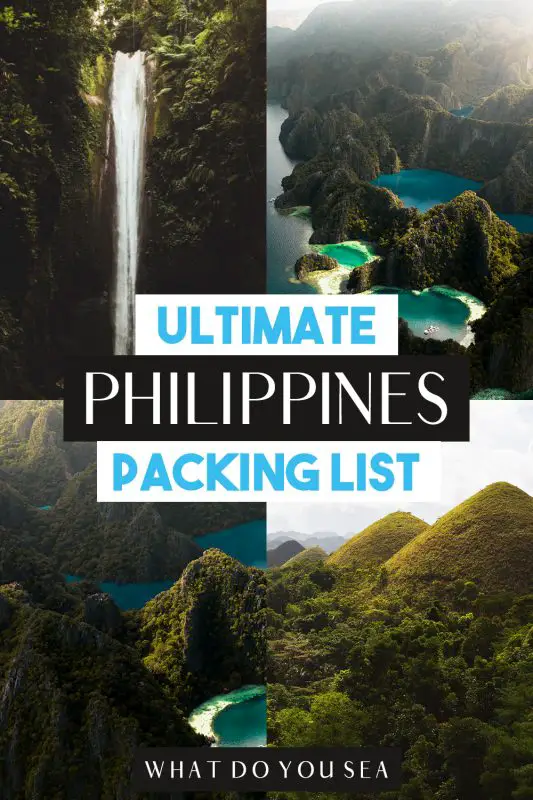
Leave a Comment Cancel reply
Your email address will not be published. Required fields are marked *
2 comments on “ The Essential Philippines Packing List: What To Wear In The Philippines ”
How do I find the downloadable pdf packing list?
Hi! I fixed the email box (: it’s near the top of the blog post

You are using an outdated browser. Upgrade your browser today or install Google Chrome Frame to better experience this site.
Philippines Healthy Travel Packing List
Pack items for your health and safety.
- You may not be able to purchase and pack all of these items, and some may not be relevant to you and your travel plans. Talk to your doctor about which items are most important for you.
- This list is general and may not include all the items you need. Check our Traveler Information Center for more information if you are a traveler with specific health needs, such as travelers who are pregnant, immune compromised, or traveling for a specific purpose like humanitarian aid work.
- Remember to pack extras of important health supplies in case of travel delays.
Prescription medicines
- Your prescriptions
- Travelers' diarrhea antibiotic
- Suture/syringe kit Kit is for use by local health care provider & requires a letter from your doctor on letterhead stationery
- Altitude sickness medicine
- Medicine to prevent malaria
Medical supplies
- Glasses Consider packing spare glasses in case yours are damaged
- Contact lenses Consider packing spare contacts in case yours are damaged
- Needles or syringes (for diabetes, for example) Requires a letter from your doctor on letterhead stationery
- Suture kit Kit is for use by local health care provider & requires a letter from your doctor on letterhead stationery
- Diabetes testing supplies
- Epinephrine auto-injectors (EpiPens)
- Medical alert bracelet or necklace
Over-the-counter medicines
- Antihistamine
- Motion sickness medicine
- Cough drops
- Cough suppression/expectorant
- Decongestant
- Medicine for pain and fever Examples: acetaminophen, aspirin, or ibuprofen
- Mild laxative
- Mild sedative or other sleep aid
- Saline nose spray
Supplies to prevent illness or injury
- Hand sanitizer or wipes Alcohol-based hand sanitizer containing at least 60% alcohol or antibacterial hand wipes
- Water purification tablets See CDC recommendations: Water Disinfection .
- Water purification tablets May be needed if camping or visiting remote areas
- Insect repellent Select an insect repellent based on CDC recommendations: Avoid Bug Bites
- Permethrin Permethrin is insect repellent for clothing. It may be needed if you spend a lot of time outdoors. Clothing can also be treated at home in advance.
- Bed net For protection against insect bites while sleeping
- Sunscreen (SPF 15 or greater) with UVA and UVB protection. See Sun Exposure .
- Sunglasses and hat Wear for additional sun protection. A wide brim hat is preferred.
- Personal safety equipment Examples: child safety seats, bicycle helmets
- Latex condoms
First-aid kit
- 1% hydrocortisone cream
- Antifungal ointments
- Antibacterial ointments
- Antiseptic wound cleanser
- Aloe gel For sunburns
- Insect bite treatment Anti-itch gel or cream
- Bandages Multiple sizes, gauze, and adhesive tape
- Moleskin or molefoam for blisters
- Elastic/compression bandage wrap For sprains and strains
- Disposable gloves
- Digital thermometer
- Scissors and safety pins
- Cotton swabs (Q-Tips)
- Oral rehydration salts
- Health insurance documents Health insurance card (your regular plan and/or supplemental travel health insurance plan) and copies of claim forms
- Proof of yellow fever vaccination If required for your trip, take your completed International Certificate of Vaccination or Prophylaxis card or medical waiver
- Copies of all prescriptions Make sure prescriptions include generic names. Bring prescriptions for medicines, eye glasses/contacts, and other medical supplies.
- Family member or close contact remaining in the United States
- Health care provider(s) at home
- Lodging at your destination
- Hospitals or clinics (including emergency services) in your destination
- US embassy or consulate in the destination country or countries
Other Destinations
If you need help finding travel information:
Message & data rates may apply. CDC Privacy Policy
File Formats Help:
- Adobe PDF file
- Microsoft PowerPoint file
- Microsoft Word file
- Microsoft Excel file
- Audio/Video file
- Apple Quicktime file
- RealPlayer file
- Zip Archive file
Exit Notification / Disclaimer Policy
- The Centers for Disease Control and Prevention (CDC) cannot attest to the accuracy of a non-federal website.
- Linking to a non-federal website does not constitute an endorsement by CDC or any of its employees of the sponsors or the information and products presented on the website.
- You will be subject to the destination website's privacy policy when you follow the link.
- CDC is not responsible for Section 508 compliance (accessibility) on other federal or private website.
- PRIVACY POLICY

Ultimate Travel Checklist for the Philippines

Planning and preparing for a trip can be overwhelming. To make this process easier and lessen your worries, we’ve created the following 3 guides and travel checklist which simplify the process. Each guide is FREE and available for download as a PDF… just click the link below to download.
- Planning Guide & Checklist
- Preparation Guide & Checklist
- Packing Guide & Checklist
- Drivers License
- International Drivers Permit
- Copy of Birth Certificate
- Immunization Records
- Marriage License
- Reservations + Contact Info + Address | Map
- Transportation Tickets (airline, bus, train, car, etc.)
- Several Copies of Passport(s)
- Prescriptions for Medicines
- Prescription for Eye Glasses
- Emergency Contact Info
- Doctor Contact Info
- Dentist Contact Info
- Bank Account Info
- Credit | Debit | ATM Card Info
- Membership Cards ( AAA , Car Rental, Hotel, AARP )
- Insurance Cards (Medical, Travel, Car)
- Photos of Above Documents
- Extra Passport Photos
- Travel Guides
NOTE: Click a product to purchase or learn more.
- Neck Wallet | Travel Organizer
- Throw Away Wallet
- US Currency
- Foreign Currency
- Credit Card(s)
- Debit Cards(s)
- ATM Card(s)
- Long-Term Luggage
- Short-Term Carry-On Luggage
- Carry-On Backpack with Wheels
- Large Long-Term Backpack
- Medium Carry-On Backpack
- Daypack with Hydration
- Hanging Organizer
- Packing Cubes
- Waterproof Dry Bag
- Expandable Compression Bag
- Laundry Bag
- Toiletries Case
- Medications Case
- Mesh Storage Bags
- Cable Storage Case
- Bras + Sports Bra
- Short-Sleeve Shirts
- Long-Sleeve Shirts
- Board Shorts
- Workout Clothes
- Hiking Socks
- Hiking Shorts
- Hiking Pants
- Swimsuit(s)
- Long-Sleeve UV Shirt
- Rain Poncho
- Scarf | Bandanna
- Weatherproof Jacket
- Winter Scarf
- Winter Gloves
- Casual Walking Shoes
- Dress Shoes
- Athletic Shoes
- Hiking Boots | Shoes
Accessories
- Sunglasses + Case
- Strap for Sunglasses
- Travel Watch
- Canvas Web Belt
- Laundry Detergent
- Stain Remover
- Dryer Sheets
- Universal Drain Stopper
- Scrubba Wash Bag
- Clothes Line
- Sewing Kit & Buttons
- Travel Iron
- Toothpaste + Mouthwash
- Dental Floss
- Shampoo + Conditioner
- Soap | Bodywash + Loofah Gloves
- Shaving Gel
- Shaving Razor + Blades
- Towel + Face Cloth
- Moisturizer
- Talcum Powder
- Hair Brush & Comb
- Portable Travel Mirror
- Cotton Pads & Swabs
- Grooming Device(s)
- Facial Products
- Hair Products
- Contacts + Solution + Case
- Spare Glasses + Cloth + Case
- Nail Clippers + File
- Hand Sanitizer
- Feminine Products
- Birth Control
- Condoms + Lube
- Reusable Bottles
- Reusable Containers
- Medicine Kit
- Medicine Case
- Weekly Pill Organizer
- Prescription Medications
- Vitamins & Supplements | Vitamin C + Zinc
- Pain Relievers
- Headache Pain Reliever
- Sinus Pain Reliever
- Medication for Cramps
- Body Ache Pain Reliever
- Sore Throat Medicine
- Throat Lozenges
- Cough Drops
- Anti-Acid Pills
- Cold & Flu Medication
- Allergy Medication
- Motion Sickness Pills or Bands
- Altitude Sickness Pills
- Anxiety Medication
- Upset Stomach Reliever
- Anti-Diarrhea Pills
- Sleeping Aids
- Anti-Itch Lotion
- Anti-Bacterial Ointment
- Foot Powder | Creme
- First-Aid Kit
- Travel Neck Pillow
- Travel Blanket
- Reusable Water Bottle
- Food | Snacks | Gum | Mints
- Audio Books
- Playing Cards | Games
- Laptop + Charger
- Tablet + Charger
- Kindle + Charger
- Mobile Phone + Charger
- Waterproof Phone Case
- Spare Mobile Phone
- Bluetooth Speaker
- Wireless Keyboard
- Wireless Mouse
- Bluetooth Keyboard
- Bluetooth Mouse
- Laptop Stand
- Network Cable
- Spare Memory Cards
- External USB Hard Drive
- USB Thumb Drive
- 3-to-2 Prong Electrical Adapters
- Extension Cord
- Surge Protector
- Universal Power Adapter
- 4-Port USB Charger
- Multi-Outlet Powerstrip
- Wired Headphones with Mic
- Wireless Headphones | Wireless Earphones
- Noise Cancelling Headphones
- Amazon FireStick
- Portable Projector
- HDMI Laptop Adapter
- Spare Cables & Chargers
- Battery Pack(s)
- Rechargeable Batteries
- Car Power Inverter
- Wifi Range Extender
- Primary Camera
- Backup Camera
- Vlogging Camera
- Memory Cards
- Mini Tripod
- Camera Clip
- Spare Camera Batteries
- Camera Cleaning Kit
- Waterproof Covers for Cameras
- Camera Gear Backpack
- Waterproof Cover for Backpack
- GoPro & Accessories
- Smartphone Accessories
- Drone & Accessories
- Mask & Snorkel
- Hammock Mosquito Net
- Hammock Rain Fly
- Sleeping Bag
- Sleeping Bag Liner
- Mattress Pad
- Travel Pillow
- Navigational Device
- Beach Blanket
- Beach Umbrella
- Waterproof Playing Cards
- Beach Chairs
- Waterproof UNO Cards
- Anti-Fog Mask Solution
- Flotation Device
- Nerf Football
- Bouncing Waterball
- Splash Bombs
- Smashball Set
- Cornhole Game Set
- Volleyball Set
- Badminton Set
- Kite + String
- Fishing Pole
- Pole Anchor Holder
- Collapsible Cup
- Cooler with Wheels
- Collapsible Cooler
- Picnic Basket
- Eating Utensils
- Paper Towels
- Sunglasses & Case
- Travel Sheets
- TSA Luggage Locks
- Travel Towels
- Pen + Pencil
- Reusable Notebook + Pens
- Business Cards
- Digital Luggage Scale
- Spare AA | AAA Batteries
- Ziplock Bags
- Collapsible Tupperware
- Stainless-Steel Straw
- Sunscreen & After-Sun Lotion
- Insect Repellent
- First Aid Kit
Miscellaneous
- Beach Towel | Blanket
- Platypus Collapsible Water Bag
- Microfiber Sunglass Bags
- Luggage Tags
- Passport Cover
- Bungee Cords
- Safety Pins
- Rubber Bands
- Gorilla Duct Tape
- Gorilla Glue
- Mosquito Net
- Passport | visa | IDs
- Notebook + Pen + Pencil
- Cash (US and Foreign) … small bills for tipping
- Credit + Debit + ATM Cards
- Insurance Cards (medical, travel, car)
- House & Car Keys
- Transportation Tickets (plane, train, bus, cruise, etc.)
- Membership Cards (airline, hotels, car rental, AAA , AARP)
- Travel Documents
- Valuables (i.e. jewelry, electronics, data)
- Kindle + Charger + Books
- Wired Earbud Headphones
- Bluetooth Noise Cancelling Headphones
- Camera Equipment
- Tissues (facial + toilet)
- Food + Snacks (Protein Bar) + Gum + Mints
- Empty Reusable Water Bottle (fill post-security)
- In-Flight Medications
- Change of Clothes
- Glasses + Case + Cleaner
- Guidebooks + Maps
- Language Guides

About the Author

Patrick is an entrepreneur, digital nomad, explorer, and photographer. Patrick is always in search of fun and adventure. He is well travelled throughout the world, and although location independent, his home base is Phoenix, Arizona in the USA. Patrick loves island lifestyle which is no wonder why he is so interested in spending time in the Philippines with it’s over 7,000 islands. Patrick created this site to share his knowledge of and experiences in the Philippines with Filipinos as well as other foreigners.
Leave a Comment X

Winter is here! Check out the winter wonderlands at these 5 amazing winter destinations in Montana
- Travel Destinations
- Philippines
The Philippines Packing List: What To Pack And Why
Published: November 14, 2023
Modified: January 3, 2024
by Halli Holton
- Beaches & Islands
- Plan Your Trip
- Travel Essentials & Accessories
- Travel Tips
Introduction
When planning a trip to the beautiful country of the Philippines, it’s essential to make sure you have everything you need packed and ready to go. The Philippines offers a diverse range of experiences, from pristine beaches to lush rainforests, historical sites to bustling cities. This variety means that your packing list will need to be comprehensive, ensuring you have all the essentials to make the most out of your trip.
From clothing and accessories to travel documents and electronics, there are several key items you should consider packing. Whether you’re planning a beach getaway, an adventure in the mountains, or exploring the vibrant city of Manila, this article will guide you on what to pack for your Philippines adventure and why.
Before diving into the specifics, it’s important to note that the Philippines has a tropical climate characterized by high humidity and warm temperatures throughout the year. The country also experiences both dry and rainy seasons, so it’s crucial to pack accordingly.
Now, let’s dive into the essential items you should include on your Philippines packing list to ensure a seamless and enjoyable trip.
Essential Clothing and Accessories
When it comes to clothing for your trip to the Philippines, it’s important to prioritize comfort and versatility. The tropical climate means you’ll want to pack lightweight, breathable fabrics that keep you cool and protected from the sun. Here are the key items to include:
- Lightweight Clothing: Pack a mix of shorts, t-shirts, tank tops, and breathable dresses. Opt for materials like cotton or linen that allow for air circulation and quick drying.
- Swimwear: With its stunning beaches and crystal-clear waters, the Philippines is perfect for swimming and water activities. Make sure to pack at least two swimsuits for your trip.
- Footwear: Comfortable walking shoes or sandals are a must for exploring cities and hiking trails. Flip flops or water shoes are also essential for beach excursions.
- Lightweight Jacket or Sweater: While the Philippines generally has a warm climate, some regions can get cooler in the evenings or during the rainy season. Pack a lightweight jacket or sweater for those cooler moments.
- Rain Gear: The rainy season in the Philippines typically falls between June and October. Be prepared by packing a compact rain jacket or umbrella to stay dry during sudden downpours.
- Hat and Sunglasses: Protect yourself from the strong tropical sun by packing a wide-brimmed hat and sunglasses. These items will not only provide shade but also add a stylish touch to your outfits.
- Reusable Water Bottle: Stay hydrated during your adventures by bringing a reusable water bottle. The Philippines has many beautiful natural attractions, so it’s important to stay refreshed.
Remember to pack clothes suitable for the activities you plan to engage in. If you’re planning to hike or engage in outdoor adventures, pack lightweight hiking pants, breathable long-sleeve shirts, and sturdy shoes. If you have plans to visit religious sites, it’s a good idea to have modest clothing options, such as long pants or a scarf to cover your shoulders.
By packing the right clothing and accessories, you’ll be prepared for the variety of experiences the Philippines has to offer. Next up, we’ll cover the necessary travel documents and money you’ll need for your trip.
Travel Documents and Money
As with any international trip, it’s crucial to have the necessary travel documents and money in order. Here are the essential items to consider packing for your trip to the Philippines:
- Passport: Ensure that your passport is valid for at least six months from your planned date of entry into the Philippines.
- Visa: Check ahead of time to see if you need a visa to enter the country. Some nationalities are eligible for visa-free entry for a limited number of days.
- Flight Tickets: Keep both digital and physical copies of your flight tickets easily accessible.
- Travel Insurance: It is recommended to have travel insurance that covers medical emergencies, trip cancellations, and lost or stolen belongings.
- Cash and Credit Cards: While major credit cards are widely accepted in cities and tourist areas, it’s also essential to carry some cash for small vendors and establishments that may not accept cards. ATM machines are widely available in urban areas, but it’s always advisable to carry some local currency for convenience.
- Identification: Carry a photocopy of your passport’s identification page and leave the original in a secure location.
- Travel Itinerary and Accommodation Details: Have a printed or digital copy of your travel itinerary, including hotel reservations, transportation details, and contact information.
Keep these important documents and money in a secure travel wallet or pouch that you can easily access and keep close to your person at all times. It’s also a good idea to have digital copies of all your important documents, stored securely in cloud storage or email, for easy access if needed.
Additionally, inform your bank and credit card company about your travel plans to avoid any interruptions in card usage during your trip. Take note of emergency contact numbers for your bank or credit card company in case of any issues.
By ensuring you have all the necessary travel documents and money, you’ll have peace of mind and a smooth travel experience in the Philippines. Next, we’ll cover essential toiletries and medications to pack for your trip.
Toiletries and Medications
When it comes to toiletries and medications, it’s always best to be prepared and have the essentials with you. Here are the key items to consider packing for your trip to the Philippines:
- Toothbrush, Toothpaste, and Dental Floss: Maintaining good oral hygiene is important, so be sure to pack these essentials.
- Shampoo and Conditioner: While many accommodations provide basic toiletries, it’s always a good idea to bring your preferred shampoo and conditioner.
- Soap or Body Wash: Keep yourself clean and refreshed with your preferred soap or body wash.
- Sunscreen: The Philippines has a tropical climate, so pack a sunscreen with at least SPF 30 to protect your skin from harmful UV rays.
- Insect Repellent: Mosquitoes can be prevalent in certain areas, so bring a reliable insect repellent to protect yourself against bites.
- Prescription Medications: If you take any prescription medications, ensure you have an ample supply to last the duration of your trip.
- Basic First Aid Kit: Pack essential items such as adhesive bandages, antiseptic ointment, pain relievers, and any necessary personal medications.
- Hand Sanitizer: Maintain good hand hygiene by carrying a small bottle of hand sanitizer for times when soap and water are not readily available.
In addition to these items, consider packing any personal toiletries and cosmetics that you use on a daily basis. It’s also advisable to bring a small travel towel or washcloth for your convenience.
If you have any specific medical conditions or allergies, it’s crucial to bring the necessary medications and inform your travel companions about them. It’s always a good idea to consult your healthcare provider before traveling to ensure you have any necessary vaccinations and medications for your trip to the Philippines.
By packing the essential toiletries and medications, you’ll have everything you need to stay clean, comfortable, and healthy during your trip. Next, we’ll cover the electronics and gadgets you should consider including in your packing list.

Electronics and Gadgets
In today’s digital age, electronics and gadgets play a significant role in enhancing our travel experiences. Here are the essential items to consider packing for your trip to the Philippines:
- Smartphone: A smartphone is a versatile device that can serve multiple purposes during your trip, from communication to navigation and capturing memorable moments.
- Camera or GoPro: The Philippines offers breathtaking landscapes and stunning underwater scenery. Make sure to pack a quality camera or GoPro to capture those unforgettable moments.
- Chargers and Adapters: Don’t forget to pack the chargers for all your electronic devices, including your smartphone, camera, and other gadgets. Depending on your home country, you may also need a travel adapter to plug in your devices.
- Power Bank: When exploring remote areas or during long days of sightseeing, having a power bank can be a lifesaver to keep your devices charged on the go.
- Portable Wi-Fi Router: While many accommodations and establishments offer free Wi-Fi, having your portable Wi-Fi router ensures a reliable internet connection wherever you go.
- Headphones: Whether you want to listen to music, watch movies, or drown out background noise during long flights or bus rides, a good pair of headphones is essential.
- E-book Reader: If you love to read, packing an e-book reader will save space and weight in your luggage, allowing you to carry multiple books in one convenient device.
Before your trip, make sure to download useful travel apps such as maps, translation tools, and currency converters. It’s also wise to back up important documents and save offline maps in case of limited internet connectivity.
While electronics are valuable, it’s important to strike a balance and not spend your entire travel experience looking through a screen. Take the time to fully immerse yourself in the beauty and culture of the Philippines.
Now that you have the essential electronics and gadgets packed, let’s move on to the next section, where we’ll cover entertainment and travel gear.
Entertainment and Travel Gear
While exploring the Philippines, it’s important to have the right entertainment and travel gear to enhance your overall experience. Here are some items to consider packing:
- Travel Guidebook: A travel guidebook can provide valuable information about the country, its culture, and attractions. It can also serve as a handy reference during your trip.
- Travel Pillow and Eye Mask: Long flights or bus rides can be more comfortable with a travel pillow and eye mask, allowing you to rest and recharge.
- Travel Adapter: Depending on your home country, a travel adapter is essential to plug in and charge your devices while in the Philippines.
- Portable Bluetooth Speaker: If you enjoy listening to music, a portable Bluetooth speaker can provide entertainment during your beach outings or downtime in your accommodations.
- Snorkeling Gear: The pristine waters of the Philippines are perfect for snorkeling. Consider packing your own snorkeling gear for an immersive underwater experience.
- Waterproof Phone Case: Protect your smartphone from water damage with a waterproof phone case, particularly if you plan to engage in water activities or visit waterfalls.
- Travel Journal and Pen: Capture your thoughts, memories, and experiences with a travel journal. It’s a great way to document your adventures and reflect on your journey.
- Playing Cards or Travel Games: Entertainment during downtime or while socializing with fellow travelers can be enhanced with a deck of playing cards or compact travel games.
While these items can contribute to your enjoyment during your trip, remember to strike a balance and not rely solely on technology or entertainment gadgets. Engage with the local culture, interact with fellow travelers, and make lasting memories.
With the right entertainment and travel gear packed, we’ll move on to the next section, where we’ll cover health and safety essentials for your trip to the Philippines.
Health and Safety Essentials
Ensuring your health and safety is of utmost importance when traveling to any destination, including the Philippines. Here are the essential items to consider for a safe and worry-free trip:
- Travel Insurance: It’s crucial to have travel insurance that covers medical emergencies, trip cancellations, and any unexpected incidents that may occur during your trip.
- Emergency Contacts: Keep a list of important emergency contacts, including local authorities, hospitals, and your embassy or consulate, easily accessible.
- Personal Medications: If you take any prescription medications, ensure you have an ample supply to last your entire trip. It’s also advisable to carry a copy of your prescription or a letter from your doctor.
- First Aid Kit: Pack a basic first aid kit with essential items such as band-aids, antiseptic ointment, pain relievers, allergy medication, and any specific medications needed for your health condition.
- Hand Sanitizer and Face Masks: It’s always a good idea to have hand sanitizer and face masks readily available, especially during times when it’s necessary to prioritize cleanliness and personal hygiene.
- Insect Repellent: Protect yourself from mosquitoes and other insects by using a reliable insect repellent, especially when visiting areas with a higher risk of mosquito-borne diseases.
- Sunscreen and Hat: The Philippines has a tropical climate, so it’s important to protect yourself from the sun’s harmful rays. Apply sunscreen with a high SPF and wear a hat to shield your face and scalp.
- Safe Drinking Water: While bottled water is readily available, consider packing a portable water purifier or sterilizing tablets for additional peace of mind.
- Travel Insurance: Safeguard your belongings by carrying a lock for your luggage and keeping valuable items in a secure bag or pouch.
Additionally, it’s important to practice common sense and be aware of your surroundings throughout your trip. Follow any local safety advisories and guidelines, use reliable transportation services, and be cautious of your personal belongings.
By packing these health and safety essentials, you’ll be better prepared to handle any unforeseen circumstances and ensure a safe and enjoyable trip to the Philippines. In the final section, we’ll cover some miscellaneous items you may want to consider including in your packing list.
Miscellaneous Items
In addition to the essential items mentioned earlier, there are a few miscellaneous items that can come in handy during your trip to the Philippines. While not necessities, they can enhance your overall travel experience. Here are some miscellaneous items to consider:
- Travel Pillow: If you struggle with getting comfortable during long flights or bus rides, a travel pillow can provide much-needed support for your neck and improve your sleep quality.
- Reusable Shopping Bag: Reduce your environmental impact by packing a foldable reusable shopping bag. It’s useful for carrying groceries, souvenirs, or beach essentials.
- Travel Size Laundry Detergent: If you plan to do laundry during your trip, having a small container of travel size laundry detergent can be convenient.
- Waterproof Dry Bag or Ziplock Bags: Protect your valuables and electronics from water damage by using a waterproof dry bag or ziplock bags.
- Travel Sewing Kit: A small travel sewing kit can be a lifesaver for minor clothing repairs or adjustments.
- Travel Adapters and Power Strip: If you have multiple electronic devices to charge, a travel adapter and power strip can be useful to expand the number of available outlets.
- Snacks and Water: While it’s always enjoyable to try local cuisine, having a few snacks and a bottle of water on hand can be beneficial during long journeys or when exploring remote areas.
- Travel Umbrella: If you prefer not to carry a heavy rain jacket, a compact travel umbrella can provide protection during unexpected rain showers.
- Travel Insurance: Make copies of important travel documents, including your passport, visa, travel insurance policy, and credit cards, and keep them in a separate location as backups.
While these items may not be essential, they can certainly add convenience and make your trip more comfortable. Tailor your packing list to suit your individual needs and preferences, ensuring you have all the necessary items for a memorable trip to the Philippines.
With this comprehensive packing list, you’ll be well-prepared for your adventure in the Philippines. Remember to balance the practical essentials with the items that will enhance your experience and make it enjoyable from start to finish.
Safe travels and enjoy exploring the beauty and diversity that the Philippines has to offer!
As you prepare for your trip to the Philippines, a well-planned and comprehensive packing list is vital to ensure a smooth and enjoyable journey. From essential clothing and accessories to travel documents and money, toiletries and medications, electronics and gadgets, entertainment and travel gear, health and safety essentials, and miscellaneous items, there are several key items to consider packing.
By prioritizing comfort, versatility, and practicality, you can pack the right clothing suitable for the tropical climate, protect your health with essential toiletries and medications, stay connected with the necessary electronics and gadgets, enhance your entertainment with travel gear, prioritize your health and safety with the right essentials, and have the convenience of miscellaneous items that may come in handy during your trip.
Remember to strike a balance between being prepared and avoiding overpacking. Tailor your packing list to your specific needs and the activities you plan to engage in. Consider the duration of your trip, the destinations you’ll be visiting, and any unique requirements you may have.
Ultimately, your packing list should reflect your personal preferences, while also considering the culture and environment of the Philippines. Embrace the spirit of adventure and immerse yourself in the beauty and diversity of this stunning country.
With this comprehensive packing list as your guide, you’re now well-equipped to make the most out of your trip to the Philippines. Enjoy your journey, create lasting memories, and have a wonderful time exploring all that this incredible destination has to offer.

- Privacy Overview
- Strictly Necessary Cookies
This website uses cookies so that we can provide you with the best user experience possible. Cookie information is stored in your browser and performs functions such as recognising you when you return to our website and helping our team to understand which sections of the website you find most interesting and useful.
Strictly Necessary Cookie should be enabled at all times so that we can save your preferences for cookie settings.
If you disable this cookie, we will not be able to save your preferences. This means that every time you visit this website you will need to enable or disable cookies again.
Travelfornoobs
The Ultimate Philippines Packing List
Philippines packing list – all the things you should not forget, what to take in your bag for philippines.
You’ve booked your plane ticket and the time of departure is fast approaching? After the joys of such a decision, comes the question of knowing what to put in your suitcase to go to Philippines. No need to panic, we have prepared a very complete list of the essential things to bring to make sure you don’t miss anything once you are there.
In order to leave no room for unforeseen events, it’s of course preferable to go through this list a few days before leaving rather than the day before departure, as you might miss some items.
Take the time to read and download it in order to identify the things that you absolutely must pack and that you might miss and that could make you lose time and money if you forget them.
You will also need to think about packing according to the type of accommodation you will be staying in, the different modes of transportation you will use during your trip, the climate and the season, as well as the activities you plan to do.
In order to help you prepare your suitcase, this checklist of the essential things to bring in Philippines gathers several categories: clothes, accessories, various objects… It will allow you to have a concrete vision of a typical suitcase for Philippines.
An advice, think of keeping some space in your luggage if you wish to bring back souvenirs or to make some clothing shopping on the spot.
Thanks to this travel list, preparing your bag for Philippines will be a real child’s play and you will just have to enjoy your adventure!
Note : This article contains affiliate links to Amazon.
- Important hings to do before you go
- Essential documents
- Transport essentials
- Backpack & luggage
- Clothing and shoes
- Hygiene & Toiletries
- Photo, Video & High Tech
- Useful accessories
- Medication and first aid kit
- Activities and Useful Links (+ Printable checklist PDF)
1/ Important things to do before you go
Prepare your travel itinerary Apply for a visa (if necessary) Make your vaccinations (if necessary) Check-up at the doctor / dentist Take out a travel insurance Photocopy or scan important documents (passport) Write down e-mail and useful phone numbers in your address book Warn your bank about your trip abroad (if necessary) Book accomodation for your first night ( Do it now before everything is fully booked! Check the best hotels on Booking ) Download offline applications and maps for Maps.me Download movies offline Prepare your favorite music playlist Turn off or turn down the heat of your house Empty garbage cans Water the plants Give a copy of your house/car keys to a family member or friend Close doors and windows
2/ Essential documents
Even before you buy your plane ticket, remember to check the validity of your passport : it must be valid for at least six months after your return date (for some countries) and have a blank page. Another tip: send your important documents to a secondary email in case you lose them.
Passport ID card Plane or train ticket (have a paper copy just in case) Reservation documents (e-ticket, train ticket, hotel reservation) Visa (if necessary) International driver’s license, if you wish to rent a car Health insurance card Travel insurance Credit card Cash Useful numbers in case of emergency Itinerary and address of your accommodation (hotel / AirBnB / camping) Vaccination certificate Diving license, sailing license, etc. Some business cards with your contact information, email, blog, website
3/ Transport essentials
The little things to have with you at all times during the flight or the trip by train or bus:
Phone and charger Book / Magazine / Kindle / Travel Guide MP3 player Chewing gum Pen + notepad Travel pillow ( my favorite ) Sleep mask ( my favorite ) Earplugs Snacks / sandwich Small water bottle Nasal ointment for dry nose Sunglasses Glasses case Watch Hand sanitizer Disposable face mask Tissues Motion sickness medication
4/ Backpack & luggage
Waterproof dry bag ( my favorite ) Handbag Travel laundry bag ( my favorite ) Carry-on suitcase ( my favorite ) Travel bag ( my favorite ) Luggage tag ( my favorite ) Travel Packing Organizers ( my favorite ) Rain cover for backpack ( my favorite ) Zippered carry-on bag Shoe bag ( my favorite ) Fanny pack Lightweight foldable backpack ( my favorite )
5/ Clothing and shoes
Socks Underwear (panties, thongs, bras, briefs, boxers…) Tank tops Skirt ♀ Dress ♀ Pajamas T-shirts Long sleeve shirt ( for her , for him ) Short sleeve shirt ( for her , for him ) Polo shirt ( for her , for him ) Sweatshirt / pullover ( for her , for him ) Jeans Lightweight pants ( for her , for him ) Money belt ( my favorite ) Shorts Jogging suit Jacket / coat K-way ( for her , for him ) Windbreaker ( for her , for him ) Hat / cap / beanie Scarf / bandana Swimsuit Buff scarf ( my favorite )
For shoes, you will have to choose according to the activities you plan to do:
Comfortable walking shoes Shoes for going out (restaurants, bars, clubs…) Flip-flops (for the beach, showers…) ( for her , for him ) Hiking shoes ( for her , for him ) Sandals ( for her , for him ) Water shoes for walking in water (beaches, waterfalls, rivers…) ( for her , for him ) Light trekking shoes ( for her , for him ) Crocs
6/ Hygiene & Toiletries
Microfiber towel ( my favorite ) Toilet bag Portable Travel Bottles ( my favorite ) Toothbrush & toothpaste Dental floss Soap Shampoo Facial cleanser Nail clippers Cotton buds (biodegradable) Tweezers Make-up Deodorant Comb / Hairbrush Razor & shaving foam ♂ Biodegradable wipes ( my favorite ) Toilet paper roll Perfume Makeup ♀ Contact Lenses Contact lens product Pocket mirror
7/ Photo, Video & High Tech
For photographers and videographers:
Camera Lens Memory card Polarizing filters ND filter Extra battery Charger + cable + plug adapter Cleaning kit External hard drive USB key Stabilizer Drone ( my favorite ) Waterproof phone case Flash Solar charger ( my favorite ) Gopro ( my favorite ) Waterproof case Selfie Pole External battery / Powerbank ( my favorite )
Don’t forget:
Portable speaker Ipad / Tablet Laptop PC External battery Headphones or noise cancelling headphones ( my favorite )
Useful apps to download before you go to Philippines:
AirBnB Booking Couchsurfing Flush – Public Toilet Finder (Useful for finding toilets!) Google Maps Google Translator Google Trips Lonely Planet Guide LoungeBuddy Maps.me Meetup Tripadvisor Uber Whatsapp XE Currency
8/ Useful accessories
The accessories you will take in your bag for Philippines will depend on your travel style:
TSA lock ( my favorite ) Headlamp ( my favorite ) Sleeping bag ( my favorite ) Sheets ( my favorite ) Swiss Army knife (not in the hand luggage!) ( my favorite ) Travel clothesline ( my favorite ) Powdered or liquid detergent Clothes pegs Spork ( my favorite ) Ziploc bags Lighter Folding umbrella ( my favorite ) Toilet paper Mosquito repellent ( my favorite ) Mosquito net ( my favorite ) Sunscreen cream Aloe vera gel Waterproof pouch for smartphone For hikers : GPS, map, compass, water bottle Walking stick ( my favorite ) Anti-sweat talcum powder ( my favorite ) Beach towel ( my favorite ) Sawyer water filter ( must-have !) Pills to purify non-drinking water Mask, snorkel, fins Diving accessories (gloves, dive computer, lamp, knife…)
9/ Medication and first aid kit
I suggest that you consult your doctor and dentist before leaving. Beware of unauthorized medication and remember to keep your vaccinations up to date!
If you have a treatment don’t forget to take your personal medication and your prescription if necessary (or medical certificate).
You can buy a first aid kit already prepared ( my favorite ).
Cotton buds Tweezers Round-tipped scissors Pairs of single-use latex gloves Bandages Paracetamol or ibuprofen for pain Sterile compresses Disinfectant spray for wounds Physiological saline solution in pods (wound cleaning) Condoms and other contraceptives
For longer trips and higher risk locations, we can also add:
Sterile adhesive skin sutures (steristrips) Rehydration solutions (in case of dehydration) Water purification tablets Water decontamination tablets (Aquatabs or Micropur) Medication for altitude Medication for sore throat Anti-malarial medication Survival blanket Tick tweezers Ointment against itching (antihistamine) Probiotics for the stomach Corticosteroid pills and cream Analgesics (painkillers) Survival blanket Cold medicine (decongestant) Biafine (in case of burns or sunburns) Broad-spectrum antibiotics without a prescription Anti-diarrhea tablets (immodium, smecta)
10/ Activities and Useful Links + Printable checklist
You can download the complete travel list in PDF format and print it by clicking here.
Book your hotel in Philippines now on Booking.com
AirBnb : Get a discount for your first booking!
Book now your activities in Philippines on Getyourguide:
backpack Philippines business travel list Philippines check list Philippines checklist Philippines checklist travel Philippines Philippines travel checklist Philippines what to pack Philippines what to take essential for Philippines essentials for travelling to Philippines how to dress in Philippines how to pack for a trip to Philippines how to pack for Philippines list for travel to Philippines list of luggage for trip to Philippines list of things to bring on a trip to Philippines luggage list Philippines necessary for Philippines trip packing light for Philippines prepare your backpack for Philippines printable packing list for Philippines the essentials for going to Philippines travel list Philippines vacation packing checklist for Philippines what should I pack for Philippines trip what should I put in my travel bag for Philippines what to bring for a trip to Philippines what to pack for Philippines what to put in my suitcase to go to Philippines what to put in your suitcase for Philippines what to take to go to Philippines what to wear in Philippines
Leave a Comment Cancel reply

28 Top Philippines Packing List Items for 2024 + What to Wear & NOT to Bring

Jungle hikes, stunning waterfalls, white sand beaches, and some of the best snorkeling and scuba diving are just a few of the incredible experiences the Philippines offers. It’s the perfect destination for any type of traveler, whether you are an adventure seeker, beach lover, looking for some luxury, or on a budget.
It’s also a unique place to pack for, so we’ve created the ultimate Philippines packing list no matter what kind of travel experience you are looking for! We have a section on what to wear in the Philippines , what NOT to bring, and other frequently asked questions.
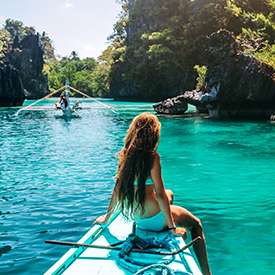
What to Pack for Philippines – 28 Essentials
1. philippines power adapter.
Electricity in the Philippines uses 220 volts, so if you want to plug anything into the wall, you will need a power adapter. We recommend purchasing a reliable universal power adapter like this one, as you can use it in nearly every country. It comes with a built-in safety fuse in case of power surges and has a lifetime replacement guarantee!
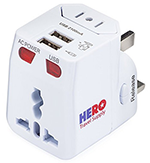
View on Amazon.com ➜
2. Water Bottle with Built-in Filter
You can’t drink the tap water in the Philippines, so it’s important to have a water bottle to keep hydrated throughout your trip. We recommend bringing a Grayl water bottle which has a built-in water filter. This will be perfect for hiking, backpacking, and traveling through the Philippines in general, as it will ensure that the water you’re drinking is safe while helping you save money and the environment from single-use plastic water bottles. It filters out harmful bacteria, viruses, sediment, and more.

3. Virtual Private Network (VPN)
Internet freedom is not consistent worldwide. Many Asian countries censor or monitor your internet activities and restrict the use of websites used in your home country, such as Facebook, PayPal, YouTube, and Netflix. With a VPN, your internet use is protected from surveillance and potential hackers , and you are able to access websites from your own country without a problem.
Anytime you hop on public Wi-Fi networks at cafes, airports, and hotels – you should be on a private network. The Philippines has faced a lot of cybersecurity attacks in recent months, so don’t risk a stolen identity or a drained bank account when you’re meant to be enjoying vacation. I learned this first-hand after having a credit card number stolen in Paris. We like NordVPN because it’s inexpensive and the fastest VPN for streaming. It protects your passwords, financial info, and private data so you can rest easy and enjoy your trip.

View NordVPN.com Options ➜
4. Neck Wallet
Whenever we travel, we always make sure to bring a trusty neck wallet to prevent pickpocketing and petty theft. Especially in destinations that are particularly crowded or touristy, it pays to make sure your belongings are secure and safely stowed away beneath your clothes. This neck wallet is amazing because it’s large enough to hold your phone, passport, cash, and credit cards, and has separate pockets to keep you organized. Keep your valuables out of reach from those who may try to take advantage of travelers, it will give you peace of mind and discretion.

5. Jet Lag Relief
If you’re coming from North America, Southeast Asia is a long way from home! You’re sure to feel the effects of jet lag and potentially lose your first day of sightseeing to it if you don’t prepare accordingly. These natural jet lag relief pills are a godsend after a long flight traveling through different time zones. Bring them along to help prevent the exhaustion and sluggishness of jet lag.
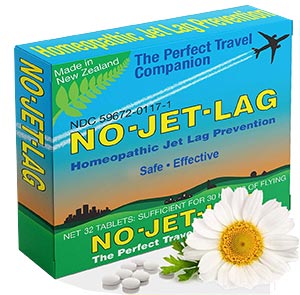
6. Travel Insurance for the Philippines
Your domestic provider will likely not cover you overseas, and you should always plan for the worst while hoping for the best. Many would argue – if you can’t afford travel insurance, you can’t afford to travel. There is a reason it’s mandatory in many places, mostly to spare tourists from paying extremely high medical bills out-of-pocket. And for a small cost of your trip, you can insure yourself against delays, theft, trip cancelation, baggage loss, evacuations, medical bills, and more.
We love to use Faye Travel Insurance because they are changing the entire industry. With a modern approach to reimbursements through their mobile app, they pay you upfront when you need it most (it’s honestly taking me longer to write this than it did to submit a claim!) It’s so nice not to fill out mountains of paperwork or feel daunted by the process, and it’s a great comfort to protect the investment you’ve already made in your trip. Don’t overlook it and end up with major regret.

Get a quote in less than 60 seconds with Faye ➜
7. Packing Cubes
This is a game-changer when it comes to packing. Coming in a multi-piece set with different colors to choose from, you can easily organize and locate all your clothes for travel. You can label each cube ‘pants, shirts, essentials, etc.’ and easily find what you’re looking for without a suitcase explosion. Bonus points for the two laundry bags that separate your dirty clothes and shoes from your clean items.
Available on HeroTravelSupply.com with an exclusive 15% discount using the coupon code “ HERO ”.

Or view them on Amazon.com ➜
8. Lipstick-Sized Portable Charger
Having your phone die in the middle of a boating excursion or jungle far from any power source can be a real buzzkill. Whether you’re using your device for navigation, photos, or music, you’ll want to make sure you have an external source of power when you need it. This can be a true lifesaver if you’re lost and relying on your phone for directions or finding a particular address; we never travel without one.

9. Universal Waterproof Phone Case
In a country surrounded by water in an archipelago, there are few items more useful than a waterproof smartphone case. The Philippines is also renowned for typhoons and torrential downpours during wet season. If you plan on using your phone for navigation, photos, music, and even underwater video, this case will keep your device safe and 100% dry. Use flotation straps to ensure everything floats!
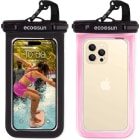
10. Quick-Dry Travel Towel
There is nothing more versatile in your packing artillery than this quick-dry travel towel. In a location like the Philippines that encompasses 7,600+ islands – you will get a ton of use out of it since it dries 10x faster than cotton. Use it for beach days, boating excursions, or in more versatile ways like a seat cover, modesty shawl, or packing cushion – the possibilities are endless!

11. Luggage Straps
Baggage loss and mishandling happens more frequently with international flights than domestic, so it’s better to be safe than sorry. These adjustable straps are a vibrant safety net that you can spot from a mile away, and reinforce your zippers to withstand more than 700-pounds of force tension (which you may need with the way bags are handled these days!)
I love the brightly-colored belts so I immediately know which checked bags are mine at the arrivals terminal. I never have to worry about my suitcase exploding open due to a faulty zipper or lock, and these are TSA-friendly for any random searches.

12. Discounted Tickets on Philippines Tours
From sunset cruises to underwater rivers , the Philippines is full of magical surprises. Your vacation is the culmination of your experience, so book the most authentic tours in the Philippines. Get Your Guide books through local tourism companies to support the national economy while ensuring YOU are booking top-notch tours. While here, check out the whale-shark sightseeing of Cebu , the hidden beaches of El Nido , the lagoons of Coron , and the volcanos of Manila .
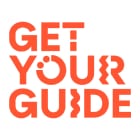
See all Philippines attractions at GetYourGuide.com ➜
13. Hanging Toiletry Bag
Hotels in the Philippines are quite affordable, but bathroom space can be scarce. This hanging toiletry bag will convert any door, hook, towel rack, or shower pole into a mini-shelf organization system. It unfolds to expose 4 giant pockets that hold your hair products, skin-care, makeup, or anything else to maintain your routine, plus 3 external pockets for smaller items like medicine, bobby pins, and jewelry.
It’s so much easier than juggling and stacking dozens of tiny bottles or trying to hack it with heaps of plastic sackies! The leakproof compartments will ensure you don’t battle with a luggage spill and the stain-resistant material is a necessity. It’s an elegant solution to the common woes of travelers – I promise you’ll be itching to use it any chance you get, even at home!

14. Mosquito-Repelling Wristbands
In the Philippines, mosquitoes pose the threat of malaria and dengue fever, so it’s important to protect yourself. Be sure to bring along mosquito repellent and some of these handy deet-free mosquito wristbands, which you can slip on your wrist and forget about, as they last for up to 300 hours and are waterproof!
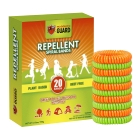
15. Windproof Travel Umbrella
In the Philippines, serious downpours can happen when you least expect it. Be prepared with a sturdy travel umbrella and a lightweight rain jacket to keep you dry and comfortable in the inevitable case of rain. This umbrella is ideal because it’s windproof and large enough to fit two people beneath it, which is perfect if you’re traveling with a partner.

16. Activated Charcoal
Do not travel without activated charcoal! When traveling overseas to unfamiliar places, there’s no doubt you will be tempted to taste all the mouthwatering delicacies your destination has to offer. That said, your body may not be used to the ingredients, spices, and germs you encounter, which could result in more time spent in the bathroom than out exploring. To avoid this, bring along activated charcoal caps which will quickly absorb and expel the toxins from your system, keeping you energized and healthy while abroad.
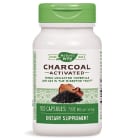
17. Waterproof Backpack
In the Philippines, you’re bound to spend time on day trips and island hopping tours, so it’s essential to have a waterproof daypack. This one is amazing because it can comfortably hold all your valuables, such as your phone, cash, camera, passport, books, and more , without you having to worry about them getting wet or damaged. It keeps your belongings safe whether you’re hiking through the rainforest, canyoning down waterfalls, or kayaking in the sea.

18. TSA-Approved Luggage Lock
After having items stolen out of our checked luggage, we always attach TSA-approved locks to our bags. You can use these to secure your backpacks and other out-of-sight valuables when exploring crowded places like attractions and transit stations. They’re also great for city lockers.

19. Deodorant Wipes
Between the monsoon-prone climate, high humidity, and tropical temps – the Philipines can leave you sticky and hot! It’s nice to have these deodorant wipes on hand since they’re pocket-sized and can fit in your wallet. Wipe down your whole body for an on-the-spot refresh. Your future self thanks you.
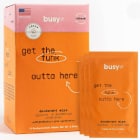
20. Cooling Towel
As you explore historic cities, take food tours, and island hop, the direct sun can be fierce! For any warm destination, we bring this cooling towel as a chilly reset. Simply add water and wring it out. The towel will stay 20-30 degrees colder than the outside temperature for up to an hour! When you’re ready for more frosty bliss, just add more water. It’s seriously magical .
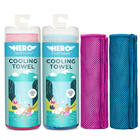
21. Motion Sickness Patches
If you’re prone to any form of motion sickness (on land or at sea), these motion sickness patches are a wise addition to your packing list. A lot of your days in the Philippines will involve boating excursions, swimming, driving down windy roads, and enjoying the epic landscapes. This will be easier if you keep nausea at bay. Plus, smaller boats don’t have stabilizers which can turn even an experienced sailor green from time to time.

22. Rash Guard
In a destination as wet as the Philippines, you’ll be glad to have a rash guard for daily wear. These are great as they’re quick-drying and comfortable, and can be worn in and out of the water. This type of rash guard also provides sun protection and will cool you down in the hot and humid Philippines. Wear it on a hike through the jungle or on a day spent island hopping; this item is perfect for protection from the elements and remaining comfortable during any activity.

23. Sand-proof Pocket Blanket
The Philippines has some of the most gorgeous beaches in the world. Check out Sugar Beach, Coron Bay, Cape Engano, and the Big Lagoon! This pocket blanket is perfect for beach days, picnics, concerts, or whenever you want to sit for a while. It repels sand and is moisture-resistant so you won’t stand up with wet clothes. We love that it folds up into a small carrying pouch, wonderful for travel.

24. Breathable, Mesh Water Shoes
You won’t regret bringing a good pair of mesh water shoes to the Philippines. Suitable for hikes, kayaking, and water sports, these shoes are super comfy and will keep your feet cool and blister-free. We can’t recommend water shoes more; my hubby loves them so much he wears them out to restaurants in our home on Maui!

25. Swimsuit Cover-Up
A swimsuit cover-up is great to have in any beach setting, and the Philippines is no exception. You’re sure to spend at least part of your trip jaunting between islands and absorbing all that this stunning country has to offer. A stylish swimsuit cover-up like this one is ideal for throwing on over your bathing suit after a beach day so you’ll feel comfortable walking into a restaurant or cafe.

26. Affordable Underwater Camera
Nothing’s better for capturing your incredible experience in the Philippines than a small and affordable waterproof camera. Great for filming exotic sea life such as whale sharks, sea turtles, and giant mantas – a camera like this will be a godsend while scuba diving and snorkeling. It’s also durable, which means it’s not too precious for shooting all your adventure activities, like surfing, ziplining, hiking, cave exploring, and scootering through the cities.

27. Travel Sheet
You never know where you may end up falling asleep during international travel – at the airport, a plane, a train, an Airbnb, or a hostel. Even if you’re sleeping in uncomfortable places or with less-than-clean sheets, it’s nice to bring your own sheets and know they are at least sanitary. I’ve slept in some pretty funky places with these, and it feels much more comfortable.

28. Packable “Just in Case” Bag
Don’t we all wish we had packed just ONE more bag? This “just in case” bag is your solution for the shopping you did during your travels. With a duffle-like material, it weighs virtually nothing when empty. But for the return flight home, it can count as your personal item and be filled with authentic Philippino goodies like pearls, spices, coffee, art, leather goods, and more.
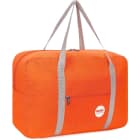
Other Philippines Packing List Items
- Lightweight shoes
- Water shoes
- Waterproof shoe bags
- Steripod toothbrush holder
- Contact solution
- Antibacterial hand wipes
- Pain reliever tablets
- Cold and flu medicine
- Anti-diarrheal products
- Nausea relief tablets
- First-aid kit
- Nail clippers
- Menstrual cup
- Infinity travel scarf
- Waterproof cell phone case
- Flotation straps
- Noise-canceling headphones
- Headphones splitter
- Waterproof diving case
- Memory cards
- Inflatable travel pillow
- Philippines power adapter
- Insect repellent wipes
- Unlocked cell phone
- Cash and credit cards
What to wear in the Philippines?
The Philippines is a tropical climate so you want to wear light, breathable clothing. It can cool down in the evenings though so a light sweater and a pair of pants are good to have on hand.
Beach towns are spread across the Philippine islands with a relaxed and casual atmosphere so flip flops, shorts, tees, tanks, beach dresses and bikinis are the norm.
You’ll get a lot of sun in the Philippines so make sure to protect yourself from sunburn and heatstroke. Pack plenty of sunscreens, a hat, and sunglasses.
If you are looking for a trip that goes beyond staying in a resort, you’ll want to pack some comfortable and sturdy shoes. There’s a lot of great hiking routes filled with rice patties, jungles, and waterfalls so shoes are necessary. Also, if you are planning to get around by scooter, shoes are the best way to go.
The Philippines has an abundance of marine life with opportunities to go snorkeling with sea turtles and spotting whale sharks while scuba diving so you’ll want to have water gear. A snorkel, mask, and GoPro are the basic essentials to bring. Also, many areas have sea urchins around and other things that may hurt your feet so it’s good to wear water shoes.
Lastly, torrential downpours can occur between June to September so it’s good to have a light rain jacket and umbrella.
Packing for the Seasons in Philippines
Dry season: november, december, january, february, march, april, may.
January and February are the coolest months and May is the hottest month. Make sure to pack light-colored and breathable clothing. You’ll get lots of sunshine so also bring sunscreen and a hat. The dry season average ranges from a low of 75°F to a high of 88°F.
RAINY SEASON: June, July, August, September, October
Don’t be afraid to visit during this time though because the weather can still be hot and sunny during the day with short downpours normally occurring at dusk. During the rainy season bring a light rain jacket and umbrella. It can get very humid so you will want quick-dry clothing to keep you cool and comfortable. The wet season average ranges from a low of 79°F to a high of 88°F.
What NOT to take to the Philippines
1. don’t arrive with a one-way ticket.
In the Philippines, you may not enter without proof of onward travel. Without proof, you may not even be able to board your flight.
2. DON’T BRING a suitcase
The Philippines is not full of paved and smoothe sidewalks like Europe. Instead, there may not even be a sidewalk and/or bumpy, unpaved roads. The best way to travel in the Philippines and the rest of South East Asia is with a backpack.
3. DON’T PACK too many clothes
You’ll be carrying everything on your back so make things easier for yourself and pack light. Packing cubes will be a great help to stop you from overpacking.
4. DON’T TAKE anything valuable
Theft does happen so leave your nice jewelry at home where it will be safe.
5. DON’T PACK soap and shampoo bottles
This only weighs down your luggage. You can easily purchase these items in grocery stores and pharmacies.
6. DON’T BRING lots of makeup
It’s a tropical climate and you don’t want your face to be melting off! Take a hint from the locals and keep minimal.
FAQs about travel in the Phillippines
1. why visit the philippines.
With over 7,000 islands there’s plenty of things to see and do in the Philippines. Best of all the locals are very friendly and welcoming to their country.
2. Are the Philippines safe for travelers?
The majority of the Philippines is a welcoming place for tourists with minimal danger. Currently, the biggest risk is terrorism which is limited to a small area of the Phillippines in the areas of Mindanao, the Zamboanga Peninsula, and the Sulu Archipelago which is very dangerous. To get up to date information on the Philippines, check your local government travel advisory and sign up for e-mail alerts which will be sent to you if there’s anything you should be aware of during your trip.
3. Do I need a visa?
Many countries including the United States, Canada, the UK and Australia are allowed free entry into the Phillippines for 30 days without a visa. If you are planning to stay longer, you can extend a tourist visa for a fee. All you need to bring is a passport valid for 6+ months and an onward ticket.
4. What immunizations do I need?
Visit a travel clinic at least six to eight weeks before your trip for full information on the specific vaccinations you will need. It often takes a couple weeks for the vaccination to provide full immunity so this is why you need to go far in advance. The only required vaccination is yellow fever if you’ve visited a country that is in a yellow fever zone, six days or less prior to entering the Philippines. Other common vaccines to get include Diptheria, Tetanus & Polio and Hepatitis B but it is important to consult with a doctor who can properly determine what vaccines you need specific to your trip.
5. When is the best time to visit?
High season runs from December to April when there is little rain and cooler temperatures. Prices are at its peak though where resorts can cost 3X especially at Christmas, New Year, and Easter. Low season with the cheapest prices are June to September but there is a risk of passing typhoons. The shoulder season is in May and November with a hotter climate and some rain but prices are much cheaper.
6. Where should I go?
If you want a beach vacation with little worries and no fuss, you may want to stick to the resorts on Boracay. If you are looking for adventure, check out the unique geological formations and world’s smallest primate on Bohol. For island hopping tours, abundant sea life with a backdrop of limestone cliffs, visit El Nido. Lastly, for stunning rice terraces visit Banaue.
7. Can I drink the water?
Drinking tap water can cause you to have stomach problems and should be avoided. However, you can use it to brush your teeth and wash dishes. Most accommodations will have a water filling station so bring a water bottle with you.
8. Should I learn some phrases in Tagalog?
Tagalog and English are the official languages so it’s very easy to communicate with the locals. Filipino’s will appreciate it though if you learn a few phrases like Salamat (Thank you), Magkano? (How much?), Magandang araw (Good day) and Paalam (Goodbye).
9. How can I get around?
For an authentic experience in the cities and towns, ride a jeepney which is the most popular mode of transportation amongst locals. After WWII, the surplus of American jeeps was converted into colorful transportation for Filipinos. Scooter rentals are also widely available. If you are looking to travel between islands, you can find a few great budget airlines or boats (known as bangkas) and ferries to get around.
10. How much money and what currency should I bring?
The currency used in the Philippines is the Philippine Peso. ATMs are available in major cities but often difficult to find on less touristy islands so it is good to have cash. One of the best things about traveling to the Philippines is how cheap it is compared to many other countries including those in South East Asia. If you are a budget traveler you can easily get by with $35 a day. A mid-range budget will between $35-$100/day and luxury travelers expect to spend $100+ every day.

Asher Fergusson

Packing List For The Philippines
Posted on Last updated: August 27, 2020
The Philippines is a truly gorgeous holiday destination, made up of over 7640 islands of all different shapes and sizes.
They’re all a little different, providing something for everyone, with beautiful white beaches , stunning viewpoints , epic waterfalls , and home to a whole host of activities like surfing, diving, hiking and many more.
Thankfully, it’s a less popular tourist destination when compared to its neighbours like Indonesia or Thailand .
This is likely because you need to fly to the Philippines independently – you can’t simply cross a land border. It’s quickly becoming more popular, but it’s still a bit of a paradise untouched by mass tourism.
Since this destination is still unfamiliar also to some seasoned travellers, I’ve decided to put together this packing list for the Philippines.
I’ve covered some cool gadgets and accessories that’ll help make your adventures headache-free, as well as suggestions for essential clothes and other extras.
Let’s dive in.
- 1.1 Long Loose Baggy Pants
- 1.2 Kaftan / Kimono
- 1.3 Safari Hat Cap
- 1.4 Swimsuit
- 1.5 Shorts & t-shirts
- 2.1 Reusable water bottle
- 2.2 Money Belt
- 2.3 Travel Towel
- 2.4 International Travel Adapter Plug
- 2.5 Waterproof Backpack
- 2.6 Underwater Camera
- 2.7 Headlamp Flashlight
- 2.8 Sunscreen
- 2.9 Small First Aid Kit

Exploring Kawasan Falls in Cebu, Philippines, with @solarpoweredblonde and @offgoesannie
What To Pack For The Philippines: Clothes
When you’re heading to a new environment, especially one as hot and temperate as the Philippines , it’s imperative that you pack the appropriate clothes so you don’t suffer from heatstroke or sunburn.
Here are some of my suggestions for packing for the Philippines:
Long Loose Baggy Pants
A long pair of loose baggy pants is the perfect item for the hot and humid weather you’ll experience in the Philippines.
They’ll allow some good airflow through their breathable cotton fabric, and won’t stick to you when you’re getting sweaty. The pants will also offer great protection from the sun.
Sunburn can really ruin a great vacation, and while it’s tempting to strip down completely once the sun really starts heating up, you’ve got to remember to stay covered to prevent future suffering.
If you’re planning to be on the road for a while you should also consider getting some packing cubes to store your clothes.

The jagged rocks and sea views of Osmena Peak on Cebu Island, Philippines
Kaftan / Kimono
An open-fronted kaftan like this SweatyRocks Flowly Kimono is the perfect anywhere-outfit if you’re going to be spending the day in your swimming costume.
It also provides great sun coverage but is adjustable if you’re trying to tan.
Here’s a hot tip – if you’re lying awake at night and can’t sleep from the heat, wet your kimono and put it on. Instant, full-body air conditioning.
| READ MORE: THE ULTIMATE PHILIPPINES ITINERARY |

Exploring Kayangan Lake in Coron, Palawan
Safari Hat Cap
It’s incredible, when you go somewhere like the Philippines, how many people you see without hats. Sunburn isn’t just uncomfortable, but it can be quite harmful to your skin – especially if you’re paler in complexion.
When it comes to a hat, you’ll want something similar to a Safari Hat Cap – offering coverage on your face, nose, ears and neck, and making sure nothing above your shoulders is left in the sun for too long.
Even though it might not quite be your style, you’ll be thankful for it next time you’re on a long scooter ride with no shade on any side of you.

Enjoying the view over Moalboal and the Cebu coastline from Osmena Peak
I know I previously said you should cover yourself, but also make sure to not forget a swimsuit !
Everywhere you go in the Philippines is a beach and island paradise, you want to be ready to make the most of it! Keep those bikinis ready at hand so you can make the most of the stunning Filipino beaches.
| READ MORE: ISLAND HOPPING IN EL NIDO |

Enjoying the beautiful water of Naked Island in Siargao
Shorts & t-shirts
Again, I’ve said above that you should have long loose trousers and some sort of kaftan / kimono, but don’t forget to pack shorts , tank tops and t-shirts !
It may sound obvious but I don’t want you always wearing long sleeves or trousers if you don’t need to! For example for the evenings or later in your trip when you’re a bit more tanned and don’t risk getting sunburnt as much.

Sunset in White Beach in Cebu Island
What to bring to the Philippines: Accessories
When looking for things to pack for a trip to the Philippines, there’s a healthy mix of things you probably would have thought of, and many things you probably haven’t.
This guide takes a look at the most important accessories, gadgets or extra items you should bring, just to be sure that your time spent on these gorgeous islands goes as smoothly as possible. Welcome to your Philippines packing list:
Reusable water bottle
More so than any other country in South East Asia that I’ve travelled to the Philippines are extremely open to reusable water bottles.
Most hostels, restaurants, bars, hotels and general public establishments will have a water dispenser where you can refill your water bottle.
By bringing your own water bottle you can save yourself some cash and do your part in reducing plastic consumption.
Some places like El Nido completely banned plastic so if you do any of the island hopping tours you won’t even be allowed to bring a single-use plastic bottle on the boats.

Island hopping in El Nido
While the Philippines is a relatively safe country, where you don’t have to worry about constantly being on guard, there are chancers in every country on the globe.
A great way to erase any worry about your petty cash or valuables being snatched is by using a money belt.
This money belt sits flat along your waist, fitting snugly and comfortably underneath your clothing, keeping all your wallets, passports and documents safe.
It also protects your tap-cards with RFID protection, meaning you’re about to become a really difficult person to scam.
| READ MORE: THE ULTIMATE PHILIPPINES BUCKET LIST |
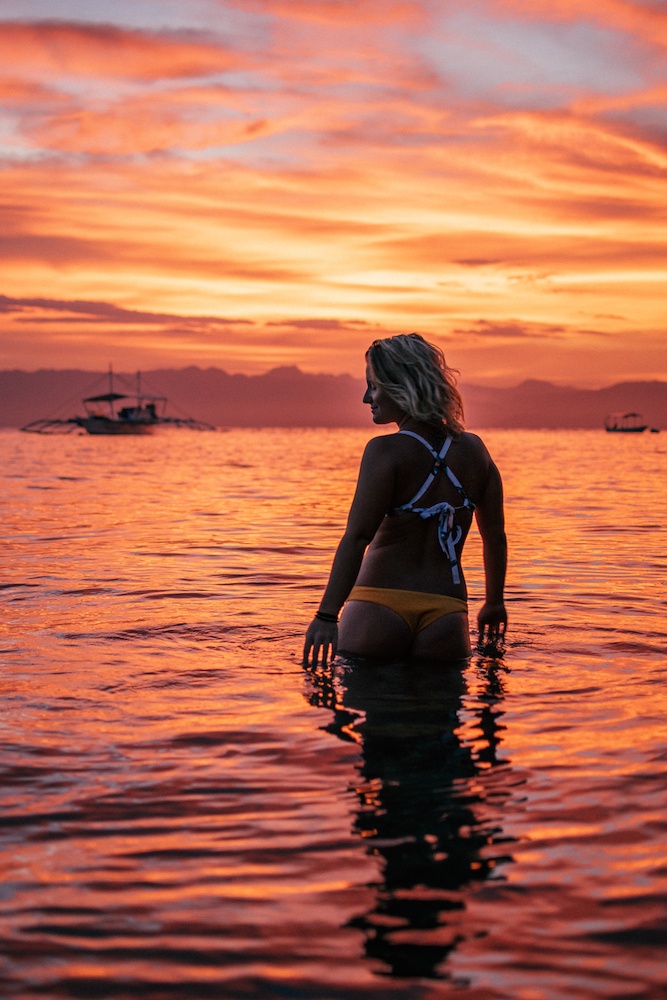
Enjoying a stunning sunset in Moalboal, Cebu Island
Travel Towel
A towel is one of the most important things to pack for a trip to the Philippines. While most lodgings and accommodations you’ll stay at will offer towels, many won’t.
It can also be quite an added responsibility to lug a massive bath towel up a mountain so you can dry off after a dive into a forest pool. That’s what makes this Microfiber Towel so perfect.
It’s super compact and lightweight, comes with a handy carry bag, and the microfibers allow for better drying, especially in an environment as humid and wet as that of the Philippines.

Island hopping in Siargao, Philippines, including Guyam, Naked and Daku islands
International Travel Adapter Plug
Wherever you are in the world, in this day and age you’re going to need a spot to charge your mobile phone and laptop, or any other accessories you may bring around with you day-to-day.
The Philippines has a plug-type that they share with Japan, which you might have issues using if you’re bringing in plugs from overseas.
Everywhere I travel to I always bring with me an international adapter .
They’re a bit bulkier and expensive than country specific ones but I would much rather only have one that I can use all over the world, than have to purchase a new one every time I change country.

Enjoying Kawasan Falls in Cebu Island, Philippines, before the crowds
Waterproof Backpack
When you’re in the Philippines, it’s almost guaranteed that you’ll be constantly in and out of the water, whether you’re at a hotel pool, the seaside or hiking up to a waterfall.
If you’re going to be carrying a camera, or any other electronics with you, you’re going to want to make sure they stay fully dry throughout your adventures. For example if you go kayaking in El Nido .
The KAKA Travel Backpack is the perfect everyday carry backpack for tech lovers exploring near water. It’s made from high-quality terylene oxford fabric which is water and scratch resistant, keeping your valuables safe and dry.
It also has anti-theft features to keep any chancers out of your belongings. It’s well compartmentalized and comes with a secure password lock, which is a big bonus.
| READ MORE: CORON ISLAND HOPPING ULTIMATE GUIDE |
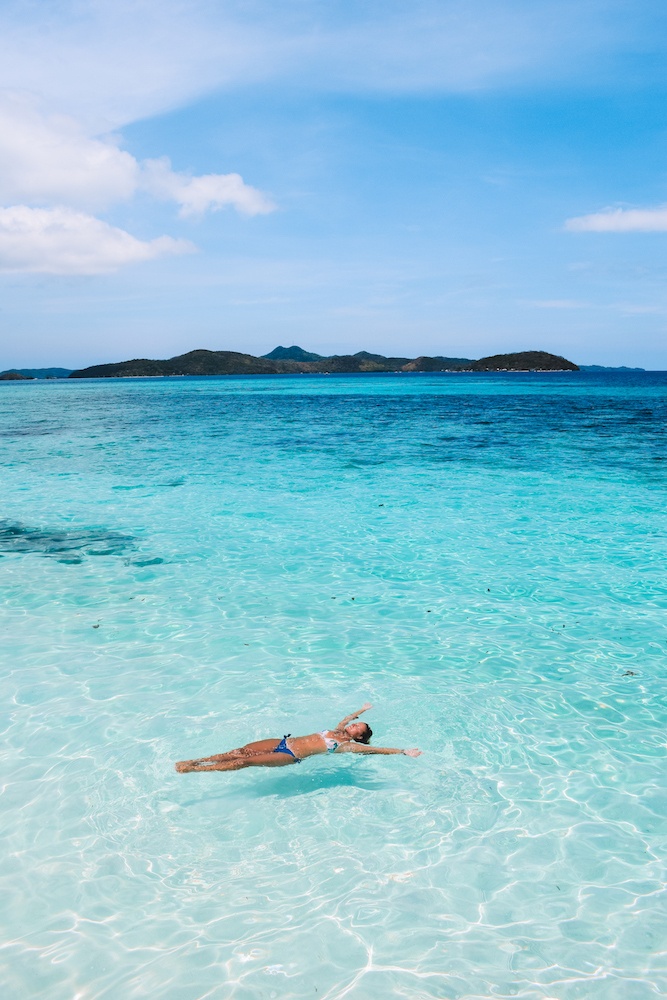
Floating in the clear turquoise water of Malcapuya Island
Underwater Camera
There’s not much that hasn’t been said already about the GoPro HERO6 Black .
While it’s a bit of a luxury, if you can afford to get your hands on one, it’ll make for a lifetime of fantastic memories that you most probably wouldn’t have been able to capture otherwise.
This model shoots at 4K / 30fps, has a touch screen and voice control features, image stabilization, and can be controlled remotely using a mobile phone over BlueTooth.
Whether you’re snorkelling with turtles in Moalboal , island hopping in Siargao , or canyoneering in Cebu Island , it’s the perfect camera for capturing all your underwater escapades.
If you have space in your backpack I highly recommend adding a GoPro dome to your camera gear, so that you can get cool 50 / 50 over and under shots like the one below! (read my full review and guide on how to use a GoPro dome here )

Snorkelling in the crystal clear water of El Nido, shot with a GoPro + dome
Headlamp Flashlight
When you’re out adventuring in an unfamiliar place, a Headlamp Flashlight is essential.
W hether you’re using it for an early morning jog, walking home from a rural restaurant late at night, or even just staying somewhere the lighting isn’t great. It’s a really handy tool to have – and perhaps one of the most essential.
We’ve said it before, you don’t want to get sunburnt in the Philippines.
I noticed when I was in the Philippines that a lot of the local shops often sell moisturiser and sun protection cream that contains whitening elements, I was often unable to find normal sunscreen at small convenience stores.
While I obviously want to protect my skin from the sun, I’m not really looking to become paler, I’m at a beach and tropical destination also to get a tan after all!
It’s easier if you bring good sun block with you from home.

Floating in the Magpupungko rock pools of Siargao
Small First Aid Kit
Another ultimate essential when travelling is a first aid kit.
The Surviveware Small First Aid Kit is the perfect little kit for travel, allowing you to patch small wounds and injuries, and give immediate treatment for any number of minor injuries.
A first aid kit like this can often mean the difference between a small injury, and a medical emergency, especially if you’re far away from professional medical attention.
I’d also recommend you do some reading on how to use the kit properly for treating basic wounds, as that will only give you a headstart over any potential injuries you might encounter.

Enjoying those island hopping days in El Nido, Palawan, shot with a GoPro dome to get the 50/50 over/under effect
What to wear in the Philippines in conclusion
You should now be well on your way to being packed and ready to go to the Philippines.
The Philippines are a stunning destination and I’m sure you will love them, they’re amongst my favourite places I’ve travelled to lately and I definitely want to go back.
I hope you’ve found this packing guide useful in helping you figure out what to pack for the Philippines. It’s based on the items and clothes I brought myself for my Philippines trip.
Enjoyed reading my Philippines packing list? Pin it!
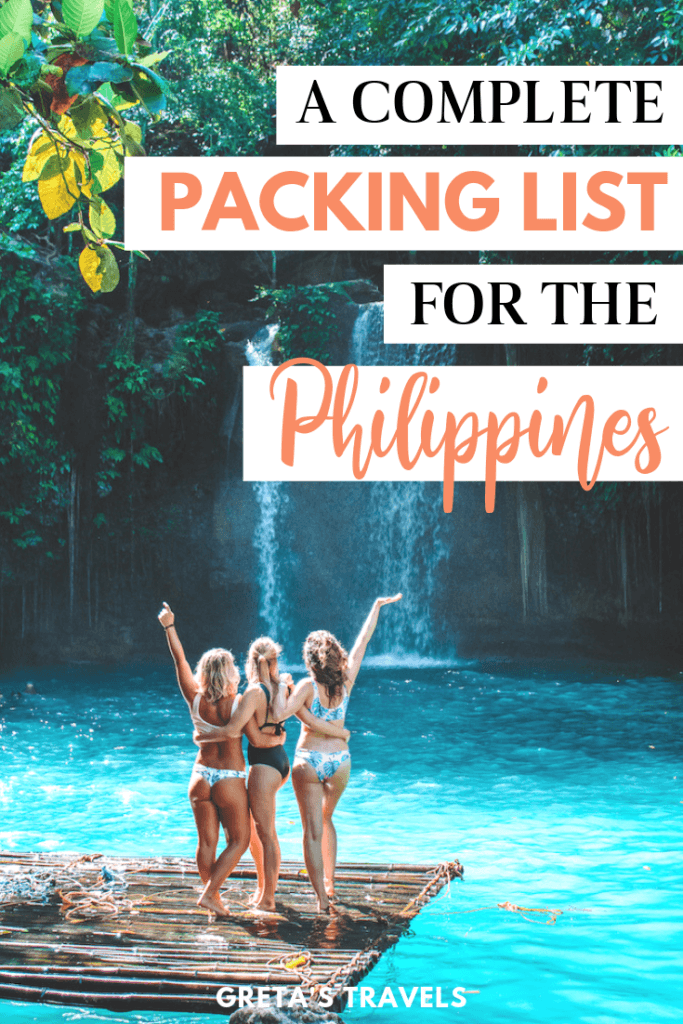
What to Pack When Traveling to The Philippines: The Ultimate Checklist
The Philippines is a beautiful country to visit. Plus, my wife's parents and siblings live there, so we travel there regularly. We have been to Manila, Quezon province, Boracay and Zambales, among others.
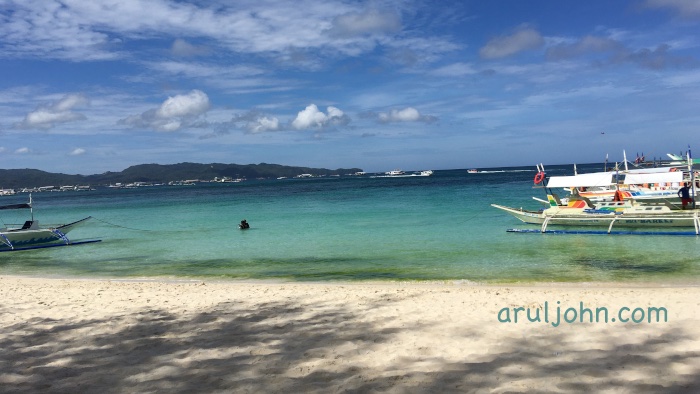
The Philippines has 7,641 islands
Checklist 📝, checklist for vloggers 📹, reusable water bottle 24-32 oz, backpack for daily use, mosquito and insect repellent, swimwear, bathing suits and towels, flip-flops and/or beach sandals, ziploc bags, waterproof phone case, leather travel wallet / passport holder, money pouch or wallet, foreign currency / cash in large denominations $100, first aid kit, portable power bank, travel insurance, fujifilm finepix xp130 waterproof camera, gopro hero11 black camera, flexible tripod, selfie stick, extra memory card, external portable hard drive, what can you buy in the philippines.
Q: How many islands are there in the the Philippines? A: 7,641
If you are going to the Philippines mainly as a tourist, you have 7,641 islands to visit. For a long time, the number was 7,107, and then recently, the National Mapping and Resource Information (NAMRIA) discovered 534 more islands, so the total number is now pegged at 7,641 islands . Out of these, only about 2,000 of these islands are inhabited.
The Philippine islands are divided into these three major groups - Luzon, Mindanao and Visayas. The capital city of Manila, the lovely provinces Quezon and Zambales are in Luzon. The breath-taking Boracay island, also called Bora, is in Visayas. I visited all these places with my family over the years. The Philippines has a ton of beaches, and there are a lot of water sports activities.
After having visited the Philippines multiple times, I compiled a list of useful items that a tourist can consider taking to make it easier to explore the beautiful country and have a great experience. This list will be useful for couples, groups of friends, families with children as well as adventure seekers.
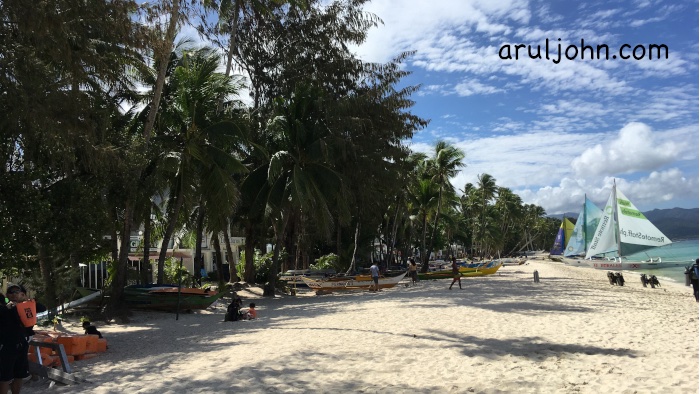
This is a checklist of everything you may find useful. A few items are basic necessities for everyone, while others are for the bloggers and vloggers.
- Reusable Water Bottle
- Backpack for daily use
- Swimwear, bathing suits and towels
- Travel Wallet / Passport Holder
- Money pouch or Wallet
- Cash in large bills ($100)
- First Aid kit
- Toothbrush and toothpaste
If you are a vlogger or blogger or would just like to record your experiences and memories in more detail, this additional checklist would be useful.
- Waterproof Camera
- GoPro Camera for the fast and furious
- Extra Memory Card (usually microSD)
This should be #1 in your list. The Philippines is a tropical country and very hot and humid. You do need a water bottle. I prefer to avoid disposable single-use plastic water bottles. A reusable water bottle, like this Hydro Flask water bottle 24 oz, which keeps the water cold for hours is great to have. Remember to hydrate at all times.

You will need a backpack for daily use, and one with multiple compartments. I have used Swissgear backpacks for decades now. They are very sturdy and comfortable to use. My favorite one is this bag and I've taken it many times to India, the Philippines and other places. I also use it for carrying other things, including my MacBook. This can fit up to a 17 inch laptop.
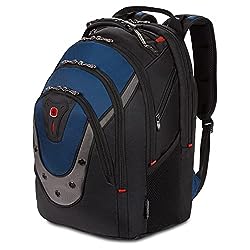
You will be exposed to the sun quite a bit in the Philippines, especially on the beaches. Sunscreen is mandatory. Also, sunscreen can be quite expensive in the Philippines. You will find them at 7 Eleven stores and other convenience stores, but nothing beats buying organic sunscreen from your local Costco or Mom's Organic. Any sunscreen with SPF 25 or higher. SPF 30 blocks 96.7% of UVB rays and SPF 50 sunscreen blocks 98% of UVB rays. Remember to reapply sunscreen every 2 hours of exposure in the sun.
Why Organic Sunscreens?
Organic sunscreens offer a number of health benefits such as protecting against free radicals, acne, and skin aging. Many organic sunscreens contain antioxidants such as vitamin A, B3, and C. These sunscreens are made of mineral-based ingredients that are natural and safe for use on the skin. They contain essential fatty acids, which help to protect the skin from UV damage and dryness. Organic sunscreens do not contain harsh chemicals that can cause skin irritation and allergies. They also have the ability to improve your skin health by providing antioxidants and other nutrients that your body needs. Organic sunscreens are safe for the environment. They should work as well as non-organic sunscreens.
Badger Sunscreen and Sun Bum Sunscreen are good brand organic sunscreens that we use.
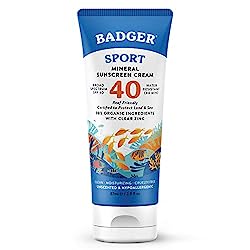
Being a tropical country, the Philippines has a lot of mosquitoes and other insects. There are several cases of malaria and dengue, and these spike up during the rainy season. The other diseases associated with mosquitoes are chikungunya, Zika fever, yellow fever. There are three main kinds of mosquitoes in the Philippines, and these are Aedes, Anopheles, and Culex mosquitoes, and these are responsible.
The CDC has issued travel notices for travelers who are visiting the Philippines.
It is best to be on the safe side and carry a mosquito and insect repellent.
We have used this Murphy's natural lemon and eucalyptus insect repellent for bugs, insects and mosquitoes in the US, the Philippines and India. It is a natural repellent, and provides up to 6 hours of protection against various insects.
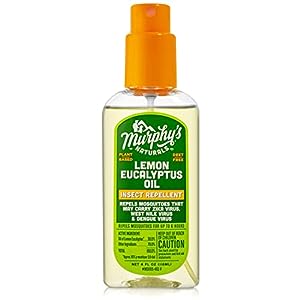
You will most likely visit multiple beaches in the Philippines, except in Manila. So, take a few swimming clothes and other things with you to get ready for the beach experience.
- Swimsuits, bathing suits, swimwear
- Change of regular clothes
Disclaimer: I bought a couple of swimming vests and shorts in Boracay, from multiple beach shops, and really love them.
Flip-flops are the weapon of choice for many Indian and Filipino mothers. They are also great for the beach.
I usually buy my flip-flops from the beach stores in the Philippines and love them. This trip, my wife's friend gifted me a nice pair of flip-flops. You can buy flip-flops from the local stores in the US. Remember that on the beach, you can either walk barefoot or with flip-flops. Regular shoes or sandals are not practical on any beach, unless they are explicitly made for the beach.
I didn't really plan on taking a dry bag on our trip to Boracay this March 2023. And then, I saw many people on the white sandy beaches carrying them. Beach stores were also selling them, and we ended up buying an orange 20-liter dry bag from Boracay. It was very, very useful for the rest of the trip. Now, I can't imagine not having a dry bag for a beach trip.
If you want to buy a dry bag from the US before traveling to the Philippines, you can buy them on Amazon. If you want to buy a bag from the Philippines as a remembrance, then spend your pesos on the beach; the price will be about the same, whether you buy on Amazon in the US, or Philippines in the beach stores.
If you have not bought a dry bag before, a 10-liter dry bag is good for an individual. For a family, a 20-liter dry bag should be fine.

Ziploc bags may be underrated, but they are needed at unexpected times, whether to pack extra food on the go, or protect an item from other items. You may also need to temporarily store your phone in a ziploc bag. It's best to take a combination of snack, sandwich and half-gallon ziploc bags, so you have different sizes for various purposes.
We did not take many ziploc bags from the US, but got a pack of them from the AirBnb place. They proved to be very useful.
If you are going to be taking photos on the beach and inside the water, it's good to buy waterproof phone cases and use them. In the past, I didn't use cases like this, and ended up getting light scratches on my phone screen from tiny sand particles.
We bought a few of these waterproof phone cases before going to the Philippines. Similar cheaper waterproof phone cases are actually sold on the Philippine beaches for around 200 pesos each, but I don't know how good or bad they would be, so I just bought these before we flew to the Philippines.
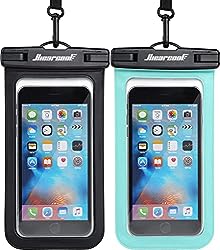
We have used this family leather passport holder for the last few international trips. It is very good quality and we continue to use it. We have been able to put an additional 4 passport-size books into it while visiting India and other documents as well. There are compartments for storing money.
I recommend buying something like this if you are traveling with your spouse and/or kids. When in the Philippines, store this in the hotel's safe, assuming the hotel room has a safe.
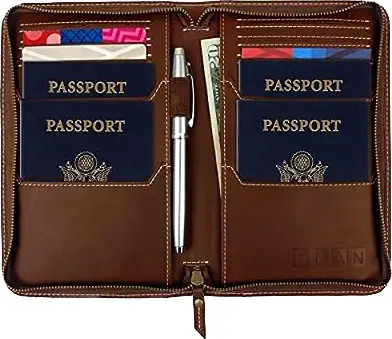
There are occasional pockpockets and money snatchers in tourist spots, so be on the lookout.
You can carry your money in a travel belt or money pouch for an added level of safety. You can buy a hidden travel money belt or wallet to carry your money.
You will find quite a few money exchange kiosks in the Philippines, including on the beach front. You can exchange your foreign currency with Philippine pesos. You get more Philippine pesos if the foreign currency (US dollars or British pounds) are in large denominations. So, it's best if you carry $100 bills or the equivalent.
Also, make sure that the bills are new. A few money exchange shops do NOT accept old bills. Many also do not accept bills with ink marks on them or slightly worn out bills.
You can buy this from a local store for a few dollars. You can also buy one of those flashlights they hang around their neck or forehead.
A first aid kit is always good to have, with the hope that you don't need to use it. In case of emergency, though, it will prove to be useful, as we have experienced before.
You can make your own first aid kit by buying the items individually from CVS, Walgreens or Target, or you could just buy a first aid kit from Amazon .

Wait, what? Didn't the COVID-19 train go by already? It is 2023 already!
Yes, it did. But there are some places where they ask you to mask up. When we were leaving Boracay, the airport officials asked us all to mask up before entering the airport. It was a sudden rule that implemented that day due to rising cases (in April 2023). They didn't ask us to wear a mask when we left Manila for Boracay a few days earlier. Since I always carry extra reusable masks, we were prepared for them.
There were a few malls where they insisted, and in a few other places suggested, that customers wear face masks.
Face mask rules are different in countries and across localities. It's better to carry one, just in case.
If you are going to spend all day outside the hotel room, you may find yourself running out of battery and power outlets. Island hopping and taking multiple boats can drain your battery as well. A portable power bank will be great to have, especially if you are traveling.
This Anker power bank has a capacity of 20100 mAh with 4.8 Amp output.
I do not have any recommendations for travel insurance, but you should find the best one that your local insurance suggests. It will be in your best interest in case you fall sick or get injured while overseas.
We bought this waterproof camera for our then 9-year-old daughter just before our Philippine trip. She enjoyed taking photos and videos while snorkeling in the Philippines. It worked perfectly fine and still works great. Water never entered the electronics area, and I highly recommend this camera if you would like to take high quality underwater photos. This is one of the best and affordable waterproof cameras for underwater ocean photography.

If you like to record your memories on video in the best possible way, a good quality smart phone should be great. If you want to scale up, a GoPro camera would be awesome.

A flexible tripod will be great for more mobile photography and portability. You can buy one where you mount your phone or DSLR camera on. There are many types of tripods that you can use.
Even if you are not a vlogger, you can use a tripod if you are hesitant in giving your camera to strangers and asking them to take your photos [or videos].
If you can find a tripod with a remote control like this one below, it will be an added bonus.
There is no dearth of selfie sticks in tourist spots. However, please make sure that they are not disallowed in certain areas. Also, watch out for your safety when using a selfie stick.

It is a good idea to keep an extra memory card, just in case you run out of memory storage. If you are using a microSD card, SanDisk 256 Extreme PRO microSD is a good option.
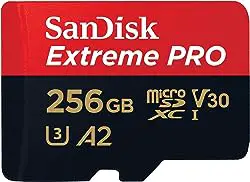
If you are carrying a laptop and need to free up some disk space, you can carry an external portable hard drive. You can buy a Western Digital 5 Terabyte Portable external hard drive from Amazon or the local Costco.
You can buy these in the Philippines without having to buy them in your home country. The quality is great, the price is about the same or cheaper in the Philippines, and can reduce the weight in your luggage.
- Microfiber Towels
- Swim clothes (your mileage may vary)
- Snorkeling Gear
If you have any questions, please contact me at [email protected] . You can also post questions in our Facebook group . Thank you.
Disclaimer: Our website is supported by our users. We sometimes earn affiliate links when you click through the affiliate links on our website.
← Previous Post Grep command in Linux and Unix with examples
Next Post → How to check Facebook Login History and Activity
Philippines Packing List: What To Pack For The Philippines
This is a complete guide on the must-have Philippines packing list essentials.
Having traveled to the Philippines on several occasions, I have a pretty fair idea of what to add to your Philippines packing list and why!
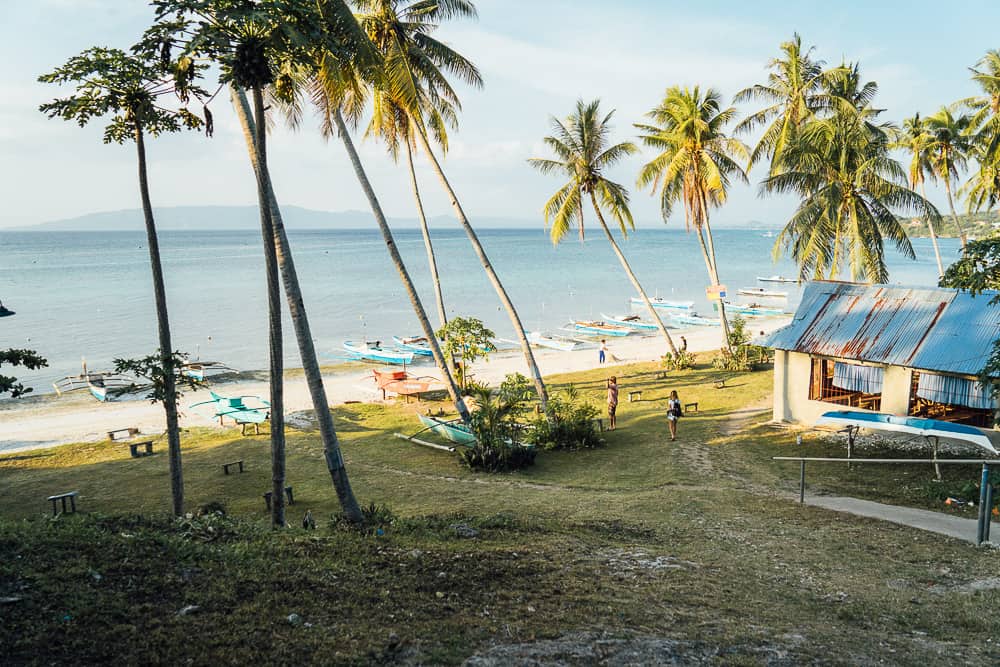
Table of Contents
PHILIPPINES PACKING LIST ESSENTIALS
Waterproof phone case.
Most likely you are going to get up to a lot of adventures overseas whether it be hiking volcanoes, exploring waterfalls, or beach hopping!
A waterproof phone case is a must-have item to keep your phone safe from water damage, sand, and scratches. Suitable for all smartphone models.
Check Prices → Waterproof Phone Case
REUSABLE WATER BOTTLE
A reusable water bottle is an essential Philippines packing list item and something I take with me on all of my adventures.
Not only will the GRAYL GeoPress keep your water clean but you will also be helping the environment by reducing the use of plastics in the Philippines.
The BEST reusable water bottle for travel!
The GRAYL GeoPress is a top-rated reusable water bottle perfect for backpacking, hiking, and traveling.
It allows you to purify water from anywhere and keeps you safe from all waterborne diseases.
Get a GeoPress today and never buy single-use plastic bottles again. Mama Earth will thank you for it!
If you are searching for the best day bag to take with you on your next trip to the Philippines, then look no further.
The Nomatic 20L day bag is one of the best backpacks on the market and perfect for those everyday adventures!
This particular Nomatic bag is water-resistant, anti-theft, lightweight, and incredibly durable.
The Most Functional Day Pack EVER!
The Nomatic 20L Travel Pack is perfect for everyday use and for those shorter 1-3 day adventures.
With 20+ innovative features and a minimalist design, this functional day pack gives you confidence for life on the move!
RAIN JACKET
A lightweight rain jacket is an absolute must when deciding on what to pack for the Philippines.
The weather in the Philippines can be very sporadic due to the tropical climate and a downpour can happen at any moment.
The best rain jackets I have come across for men and women are the North Face waterproof rain jackets with a breathable mesh lining and adjustable hood that can be tucked away inside the collar.
Be prepared and add this essential item to your Philippines packing list.
Check Prices → North Face Lightweight Rain Jacket (Mens)
Check Prices → North Face Lightweight Rain Jacket (Womens)
TRAVEL INSURANCE
There’s an old saying, ‘If you can’t afford travel insurance, you shouldn’t be traveling’.
I have been traveling for almost a decade and in that time I have tried many different travel insurance providers.
As of late, I have been using Heymondo Travel Insurance on every trip, and in my opinion, they are without a doubt the best travel insurance provider on the market.
Have you got travel insurance for your trip?!
We all know accidents can happen and having Heymondo Insurance will save you thousands of dollars if something goes wrong.
Heymondo offers low-cost Travel Insurance to keep you covered on all your adventures.
UNIVERSAL POWER ADAPTER
Arriving in the Philippines and not being able to charge your phone, laptop, camera, and other accessories is a nightmare for most travelers.
I highly recommend equipping yourself with a universal power adapter that can be used everywhere in Asia and also in the UK, Europe, Africa, the United States, and Australia.
Check Prices → Universal Power Adapter
PACKING CUBES
Packing Cubes are honestly my favorite item in my backpack! Perfect for organizing your shirts, pants, jackets, socks, underwear, and more!
Packing cubes make packing easier and more efficient, adding extra space and reducing packing frustration for your next trip to the Philippines.
Check Prices → Packing Cubes
PORTABLE POWER BANK
One of the best things about having a portable power bank is that you can keep your phone and accessories charged on those longer adventures throughout the Philippines.
This Anker Power Bank features 2 USB charging ports, and a rechargeable battery, and works with iPhone, iPad, Samsung, Oppo, and more!
Also included are a micro-USB charging cable, travel pouch, and 18-month warranty.
Check Prices → Anker Portable Power Bank
GOPRO HERO 11 – WATERPROOF CAMERA
One of the most popular cameras on the planet, the GoPro Hero 11 is great for everything involving water shots and fast-paced adventures.
It captures all of the best moments with its wide range of functions that are very simple to use and I highly recommend this camera when backpacking.
Capture All Your Adventures!
I’m sure y’all know by now that GoPro’s are arguably the best action cameras on the planet!
The new GoPro HERO 11 boasts 5.3K video, 27MP photo, HyperSmooth stabilization, and waterproof up to 10m!
SELFIE STICK
Everyone loves a good selfie, right?
This slick and stylish selfie stick can extend to 1.2 m and I find it much easier to shoot photos and videos with the GoPro Hero 11 when it is mounted to the SandMarc Selfie Stick.
This is definitely something you will not regret adding to your packing list for the Philippines.
Check Prices → SandMarc Selfie Stick
INSECT REPELLENT
The last thing you want when visiting the Philippines is a body covered in itchy mosquito bites or worst-case scenario, dengue fever.
As I mentioned earlier, the Philippines has a very tropical climate and mosquitoes along with other nasty insects like to hang out almost everywhere on the islands.
Be sure to get a bottle of insect repellent to throw in your check-in baggage when packing for the Philippines.
Check Prices → Insect Repellent 100% Deet
Yes, sunscreen! Some of us hate it, others can’t live without it.
Nevertheless, it won’t hurt to throw in a tube of sunscreen when packing for the Philippines and I guarantee you will end up using it every single day when you are out exploring!
In my experience, sunscreen is quite expensive in the Philippines so it’s best to pack some before you go.
Check Prices → Sun Bum 50+ Sunscreen
ORGANIC ACTIVATED CHARCOAL TABLETS
I think it is safe to say that 9 out of 10 of us have been a victim of travelers’ diarrhea, more commonly known as ‘Philippines Belly.’
I personally eat a lot of street food and enjoy the odd seafood BBQ on the beach, but typically these types of eateries are known for bacteria-infected or out-of-date foods.
So to be better safe than sorry, I recommend purchasing these Organic Activated Charcoal Tablets which are fast-acting and a safe way to rid your system of the toxins that cause stomach upset.
Check Prices → Organic Activated Charcoal Tablets
SLIP-ON WATER SHOES
I know for sure that you are likely to visit at least one waterfall or find an epic cliff-jumping spot during your travels in the Philippines.
The Philippines is a mecca for water adventures and muddy hikes so definitely consider purchasing an affordable pair of slip-on waterproof shoes when deciding on what to pack for the Philippines.
Check Prices → Slip-On Waterproof Shoes
MICROFIBRE TRAVEL TOWEL
To pack a towel or not to pack a towel? It’s a question I ask myself too often when planning a trip to the Philippines.
A standard beach or bathroom towel can take up quite a lot of space in your travel bag, though a quick-dry travel towel is a perfect alternative!
This lightweight, microfibre travel towel is perfect for the beach, camping, backpacking, and general traveling.
Check Prices → Quick-Dry Travel Towel
Kindles are the best alternative for books when traveling. They’re perfect for long-haul flights, a relaxing read on the beach, or a quiet evening away from the beach bars.
The new Kindles are waterproof, linked with Audible, paired with Bluetooth headphones or speakers, have adjustable light settings to suit indoor/outdoor conditions, have 8GB – 32GB storage, and rechargeable batteries that last for weeks!
Check Prices → Kindle E-Reader
HIDDEN MONEY BELT
I never go on a trip without my hidden money belt. The best thing is that they are always out of sight, hidden beneath your clothing to prevent pickpockets.
They are perfectly designed to keep your cash and other valuables safe for when you are out and about enjoying the Philippines’ nightlife.
Protect Yo’ Thangs!
Keep your cash and other valuables safe with the Pacsafe Anti-Theft Hidden Waist Wallet .
With RFID-blocking and a slash-resistant strap, you’ll never be pick-pocketed again!
TRAVEL PASSPORT WALLET
Along with the money belt, a travel passport wallet is a great addition to your Philippines packing list.
I find it best to always keep my passport, valuables, travel documents, credit cards, and cash all in one place, stowed away in this easily organized travel wallet.
Check Prices → Travel Passport Wallet
A dry bag is always a good item to consider packing on your next trip to the Philippines, especially if you plan to go snorkeling, spend some time at the beach, explore waterfalls, or island hopping.
Best to keep your phone and other valuables safe from water damage.
Check Prices → Earth-Pak Dry Bag
Something that I have surprisingly been using quite often is a head torch
It may not be an essential Philippines packing list item for everyone but if you do plan on hiking one of the volcanoes, which I highly recommend, then this waterproof and USB rechargeable head torch will quickly become your best friend on your Philippines adventures!
Check Prices → Foxelli Head Torch
BEST TIME TO VISIT THE PHILIPPINES
The best time to visit the Philippines is in the dry season, between November and April.
The wet season in the Philippines typically starts in June and ends in November so you’ll want to avoid these months.
More Philippines Travel Guides
Click the button below to view all articles related to the Philippines!
CAMERA GEAR
Whether you’re going on a weekend getaway or a month-long trip, everything listed below is all the gear you will need to take quality travel photos, and not have to carry too much weight.
Camera – Canon EOS R Full Frame Mirrorless
This model of Canon is one of the most affordable, compact, and best mirrorless cameras on the market.
I shoot with this camera every day and the quality of my images has increased dramatically since I made this purchase.
You can browse through all of the images in my blog to give you an idea of what this camera is capable of.
Check Prices On Amazon
Camera Lens – Canon Lens RF 24-70mm F2.8
The 24-70mm is my go-to lens for this camera. It is dust and splash-proof, also included are a lens hood, and cap.
The versatility of this lens allows me to shoot detailed portraits and also offers a wide dynamic range for shooting landscapes.
Drone Camera – DJI Mavic Pro 2
The DJI Mavic Pro 2 drone is at the top of the game when it comes to high-quality images and video, easy-to-control functions, and traveler-friendly capabilities.
The Mavic Pro 2 shoots high-resolution images in JPEG + RAW and high-definition 4K video.
Purchase a DJI Mavic Pro 2 drone today and take your photography and videography to new heights!
Laptop Computer – Apple MacBook Pro 15″
The MacBook Pro laptop is very lightweight and perfect for backpackers traveling the world.
Apart from my camera, the MacBook Pro is my most used accessory when it comes to uploading images, editing photos and videos, writing all of my blog posts, and booking flights and accommodation when I am on the road.
Waterproof Camera – GoPro Hero 11
The most popular camera on the planet. I love using the GoPro 11 for anything involving water shots and for all of my fast-paced adventures.
It captures all of the best moments with its wide range of functions that are very simple to use.
Camera Gimbal – Feiyu Tech AK2000 Camera Stabilizer
The Feiyu Tech AK2000 is an easy-to-use hand-held stabilizer suited for DSLR and Mirrorless cameras of up to 2.8 kg.
Whether you are a travel vlogger or a filmmaker looking to create smooth cinematic video then this is the accessory for you!
Works with Canon, Sony, Nikon, and Panasonic.
Travel Bag – Nomatic 40L Water-Resistant Travel Bag
The 40L Nomatic Travel Bag is the best purchase I have ever made.
This bag has a designated water bottle pocket, RFID-protected pocket, shoe compartment, laptop pocket, compression bag, and more!
The Nomatic Travel Bag is designed to fit the maximum size allowed for carry-on luggage so you’ll never have to spend money on check-in baggage again!
Check Prices On Nomatic
Camera Bag – Lowepro Protactic 450 AW II Camera Bag
The Lowepro Protactic Camera Bag is one of the best camera bags on the market.
It includes a waterproof rain cover, drink bottle holder, padded compartments for DSLR cameras, mirrorless cameras, drones, lenses, accessories, and a laptop pocket.
This is my bag of choice that I take with me on all of my adventures.
Selfie Stick – SandMarc Selfie Stick – Metal Edition
Everyone loves a good selfie, right? This stylish selfie stick can extend to 1.2m and I find it much easier to shoot with the GoPro when it is mounted to the SandMarc Selfie Stick.
GoPro Dome – Underwater Dome Port for GoPro
Have you ever wanted to know how to get those under/over water shots with the GoPro?
This nifty little dome housing can create that perfect shot you are chasing. I use mine every time I am in the ocean!
Memory Card – SanDisk Extreme Pro 64GB SDXC
The best thing about SanDisk Extreme Pro is that it delivers maximum speed for performance and uncompromising images and 4K video quality from my DSLR.
Having 64GB of storage means that I can store my images on the SD card for 2-3 days and not have to worry about running out of space.
Spare Camera Battery – 2 Pack Camera Battery for Canon
Don’t make the same mistake as me by taking hundreds of photos on a big adventure day and running out of battery.
Be prepared with this 2-pack of spare batteries for Canon.
Camera Tripod – Joby GorillaPod
The Joby GorillaPod is suitable for all DSLR and Mirrorless Cameras.
This tripod is lightweight easy to use and perfect for setting up a time-lapse photo or even using it as a selfie stick.
The legs are flexible so you can wrap it around a tree or a pole to get creative with your shot.
External Hard Drive – WD Elements External Hard Drive 4TB
As a photographer, my images and video files take up a lot of space on my MacBook so I use this compact external hard drive to store everything.
With 4TB worth of storage space, this is more than enough for a good year worth of content.
SUMMARY – WHAT TO PACK FOR THE PHILIPPINES
I hope this article finds you well when it comes to your Philippines packing list . If you have any questions, please leave me any comments or questions below and I will get back to you as soon as I can.
For a quicker response, be sure to join Jonny Melon’s Travel Tribe on Facebook and post your questions or recommendations to our awesome community.
TRAVEL RESOURCES FOR YOUR NEXT TRIP
Whether you’re a seasoned traveler or it’s your first trip overseas, here are some useful travel resources to help you kick-start your next adventure!
Search and book accommodation worldwide.
Compare and book cheap flights to anywhere.
Find tickets, tours, and experiences around the world.
Book buses, trains, and transfers online in advance.
Search all rental cars in your next destination.
Need travel insurance for your next trip?
THANKS FOR READING
Hey friend, thanks for reading this guide!
Please know this post may contain affiliate links. When making a purchase through one of my links, I earn a small kickback at no extra cost to you and it’s a big help to keep the site up and running. Rest assured, I only promote products and services that I personally use and recommend.
Click here to find out how you can support the site organically .
Many thanks!
Leave a comment Cancel reply
Notify me of follow-up comments via e-mail.
Plan Your Trip
Travel Guides
Destinations
Hotel Guides
Find Best Tours
Travel Gear
Travel Resources
How To Start A Blog
Photography Guides
Support the site
Follow On Socials
© 2024 Jonny Melon Adventure Travel Blog. All rights reserved.
Privacy Policy | Terms | Sitemap
Update April 12, 2024
Information for u.s. citizens in the middle east.
- Travel Advisories |
- Contact Us |
- MyTravelGov |
Find U.S. Embassies & Consulates
Travel.state.gov, congressional liaison, special issuance agency, u.s. passports, international travel, intercountry adoption, international parental child abduction, records and authentications, popular links, travel advisories, mytravelgov, stay connected, legal resources, legal information, info for u.s. law enforcement, replace or certify documents.
Before You Go
Learn About Your Destination
While Abroad
Emergencies
Share this page:
Philippines
Travel Advisory July 24, 2023
Philippines - level 2: exercise increased caution.
Reissued with obsolete COVID-19 page links removed.
Exercise increased caution to the Philippines due to crime, terrorism, civil unrest, and kidnapping. Some areas have increased risk. Read the entire Travel Advisory.
Do Not Travel to:
- The Sulu Archipelago, including the southern Sulu Sea, due to crime, terrorism, civil unrest, and kidnapping .
- Marawi City in Mindanao due to terrorism and civil unrest .
Reconsider Travel to:
- Other areas of Mindanao due to crime, terrorism, civil unrest, and kidnapping .
Country Summary : Terrorist and armed groups continue plotting possible kidnappings, bombings, and other attacks in the Philippines. Terrorist and armed groups may attack with little or no warning, targeting tourist locations, markets/shopping malls, and local government facilities. The Philippine government has declared a “State of National Emergency on Account of Lawless Violence in Mindanao.”
Read the country information page for additional information on travel to the Philippines.
If you decide to travel to the Philippines:
- Monitor local media for breaking events and adjust your plans based on new information.
- Avoid demonstrations.
- Enroll in the Smart Traveler Enrollment Program (STEP) to receive Alerts and make it easier to locate you in an emergency.
- Follow the Department of State on Facebook and Twitter .
- Review the Country Security Report for the Philippines.
- Visit the CDC page for the latest Travel Health Information related to your travel.
- Prepare a contingency plan for emergency situations. Review the Traveler’s Checklist .
The Sulu Archipelago and Sulu Sea – Level 4: Do Not Travel
Terrorist and armed groups continue to conduct kidnappings on land and at sea for ransom, bombings, and other attacks targeting U.S. citizens, foreigners, civilians, local government institutions, and security forces.
The U.S. government has limited ability to provide emergency services to U.S. citizens in the Sulu Archipelago and Sulu Sea as U.S. government employees must obtain special authorization to travel to those areas.
Visit our website for Travel to High-Risk Areas .
Marawi City in Mindanao – Level 4: Do Not Travel
Civilians are at risk of death or injury due to conflict between remnants of terrorist groups and Philippine security forces in Marawi.
The U.S. government has limited ability to provide emergency services to U.S. citizens in Mindanao as U.S. government employees must obtain special authorization to travel there.
Mindanao – Level 3: Reconsider Travel
The Philippine government maintains a state of emergency and greater police presence in the Cotabato City area, and in the Maguindanao, North Cotabato, and Sultan Kudarat provinces.
Terrorist and armed groups continue to conduct kidnappings, bombings, and other attacks targeting U.S. citizens, foreigners, civilians, local government institutions, and security forces.
Embassy Messages
View Alerts and Messages Archive
Quick Facts
Sufficient space for an entry visa stamp.
No (for tourist travel under 30 days).
Required for travelers from countries with yellow fever.
50,000 pesos/$10,000.
Embassies and Consulates
U.s. embassy manila.
1201 Roxas Boulevard Manila, Philippines 1000 Telephone: + (63) (2) 5301-2000 Emergency After-Hours Telephone: + (63) (2) 5301-2000 Fax: + (63) (2) 5301-2017 Email: [email protected]
U.S. Consular Agency - Cebu City Ground Level, Waterfront Hotel Salinas Drive Lahug, Cebu City Philippines 6000 Telephone: + (63) (32) 231-1261 Emergency After-Hours Telephone: Please contact the U.S. Embassy in Manila: + (63) (2) 301-2000 Fax: +(63) (32) 231-0174 Email: [email protected]
Destination Description
See the Department of State’s Fact Sheet on Philippines for information on U.S.-Philippines relations.
Entry, Exit and Visa Requirements
Visit the website of the Embassy of the Republic of the Philippines in Washington, D.C., for the most current visa information.
If you remain in the Philippines beyond the “admit until” date stamped in your passport by immigration authorities, you may be subject to fines and detention by the Philippine Bureau of Immigration (BI).
Certain foreigners must apply for an Emigration Clearance Certificate (ECC) from BI before they may depart the Philippines.
See the Philippine Bureau of Immigration (BI)'s website for information about Philippine visas, exit clearances, and Alien Certificate Registration (ACR).
See the Philippine Retirement Authority (PRA)'s website for information about the Special Retiree Resident Visa (SRRV).
U.S. citizens who intend to work in the Philippines should contact the Philippines Department of Labor and Employment (DOLE) for information.
The U.S. Department of State is unaware of any HIV/AIDS entry restrictions for visitors or foreign residents of the Philippines.
We advise all U.S. citizens against traveling with potentially prohibited items, such as firearms, on their person or in their checked baggage. While at the airport or traveling in country, possession of prohibited items such as live or spent ammunition or firearms, or anything resembling such items -- whether it be a souvenir, gift, or artifact – may subject the traveler to prosecution and stringent penalties by local authorities. Learn more about how to avoid problems when traveling abroad with firearms.
Check with your airline to determine whether a particular item is allowed for transport, as well as with the appropriate authorities in the Philippines – such as the Philippine National Police and Bureau of Immigration – as well as the appropriate authorities in any transit countries.
You can find information on dual nationality , prevention of international child abduction , and customs regulations on our website.
Safety and Security
Terrorism: Terrorist groups, and those inspired by such organizations, are intent on attacking U.S. citizens abroad. Terrorists are increasingly using less-sophisticated methods of attack – including knives, firearms, and vehicles – to target crowds more effectively. Frequently, their aim is unprotected or vulnerable targets, such as:
- High-profile public events (sporting contests, political rallies, demonstrations, holiday events, celebratory gatherings, etc.)
- Hotels, clubs, and restaurants frequented by tourists
- Places of worship
- Shopping malls and markets
- Public transportation systems (including subways, buses, trains, and scheduled commercial flights)
U.S. citizens should remain alert to the potential for explosions and bombings as part of pre-planned attacks, as well as the threat of kidnapping.
Terrorist and armed groups continue plotting possible kidnappings, bombings, and other attacks in the Philippines. Terrorist and armed groups may attack with little or no warning, targeting tourist locations, markets/shopping malls, and local government facilities.
The Philippine government has declared a “State of National Emergency on Account of Lawless Violence in Mindanao.” On August 24, 2020, dual suicide bombings in Jolo, Sulu, Mindanao, killed 15 people and injured 77 others.
For more information, please visit our website here .
Crime: Confidence games (con games), pickpocketing, Internet scams, and credit/ATM card fraud are common. Be wary of unknown individuals who attempt to befriend you, especially just after you arrive in country. Do not accept food, drinks, or rides in private vehicles from strangers, even if they appear to be legitimate. Solo travelers have been drugged and robbed by strangers after accepting an invitation to visit a tourist destination.
Kidnappings, physical assaults, murder-for-hire, and other violent crimes occur in the Philippines. Philippine government law enforcement agencies are engaged in a nationwide counter-narcotics campaign that has resulted in a sharp increase in violence between police and individuals suspected of involvement in the drug trade. As part of this campaign, law enforcement is engaged in aggressive search and buy-bust operations that could affect foreigners.
Taxis or ride-sharing applications are the recommended form of public transportation. However, taxi drivers and/or individuals using stolen taxi cabs have committed robberies. Ask the hotel, restaurant, and/or business establishment to call a reliable taxi service for you.
- Do not enter a taxi if it has already accepted another passenger.
- Request that the taxi driver use the meter to record your fare.
- Wait for another cab if the driver is unwilling to comply with these requests.
- Make a mental note of the license plate number of your taxi, or text it to someone, should there be a problem.
When driving in the city, make certain that vehicle doors are locked and windows are rolled up.
Travelers have been stopped and robbed shortly after leaving Manila Ninoy Aquino International Airport in a taxi or private vehicle.
One common form of credit/ATM card fraud involves an illicit electronic device attached to ATM card readers that retrieves and records information, including the PIN, from a card's magnetic strip. Refer to the Overseas Security Advisory Council (OSAC) website for more information .
International Financial Scams: See the Department of State and the FBI pages for information on scams.
Internet romance and financial scams are prevalent in the Philippines. Scams are often initiated through Internet postings/profiles or by unsolicited emails and letters. Scammers almost always pose as U.S. citizens who have no one else to turn to for help. Common scams include:
- Romance/online dating
- Money transfers
- Lucrative sales
- Gold purchase
- Contracts with promises of large commissions
- Grandparent/relative targeting
- Free trip/luggage
- nheritance notices
- Work permits/job offers
- Bank overpayments
Victims of Crime: U.S. citizen victims of sexual assault are encouraged to contact the U.S. Embassy for assistance.
Report crimes to the local police at the 911 hotline and contact the U.S. Embassy at +(63)(2) 5301-2000. Remember that local authorities are responsible for investigating and prosecuting the crime.
See our webpage on help for U.S. victims of crime overseas .
- Help you find appropriate medical care.
- Assist you in reporting a crime to the police.
- Contact relatives or friends with your written consent.
- Provide general information regarding the victim’s role during the local investigation and following its conclusion.
- Provide a list of local attorneys.
- Provide our information on victim’s compensation programs in the U.S.
- Provide an emergency loan for repatriation to the United States and/or limited medical support in cases of destitution.
- Help you find accommodation and arrange flights home.
- Replace a stolen or lost passport.
Domestic Violence: U.S. citizen victims of domestic violence are encouraged to contact the Embassy for assistance.
Tourism: Please check with the Philippine Department of Tourism before traveling. The safety standards you might expect of transport and tour operators, including adventure activities such as diving, are not always met. Sufficient safety equipment may not be provided, and recommended maintenance standards and safety precautions may not be observed. Always use available safety equipment, such as lifejackets or seatbelts, even if others do not. If appropriate safety equipment is not available, use another provider. In the event of an injury, appropriate medical treatment is widely available throughout the country. Outside of a major metropolitan center, it may take more time for first responders and medical professionals to stabilize a patient and provide life-saving assistance. U.S. citizens are encouraged to purchase medical evacuation insurance . If you are planning to dive, the Diver’s Alert Network (DAN) provides information on diving accident management.
Local Laws & Special Circumstances
Criminal Penalties: You are subject to local laws. If you violate local laws, even unknowingly, you may be expelled, arrested, or imprisoned. Individuals establishing a business or practicing a profession that requires additional permits or licensing should seek information from the competent local authorities, prior to practicing or operating a business.
The judicial process in the Philippines typically is lengthy, extending for years rather than weeks or months, and individuals charged with a crime can be held in indefinite pre-trial detention as their case makes its way through the judicial system. Penalties for possessing, using, or trafficking in illegal drugs in the Philippines are severe.
Convicted offenders can expect long jail sentences and heavy fines.
If a traveler is found to have any amount of drugs on his or her person, or nearby, when arriving or departing from the Philippines, he or she will be charged with trafficking. Trafficking is a non-bailable charge, and the maximum penalty is life imprisonment. If you intend to enter the Philippines with a prescribed controlled substance (e.g., medical marijuana), obtain clearance from the Philippine government first.
Since June 2016, Philippine authorities have conducted a public campaign against illegal drugs. This has resulted in armed confrontations between authorities and suspected drug dealers and users.
Always carry a copy of your passport in the event that you are asked about your citizenship. You may be questioned by authorities if you take pictures of certain buildings, especially government buildings or military installations. Driving under the influence of alcohol or drugs could land you immediately in jail.
The Philippine Bureau of Immigration (BI) may consider the participation of foreigners in demonstrations or political rallies in the Philippines to be a violation of the terms of admission. Foreign nationals who participate in demonstrations, political rallies, or other activity deemed anti-government in nature may be detained and deported for violating Philippine immigration laws.
In the Philippines, any adult in the company of a minor under 12 years old who is not related within the “fourth degree” may be subject to a severe penalty. U.S. citizens should be aware of this law both to avoid unlawful behavior and to protect themselves against potentially frivolous accusations.
Furthermore, some laws are also prosecutable in the United States, regardless of local law. For examples, see our website on crimes against minors abroad and the Department of Justice website.
Arrest Notification: If you are arrested or detained, ask police or prison officials to notify the U.S. Embassy immediately. See our webpage for further information.
Counterfeit and Pirated Goods: Although counterfeit and pirated goods are prevalent in many countries, they may still be illegal according to local laws. You may also pay fines or have to give them up if you bring them back to the United States. See the U.S. Department of Justice website for more information.
Faith-Based Travelers: See the following webpages for details:
- Faith-Based Travel Information
- International Religious Freedom Report – see country reports
- Human Rights Report – see country reports
- Hajj Fact Sheet for Travelers
- Best Practices for Volunteering Abroad
LGBTQI+ Travelers: There is no prohibition on entry into the Philippines by LGBTQI+ individuals. Transgender travelers should be aware that immigration officials may require supporting documents if the gender in the traveler’s passport does not reflect the gender expression of a transgender person. According to Philippine law, an individual’s sex must match that assigned at birth as reflected on the official birth certificate, even in cases of post-operative sex reassignment.
Same-sex relationships are not illegal in the Philippines, but they lack legal recognition. No federal law prohibits discrimination against LGBTQI+ individuals. Several cities, however, have passed local ordinances protecting LGBTQI+ rights. Despite these legislative efforts, LGBTQI+ individuals continue to face discrimination and harassment.
See our LGBTQI+ Travel Information page and section 6 of our Human Rights Report for further details.
Travelers with Disabilities: Streets, buildings, and public transportation may lack facilities for persons with disabilities. Most public buildings are inaccessible to persons with physical disabilities or mobility impairments. Government efforts to improve access to transportation for persons with disabilities are limited due to weak implementing regulations.
There are local stores in the Philippines for durable medical equipment (DME) and some pharmacies also carry limited medical supplies and equipment.
- For information regarding disability laws, please visit the Philippines National Council on Disability Affairs website.
Students: See our Students Abroad page and .
Women Travelers: See our travel tips for Women Travelers .
For emergency services in the Philippines, dial 911.
Ambulance services are not widely available, and training and availability of emergency responders may be below U.S. standards. Not all ambulances are equipped with state-of-the-art medical equipment.
We do not pay medical bills. Be aware that U.S. Medicare/Medicaid does not apply overseas. Most hospitals and doctors overseas do not accept U.S. health insurance. For more information about TRICARE medical services overseas (a health care program for uniformed service members, retirees, and their families), including possible vaccinations, please visit their Tricare-overseas website .
Medical Insurance: Make sure your health insurance plan provides coverage overseas. Most care providers overseas only accept cash payments. See our webpage for more information on insurance overseas. Visit the U.S. Centers for Disease Control and Prevention for more information on type of insurance you should consider before you travel overseas.
We strongly recommend supplemental insurance to cover medical evacuation.
Always carry your prescription medication in original packaging, along with your doctor’s prescription. Check with the Philippine Bureau of Customs to ensure the medication is legal in the Philippines.
Vaccinations: Be up-to-date on all vaccinations recommended by the U.S. Centers for Disease Control and Prevention.
Further health information:
- World Health Organization
- U.S. Centers for Disease Control and Prevention (CDC)
Air Quality: Visit AirNow Department of State for information on air quality at U.S. Embassies and Consulates.
The U.S. Embassy maintains a list of doctors and hospitals in the Philippines. We do not endorse or recommend any specific medical provider or clinic.
Health facilities in general:
- Adequate health facilities are available throughout the country but health care in rural areas may be below U.S. standards.
- Public medical clinics lack basic resources and supplies.
- Hospitals and doctors often require payment “up front” prior to service or admission.
- Patients bear all costs for transfer to or between hospitals.
- Psychological and psychiatric services are limited, even in the larger cities, with hospital-based care only available through government institutions.
- Hospitals usually require advance payment or proof of adequate insurance before admitting a patient.
- U.S. citizens have lodged a large number of complaints about unethical business practices, prices, and collection measures against some of the hospitals in the Philippines. Travelers should make efforts to obtain complete information on billing, pricing, and proposed medical procedures before agreeing to any medical care.
- Be aware that some hotels or resorts may have exclusive agreements with medical providers, which may limit your choices in seeking emergency medical attention.
- Medical staff may speak little or no English.
- Generally, in public hospitals only minimal staff is available overnight in non-emergency wards. Consider hiring a private nurse or having family spend the night with the patient, especially a minor child.
Medical Tourism and Elective Surgery:
- U.S. citizens have suffered serious complications or died during or after having cosmetic or other elective surgery.
- Medical tourism is a rapidly growing industry. People seeking health care overseas should understand that medical systems operate differently from those in the United States and are not subject to the same rules and regulations. Anyone interested in traveling for medical purposes should consult with their local physician before traveling and visit the U.S. Centers for Disease Control and Prevention website for more information on medical tourism.
- We strongly recommend supplemental insurance to cover medical evacuation in the event of unforeseen medical complications.
- Your legal options in case of malpractice are very limited in the Philippines.
- Although the Philippines has many elective/cosmetic surgery facilities that are on par with those found in the United States, the quality of care varies widely. If you plan to undergo surgery in the Philippines, make sure that emergency medical facilities are available and professionals are accredited and qualified.
Pharmaceuticals:
- Exercise caution when purchasing medication overseas. Pharmaceuticals, both over the counter and requiring prescription in the United States, are often readily available for purchase with few controls. Counterfeit medication is common and may prove to be ineffective, the wrong strength, or contain dangerous ingredients. Medication should be purchased in consultation with a medical professional and from reputable establishments.
- U.S. Customs and Border Protection and the Food and Drug Administration are responsible for rules governing the transport of medication to the United States. Medication purchased abroad must meet their requirements to be legally brought back into the United States. Medication should be for personal use and must be approved for usage in the United States. Please visit the U.S. Customs and Border Protection and the Food and Drug Administration websites for more information.
Water Quality:
In many areas, tap water is not potable. Bottled water and beverages are generally safe, although you should be aware that many restaurants and hotels serve tap water unless bottled water is specifically requested. Be aware that ice for drinks may be made using tap water.
Adventure Travel:
- Visit the U.S. Centers for Disease Control and Prevention website for more information about Adventure Travel .
The following diseases are prevalent:
- Tuberculosis
- Chikungunya
- Visit the U.S. Centers for Disease Control and Prevention website for more information about Resources for Travelers regarding specific issues in the Philippines.
Air Quality:
- Air pollution is a significant problem in several major cities in the Philippines. Consider the impact seasonal smog and heavy particulate pollution may have on you and consult your doctor before traveling if necessary.
Travel and Transportation
Road Conditions and Safety: Vehicle traffic is dense and unpredictable. The road system is frequently congested, and drivers are often undisciplined. Consider the risks of driving your own vehicle if you are not used to Philippine road conditions. Avoid driving off the national highways and other paved roads, especially at night. Be extra vigilant when crossing the street. Do not expect vehicles to stop.
Traffic Laws: If you are involved in an accident, contact the local police, and attempt to stay inside your car until the police arrive before engaging with the other driver. Do not attempt to negotiate with drivers until police arrive. Drivers often ignore or do not yield to emergency vehicles, which may delay their arrival to the scene of an accident.
Always have a valid driver’s license and relevant documents with you when driving. Please review the following notices circulated by the Metropolitan Manila Development Authority (MMDA) to avoid scams and requests for bribes from apprehending officers: List of Traffic Violations and Penalties, No Contact Traffic Apprehension Policy, and Procedure in Settling Traffic Violations The MMDA also publishes guidelines on what to do during vehicular accidents .
Public Transportation: Exercise caution while traveling by inter-island ferryboats or other public transportation. Avoid overcrowded or unsafe transport. There have been 19 major inter-island ferryboat accidents since 2012, two with significant loss of life. U.S. government employees are advised not to use inter-island ferry boat services unless they are the only means of transportation available. There have also been a series of bus accidents due to poor bus maintenance or driver error. While taxis are the recommended form of public transportation, there have been safety issues using taxis. Please refer to our Safety and Security section for more information.
See our Road Safety page for more information. Visit the Philippine Department of Tourism website , the national authority responsible for road safety.
Aviation Safety Oversight: The U.S. Federal Aviation Administration (FAA) has assessed the government of the Philippine’s Civil Aviation Authority as being in compliance with International Civil Aviation Organization (ICAO) aviation safety standards for oversight of the Philippine’s air carrier operations. Further information may be found on the FAA’s safety assessment page.
Maritime Travel: Mariners planning travel to the Philippines should also check for U.S. maritime advisories and alerts . Information may also be posted to the U.S. Coast Guard homeport website and the NGA broadcast warnings .
For additional travel information
- Enroll in the Smart Traveler Enrollment Program (STEP) to receive security messages and make it easier to locate you in an emergency.
- Call us in Washington, D.C. at 1-888-407-4747 (toll-free in the United States and Canada) or 1-202-501-4444 (from all other countries) from 8:00 a.m. to 8:00 p.m., Eastern Standard Time, Monday through Friday (except U.S. federal holidays).
- See the State Department’s travel website for the Worldwide Caution and Travel Advisories .
- Follow us on Twitter and Facebook .
- See traveling safely abroad for useful travel tips.
Review information about International Parental Child Abduction in Philippines . For additional IPCA-related information, please see the International Child Abduction Prevention and Return Act ( ICAPRA ) report.
Travel Advisory Levels
Assistance for u.s. citizens, philippines map, learn about your destination, enroll in step.

Subscribe to get up-to-date safety and security information and help us reach you in an emergency abroad.
Recommended Web Browsers: Microsoft Edge or Google Chrome.
Check passport expiration dates carefully for all travelers! Children’s passports are issued for 5 years, adult passports for 10 years.
Afghanistan
Antigua and Barbuda
Bonaire, Sint Eustatius, and Saba
Bosnia and Herzegovina
British Virgin Islands
Burkina Faso
Burma (Myanmar)
Cayman Islands
Central African Republic
Cote d Ivoire
Curaçao
Czech Republic
Democratic Republic of the Congo
Dominican Republic
El Salvador
Equatorial Guinea
Eswatini (Swaziland)
Falkland Islands
France (includes Monaco)
French Guiana
French Polynesia
French West Indies
Guadeloupe, Martinique, Saint Martin, and Saint Barthélemy (French West Indies)
Guinea-Bissau
Isle of Man
Israel, The West Bank and Gaza
Liechtenstein
Marshall Islands
Netherlands
New Caledonia
New Zealand
North Korea (Democratic People's Republic of Korea)
Papua New Guinea
Republic of North Macedonia
Republic of the Congo
Saint Kitts and Nevis
Saint Lucia
Saint Vincent and the Grenadines
Sao Tome and Principe
Saudi Arabia
Sierra Leone
Sint Maarten
Solomon Islands
South Africa
South Korea
South Sudan
Switzerland
The Bahamas
Timor-Leste
Trinidad and Tobago
Turkmenistan
Turks and Caicos Islands
United Arab Emirates
United Kingdom
Vatican City (Holy See)
External Link
You are about to leave travel.state.gov for an external website that is not maintained by the U.S. Department of State.
Links to external websites are provided as a convenience and should not be construed as an endorsement by the U.S. Department of State of the views or products contained therein. If you wish to remain on travel.state.gov, click the "cancel" message.
You are about to visit:

Philippines travel requirements 2024: What travelers need to know
We aim to keep this post updated about Philippines travel in 2024 with official Philippines travel restrictions, requirements, and health and safety guidance. Our goal is to help you make informed decisions so you can travel confidently, safely, and responsibly in this new post-pandemic world of ours.
As restrictions can vary based on the traveler’s citizenship, we will focus primarily on rules affecting U.S. citizens.
Last update: February 21, 2024. Originally published: October 2020.
Disclosure: This post contains some affiliate links. If you make a purchase through one of our links, we may receive a small commission, at no additional cost to you.
* Get our free Post-Pandemic Travel Checklist *
February 2024: “Our main requirement for travel to the Philippines was completing an online form within 72 hours of arriving. Our airline reminded us to do the same process before departing the Philippines as well. The form asks for flight info, countries visited in the last 30 days, and whether you have been sick or exposed to someone ‘known to have communicable/infectious disease’ in the past 30 days. We then received a QR code to show at the airport. We did not need to show the QR code upon arrival or departure (airline staff told me it’s actually for Philippine passport holders only). At immigration they had no questions for us on arrival or departure.” – Michelle & Jedd, Intentional Travelers, American digital nomads
Photo credit: Anwar Y January 2024: “I visited the Philippines for 3 weeks in January with visits to places on 4 major islands across the country [Luzon, Bohol, Cebu, and Palawan]. Overall tourism was open and accessible within the country, flights between islands were the easiest, with long overland travel times (due to local-roads / lack of highways). We did not experience any travel restrictions while within the country. There is a pre-arrival form that must be filled out that is used for tracing but really we didn’t find it used much beyond immigration. There were requirements for providing hotels for contact tracing but it was haphazardly enforced, such as only 1 bus company asked for this information. Access to all services is open, we did notice that for many services employees were masked but there was no requirement for tourists to mask. We found covid tests readily accessible and often in vending machines such as in the airport. One thing of note is that people did appear to be sick. My entire group ended up sick (non-covid) but the sinus cold did impede our ability to do some activities (scuba diving).” – Anwar Y of Beyond My Door , American traveler
At the end of the post, we share on-the-ground perspectives from local residents and travelers to the Philippines so you can get a true sense of what to expect. We’re thankful to one of our team members from the Philippines for co-creating this post with us!
Table of Contents
Is the Philippines open for travel? Can I travel to the Philippines right now?
Effective July 2023 , all travelers are allowed entry in the Philippines without restrictions. The following are no longer required to enter the Philippines:
- Proof of Vaccination
- Proof of negative Covid test (for unvaccinated or partially vaccinated travelers)
- Travel insurance
However, travelers must still meet the following requirements:
- As of April 2023, all travelers, including children. are required to register via the Electronic Travel Declaration System no earlier than 72 hours from the intended arrival.
- Passport must be valid for at least six months at the time of arrival.
- Have booked a return or outbound ticket (affiliate link).
U.S. citizens are allowed visa-free entry into the Philippines for 30 days.
See the list of visa exempt countries here.
Philippines travel restrictions have changed over time, please check back for updates.
Quarantine rules in the Philippines: What happens if I get Covid?
All travelers arriving in the Philippines are not required to quarantine.
Foreign tourists who test positive for Covid while in the Philippines must continue to isolate and undergo quarantine.
For cases with moderate to severe symptoms or belonging to the immunocompromised category, isolation of 10 days from onset of signs and symptoms is required. Patient may be required to be admitted to a health care facility based on the advice of the attending physician.
For severe cases and immunocompromised cases , isolation is required and may end only upon the advice of their health care provider.
Patients with mild symptoms or asymptomatic are advised to isolate at home for five days or until fever-free for at least 24 hours without using antipyretics such as paracetamol, whichever is earlier.
Foreign tourists may be required to cover the costs of quarantine accommodations or hospitalization.
Recommended Quarantine Hotels in the Philippines:
Bayview Park Hotel Manila – Located at the heart of Manila, near the Ninoy Aquino International Airport and US Embassy, Bayview Park Hotel has modern and cozy rooms with air conditioning, cable TV, personal safe, and free Wi-Fi. The hotel also features an outdoor swimming pool and coffee shop with local and international dishes. Estimated cost for a 14-day stay is $748-$997. Book this hotel >
Hotel Durban – Hotel Durban is located in Makati, Manila. The hotel features air conditioned rooms, restaurant, bar, and free Wifi. Estimated cost for a 14-day stay is $471-$871. Book this hotel >
Somerset Millennium Makati – Somerset Millennium is a high-end hotel conveniently located in the vibrant business district of Makati City, 30 minutes from the Ninoy Aquino International Airport. The hotel offers elegant rooms with free Wifi, air conditioning, and flat screen TVs. There’s also an on-site restaurant, fitness center, spa, and swimming pool. Estimated cost for a 14-day stay is $1657-$1888. Book this hotel >
Radissan Blu Cebu – The Radissan Blue is one of Cebu’s top rated five star hotels. It has swimming pool, spa, fitness center, on-site restaurant, and airport transfers. Rooms come with air conditioning, Wifi, and a fantastic breakfast. Estimated cost for a 14-day stay is $1022-$1498. Book this hotel >
Can I travel to the Philippines in May 2024? Can I travel to Philippines this Summer?
The Philippines is open to tourists in May. Read on for details and check back for updates.
What is it like to fly to Manila MNL Ninoy Aquino International Airport right now? Philippine Airlines reports p assengers are no longer required to wear face masks, though it is still recommended.
Do I have to quarantine when traveling to the Philippines? No. Only travelers who test positive will need to quarantine. See details above.
Does Philippines check COVID-19 symptoms of incoming travelers? Travelers undergo a passive thermal scan upon arrival in the airport. Hats must be removed, otherwise just walk through.
Does Philippines require a negative Covid 19 test for travelers? No. As of July 2023, a negative test is no longer required for travelers to enter the Philippines.
Do I have to undergo a Covid test upon arrival in the Philippines? No. Covid test upon arrival is no longer required.
Does Philippines require a proof of Coronavirus vaccine for travelers? No. A proof of Coronavirus vaccine is no longer required.
Do I still need to provide a negative Covid test or quarantine if I have been vaccinated? Quarantine and negative Covid test is no longer required for travelers.
Is a booster shot required for travel to the Philippines? At this time, booster shots are not required in the Philippines. There is currently no expiration period set for the validity of vaccinations.
Do I need to provide proof of vaccination or test for domestic flights in the Philippines? Most destinations within the Philippines no longer require a proof of vaccination or test for domestic flights.
However, local authorities may have specific requirements. It is recommended to check with the destination’s local government unit (LGU) through their official website or Facebook page for the latest rules and guidelines.
What healthcare options are available to travelers in the Philippines who get the virus? Philippine hospitals and clinics are open. Foreign visitors can get PCR or antigen test at the Philippines Department Of Health accredited testing centers .
Foreign visitors who get the virus would pay out of pocket for medical services. The medical expenses for the treatment will vary depending on the severity of the condition, the hospital where the patient is admitted, confinement duration, and other factors.
For travel insurance that covers Covid, check out Nomad Insurance by Safety Wing >
What service businesses and restaurants are open in the Philippines? Markets and groceries, which are considered essential businesses, remained open throughout the duration of the community quarantine in the Philippines.
Restaurants are permitted to accept dine-ins. Malls, personal care services, and entertainment establishments are also back in business following health and safety protocols.
More hotels, resorts, and other accommodation establishments are allowed to operate under different community quarantine classifications and cater to local travelers.
Do I need to provide proof of vaccination or a negative test to enter or stay at hotels, resorts, and other accommodation establishments in the Philippines? Most accommodation establishments in the Philippines no longer require a proof of vaccination or a negative Covid test.
It is advisable to visit the hotel website or official social media pages to know their latest guidelines. Additionally, contacting the establishment directly is recommended for any clarifications.
What public gatherings are allowed in Philippines? Public gatherings are allowed but must follow health and safety protocols.
Are face masks required in the Philippines? As of July 2023 , wearing of face masks is no longer required in the Philippines.
Are buses running in the Philippines? Yes. Public transportation is available in the Philippines, including buses, jeepneys, trains, tricycles, and vans.
Will the Philippines impose new Covid restrictions? What’s next is difficult to predict. Historically, the Philippines has imposed nationwide as well as localized COVID-19 restrictions when strains on the health care system might become unsustainable.
How has the Coronavirus impacted the Philippines?
The first case of the Coronavirus was confirmed in the Philippines January 30, 2020 and the country was placed under a State of Public Health Emergency on March 8, 2020.
As a measure to limit the spread of the virus, lockdowns or community quarantines have been imposed since March 15, 2020. Despite implementing strict lockdowns, the country still experienced surges in cases, reporting more confirmed cases and deaths than any other Southeast Asian country.
The onslaught of the virus put the country into recession with mass unemployment. The restriction on travel also affected tourism, which is a large industry in the country.
Over two thirds of the population has been vaccinated in the Philippines.
In July 2023, the State of Public Health Emergency has been lifted throughout the Philippines. All restrictions due to Covid 19 are no longer in effect.
For the current situation in the Philippines, including: total COVID-19 positive cases; total cases in the Philippines; and COVID-19 testing in the Philippines, please see the Philippines Department of Health site .
What should you pack for safely traveling in the Philippines?
😷 Face Masks – Face coverings are optional but recommended in crowded areas. Find N95 masks at Bona Fide > or designer options at Vida >
💊 Medicine – Bring enough prescription and over-the-counter medication for your entire trip to avoid trips to the clinic.
💳 Vaccine Card Holder – Protect that paper CDC card when traveling abroad (if your country doesn’t offer a digital version). Get a simple plastic protector > or Vegan leather clippable > or Leather passport + card combo holder >
👃 Covid self-test – The most studied rapid antigen self-test with FDA emergency authorization. NOT valid to enter countries. Use for your own peace of mind. Order from CVS > or Walmart >
💧 Sealed water bottle – Make sure your reusable water bottle has a lid that’s not exposed to the air. We use one of each of the following: Shop insulated water bottles with protective lid > Shop water bottles with purification filter and protective lid >
✈️ Travel insurance that covers Covid – We’ve started using Nomad Insurance by Safety Wing for affordable evacuation, international medical, and trip coverage.
What do Philippine locals and recent travelers say about visiting the Philippines now?
What is it like to visit the Philippines right now? It’s our goal to provide regular updates here from real people on the ground, to help potential visitors know what to expect. The following are subjective opinions only. Official travel guidance can be found above.
November 2023 – Gladis of Happiness on the Way , Filipina citizen: “I flew from Frankfurt to Clark International Airport (Philippines) in September and was surprised by the low number of tourists. I’ve traveled around Clark and Manila for a month and most of the businesses like cafes, restaurants and even tours are all back – I love how I was able to see famous spots with less tourists!
Healthcare, testing, and local attractions are fully operational in most cities and touristy towns. Hotels and restaurants provide sanitizers, and staff are vaccinated with open-air setups. Airports in the Philippines have synchronized e-travel for smoother lines. Most popular destinations have maximum tourists now, so booking ahead is advisable to secure your spot.”
June 2023 – Liza of Always in Spain : “I’m in the Philippines for one month (May to June 2023) to visit family and travel around the country.
Tourism in the Philippines is thriving again! Tourist attractions are open without restrictions, tour operators are offering services again, and transportation (air & land) look fully open for domestic travel so it’s easy to get around the country.
Aside from having to complete a declaration upon arrival, things are back to normal in the Philippines. Some people still prefer to mask up (especially indoors) but it’s not obligatory.
Pharmacies are plentiful in the large cities so you have easy access to home testing kits and over-the-counter medication if you need it. If you’re traveling to more remote areas, it’s a good idea to have your own emergency medical kit just in case.”
February 2023 – Kieren of Wales Guidebook , UK traveler: “My girlfriend and I visited the Philippines for 10 days in February 2023 with a return trip from Bali. Tourism in the Philippines is mostly back to normal. Aside from being asked to wear masks at airports and onboard with some airlines, there were no other Covid requirements or restrictions and I can highly recommend visiting at this time.
Although signage regarding Covid restrictions (such as mask wearing) are still on display across the country, these are rarely enforced. You may still see staff wearing masks in supermarkets and shopping malls. Pharmacies are readily available in most areas frequented by tourists and the level of English is usually enough to get any medicine you need. Chain pharmacies, such as Watsons, are more likely to speak a good level of English.”
October 2022 – Jennifer Terri, Philippines:
September 2022 – Elizabeth, visitor from UK: “I visited the Philippines for a 3-week trip to explore its top destinations. The locals are still wearing masks, however, it’s a bit more relaxed, especially in the open public area. When you enter an establishment, you will be asked or expected to put on the mask.
Most businesses related to tourism are open or in service such as airlines, hotels, and tour agencies. Locals seems to be getting back on travelling as well, but it seems like the airlines are not well-staffed resulting in long queues, although very little delay.”
July 2022 – Angeline of GoAroundPhilippines.com , resident: “All tourist destinations in the country are open and locals mostly enjoy them now. It is the best time to visit as there are still few tourists around and you can easily get cheaper rates for hotels and tours as companies need tourists.
The islands and beaches have gone through a bit of a break so they’ve become more vibrant and marine animals are plenty. There are still no long lines or crowds either.”
March 2022 – Camille, resident of the Philippines: “Things are finally the closest it’s been to “back to normal” after two long years of strict quarantine rules. Everything feels much more relaxed and people are happy to go out, dine out, party, and travel. Even though it feels like back to normal, most people still comply with wearing masks almost everywhere so this is something foreigners should expect and be sensitive in following.
Many places still are at limited capacity though, so lines are long and crowds can be packed. As much as possible, we appreciate it when tourists are understanding of any delays or mishaps. There’s a period of adjustment since it’s only been recently that things are as they were before. Many workers have been affected and are now happy to get back to work, so patience and tips are appreciated. At the end of the day, tourism has always played a big part in our economy so you’ll definitely feel welcome.”
July 2021 – Ailene, resident of Manila: “The Philippines does not currently allow tourists to enter the country. Majority of the residents are hesitant to the reopening of the borders to foreign tourists because of the fear that our healthcare system would collapse if there will be a surge in Covid cases. In Metro Manila, people (except children and senior citizens) are free to move within the city as long as the curfew, social distancing, face mask, and face shield rules are observed. Traveling to other places outside Metro Manila is also possible. Travel restrictions are generally being followed. However, there were some instances when people were caught violating the rules such as faking their Covid results, partying, and not following the curfew. Access to healthcare is a little difficult. In some hospitals and clinics, patients without an appointment will not be allowed to enter. But virtual consultation is also available. Getting tested for Covid is easier. People have an option to get tested at clinics, hospitals, drive through testing centers, or at home. Access to local attractions is possible as long as the needed requirements are provided. A negative Covid test is required in some destinations, while a health certificate is enough for some. Right now, the safest and preferred places to travel to are private resorts and outdoor open areas like parks and beaches where interaction with other people can be avoided as much as possible. Restaurants, groceries, and other food service can be accessed easily. Although public transportation is available for travelers, it is safer to travel in private vehicles.”
June 2021 – Tina of https://iwentanyways.com , resident of Philippines: “Many provinces in the country are not yet open to tourism, and those that are already open have requirements that need to be followed. Locals have varying reaction to their place opening up to tourists. Some support the opening due to financial reasons, while those that are not in favor are concerned that these tourists might spread the virus in their place. Travel restrictions are being followed by locals and visitors, but I’ve heard of stories of some people who do not follow it but are able to get away with it. As for the healthcare and testing, most of the hospitals and testing centers are available in the capital cities. Some provinces that have opened for tourism require visitors to register in an app and wait for the approval of their visit before they could travel. This is required for contact tracing purposes.”
Even if you can’t go to the Philippines right now, you can still get started planning your Philippines trip for the future.
Check out our other Philippines travel resources: – Best Places to Visit in the Philippines on a Budget
If you have questions or updates about travel to the Philippines during the Coronavirus crisis or post-pandemic, please let us know in the comments below. *Please note that we are not able to advise travelers regarding specific situations outside of the free information provided above. We recommend working with a professional travel agent if you need assistance particular to your trip.
~ Pin this post for later or share with friends ~
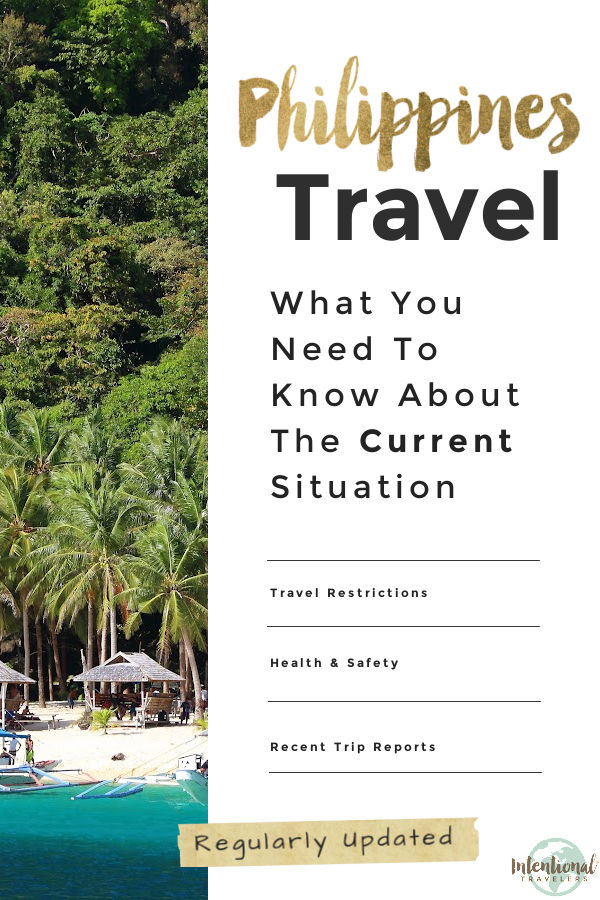
Disclaimer: Please note, travel restrictions change frequently. Readers must take responsibility for verifying information through official sources like the State Department and CDC, in respect to their specific situations. No responsibility can be accepted by Intentional Travelers for action or inaction as a result of information provided through IntentionalTravelers.com. Any information provided here is issued as general information only.
Similar Posts
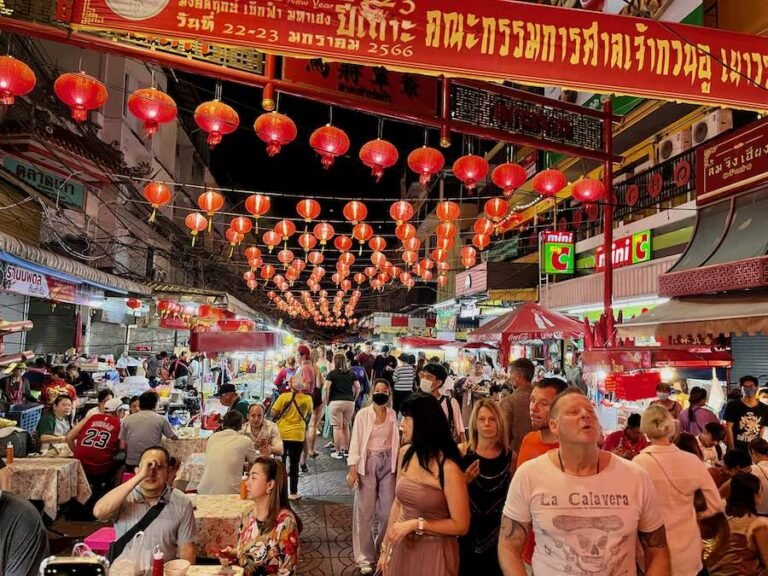
Is the Bangkok GoCity Pass worth it? Review & Best Uses
Will you be visiting Bangkok, Thailand? Bangkok is a huge city with a lot to offer, and it can be a little overwhelming even for seasoned travelers. The Bangkok GoCity Pass can be a great option to help you see the best of Bangkok with ease. We had the option to try it out for…
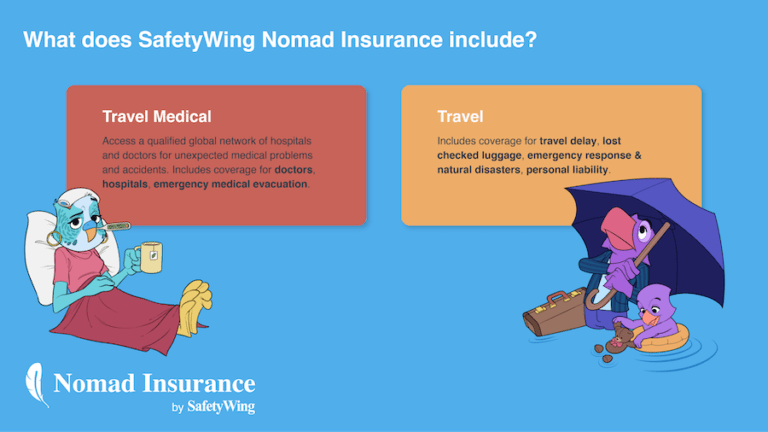
SafetyWing Nomad Insurance Review 2024 (with Covid Coverage)
As we returned to travel during the pandemic, Jedd and I felt that trip insurance and travel medical insurance were more important than ever for our trips. We first learned about SafetyWing at a digital nomad conference. With further research, specifically considering all the uncertainties around Covid-19 and travel restriction changes, we decided to use…
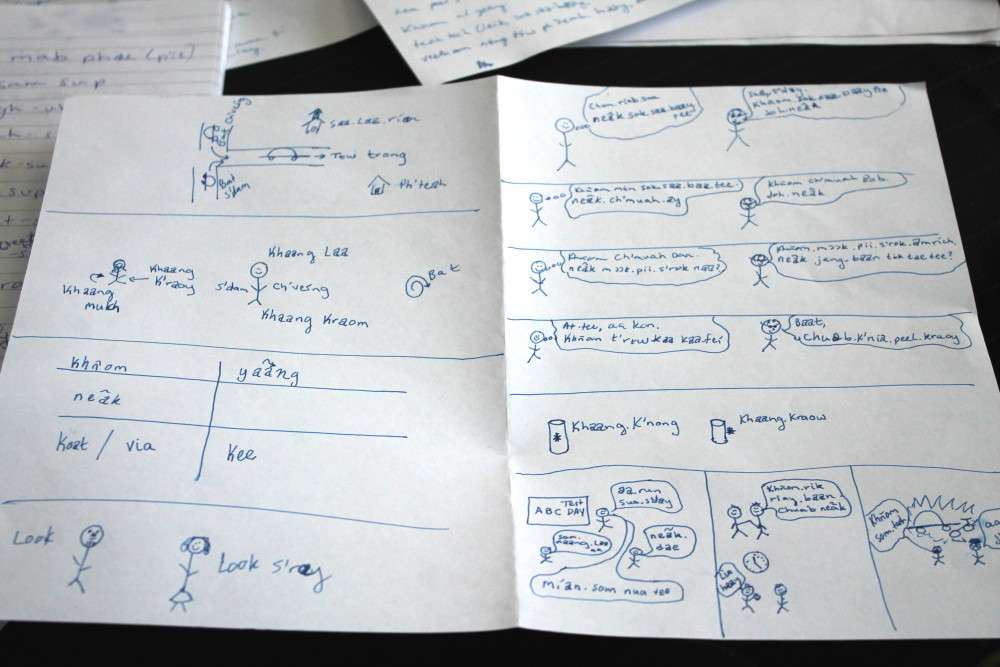
Simple Methods for Language Learning
This is a guest post by Karen Bortvedt. Karen is a long-term volunteer with Maryknoll Lay Missioners in Cambodia. You can learn more about her daily life and work on her blog. KISS Learning a new language, especially one with a completely different alphabet, involves a whole lot of closely watching someone’s mouth … and then…
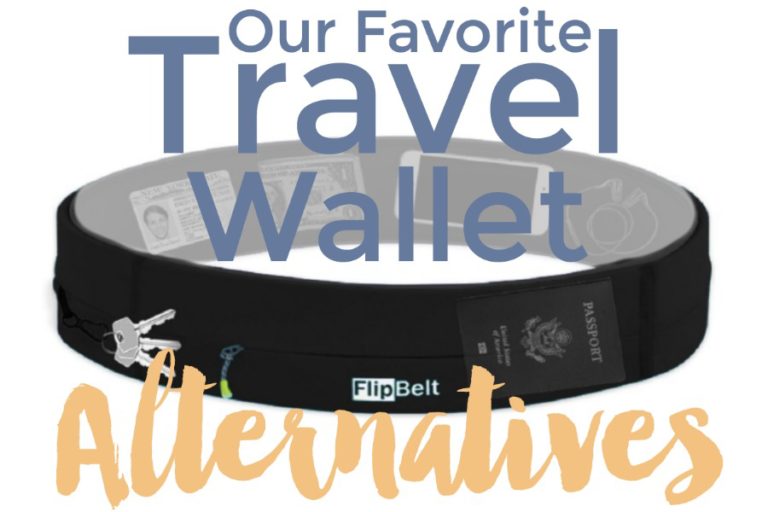
Our Favorite Alternatives to Travel Wallets
When it comes to exploring new destinations, we all want to be worry-free and secure. While traditional hidden travel wallets have been the go-to solution, we find they leave much to be desired. The discomfort of hanging wallets around our necks or dealing with bulky waist options led us to look for alternatives. In our…
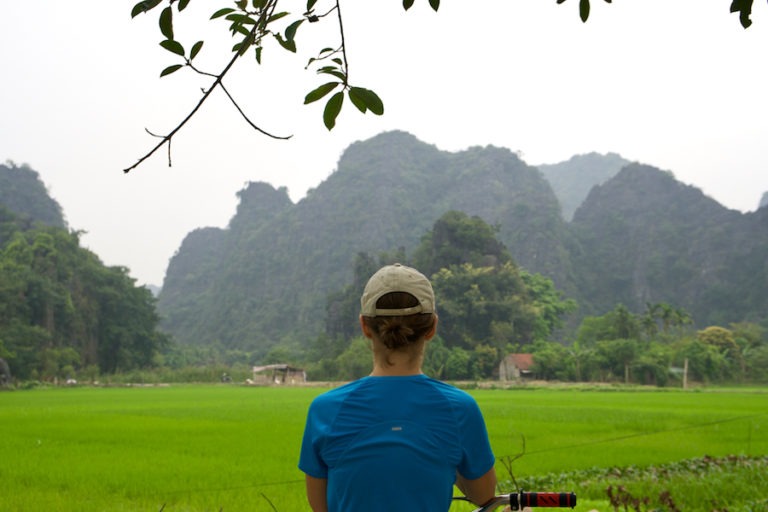
A Budget Guide to Ninh Binh: Bicycle Map + Itinerary
Ninh Binh is a beautiful UNESCO World Heritage destination just south of Hanoi, Vietnam. Ninh Binh is often referred to as “Ha Long Bay on land” because they both have impressive karsts and caves with boat rides for tourists. In our opinion, Ninh Binh makes a great less-crowded alternative to Ha Long Bay, whether you’re…
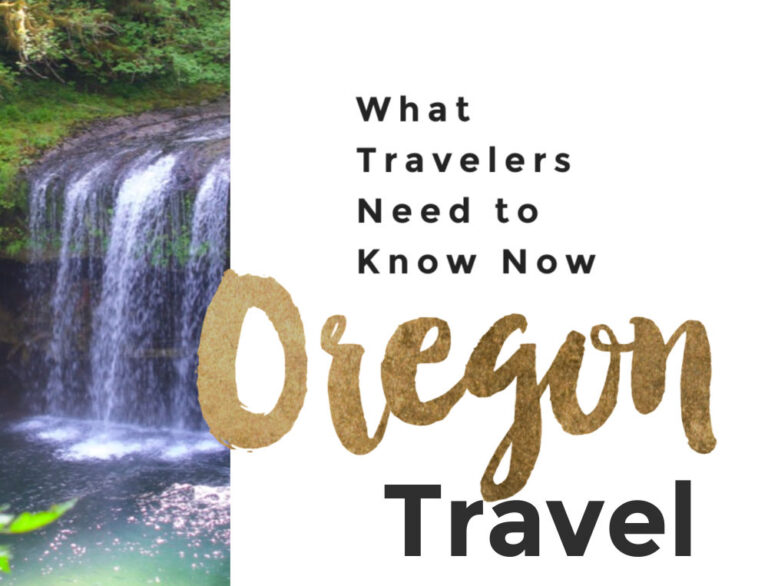
Oregon travel requirements 2024: What travelers need to know
We aim to keep this post updated about Oregon travel in 2024 with official Oregon travel restrictions, requirements, and health and safety guidance. Our goal is to help you make informed decisions so you can travel confidently, safely, and responsibly in this new post-pandemic world of ours. We are Oregonians so this destination is very…
84 Comments
We have booked a trip to the Philippines next month. We have not been vaccinated for covid19, Earlier it was mentioned that we had to take a corona test to enter the philippines. Last weekend all corona measures in the Philippines were scrapped, see source: https://pco.gov.ph/news_releases/pbbm-lifts-state-of-public-health-emergency-throughout-ph-due-to-covid-19/
I don’t want any surprises, Can you please confirm to me if we need to take a corona test to fly to the Philippines (from Madrid) or if it is therefore not necessary anymore now. In addition, I am also asking for more clarity on the inernal movements.
Hello Falko. Since the State of Public Health Emergency has been lifted in the Philippines, all rules and restrictions due to Covid 19 are no longer in effect. This means that you are no longer required to present a negative Covid test to enter the Philippines. For traveling within the Philippines, restrictions are also no longer in effect. However, it is still advisable to check your destination’s local government unit (LGU) official website or Facebook page for the latest travel guidelines. You may also check for the latest COVID requirements by destination through this websites: https://www.philippineairlines.com/covid-information-hub/covid-requirements
Hello, I’m a little confused on one issue. I’m a US citizen unvaccinated and would like to fly to the Philippines. I know what tests, etc I need to actually fly to the philippines, but what is not clear to me based on conflicting information is will I be required to take another covid test on arrival if the 24 hour one taken before flight was negative? One thing I don’t want to happen is discover I have to have another one when I arrive as I really hate them since they are so unnecessarily intrusive, and I’ve read some places that you will need a second one on arrival regardless of the results of the preflight test. I would be flying to Cebu. Thank you for your time.
Hello Sam, thank you for visiting our blog. According to the current entry rules , unvaccinated or partially vaccinated “travelers 15 years and older who fail to present a negative pre-departure testing shall be required to undergo a laboratory-based Antigen Test UPON ARRIVAL at the airport.” Therefore, if you can provide a valid and negative pre-departure Covid test when you arrive in the Philippines, then you will no longer have to test upon arrival at the airport.
Thank you for answering my question, that is good news. Just one other question please. Where do I look to find what remotely supervised covid tests are accepted by Philippines government on arrival since I don’t want to take a test in a clinic?
Hello Sam. Unfortunately, we cannot find updated information about remotely supervised tests accepted by the Philippines. It seems like no updates have been published but we’ll let you know if we find updated information regarding this. You may also contact the Philippine Department of Tourism official Facebook page or a Philippine embassy near you to get information about remotely supervised tests.
Is a negative COVID test result required for return travel from the Philippines to the United States?
Hi. Regardless of departure point, test results are not required going to the US, and as of this month (May 2023), noncitizen nonimmigrant air passengers no longer need to show proof of being fully vaccinated either.
I will be on vacation soon in the Philippines and resorts (specifically at Pico de Loro, Batangas and Los Banos, Laguna) still require a certified negative covid-test for stay. Where can I get this certified covid-19 rapid antigen test?
Hello Yeen. Thank you for visiting our blog. You can see the list of licensed Covid 19 testing facilities in the Philippines here: Philippine Department of Health Licensed Covid-19 Testing Laboratories
I am traveling to the Philippines in July 2023. I see that the Philippines currently still requires a negative Antigen Test for entry. Once a traveler has entered the country and wants to travel to different locations (such as Tacloban, Cebu City, Bohol, etc.) does a traveler have to provide a clean test at every domestic airport in the Philippines to board the plane if I stayed at each different location for 3-5 days? I need clarification as the domestic air carriers (Cebu Pacific, Air Asia, etc.) indicate that you need at least a negative Antigen Test to board on their websites. Any comments from recent travelers in the Philippines would be helpful. Thank you
Hi Greg. It is correct that the Philippines still require proof of a negative COVID test for entry if a traveler is unvaccinated or partially vaccinated. For travel within the Philippines, most destination no longer require a negative test for domestic flights. However, please note that some destination may still require a negative test and other documents for domestic travel depending on the local authorities’ regulations. We recommend that you check your destination’s local government unit (LGU) official website or Facebook page for the latest travel guidelines and requirements.
You may also check for the latest COVID requirements by destination through these websites: https://www.cebupacificair.com/pages/travel-info/covid-travel-reminders/travel-document-requirements?lang=en-PH https://www.philippineairlines.com/covid-information-hub/covid-requirements
We hope this helps and thank you for visiting our blog!
Hello, we are scheduled to go to the Philippines February 1st. We will be flying to japan January 27th and then from japan to Manila February 1st. Then from Manila to Boracay on the 2nd of February. We are American us citizens unvaccinated. What are the requirements and regulations for us? Will we be allowed to go with the new covid laws?
Hello Vee. Thanks for visiting our blog. Based on the current travel requirements and your status as an unvaccinated U.S. citizens, the following are the requirements you need:
For travel to Japan, you will need to provide a pre-travel COVID-19 test conducted within 72 hours prior to departure from the country/region of origin. You may check the Japan Ministry of Foreign Affairs webpage or the U.S. Embassy in Japan webpage for details.
For travel to the Philippines, you will need the follwing: – negative Antigen test certificate from a clinic conducted within 24 hours of departure from the country of origin – complete a BOQ e-Health Declaration Card (e-HDC), including children – passport valid for at least six months at the time of arrival – return or outbound ticket to your country of origin or next country of destination.
Once you’re in the Philippines, the requirements to travel to Boracay are the following: – Tourist Arrival Form – Confirmed Boracay Hotel Booking slip/voucher – Passport (for Foreigners)
You may also contact the Boracay/Aklan Tourism facebook page for more details.
Hello, we are Polish Filipino marrige and we are not vaccinated. We are planing to Visit Philipinnes in the middle of January 2024. Do you think it will be still required to do the PCR covid tests before travel? Since I read about Thailand, Laos, Vietnam is already fully open (no covid tests, no vaccinated etc). When they will fully open the Philippines? Regards
Thanks for visiting our blog. We don’t have any special information about the government’s future plans about travel restrictions, however, we will be sure to update this post when we see that anything changes.
Hello there, i am filipino-american citizen. I am unvaccinated and my vacation and my 4yo son to cebu by october. What are the restrictions for us since we don’t want to get vaccinated. From cebu international airport do we have to book a hotel for quaratines that are doh accredited and for how many days? Is it possible to choose our own place to stay while waiting for pcr test? And also does me and my son need a pcr test before we travel to Philippines? And also do we need return ticket or not needed? Hope to hear your response. Thank you
Hi Isabel. Thanks for visiting our blog! The current restriction states that foreign nationals (including Balikbayans) visiting the Philippines without a visa must be vaccinated. Unfortunately, you won’t be allowed entry into the Philippines based on the current rules. The same goes for your 4-year-old son since he will follow the rules that are applicable to you. However, if you will enter the Philippines with a visa or if you have double citizenship (Filipino and American) then it’s possible that you and your son may be allowed entry. We recommend that you contact or visit the Philippine Embassy in your area to see if there are any exemptions applicable to you that will allow you to visit the Philippines. Hope this helps.
Hello hoping to travel to the Philippines but I am unvaccinated are they open for unvaccinated foreign travelers yet?
Hi Mark. You’ll find the answer to that in our post and we’ll continue to update it as rules change.
Please note that on the PAL site ( https://www.philippineairlines.com/en/covid-19/arrivingintheph ) it states that valid return ticket(s) to the original port of origin or next port of destination for not more than 30 days from the date of arrival in the Philippines is/are required. Since I want to go for 3 months can I assume this is now impossible? Please help
Hi Norman! Thanks for visiting our blog. Tourists entering the Philippines visa-free are allowed to stay for not more than 30 days. Thus, the need for a valid return ticket to your country of origin or your next destination dated not more than 30 days from the date of arrival in the Philippines. If you want to stay in the Philippines for more than 30 days, you will need to apply for a Philippine tourist visa. You need to contact the Philippine Embassy or Consulate near you for information on how to apply for a Philippine tourist visa. I hope this helps.
I am a Filipino citizen with Philippine passport and vaccinated, I will be traveling with my family to Philippines – my husband american citizen fully vaccinated, but my 1.5 yrs old son also american citizen and not vaccinated. We are just planning to stay in the Philippines for 1 week just for my son to meet my parents. My question is, will he/we still need to be in quarantine? Thanks
Hi Camille. Thanks for visiting our blog. According to the Philippine’s quarantine rules, children below the age of 12 who cannot be vaccinated must follow the quarantine protocols of the parents traveling with them. Since you and your husband are fully vaccinated and do not need to quarantine, your son is not required to quarantine as well. You may also contact the Philippine Bureau of Immigration for more information regarding entry requirements.
I heard the quarantine laws recently changed. I am a US citizen fully vaccinated. I have two questions…
1) Do I still have to quarantine? 2) Will I be admitted with a work visa?
Thanks for visiting our blog. If you are traveling to the Philippines from the United States and fully vaccinated, you still need to quarantine at a government approved facility until the result of a RT-PCR test taken on the 5th day of quarantine is released. If the result is negative, you’ll be allowed to continue the quarantine at home until the 10th day. You can check the post for more details about quarantine rules in the Philippines. Regarding your work visa, if it is valid and existing, then you may be allowed to enter the Philippines. We advise that you contact the nearest Philippine Embassy or Consulate in your area to get more information and before attempting travel.
Travel to the Philippines My legal wife is an ex-Philippine citizen having been “required” to give it up on becoming a Canadian citizen, more years ago than I’m “allowed to divulge”! I’m a naturalized Canadian citizen originally from the UK, a few years ago shall we say! Am I correct in believing my wife can travel “home” without a pre-authorized but will we granted a “tourist” visa on arrival, and that I may accompany her getting a “balikbyan” visa on arrival?
Vaccine “Combo” Canada considers us “fully” vaccinated against COVID-19 with 1st Dose Pfizer-BioNTech & 2nd Dose Moderna Mrna vaccines, but is this “combo” accepted by the Philippines?
Vaccination-Quarantine I understand that as we are “fully” vaccinated we will be required to “reside” at a hotel for 7 days with a PCR test on Day 5, and if the PCR test is clear we can then shorten the full 14-day period to 10 days? Can the hotel be “of our choice” if that hotel provides such facilities, or are their only “designated” hotels to choose from? At the hotel do we have full access to its facilities such as swimming pool etc if open, or are we “imprisioned” in our rooms for the duration?
Post-Quarantine Travel in the Locale Are there any restrictions for “ALL” in moving around the locale to say attend golf courses if open, and can we travel by public transport. Are there any “AGE” restrictions as we are seniors, although the exact ages are a “closely guarded secret”!
Travel to Provences On arrival into Manila can we “immediately” transfer to the domestic airport for travel to the Provences for quarantine, or do we have to quarantine in Manila before moving on?
Best wishes William & Lourdes
Hello, William and Lourdes, and thank you for visiting our blog. These are important questions you have, and travel restrictions can certainly be confusing, not to mention constantly changing. We are only able to track a limited set of scenarios, which we post for free on the blog. To answer specific questions beyond what’s in our post, we would recommend working with a travel agent to ensure your trip needs are met. We’ll also see where we can better clarify some of the information in our post in the coming days. Best regards.
I would like to get a visitor visa for the Philippines as I plan to marry my fiancé who is a Philippine resident in January 2022. Can you guide me to websites so that the visa process for the Philippines can be simplified if that is possible, or inexpensive visa service for the Philippines? Thank you for any help you can provide me. Anthony
Hi Anthony. Thank you for your question. As we do not have personal experience using a visa service ourselves, we can only recommend doing a web search for “philippines visa services” and checking for recent user reviews. Perhaps one of our other readers will be able to chime in with a suggestion in the future.
Hi – Is there a quarantine exception offered for emergency travel from the U.S. (fully vaccinated) such as caring for sick/dying family member?
Thanks for visiting our blog. We are not aware of emergency exceptions at this time. With the many changing rules, we have to focus on those that apply to the majority of travelers, so a travel agent or visa service that specializes in the Philippines may be more help for specific scenarios or exceptions.
Hi! Fully vaccinated foreign travellers who have been in a green list country for at least 14 days are allowed to enter the Philippines without any problems as long as they quarantine 7 days in an approved facility, right? So for me who live in Italy, the only way I can currently access the Philippines would be to travel to Albania (green list country) right after I get my second dose, stay there 2 weeks and then fly from Albania to the Philippines.
Hi Andrea, thank you for visiting our blog. That is a very good question. The Philippines’ green lane was created to lessen the quarantine period of fully vaccinated individuals who are allowed to enter in the Philippines. Therefore, it is important to determine first if you belong to any of the traveler categories who can enter the Philippines. For foreign citizens, you must have a valid and existing Philippine visa. If without a visa, you must be a former Filipino or a family member traveling with a former Filipino. You can check the complete details of who can enter the Philippines here .
If you are one of those travelers who are allowed to enter, fully vaccinated, and traveling from Albania or any of the countries in the Philippines’ green list, the quarantine period would only be 7 days.
Hi Ailene and thank you for your kind reply. I guess I will need a visa and probably an exemption document which I have now idea how to get and if there are any requirements I don’t think I meet them anyway since the purpose of the trip would be to visit my girlfriend hence why I am considered as a mere tourist.
I’m from Arizona currently looking for a way to travel to the Philippines ASAP to marry my fiance. I have my vaild US passport, however found myself needing a tourist visa with a possible certificate of entry as well..would you recommend going through a travel agency, a family member who is Filipino, or waiting for the covid travel restrictions to be lifted? Point me in the right direction or any vaild news will be greatly appreciated. Thanks & God bless.
Hi Chris. Without a valid and existing visa, you would need to wait for restrictions to change. We’ll be sure to update this post as we get more news. In general, we do recommend working with a travel agent who is familiar with Philippine visas to help navigate the ever-changing travel situation these days.
Chris You and so many others are in the same situation. I am looking into flying my Fiance to another country, (Mexico, Columbia or Costa Rica) Getting married there Then fly back together on a Balikbayan Visa.
Hi! We want to visit Philippines in February. If we are vaccinated with 2 doses do we still need to do a covid test? We need to fill out a form before entering the Philippines? but for Boracay? Thank you!
Hello Cristina! Based on the current Philippine travel rules, a booster is no longer required for entry, therefore, you no longer need to provide a negative Covid test. However, you need to register on the Philippines eTravel website and you can register up to three days in advance of your departure. For Boracay, a filled out tourist arrival form, hotel booking, and passport for foreign tourists are required. You can check details here or you may contact the Aklan government through their Facebook page for additional information.
Hi! I was just wondering, are fully vaccinated senior citizen (60 years and older) coming from Canada allowed to enter Philippines? Are there any travel restriction for their age group? Thanks a lot!
Thanks for visiting our blog. We’ve been focusing on requirements primarily for US citizens, as it can vary by country and it’s a challenge to track all the changes. I would double-check with the Canadian State Department and/or a travel agent for more specific guidance. It’s my understanding that the age group restrictions don’t apply for entering the country but rather for going out and about once there – so far this has only been relevant to Philippine residents and will likely change with local vaccination rates eventually.
Hi, thank you for a really good blog. I am fully vaccinated norwegian man, and I wonder if you know anything about when it will be possible to travel to the Philippines. Cebu is a possible destination. If you dont know, because I think no one can know for sure now, what will be your educated guess. I have a close friend I want to visit there.
I’m glad you’ve found our blog helpful. I wish we had more insight as to when things will open up more. Some countries in Southeast Asia have indicated that they may wait until a majority of their own population is vaccinated, so it really is uncertain. We’ll do our best to provide updates here as they come out.
I am a fully-vaccinated US citizen. Do I understand correctly that I can fly into Cebu with no quarantine requirements? What covid-related requirements would I be subjected to (e.g. tests, etc). Thank you!
Hi James. Thank you for visiting our blog. Travelers flying in directly to Cebu don’t have to quarantine at the hotel, provided that they receive a negative test result conducted immediately upon arrival at the airport. Please note that this is applicable only to permitted foreign nationals. We recommend that you contact the local government of Cebu or the Cebu-Mactan International Airport for complete details and requirements. Also, as of today, only US citizens with visa, US citizens who are former Filipinos, and US citizens who are family members and traveling with a Filipino citizen or former Filipino are allowed entry in the Philippines. Please see the Philippine Bureau of Immigration page for complete details. It is also advisable to contact the Philippine Embassy or Consulate in your area for more information and before attempting travel.
My daughter was born in Manila in 2020. What do i need to do to get to the philippines? The philippines embassy in los angelas doesn’t replay to my emails and nobody picks up the phones. please help
Hello and thank you for visiting our blog. We do our best to provide regularly updated information on this post for free to the public, as our small team does not have capacity to provide individualized advice for everyone who requests. If you’re not able to find what you need in the details of our post or through the official resource links we have provided above, many travelers are finding this type of support through travel agents.
I’m from Canada and I’m also a citizen here. I don’t understand why United States citizen foreigners are allowed in the Philippines but not Canadians when their country is much worse with the current situation with the covid virus. Or are Canadians allowed also? Thank you.
Hello and thanks for visiting our blog. Because the majority of our blog readers are from the US and rules do vary by country and change frequently, we have chosen to focus on restrictions for Americans in this particular post. This does not mean other nationalities are excluded from entering the Philippines. I would suggest checking the Canadian State Department website for details that apply to your home country.
Thanks for all the info! Hoping to head to the Philippines December of this year, of course plans are put on hold until then.
I’m planning a trip in August. Do you think the borders will be reopened? If so, I want to go to Iloilo directly, can I quarantine there instead of Manilla even though I have a 1h change (stopover because of a direct flight with terminal as Iloilo) of plane there? Thank you
Hi. Thanks for visiting our blog. We do our best to keep this post updated as things change, but we don’t have any special insight as to when changes will happen in the future. For advice on specific trip questions that you can’t find in our post, we recommend seeking a professional travel agent. Safe travels.
My American boyfriend planning to come and meet me this coming month of July. He should get a visa in US before coming here in the Philippines or he could get a visa when he landed here in the Philippines then? His destination will be in Kalibo, Aklan. Any idea about the protocols travelling to Kalibo, Aklan? And if he need to be quarantine for 14 days? He’s already fully vaccinated with Moderna vaccine. He is also tested in Covid and had a negative results. Thank you.
Thank you for visiting our blog. Traveling to the Philippines without a visa, unfortunately, that has been temporarily suspended because of the pandemic so he would need to arrange a visa before traveling. You can find details on the Philippine Bureau of Immigration Facebook page . Please note that we are not able to advise travelers regarding specific situations outside of the free information we already provide above. If you’re not able to find answers for your particular trip in our post, we recommend working with a professional travel agent to ensure your personal trip needs are met.
I’M TRYING TO TRAVEL IN JULY IS IT POSSIBLE FOR ME TO VISIT MY FAMILY. I’M AN AMERICAN CITIZEN BUT FORMERLY FILIPINO CITIZEN. FULLY VACCINATED AND JUST GOT SWAB FOR COVID 4 TIMES ALREADY. THANK YOU
Hello and thank you for visiting our blog. We do our best to provide regularly updated information on this post for free to the public, as our small team does not have capacity to provide individualized advice for everyone who requests. I hope you’ll find what you need in the details of our post or through the official resource links we have provided above. If you need further assistance, many travelers are finding this type of support through travel agents.
i don’t know how accurate your info is as i work with a filipino here in the US and he watches Philip news online and told me that if you fly into Cebu which is where i go not Manila that you get a temp check at the airport and only have to quarantine for 1 day not 14 like u said, also can you answer this question. I being a American and traveling with a passport the bureau of philippines website said if your traveling to the PI for less then 30 days you don]t need a tourist visa just your passport…any truth to that?? Thanks
Hi Will. As a general rule, a mandatory quarantine of 7-14 days is required for persons traveling to the Philippines. In the Province of Cebu, it is true that quarantine is no longer a requirement as of March 31, 2021. However, this is only for repatriated Overseas Filipino Workers (OFWs) and returning non-OFWs. You can visit the Cebu Provincial Tourism Office page for more information about this.
About traveling to the Philippines without a visa, unfortunately, that has been temporarily suspended because of the pandemic. Please check the Philippine Bureau of Immigration Facebook page for information and updates on who are allowed entry into the Philippines at this time.
Thank you so much for the information, that helps a lot….can’t wait to be there, but I know it may get delayed again. Just as long as everyone is safe and protected I can wait. I love the Philippine people, such beautiful souls.
I have rescheduled my trip from USA Arizona to Lapu-Lapu city where I will be staying with my friend who lives there this coming August….4th time rebooking since COVID. I will be there for 3 weeks. I have my COVID vaccination already and got a Hepatitis A vaccine. Do you know what other vaccines are required? Also, will I need to get a Visa since I am on a limited stay? Been trying to get there since last May, but want to be safe for everyone there. I am so looking forward to being with my friend this has been 2 years in the making. Thank you for any information you can give.
Hi Kenneth. I hope your trip will finally come to fruition. As you know, it’s still a difficult time to plan travel and the situation continues to change month to month. According to the State Department, U.S. citizens must have a visa to enter the Philippines for all travel purposes. The best place to find vaccination requirements and recommendations would be through the CDC: https://wwwnc.cdc.gov/travel/destinations/list
I am a Physician in Mexico with a Philippine wife. She is returning there on May 2. I am wondering what I need to travel only to Manilla in June or July only to accompany her back to Mexico. I would have no problem staying at motel around Manila for the approximately 30 days that I will be there. Any help on this ?
Hello and thanks for visiting the blog. Your ability to enter the Philippines as the spouse of a Filippino citizen in June/July will depend on whether the suspension is lifted for foreign nationals. We will do our best to update this post as the situation changes. Please refer to our post for other protocols and recommended hotels for quarantine in Manila. For further assistance, you may wish to work with a travel agent.
Planning to come home to the Philippines on May from a very long time (1982) since I left PI.. I am now a Us Passport holder, am I qualified as a Philippine balikbayan? Do I need to get a Philippine visa? Is my husband the same?
Hi Nimfa. Thanks for visiting our blog! Under the Philippines Balikbayan Program , you are considered a “balikbayan”. You can visit the Philippines and stay for 1 year without a visa. Your husband can also get the same privilege as long as he is traveling with you.
However, please take note that traveling to the Philippines has been recently suspended until April 19, 2021. Check our blog for updates on who will be allowed entry in May. We also advise that you contact the nearest Philippine Embassy or Consulate in your area for more information and before attempting travel.
With vaccines starting to arrive in PI and some places starting to make roll out plans- Any idea when tourist visas will start to be processed again and citizens will be able to take a trips out of PI?
Hi Dan. Thank you for your question, but I’m afraid we don’t have any special insight about when the Philippines will make changes to travel protocols.
i am now in the us, i left manila last march and coming back in april, do i still need to book a hotel for quarantine? most articles i see are for ofw’s and balikbayans.
also, do you know kung sino sasagot ng food ng magku-quarantine? coz hindi makakalabas yun tao to buy food and water. just wondering.
Hi Cher. Yes, you still need a confirmed booking at any accredited quarantine hotel in Metro Manila for at least 7 days (or 6 nights) from the date of your arrival. This is to accommodate the schedule of your RT-PCR test (which will be on the 5th day) and the release of the result. Your food during your stay at the hotel will be at your own expense. You may also have food from outside the hotel delivered to your room, but you need to check with the rules and regulations of the hotel first if it is allowed.
You may check the Philippine Airlines or the Philippines Travel website for the complete guidelines. I hope this helps.
Hello Is there a list of the hotels like in Manila or Subic that might be quarantine hotels and what the costs would be for the 14 day duration. .
Hi Bob. The current list of accredited hotels by the Bureau of Quarantine can be found here: http://quarantine.doh.gov.ph/facilities-inspected-as-of-february-18-2021/ You would need to look up the costs for individual hotels that interest you.
What is the best website to get Current travel updates for traveling to the Philippines this spring if possible.
Hi and thanks for visiting our blog. We are doing our best to update this post on a weekly basis with current information about travel to the Philippines. Your home country’s State Department website is probably the most reliable source. To get an official answer for your Spring travel, you can contact the nearest Philippine Embassy or Consulate (if in the United States).
The Philippine Airlines website is the most up to date regarding travel restrictions.
If one has had a coronavirus vaccine in the US, can one come to the Philippines without the need to quarantine and have the Covid test? I should have my second round of the Moderna vaccine on March 4th. Could I travel to the Philippines shortly after that time if I have a card proving that I had the vaccine?
That is a good question and I think many are wondering the same thing about other destinations as well. We can’t predict when the Philippines will reopen to travelers, nor what they will choose to require in terms of vaccines. From what I’ve read, I would guess that most destinations will continue to require a Covid test regardless of the vaccine since the timeline for immunity after vaccination is still uncertain.
I look forward to the country opening again. It is certainly one of my favorites!
Can I book myself on June or July to go to manila since they ( Department of Tourism ) mencioned that they will reopen the country for international tourism around June so ????
Hi Ricardo. We cannot predict if you’ll be able to fly into Manila at that time. What we personally are doing is making sure any flight we book is fully refundable, or can at least be changed to a later date without change fees if travel is not allowed for our original flight date. This will depend on the particular airline’s terms and conditions.
Do you know when is the date or anything that the Philippine government is gonna let foreigners for tourism cause I’ve been planning this trip for a year and its getting the people so angry that we cant go to the Philippines and nobody can give me a straight up answer.
Hi Clint. Thanks for your question. We know how frustrating it can be to have travel plans up in the air. Unfortunately, most countries do not have set dates for opening tourism yet because so much depends on ever-changing situations, both domestically and internationally.
Covid is spreading rapidly and nobody is vaccinated there stay home and keep you and the Philippines safer
The Philippines has no intention of opening up to tourism any time soon. The president has said that when the country is between 70 to 80 percent vaccinated it will reopen the country it currently is at 19%. So if you want to take a vacation start thinking of an alternative destination or your going to be waiting for at least a year.
Leave a Reply Cancel reply
Your email address will not be published. Required fields are marked *
This site uses Akismet to reduce spam. Learn how your comment data is processed .
- Skip to primary navigation
- Skip to main content
- Skip to footer
Complete International Travel Checklist for Filipino Travelers
Last Updated – Apr 22, 2024 @ 8:30 pm
Traveling to a different country is a thrilling experience that opens doors to new cultures, breathtaking landscapes, and unforgettable memories.
To ensure a smooth and worry-free trip, meticulous planning is crucial. For Filipino travelers, this preparation is particularly important since there are unique aspects and considerations that come into play.
From visa requirements to cultural nuances, arming oneself with the right information and a comprehensive travel checklist can make all the difference.
Whether you’re a seasoned traveler or you’re embarking on your first international trip, this checklist will serve as a valuable resource to ensure that you’ve covered all the bases and are fully prepared to embrace the wonders that await you in another country.
Related: Visa-Free Countries to Visit for Philippine Passport Holders
Documentation Requirements
Here are the essential documents that Filipino travelers should secure before heading abroad
As a Filipino traveler, securing your passport is the first step in preparing for your international trip.
Make sure that your passport is valid for at least six months beyond your planned travel dates. If it’s about to expire, apply for a new one as soon as possible to avoid any last-minute delays.
Before booking your trip, make sure to check the visa requirements for the country or countries you plan to visit.
Some countries require visas for entry, while others allow visa-free travel for a limited period. It’s important to research the specific visa requirements and application process for each country, as they can vary depending on your purpose for travel and length of stay.
For example, if you want to visit the US as a tourist, you must file the Form DS-160 or the Online Nonimmigrant Visa Application found here . You’re also required to pay the $160 government filing fee. All applications will be processed at the Manila U.S. Embassy.
Your appointment for your visa application depends on the demand and visa backlog so make sure to apply in advance of your planned travel. Currently, the average waiting time is 158 days (you can check here .)
Special permits if needed
If you’re going to another country for a business-related function or a competition, among other events, you need to secure a special permit or clearance from the host country.
These may include work visas, study permits, or athlete visas, among others. It’s important to do your research and ensure that you have the necessary permits to avoid any complications.
Travel insurance
Travel insurance is extremely essential for Filipinos traveling outside the country. It provides a safety net against unforeseen circumstances such as medical emergencies, trip cancellations or interruptions, lost or delayed baggage, and other travel-related mishaps.
With travel insurance, travelers can have peace of mind knowing that they are financially protected and can access essential services and support while abroad.
This will ensure a smooth and worry-free travel experience. Here are some pointers to help you choose the best insurance.
Assess your needs and choose a policy that offers comprehensive coverage for medical expenses, emergency medical evacuation, trip cancellation or interruption, lost baggage, and personal liability. Ensure that the coverage limits are sufficient for your travel plans.
Destination-specific Coverage
If you have a specific destination in mind, check if the travel insurance policy provides coverage for that particular country or region. Some destinations may have specific requirements or risks that need to be addressed.
Policy Exclusions
Carefully review the policy exclusions to understand what is not covered. Look out for common exclusions such as pre-existing medical conditions, high-risk activities, and acts of terrorism. Consider policies with minimal exclusions or ones that can be tailored to your specific needs.
Emergency Assistance Services
Check if the insurance provider offers 24/7 emergency assistance services. This ensures that you can access help and support in case of emergencies, such as medical emergencies or travel-related assistance, no matter the time or location.
Policy Limits and Deductibles
Review the policy limits and deductibles associated with different coverages. Ensure they are reasonable and align with your budget and level of risk tolerance.
Reputation and Financial Stability
Choose a reputable insurance provider with a strong track record and financial stability. Look for customer reviews and ratings to gauge their reliability and level of customer service.
Price and Value
Compare the prices of different insurance policies, but remember that the cheapest option may not always provide the best value.
Do not forget to assess the coverage provided in relation to the price to find a policy that offers the right balance of affordability and comprehensive coverage.
Policy Terms and Conditions
Read the policy terms and conditions thoroughly to understand the terms of coverage, claim procedures, and any specific requirements or obligations you need to fulfill. Ensure that you are comfortable with the terms before making a decision.
Remember, it is always recommended to read the policy details carefully and, if needed, consult with an insurance professional or representative to address any questions or concerns you may have before purchasing travel insurance.
Health documents
When traveling abroad, it is important to have all necessary health documents in order to ensure a safe and healthy trip.
Depending on the destination, there may be specific health requirements or recommendations that travelers need to follow.
One of the most important health documents is a vaccination record. Some countries require proof of specific vaccinations, such as yellow fever or polio, before allowing entry.
Filipino travelers should check with their healthcare provider or a travel clinic to ensure they have all necessary vaccinations and documentation.
In addition to vaccinations, travelers may need to provide documentation of any pre-existing medical conditions or medications they are taking. It is recommended to bring a copy of prescriptions and a list of medications
Travel Itineraries
Creating a travel itinerary is an essential part of any trip planning, especially when going abroad.
A well-crafted itinerary outlines the details of a traveler’s trip, including transportation arrangements, accommodation bookings, activities, and any other relevant information related to their travel plans.
It serves as a blueprint or schedule of the journey, providing a clear overview of the traveler’s activities and logistics during their time away from home.
The importance of a travel itinerary stems from several reasons such as:
Organization and Planning
A well-structured itinerary helps travelers stay organized and plan their trip effectively. It ensures that all necessary arrangements are made in advance, such as booking flights, securing accommodation, and scheduling activities. This contributes to a smoother and more enjoyable travel experience.
Time Management
A detailed itinerary allows travelers to allocate their time wisely, ensuring they can make the most of their trip. It helps them prioritize attractions, activities, and sightseeing, preventing them from missing out on important experiences or feeling rushed.
Logistics and Coordination
Having a travel itinerary facilitates better logistics and coordination. It helps travelers keep track of transportation details, such as flight times, train schedules, or car rental arrangements.
It also provides information about hotel check-in and check-out times and helps ensure a seamless transition between destinations.
Safety and Security
A travel itinerary enhances safety and security by providing a clear record of the traveler’s whereabouts.
In the event of an emergency or unforeseen circumstance, having a well-documented itinerary can assist authorities, family members, or travel companions in locating the traveler and providing necessary support.
Budgeting and Expense Management
With a travel itinerary, travelers can estimate and allocate their budget more effectively.
By outlining costs associated with accommodation, transportation, activities, and meals, it helps individuals keep track of their expenses and avoid overspending.
Documentation and Requirements
Some destinations may require travelers to provide a detailed travel itinerary as part of their visa application or entry requirements.
Having a comprehensive itinerary readily available ensures compliance with these regulations and simplifies the visa application process.
Copies of all important documents
When traveling abroad, it’s crucial to have copies of all important documents, such as passports, visas, IDs , and international driving licenses .
These documents serve as proof of identity and travel authorization and may be required when dealing with authorities, immigration officials, or law enforcement.
Having copies of these documents can be a lifesaver in case of loss, theft, or damage of the original documents.
It’s recommended to keep the copies in a secure location, separate from the originals, and to share them with a trusted family member or friend in case of an emergency.
In addition to personal identification documents, travelers should also carry copies of travel insurance policies, flight itineraries, hotel reservations, and any other important travel-related documents.
These documents can assist in the event of a travel mishap, such as lost luggage or flight cancellations.
Additionally, it’s recommended to store electronic copies of these documents, either in a cloud-based storage service or on a separate, encrypted device.
This ensures that even if physical copies are lost or stolen, the electronic copies can still be accessed.
Finally, ensure that all copies of important documents are up-to-date and valid. Make sure passports and visas are not expired and that travel insurance policies are active and provide adequate coverage for the planned trip.
Related: Emergency Preparedness Checklist for Filipinos
Managing finances is a crucial aspect of any trip planning, especially when traveling abroad.
You should have a clear understanding of one’s financial situation and budget before embarking on a trip to ensure a stress-free and enjoyable experience. Take a look at these tips to help you sort your finances when traveling.
Research the currency used in the destination country and plan accordingly. It’s recommended to exchange a small amount of cash before departure to cover immediate expenses, such as transportation from the airport to the hotel.
Once at the destination, you can exchange money at banks, currency exchange bureaus, or at your hotel. Do not forget to compare exchange rates and fees to get the best deal since rates can vary widely.
When carrying credit cards , make sure your card is accepted at your destination country. It’s also better to have one that is multi-currency so you can make purchases and withdraw cash in the local currency without incurring high fees.
If not, at least understand foreign transaction fees and currency conversion rates.
Budgeting is a crucial aspect of trip planning, as it ensures that travelers don’t overspend and run out of money before their trip is over. To create a budget, keep these things in mind.
Accommodation
Accommodation is one of the biggest expenses when traveling. Research options that fit within your budget.
Consider staying in hostels, guesthouses, or vacation rentals (try AirBNB) instead of hotels, as they often offer more affordable options.
Transportation is another major expense when traveling.
Research local public transportation options, such as buses, trains, or subways, and compare them to the cost of renting a car or using ride-sharing services.
Additionally, try walking or biking as a free and healthy way to get around.
Food and drink expenses can add up quickly, especially when dining out in tourist areas.
To save money, consider grocery shopping and cooking meals at your accommodation or finding local street vendors and markets for affordable and authentic dining experiences.
Activities are an essential aspect of any trip, but they can also be costly. It is recommended to prioritize the activities that are most important to you, and research free or low-cost options.
Many cities offer free walking tours or have museums with discounted admission on certain days of the week. Furthermore, look for local festivals or events that are free to attend.
More Useful Tips: 40+ Travel Saving Tips
Emergency funds
Emergency funds are a crucial part of travel planning, as unexpected expenses can arise at any time.
The amount of emergency funds you need when traveling abroad can vary depending on factors such as the destination, duration of travel, personal preferences, and the overall budget.
While there is no fixed rule, it is generally recommended to set aside around 10% to 20% of your total travel budget as emergency funds.
Here are the major factors to consider when determining the amount of your emergency fund:
Destination
Research the cost of living and healthcare expenses in your destination. Some countries may have higher medical costs or limited access to healthcare, requiring a larger emergency fund.
Length of Travel
Longer trips may carry a higher risk of unexpected expenses or emergencies, so it may be wise to allocate a larger emergency fund for extended journeys.
Activities and Itinerary
If you plan to engage in adventurous or high-risk activities such as extreme sports or remote excursions, it is advisable to have a more substantial emergency fund to cover any potential medical costs or unforeseen situations.
Personal Comfort Level
Consider your own comfort level and risk tolerance. If you prefer having a greater safety net or are more cautious about potential emergencies, you might choose to allocate a larger portion of your budget as emergency funds.
Existing Insurance Coverage
Review your existing insurance coverage, such as health insurance or travel insurance, to determine the extent of coverage and any deductibles. This can help you gauge the amount of additional emergency funds needed.
Ultimately, it is essential to strike a balance between having enough emergency funds to cover unexpected situations and not compromising your overall travel experience by tying up excessive funds.
Notifications to banks and credit card companies
Before embarking on a trip, do not forget to notify your banks and credit card companies of your travel plans. This will prevent them from flagging your credit card for suspicious activity when you make purchases in a foreign country.
You can usually do this online or by calling the customer service number on the back of your card. Provide your travel dates, destination, and any other relevant information to ensure that your account is properly noted.
Additionally, have a backup credit or debit card in case your primary card is lost or stolen. Keep it in a separate place from your primary card, such as in a hidden pocket in your luggage, to ensure that you have access to funds if needed.
Health and Safety
Health and safety are important considerations when traveling abroad. Here are some tips to keep in mind.
Vaccinations
Vaccinations are a necessary part of travel preparation, as they can protect against common diseases in your destination country.
Check with a healthcare professional to determine which vaccinations are recommended or required for your trip.
The vaccinations needed to travel abroad can vary depending on the destination country, duration of stay, and individual factors such as age, health condition, and previous immunizations.
It is essential to consult with a healthcare professional or a travel medicine specialist well in advance of your trip to receive personalized advice based on your specific travel plans.
However, here are some common vaccinations that are often recommended for international travel:
Routine Vaccinations
Ensure you are up to date on routine vaccinations such as measles, mumps, rubella (MMR), diphtheria, tetanus, pertussis (DTaP), polio, and influenza.
- Hepatitis A: This vaccine protects against the hepatitis A virus, which can be contracted through contaminated food or water in many parts of the world.
- Hepatitis B: Hepatitis B is transmitted through blood, sexual contact, or contaminated needles. The vaccine is recommended for long-term travelers, those visiting areas with higher prevalence rates, or individuals engaging in activities that may increase their risk.
- Typhoid: Typhoid fever is contracted through contaminated food and water. The vaccine is recommended for travelers visiting areas with poor sanitation and hygiene practices.
- Yellow Fever: Yellow fever vaccination may be required or recommended for travelers visiting countries where yellow fever is endemic or if you are arriving from a country with a risk of yellow fever transmission. Some countries may require proof of vaccination for entry.
- Meningococcal Meningitis: This vaccine is recommended for travelers visiting regions where meningococcal disease is prevalent, particularly during outbreaks or in crowded settings.
- Japanese Encephalitis: Japanese encephalitis is a viral disease transmitted through mosquito bites. The vaccine is recommended for travelers spending an extended period in rural areas or during outbreaks.
- Rabies: Rabies is a viral disease transmitted through the bites of infected animals. The vaccine is recommended for travelers who may be involved in activities that increase the risk of exposure, such as wildlife handling or working in remote areas.
Medications
In addition to vaccinations, consider any necessary medications for your trip.
This could include prescriptions for chronic conditions, as well as medications for common travel ailments such as motion sickness, diarrhea, or altitude sickness.
When traveling abroad, pack enough medication for the entire duration of your trip, as well as any extra in case of unexpected delays or extended stays.
Keep your medications in their original containers, and carry a copy of your prescriptions in case you need to refill them while abroad.
When carrying medicine, make sure to keep it in its original containers. It should also be labeled with your full name, as well as your health care provider’s name, generic and brand name, and the exact dosage of the medicine.
Some common over-the-counter medications to bring include pain relievers, antihistamines, and digestive aids.
First-aid kit essentials
A first-aid kit is an essential item to pack for any trip, as it can provide quick and easy access to medical supplies in case of injury or illness. Here are some items to include in your first-aid kit:
- Bandages of various sizes: Including adhesive bandages, gauze pads, and bandage tape.
- Antiseptic wipes or solution: This is useful for cleaning wounds and preventing infection.
- Pain relievers: Make sure to have Ibuprofen or Acetaminophen.
Travel advisories
Before traveling to a foreign country, check for any travel advisories or warnings.
These advisories can provide important information about potential risks, such as political unrest, natural disasters, or health alerts.
To keep updated, check with your government’s travel website or embassy in the destination country for the latest information.
Food safety
One of the most enjoyable parts of traveling is trying new foods. However, it’s vital to take necessary precautions to avoid food poisoning or other illnesses that can result from consuming contaminated food and water.
Drink Safe Water
In areas where tap water may be unsafe, drink bottled water or use water purification methods like boiling, filtering, or using water purification tablets. Avoid consuming ice cubes or drinks made with tap water.
Eat Cooked Food
Opt for thoroughly cooked hot meals, as high temperatures kill many bacteria and parasites. Avoid raw or undercooked meats, seafood, and eggs, as they can pose a risk of foodborne illnesses.
Wash Hands Frequently
Practice good hand hygiene by washing your hands thoroughly with soap and clean water before eating or handling food. If soap and water are not available, use hand sanitizers with at least 60% alcohol content.
Choose Reliable Food Establishments
Eat at reputable and clean food establishments with good hygiene practices. Look for places with a high turnover of food to ensure freshness.
Fruits and Vegetables
Wash and peel fruits and vegetables before eating them. When buying from street vendors, ensure that the produce has been properly cleaned and prepared.
Street Food Safety
If trying street food, be cautious about the hygiene standards.
Look for vendors with clean cooking surfaces, freshly cooked food, and a steady stream of customers to ensure the food is prepared and served safely.
Food Storage
Store perishable foods properly, especially in hot climates. Keep them refrigerated or in coolers to prevent the growth of bacteria.
Avoid eating food that has been left at room temperature for an extended period.
Be Wary of Contaminated Food and Beverages
Be cautious with unpasteurized dairy products, raw or uncooked seafood, raw shellfish, street vendor juices, and food sold in unhygienic conditions.
These items can carry a higher risk of foodborne illnesses.
Carry Medications
Consider carrying necessary medications like antidiarrheal medication or oral rehydration solutions to manage any potential food-related illnesses.
Consult with a healthcare professional before your trip.
Trust Your Instincts
Use your judgment and trust your instincts when it comes to food safety.
If something appears questionable or unhygienic, it’s better to err on the side of caution and avoid consuming it.
COVID-19 Considerations
As the world continues to grapple with the COVID-19 pandemic, take necessary precautions while traveling.
Check the Travel Restrictions
Before planning your trip, check the travel restrictions put in place by the destination country. Some countries may have suspended travel from certain regions or require proof of a negative COVID-19 test before entry.
COVID-19 safety measures during travel
Some safety measures can be taken during travel to prevent the spread of COVID-19. For instance, you can still wear a mask in public settings.
Travel restrictions and requirements
Always stay up to date on any travel restrictions and requirements put in place by the destination country. This can include proof of vaccination or a negative COVID-19 test result, and other health screening measures.
COVID-19 insurance
Consider purchasing COVID-19 insurance before your trip. This type of insurance can help cover medical expenses related to COVID-19, as well as trip cancellations or interruptions due to COVID-19.
Packing Essentials
When traveling to a foreign country, packing the right essentials can make all the difference in ensuring a safe and comfortable journey.
Carry on/Day pack
Your carry on is an essential part of your travel gear. It should contain everything you might need in case your checked luggage is delayed or lost.
Make sure to pack important documents like passports, visas, travel insurance, and any medication in this bag.
Here are a few pointers to keep in mind when packing clothes:
Research the Climate
Before you travel, research the weather patterns and average temperatures of your destination during the time of your visit.
This will help you determine the types of clothing you’ll need, such as lightweight and breathable fabrics for hot climates or warm layers for colder regions.
Layering is a versatile approach that allows you to adapt to changing temperatures and climates.
Pack a mix of lightweight, breathable clothing that can be easily layered to accommodate varying weather conditions. This way, you can add or remove layers as needed.
Consider Cultural Norms
Research and respect the cultural norms and dress codes of your destination. Some countries may have conservative attire requirements, particularly for religious or cultural sites.
Pack modest clothing options, such as long pants, skirts, or dresses that cover the shoulders and knees, if necessary.
Pack Versatile Pieces
Select clothing items that can be mixed and matched to create different outfits. This will help you pack lighter while still having a variety of options.
Choose neutral colors and classic styles that can be dressed up or down.
Comfortable Footwear
Pack comfortable shoes suitable for the activities you have planned. Consider the terrain and the amount of walking you’ll be doing.
Pack a pair of closed-toe shoes for more active pursuits and a pair of comfortable sandals or lightweight shoes for everyday wear.
Adaptability
Choose clothing items that can be worn in multiple settings.
For example, a lightweight dress can be dressed up for a formal dinner or dressed down for a casual day of exploring. Versatile pieces will save space in your luggage.
Practical Accessories
Don’t forget to pack practical accessories like hats, scarves, or sunglasses to protect yourself from the sun or chilly winds.
Additionally, consider packing a lightweight rain jacket or umbrella if there is a possibility of rain.
Aim to pack efficiently and avoid overpacking. Select clothing items that are lightweight, wrinkle-resistant, and easy to wash and dry.
This will make it easier to manage your luggage and allow room for any souvenirs or items you may acquire during your trip.
Whether you’re traveling for business or leisure, having the right gadgets can enhance your travel experience and keep you connected with loved ones back home.
A smartphone is an essential travel gadget that can keep you connected to the internet, help you navigate new places, and serve as a camera to capture your memories.
Make sure to pack a charger and consider investing in a portable power bank to keep your phone charged on-the-go.
If you’re a photography enthusiast, consider bringing a camera to capture high-quality photos and videos of your travels.
Don’t forget to pack memory cards, extra batteries, and a charger.
Laptop/Tablet
If you need to work or stay connected while traveling, consider bringing a laptop or tablet.
This will allow you to access important files and stay on top of work while still enjoying your travels. Do not forget to pack a charger and any necessary cables.
If you’re an avid reader, consider packing an e-reader to save space in your luggage and have access to a variety of books while on the go.
Pack a pair of headphones or earphones to enjoy music, podcasts, or movies during your travels. Noise-canceling headphones can also come in handy on long flights or train rides.
Handheld Gaming Consoles
Nintendo Switch, Steam Deck, or ASUS Ally? Bringing a handheld gaming console when traveling abroad can be a great way to stay entertained during long flights, layovers, or downtime in your accommodations.
Additionally, it can serve as a universal ice breaker, helping you connect with other travelers or locals who share your interest in gaming.
With its compact size and versatility, a handheld gaming console is an excellent travel companion for both entertainment and social interaction.
Adapters/Converters
If you’re traveling to a foreign country, be sure to bring adapters and converters for your electronic devices.
Different countries have different electrical outlets and voltages, so you should have the right equipment to avoid damaging your devices.
Personal hygiene products
When packing for a trip, it’s important to remember your personal hygiene products to ensure that you’re comfortable and clean throughout your travels.
Toothbrush and Toothpaste
Keep your teeth clean and your breath fresh by packing a toothbrush and toothpaste. Consider packing a travel-sized version to save space in your luggage. Having mints in your bag also helps.
Stay fresh and odor-free by packing your favorite deodorant. Roll-on and stick versions are easy to pack and won’t leak in your bag.
Shampoo, Conditioner, and bodywash
Keep your hair and skin clean and healthy by packing travel-sized bottles of shampoo and conditioner, and body wash. If you’re staying in a hotel, they may provide these products so check beforehand to avoid packing unnecessary items.
Moisturizer
Protect your skin from dryness by packing a moisturizer. Consider a travel-sized version to save space in your luggage.
Protect your skin from the sun’s harmful rays by packing sunscreen. Choose a high SPF and apply regularly, especially if you’ll be spending a lot of time outdoors.
Feminine Hygiene Products
Pack enough feminine hygiene products such as tampons or sanitary pads to last the duration of your trip.
Consider packing some extras in case of unexpected delays or changes in your travel plans. You may even switch to a menstrual cup to save some space on your luggage.
Snacks and Filipino-specific food items
You can bring common snacks and Filipino-specific items in your travels. However, there are some restrictions on some foods.
For instance, cornick, ‘bagoong,’ fish sauce, fruits, and smoked fish are all allowed as long as it is already cooked, sealed, or declared for inspection.
Essential travel accessories
Here are other essential travel accessories that can make your trip better.
Travel Pillow
A travel pillow can help you get some rest on long flights or bus rides. Consider investing in a memory foam pillow for maximum comfort.
Block out light and get some shut-eye with an eye mask. This can be especially helpful if you’re crossing time zones and need to adjust to a new sleep schedule.
Reusable Water Bottle
Stay hydrated and reduce waste by packing a reusable water bottle. Fill it up at water fountains or ask for refills at cafes and restaurants.
Travel Wallet
Keep your important documents safe and organized by packing a travel wallet. This can be a great way to keep your passport, boarding passes, and currency in one convenient place.
Portable Luggage Scale
Avoid extra fees for overweight luggage by packing a portable luggage scale. This will help you stay within the weight limits set by airlines and avoid any extra charges.
Travel Journal
Record your travel experiences and memories with a travel journal. This can be a great way to reflect on your journey and preserve your memories for years.
Luggage locks
Protect your belongings by packing luggage locks. This can deter theft and give you peace of mind when leaving your luggage behind.
Consider investing in combination locks for added security and convenience.
Communication
When traveling, communication is key to staying connected with friends and family back home or for emergency situations.
Staying connected abroad
To stay connected while traveling abroad, it’s important to consider your options for data plans, SIM cards, and roaming.
Check with your mobile provider to see if they offer international data plans. These plans can provide you with a set amount of data to use while traveling without incurring extra charges.
However, these plans can be costly, so it’s important to compare prices and options before making a decision.
Another option is to purchase a local SIM card upon arrival in your destination country. This can provide you with a local phone number and access to cheaper local rates for calls and texts.
However, make sure your phone is unlocked and compatible with the local carrier before purchasing a SIM card. If not, you can always download apps for e-sim such as Airalo, Ubigi, Nomad eSIM, and Numero eSIM.
Roaming can be a convenient option for staying connected, but it can also be costly. Check with your mobile provider to see if they offer roaming options and what the associated fees are.
Check out these helpful guides as well:
- Best Prepaid Phone Plans in the Philippines
- Best Postpaid Phone Plans in the Philippines
Communication apps
In addition to traditional communication methods, there are also a variety of communication apps that can help you stay connected while traveling such as Telegram, Viber, and WhatsApp.
Learning basic phrases of the local language
To fully immerse yourself in the local culture and to communicate effectively with locals, it’s crucial to learn some basic phrases of the local language.
This can help you navigate your way through the city, order food, and ask for directions.
Some basic phrases to learn include “hello,” “thank you,” “excuse me,” and “where is the bathroom?”
You can also consider taking language classes or using language learning apps to improve your skills. Not only will this enhance your travel experience, but it can also be a fun and rewarding challenge.
Essential apps for travel
Here are some of the essential apps that can make your travel experience smoother and more enjoyable:
Google Maps
This app can help you navigate through the city, find nearby attractions, and even provide real-time traffic updates.
XE Currency
This app can help you convert currency and keep track of exchange rates.
Booking.com or Airbnb
Use these apps to book your accommodation and find great deals on places to stay.
TripAdvisor
Get recommendations on things to do, places to eat, and hotels to stay at from other travelers.
Google Translate
This app can help you communicate with locals by translating phrases and sentences in real-time.
Uber or Lyft
These apps can provide affordable and convenient transportation options in many cities around the world.
Entertainment apps
Lastly, don’t forget about entertainment apps to keep you entertained during long flights or downtime during your travels. This includes games, Netflix, HBO Go, Disney Plus, Amazon Prime, and others.
Cultural Awareness and Respect
As a traveler, it’s essential to be aware and respectful of the local culture and customs. This can help you avoid any unintentional offense and also make your travel experience more enjoyable.
Research on local customs and traditions
To be culturally aware and respectful, it’s important to do some research on the local customs and traditions before you arrive in your destination country.
For example, It’s rude to touch people’s heads in Thailand. In Japan, it’s considered impolite to be loud while riding trains. Knowing these cultural nuances can help you navigate social situations with ease and avoid any misunderstandings.
Appropriate behavior and attire
In addition to researching local customs and traditions, you should be aware of appropriate behavior and attire in your destination country.
This can vary greatly between cultures, so it’s important to do your research and be mindful of your actions.
For example, in some countries, public displays of affection may be frowned upon, while in others, it may be completely acceptable.
Similarly, modest clothing may be required in certain places of worship or formal events. Being respectful of these cultural differences can go a long way in making a good impression and building positive relationships with locals.
Environmental responsibility
Here’s how you can be an eco-friendly traveler.
Choose Sustainable Accommodation
Opt for eco-friendly and sustainable accommodations, such as hotels with green certifications or eco-lodges that prioritize sustainable practices.
Look for accommodations that promote energy and water conservation, waste reduction, and support local communities.
Support Local Businesses
Eat at local restaurants, shop at local markets, and engage in activities that support local communities and their economies.
This helps to preserve local culture, traditions, and heritage while ensuring that the economic benefits of tourism reach the local population.
Reduce Plastic Waste
Carry a reusable water bottle and refill it instead of buying bottled water. Say no to plastic bags and bring your own reusable shopping bag.
Also avoid single-use plastics such as straws, cutlery, and food containers whenever possible.
Conserve Energy and Resources
Practice responsible energy and resource usage by turning off lights and air conditioning when you leave your hotel room, reusing towels instead of requesting fresh ones daily, and being mindful of water consumption.
Engage in Responsible Wildlife Tourism
Choose wildlife encounters that prioritize animal welfare and conservation.
Avoid supporting activities that involve animal exploitation, such as riding elephants or posing with drugged animals for photos.
Instead, opt for responsible wildlife sanctuaries and nature reserves that prioritize animal well-being.
Be Mindful of Cultural and Natural Heritage
Take care when visiting cultural or natural heritage sites.
Follow designated trails, do not remove artifacts or natural specimens, and avoid touching or causing damage to sensitive areas.
Leave the environment as you found it, or even better, cleaner.
Minimize Carbon Footprint
Choose sustainable transportation options whenever possible. Opt for public transportation, walk, or cycle to explore destinations.
If flying is necessary, consider carbon offsetting options to mitigate the environmental impact of your flight.
Educate Yourself and Others
Learn about the local culture, history, and environment of the places you visit. Educate yourself on sustainable travel practices and share your knowledge with fellow travelers to promote responsible tourism.
Leave No Trace
Pack out what you pack in and dispose of waste properly. Respect the environment by not littering and leaving natural areas as pristine as possible.
Preserve the beauty of the destinations for future generations to enjoy.
Traveling Abroad FAQs
What travel documents do I need for international travel?
The following travel documents are normally required for international travel from the Philippines:
- Passport: A valid passport is the most important document for international travel. Ensure that your passport is valid for at least six months beyond your intended departure date.
- Visa: Depending on your destination and the purpose of your travel, you may need a visa. Check the visa requirements of your destination country and apply for a visa in advance if necessary. Some countries offer visa-free entry or visa-on-arrival for Philippine passport holders, but the duration of stay may be limited.
- Return or onward ticket: Many countries require proof of a return or onward ticket to ensure that you have a planned means of leaving the country within the allowed period. Make sure to have a confirmed flight reservation or ticket that meets the requirements of your destination.
- Immigration/customs forms: When departing the Philippines and arriving in your destination country, you may need to fill out immigration and customs forms. These forms collect information about your trip, personal details, and purpose of travel.
- Travel insurance: While not mandatory, it is advisable to have travel insurance that covers medical emergencies, trip cancellations, or other unforeseen events. Check the coverage and terms of your travel insurance policy before you depart.
- Vaccination certificates : Depending on your destination, you may be required to show proof of vaccination against certain diseases. Research the vaccination requirements of your destination and consult with a healthcare professional to ensure you have the necessary vaccinations and documentation.
- Additional documents: Depending on the nature of your trip, you may need additional documents such as a work visa, student visa, or invitation letters. It’s important to research the specific requirements of your destination and prepare the necessary documentation accordingly.
It’s crucial to research the rules and procedures for traveling to your particular destination country well in advance of your trip. For the most recent and correct information, get in touch with the embassy or consulate of your destination nation or visit their official website. In addition, be sure to follow any COVID-19-related travel guidelines or limitations that may be in effect when you travel.
How do I apply for a visa and is it necessary for all countries?
Depending on the individual nation you intend to visit and the purpose of your trip, you may need to apply for a visa or determine whether it is required for all nations. Each nation has its unique visa procedures and requirements.
Here are the common steps for applying for a visa:
- Determine the visa type: Research the visa requirements for your destination country. Common visa types include tourist visas, business visas, student visas, and work visas. Understand the purpose of your travel and the appropriate visa category.
- Gather required documents: Each visa category has specific document requirements. Typically, you will need a valid passport, completed visa application form, passport-sized photos, proof of travel itinerary, financial documents, accommodation details, and supporting documents based on the visa type. Visit the official website of the embassy or consulate of your destination country to find the specific requirements.
- Fill out the visa application form: Download the visa application form from the embassy or consulate website. Fill it out accurately and completely. Double-check for any additional documents or information required.
- Schedule an appointment: Some countries require applicants to schedule an appointment to submit their visa application and supporting documents. Check the embassy or consulate website for appointment procedures and availability.
- Pay the visa fee: Visa applications usually require a fee, which varies depending on the country and visa type. Payment methods and instructions are usually provided on the embassy or consulate website.
- Submit the application: Attend the visa appointment or submit your application and supporting documents as per the instructions provided by the embassy or consulate. Make sure to provide all required documents and follow any specific guidelines.
- Attend an interview (if required): Some countries may require applicants to attend an interview as part of the visa application process. Prepare for the interview by reviewing your application and supporting documents.
- Wait for processing: The processing time for visas varies depending on the country and visa type. It can range from a few days to several weeks. Check the embassy or consulate website for estimated processing times.
- Collect your visa: Once your visa application is approved, you will receive your passport with the visa stamped in it. Follow the instructions provided by the embassy or consulate to collect your passport.
It is important to check the official website of the embassy or consulate of your destination country for the most recent information because visa rules and procedures are subject to change.
It depends on the bilateral agreements and visa regulations between that country and the Philippines as to whether a visa is required for a particular country.
For bearers of Philippine passports, some nations may grant visa-free admission or visas on arrival, whilst other nations demand an advance visa. To find out if a visa is required, research the destination’s visa regulations.
What should I do if my passport is lost or stolen while abroad?
If your passport is lost or stolen while you are traveling, you must act quickly to preserve your safety and speed up the passport renewal procedure.
- Report the loss or theft: Contact the local police authorities in the country where your passport was lost or stolen and file a police report. This will be important for documentation purposes and may be required when applying for a new passport.
- Notify your embassy or consulate: Contact the nearest Philippine embassy or consulate in the country you are visiting and inform them about the lost or stolen passport. They will provide guidance on the next steps and assist you in obtaining a new passport. Provide them with the details of the incident, including the police report if you have one.
- Complete a Lost Passport Application: The embassy or consulate will provide you with a Lost Passport Application form. Fill it out accurately and provide any necessary supporting documentation, such as identification and travel itinerary.
- Provide additional identification: In case you don’t have a copy of your lost passport, be prepared to provide alternative identification documents, such as a driver’s license, birth certificate, or any other form of identification that can help establish your identity.
- Obtain a new passport: The embassy or consulate will guide you through the process of obtaining a new passport. This typically involves submitting the necessary forms and documents, paying the required fees, and attending an interview if necessary. The processing time may vary depending on the circumstances and the country you are in.
- Travel documents: If you need to travel urgently before you can obtain a new passport, the embassy or consulate may issue you an Emergency Travel Document or a temporary passport that allows you to return to the Philippines. These documents are usually valid for a limited period and have specific restrictions, so consult with the embassy or consulate for further details.
- Replace other lost or stolen items: If your wallet or other important documents were also lost or stolen, take appropriate measures to report and replace those as well. Contact your bank to cancel any lost credit or debit cards, and make arrangements to get new ones issued.
Keep copies of your passport, identity documents, and other crucial travel documents in a different place, such as an online cloud storage account or with a reliable family member or friend. If the original passport is stolen or lost, this could make getting a new one easier.
It is important to maintain composure and heed the instructions of your embassy or consulate, as well as the local authorities, throughout the process. They are there to help you and make sure you’re okay as you deal with the circumstance.
How early should I arrive at the airport for an international flight?
It is typically advised to get to the airport at least 3 hours before the flight’s planned departure time . This gives passengers enough time to finish any pre-flight tasks that must be done, including check-in, security screening, and immigration and customs requirements.
However, depending on a number of variables, such as the airport, airline, destination, and time of day, the suggested arrival time may change. When it comes to check-in and arrival timings, it is best to confirm with your airline or refer to your ticket for any further information.
Here are some factors to consider:
- Check-in requirements: Some airlines may have specific check-in deadlines, and failing to meet these deadlines may result in denied boarding. It is important to be aware of the check-in time limits set by your airline and arrive accordingly.
- Security and immigration procedures: International flights often involve more extensive security checks and immigration procedures compared to domestic flights. Factor in the time needed to go through security screening, passport control, and any additional screening processes specific to your destination.
- Airport congestion: Busier airports or peak travel times may experience longer queues and wait times at various checkpoints. Take into account the potential for crowds and allocate extra time accordingly.
- Additional requirements: Certain destinations may have specific requirements or procedures, such as visa checks, health screenings, or additional documentation. Research and familiarize yourself with the specific requirements of your destination to ensure a smooth process.
- Personal preferences: Some travelers prefer to arrive even earlier to allow for a stress-free experience and have extra time for unforeseen circumstances or to relax before the flight. If you prefer a more relaxed airport experience, consider arriving earlier than the recommended minimum.
Always arrive early and err on the side of caution rather than taking the chance of missing your flight. Plan ahead, take into account the aforementioned issues, and give yourself enough time to finish all required tasks before your overseas journey.
How can I exchange currency for the country I’m visiting?
Here are some common ways to exchange currency:
- Banks: Visit a local bank in your home country or the destination country to exchange your currency. Banks often offer competitive exchange rates, and some may even allow you to order foreign currency in advance.
- Currency Exchange Counters: Look for currency exchange counters at airports, train stations, or major tourist areas in the destination country. These counters specialize in exchanging currency and provide convenient services, but be mindful of their exchange rates and any fees they may charge.
- Online Currency Exchange Services: Several online platforms allow you to exchange currency and have it delivered to your home or a designated location. These services often offer competitive rates and may provide the convenience of home delivery.
- ATMs: Using a local ATM in the destination country can be a convenient way to withdraw cash in the local currency. Check with your bank about international ATM withdrawal fees and any limitations on the amount you can withdraw.
- Credit Cards: Credit cards are widely accepted in many countries, and you can use them for purchases. However, be aware of foreign transaction fees that your card issuer may charge, and inform your credit card company of your travel plans to avoid any potential issues.
- Traveler’s Checks: Although not as common as in the past, traveler’s checks can still be used for currency exchange in some countries. They provide added security as they can be replaced if lost or stolen. However, note that traveler’s checks may not be accepted everywhere, and fees may apply.
To make sure you have enough local currency for your needs, it is advised to organize your currency exchange in advance.
When selecting a way to exchange money, take into account elements including exchange rates, costs, ease, and security. For more flexibility while traveling, it’s a good idea to bring a variety of payment methods with you, such as cash and cards.
Is it safe to use credit cards or ATMs in other countries?
Although using credit cards and ATMs abroad can generally be secure, it’s still vital to take basic security measures to safeguard your financial data:
- Notify Your Bank: Before you travel, inform your bank or credit card company about your trip and the countries you’ll be visiting. This helps them monitor your account for any suspicious activity and ensures that your transactions won’t be flagged as fraudulent.
- Use Secure ATMs: Stick to ATMs located in reputable and well-lit areas, such as banks or shopping centers. Be cautious of standalone ATMs in less secure locations. Inspect the ATM for any signs of tampering, and cover your hand when entering your PIN to protect it from potential skimming devices.
- Choose Credit Cards with Chip Technology: EMV chip-enabled credit cards offer better security compared to traditional magnetic stripe cards. Many countries have adopted chip technology, so using a chip card can provide an added layer of protection against fraud.
- Avoid Suspicious Websites or Wi-Fi Networks: When making online purchases or accessing your financial accounts while abroad, use trusted and secure websites. Be cautious when connecting to public Wi-Fi networks, as they may be vulnerable to hackers. Consider using a virtual private network (VPN) for added security.
- Monitor Your Accounts: Regularly check your credit card and bank statements for any unauthorized transactions. If you notice any suspicious activity, report it to your bank or credit card company immediately.
- Keep Cards and PINs Secure: Keep your credit cards and debit cards in a safe place, such as a secure wallet or money belt. Avoid sharing your PIN with anyone and never write it down or store it together with your card.
You may reduce the dangers of using credit cards and ATMs while traveling abroad by implementing these safety measures. When transacting money, it’s wise to be on the lookout for danger and be mindful of your surroundings.
How do I manage jet lag when crossing multiple time zones?
Crossing many time zones might make it difficult to manage jet lag, but there are things you can do to lessen its effects:
- Gradually Adjust Your Sleep Schedule: Start adjusting your sleep schedule a few days before your trip. Gradually shift your sleeping and waking times closer to the time zone of your destination. This can help your body adapt more smoothly to the new time zone.
- Stay Hydrated: Drink plenty of water before, during, and after your flight. Staying hydrated can help alleviate some symptoms of jet lag, such as fatigue and headaches.
- Avoid Caffeine and Alcohol: Both caffeine and alcohol can disrupt your sleep patterns and exacerbate the symptoms of jet lag. Limit your consumption of these substances, especially during and after your flight.
- Get Adequate Rest During the Flight: Try to get some sleep during the flight, especially if it aligns with nighttime at your destination. Use earplugs, an eye mask, and a travel pillow to create a comfortable sleep environment. Consider using noise-canceling headphones or soothing music to block out distractions.
- Adjust to Local Time Immediately: Upon arrival at your destination, adjust your activities and routines to the local time as soon as possible. Expose yourself to natural light during the day to help reset your internal body clock.
- Avoid Long Naps: While it can be tempting to take a long nap upon arrival, try to resist the urge. Taking short power naps of 20-30 minutes can help you stay alert during the day, but long naps can disrupt your sleep schedule further.
- Stay Active and Exercise: Engage in light physical activity and exercise during the day to boost your energy levels and help regulate your sleep patterns.
- Consider Melatonin: Melatonin is a hormone that regulates sleep-wake cycles. Taking melatonin supplements may help some people adjust to a new time zone more quickly. However, it’s best to consult with a healthcare professional before using melatonin, as it may not be suitable for everyone.
Keep in mind that each person’s experience with jet lag is unique, and it could take your body a few days to adjust completely. Give your body time to adjust to the new time zone and practice patience with yourself.
Can I bring prescription medications abroad?
Yes, you are allowed to bring prescription drugs with you when traveling, but you must be aware of and abide by the laws and guidelines of both your own country and the country you are visiting. Here are some things to consider:
- Check the Destination Country’s Regulations: Research the specific regulations of the country you’re visiting regarding the importation of prescription medications. Some countries have strict rules and may require additional documentation, permits, or restrictions on certain medications.
- Carry Medications in Their Original Packaging: Keep your prescription medications in their original packaging, clearly labeled with your name, the medication name, dosage instructions, and the prescribing doctor’s information. This helps to identify the medications and ensures that you are carrying them legally.
- Bring a Copy of Your Prescription or Doctor’s Note: Carry a copy of your prescription or a letter from your doctor that states the medical necessity of the medications. This can be useful in case you need to prove the legitimacy of the medications during customs checks.
- Declare Your Medications at Customs: When going through customs, declare your prescription medications if required. Some countries have specific procedures for declaring medications, and it’s important to comply with their guidelines.
- Research Restricted or Prohibited Medications: Be aware that certain medications may be restricted or prohibited in certain countries. Research the destination country’s regulations on controlled substances to ensure you’re not carrying any prohibited medications.
- Carry Medications in Your Carry-On Luggage: It’s advisable to keep your prescription medications in your carry-on luggage rather than checked baggage. This way, you have easy access to them during the flight and in case of any unexpected delays or lost baggage.
- Travel with a Sufficient Supply: Make sure you have an adequate supply of your prescription medications to last for the duration of your trip, including any unexpected delays. It’s a good idea to carry a little extra in case of unforeseen circumstances.
- Research Any Additional Requirements: Some countries may require additional documentation, permits, or specific procedures for carrying certain types of medications, such as narcotics or psychotropic drugs. Familiarize yourself with these requirements and comply with them to avoid any issues.
How can I stay connected to the internet while abroad?
Here are several options to consider:
- Roaming with Your Mobile Provider: Check if your mobile provider offers international roaming plans. This allows you to use your existing mobile data and calling plan while abroad. However, be aware that roaming charges can be expensive, so it’s important to understand the costs and data limits associated with your plan.
- Local SIM Card: Upon arriving at your destination, you can purchase a local SIM card for your phone. This allows you to have a local phone number and access to local mobile data plans at more affordable rates. Ensure that your phone is unlocked and compatible with the local network frequencies.
- Portable Wi-Fi Hotspot: Consider renting or buying a portable Wi-Fi hotspot device. These devices use local cellular networks to provide you with a secure Wi-Fi connection that can be shared with multiple devices. This option is convenient if you need internet access for multiple devices or if you’re traveling in a group.
- Public Wi-Fi: Many hotels, cafes, restaurants, and public areas offer free Wi-Fi access. You can connect to these networks to browse the internet, check emails, or use messaging apps. However, exercise caution when using public Wi-Fi as it may not always be secure. Avoid accessing sensitive information or making online transactions on unsecured networks.
- International Data Plans: Some mobile providers offer specific international data plans that provide a certain amount of data for a fixed price. These plans are designed to offer more affordable data usage while traveling abroad. Check with your mobile provider to see if they offer such plans.
- Wi-Fi Calling and Messaging Apps: Use internet-based calling and messaging apps such as WhatsApp, Skype, or FaceTime to make calls and send messages over Wi-Fi. This can help you avoid high roaming charges for international calls and texts.
- VPN (Virtual Private Network): Consider using a VPN service to encrypt your internet connection and protect your privacy, especially when using public Wi-Fi networks. A VPN can also help bypass geo-restrictions and access content that may be blocked in certain countries.
Do I need to notify my bank before I travel abroad?
Yes, it is wise to let your bank know before you leave on an international trip, especially if you want to use a debit or credit card. Here are a few justifications for notifying your bank:
- Avoid Card Declines: Informing your bank about your travel plans helps prevent your card transactions from being flagged as suspicious or fraudulent. Banks and credit card companies have fraud protection measures in place, and unexpected international transactions may trigger a security hold on your account. By notifying your bank in advance, they can make a note of your travel plans and ensure that your card is not declined while you’re abroad.
- Prevent Account Freezes: In some cases, if your bank detects suspicious activity on your account, they may freeze your account temporarily until they can verify the transactions. This can be a major inconvenience while traveling. By informing your bank in advance, you can reduce the likelihood of your account being frozen due to international transactions.
- Ensure Access to ATM Services: If you plan to use your debit card to withdraw cash from ATMs while abroad, it’s important to notify your bank. Some banks have specific partnerships or restrictions on ATM usage in certain countries. By notifying them, you can confirm that your card will work in the destination country and inquire about any associated fees.
- Provide Contact Information: In case of any issues or emergencies, it’s helpful to have your bank’s contact information readily available. They can provide assistance, answer questions, and help resolve any banking-related issues you may encounter while abroad.
You can normally choose one of the following options to inform your bank about your trip plans:
- Call the customer service number provided by your bank and inform them about your travel dates, destinations, and the duration of your trip.
- Use the online banking portal or mobile app of your bank to submit a travel notification.
- Visit your local bank branch and inform a bank representative in person.
To ensure easy and uninterrupted usage of your cards while traveling abroad, be careful to submit correct information about your travel schedule.
How can I stay safe while traveling in a foreign country?
Here are some pointers to help you stay safe:
- Do Your Research: Before you travel, research your destination thoroughly. Learn about local customs, traditions, laws, and any potential safety concerns. Familiarize yourself with the local emergency numbers and the location of the nearest embassy or consulate.
- Plan and Share Your Itinerary: Create a detailed itinerary of your travel plans, including accommodation information, transportation details, and contact numbers. Share this itinerary with a trusted family member or friend back home, so they know your whereabouts.
- Secure Your Belongings: Keep your valuables, such as passports, money, and electronics, secure at all times. Use a hidden money belt or a secure bag to carry your important documents and avoid flashing expensive items in public.
- Stay Alert and Be Aware of Your Surroundings: Pay attention to your surroundings and trust your instincts. Avoid isolated or poorly lit areas, especially at night. Stay vigilant in crowded places and be cautious of pickpockets.
- Blend In: Try to blend in with the local culture as much as possible. Dress modestly and respect local customs and traditions. Avoid drawing unnecessary attention to yourself as a tourist.
- Use Reliable Transportation: Opt for licensed taxis or reputable transportation services. If using public transportation, be cautious of your belongings and be aware of any scams or unauthorized individuals.
- Stay Connected: Ensure you have a reliable means of communication, such as a working mobile phone or an internet connection. Keep important phone numbers handy, including emergency contacts, local authorities, and your embassy or consulate.
- Be Mindful of Food and Water: Follow food and water safety precautions to avoid foodborne illnesses. Drink bottled water or use water purification methods if tap water is not safe.
- Stay Updated on Travel Advisories: Stay informed about travel advisories or warnings issued by your government for your destination. Register with your country’s embassy or consulate to receive travel alerts or notifications.
- Purchase Travel Insurance: Consider purchasing travel insurance that covers medical emergencies, trip cancellations, and lost or stolen belongings. Familiarize yourself with the policy coverage and keep a copy of the insurance details with you.
How do I handle medical emergencies while abroad?
Here’s what you can do:
- Seek Immediate Medical Attention: If you or someone else requires urgent medical attention, call the local emergency number right away. In many countries, this number is equivalent to 911. If possible, ask a local or your accommodation provider for assistance in making the call.
- Contact Your Travel Insurance Provider: If you have travel insurance, contact your insurance provider’s emergency assistance hotline as soon as possible. They can guide you on the appropriate steps to take and provide support throughout the process. Keep your insurance policy details and emergency contact number readily accessible.
- Visit a Hospital or Clinic: If the situation is not life-threatening but still requires medical attention, visit a local hospital or clinic. Ask for recommendations from your accommodation provider, embassy or consulate, or locals. If language barriers exist, having a translated copy of important medical information or using translation apps can be helpful.
- Carry Important Medical Information: It’s important to have essential medical information with you, such as your blood type, known allergies, and any pre-existing medical conditions or medications. Consider carrying a medical ID card or wearing a medical alert bracelet. Having this information readily available can assist healthcare providers in providing appropriate care.
- Notify Your Embassy or Consulate: In serious medical emergencies, especially those requiring hospitalization or significant intervention, it’s advisable to notify your embassy or consulate. They can provide assistance, advice, and help in communicating with local authorities or medical facilities.
- Keep Copies of Medical Records: If you have pre-existing medical conditions or ongoing treatment, it can be helpful to carry copies of relevant medical records, prescriptions, and test results. These can aid healthcare providers in understanding your medical history and providing appropriate care.
- Follow Medical Advice and Treatment: Once you receive medical attention, follow the advice and treatment prescribed by healthcare professionals. Communicate any concerns or questions you may have and ensure you understand any medications or procedures being administered.
- Document Expenses: Keep records of all medical expenses, including receipts, invoices, and medical reports. These will be important for insurance claims and reimbursement purposes.
- Stay in Communication: Maintain regular communication with your family or emergency contacts back home. Keep them updated on your situation, medical condition, and treatment progress.
Before leaving on your trip, you must obtain travel insurance that includes coverage for medical situations. Learn about the specifics of the coverage, such as medical costs, emergency medical evacuation, and repatriation.
Remember that prevention is the key. Take the required safety measures to protect your health while traveling, such as drinking plenty of water, maintaining excellent hygiene, and being aware of the safety of the food and water you consume. Before you travel, educate yourself on any particular health concerns or immunizations needed for the area.
The best treatment and support will be provided in the event of a medical emergency if you maintain your composure, seek help as soon as possible, and follow the right protocols.
How can I ensure I’m eating safely in another country?
Here are some tips to consider:
- Research Local Food Safety: Before your trip, familiarize yourself with the local food safety standards and common food-related health risks of your destination. Check reliable sources such as travel advisories, government websites, or reputable travel guides for up-to-date information.
- Choose Reliable Food Establishments: Opt for restaurants, food stalls, and eateries that have a good reputation among locals and tourists. Look for places with high customer turnover, as it indicates fresher food. Read reviews and recommendations from trustworthy sources.
- Observe Food Preparation: Take a moment to observe how food is prepared and handled. Look for good hygiene practices, such as clean food preparation areas, proper handwashing by food handlers, and safe handling of raw and cooked food. Avoid establishments where hygiene standards seem compromised.
- Eat Freshly Cooked Food: Whenever possible, opt for freshly cooked food that is served hot. Avoid raw or undercooked dishes, including raw seafood, meat, or eggs, as they may carry a higher risk of foodborne illnesses.
- Stick to Bottled Water and Safe Beverages: In regions where tap water may not be safe to drink, rely on bottled water or beverages that come in sealed containers. Avoid adding ice to your drinks if the quality of the water is questionable. Be cautious with street vendor drinks unless you can verify their cleanliness and safety.
- Wash Fruits and Vegetables: If you consume fresh fruits and vegetables, wash them thoroughly with safe water or peel them before eating. This practice helps remove dirt, bacteria, and pesticide residues.
- Be Mindful of Street Food: Street food can offer unique and delicious experiences, but it’s important to exercise caution. Choose vendors with high turnover to ensure the food is fresh and cooked at high temperatures. Look for clean food preparation areas and avoid consuming food that has been sitting out for a long time.
- Trust Your Senses: Trust your senses of sight, smell, and taste. If something looks or smells off, or if the taste seems unusual, it’s best to err on the side of caution and avoid consuming it.
- Carry a Traveler’s First Aid Kit: Pack a small first aid kit that includes basic medications for common travel-related ailments, such as upset stomach, diarrhea, or food poisoning. Consult with your healthcare provider before your trip to discuss any specific medications or vaccinations you may need.
- Follow Local Recommendations: Seek advice from locals, hotel staff, or reliable tour guides regarding safe eating options and local food customs. They can offer valuable insights and recommendations based on their experience and knowledge of the area.
What is the best way to navigate public transportation in a foreign country?
It can be intimidating to use public transit in a strange country, but with some planning and information, the process can go more smoothly. The following advice will assist you maneuver through public transportation:
- Research and Plan Ahead: Before your trip, research the public transportation system of your destination. Familiarize yourself with the available modes of transportation, routes, schedules, and fare systems. Use online resources, official transportation websites, or travel guidebooks to gather information.
- Get a Transportation Map or App: Obtain a transportation map or download a reliable transportation app for your destination. These resources will help you understand the network, routes, and connections. Some apps even provide real-time updates and navigation instructions.
- Understand Fare Payment: Learn about the fare payment methods used in the country you’re visiting. Some places may use contactless smart cards, tokens, tickets, or cash. Familiarize yourself with the process of purchasing tickets or cards, reloading credit, and validating or tapping in and out.
- Learn Common Phrases: Learn basic phrases and terms related to public transportation in the local language. This can help you communicate with transportation staff or fellow passengers if needed. Phrases like “Where is the bus/train station?” or “How much does a ticket cost?” can be useful.
- Follow Local Customs and Etiquette: Observe the local customs and etiquette when using public transportation. Pay attention to queues, boarding procedures, and priority seating for specific groups. Respect the rules, keep your belongings secure, and be mindful of other passengers.
- Ask for Assistance: If you’re unsure about something or need help, don’t hesitate to ask transportation staff or fellow travelers. They can provide directions, explain ticketing procedures, or offer advice on the best routes. Many people are willing to assist tourists in navigating the local transportation system.
- Stay Alert and Aware: Keep an eye on your belongings and be mindful of your surroundings, especially in crowded places or during peak hours. Be cautious of pickpockets or other potential risks. If you’re using public transportation at night, consider the safety of the area and opt for well-lit and busy stations or stops.
- Allow Extra Time: Give yourself ample time to navigate public transportation, especially when you’re unfamiliar with the system. Account for potential delays, route changes, or unexpected circumstances. Arriving early will help you avoid rushing and reduce stress.
- Consider Local Travel Cards or Passes: In some destinations, purchasing a travel card or pass can provide convenience and cost savings. These cards often offer unlimited rides or discounted fares for a specified period. Evaluate if it suits your travel plans and compares the benefits.
- Use Technology and Maps: Utilize technology to assist you in navigating public transportation. Besides transportation apps, consider using GPS navigation, online maps, or offline map downloads to find your way around. These tools can help you track your location, find the nearest stations, and plan your routes.
What do I do in case of a lost or stolen credit card?
Here are the steps to follow in case of a lost or stolen credit card:
- Contact Your Credit Card Issuer: Notify your credit card issuer as soon as possible to report the loss or theft. Most issuers have dedicated helpline numbers for such emergencies, which are often available 24/7. Inform them about the situation and provide details about your card, including the card number and any recent transactions you can remember.
- Cancel the Card: Request that your credit card be canceled immediately to prevent any unauthorized charges. The issuer will deactivate the lost or stolen card and issue a new one for you. They will guide you through the necessary procedures for canceling the card and issuing a replacement.
- Monitor Your Account: Regularly monitor your credit card account activity, either through online banking or by checking your monthly statements. Look for any suspicious transactions and report them to your credit card issuer promptly. They can investigate and help resolve any fraudulent charges.
- File a Police Report: If your credit card was stolen, consider filing a police report at the local police station in the area where the theft occurred. This report can be useful for documentation purposes and may be required by your credit card issuer or insurance provider.
- Update Automatic Payments and Recurring Charges: If you had any automatic payments or recurring charges set up on your lost or stolen credit card, update them with your new card details or make alternative payment arrangements to avoid any disruptions or late fees.
- Protect Your Identity: Be vigilant about protecting your personal information to prevent identity theft. Monitor your credit reports regularly and consider placing a fraud alert or credit freeze on your accounts if necessary. Keep an eye out for any unusual activity or signs of identity theft.
- Travel with Backup Cards: It’s advisable to travel with at least one backup credit card or an alternative form of payment. This way, you’ll have a means of payment in case of emergencies or if your primary card is lost or stolen.
Don’t forget to retain a record of your credit card issuer’s contact details, including both their domestic and foreign helplines, in a secure location apart from your cards.
Making photocopies or taking pictures of the front and back of your credit cards before your trip is another smart move. In the event that your cards are lost or stolen, this might help you provide the relevant information.
You may lessen the effects of a lost or stolen credit card while traveling and safeguard yourself from monetary losses and potential identity theft by acting quickly and by following these procedures.
How do I deal with travel scams or theft?
Here are some tips to deal with travel scams or theft:
- Research and Be Informed: Before your trip, research common travel scams and safety concerns in the destination you’re visiting. Familiarize yourself with the typical tactics used by scammers and learn how to recognize potential red flags. This knowledge will help you stay alert and avoid falling victim to scams.
- Stay Vigilant and Trust Your Instincts: Trust your instincts and be aware of your surroundings at all times. Be cautious of unsolicited offers, overly friendly strangers, or situations that seem too good to be true. If something feels off or suspicious, it’s best to err on the side of caution and remove yourself from the situation.
- Keep Your Valuables Secure: Keep your personal belongings, such as passports, wallets, and electronics, secure at all times. Use hotel safes or secure lockers to store your valuables when you’re not carrying them with you. Avoid displaying signs of wealth, such as expensive jewelry or large amounts of cash, as it may attract unwanted attention.
- Be Cautious with Public Wi-Fi and ATMs: Exercise caution when using public Wi-Fi networks, especially for accessing sensitive information or making online transactions. Avoid logging into personal accounts or accessing sensitive data when connected to unsecured networks. When using ATMs, choose machines that are located in well-lit, populated areas and shield your PIN entry from prying eyes.
- Keep Important Documents Secure: Make copies of your travel documents, such as passports, visas, and identification cards, and store them separately from the originals. In case of theft or loss, having copies will facilitate the process of obtaining replacements. It’s also a good idea to have digital copies stored securely in cloud storage or emailed to yourself.
- Use Reliable Transportation and Services: Stick to reputable transportation options and official taxis or rideshare services. Be cautious when accepting offers from random individuals to avoid being scammed or taken advantage of. When booking accommodations, use trusted platforms or reputable hotels to ensure your safety and avoid fraudulent listings.
- Report Incidents: If you become a victim of a scam or theft, report the incident to the local authorities and your country’s embassy or consulate. Provide them with all the necessary details and cooperate with their investigations. Additionally, inform your travel insurance provider about the incident to seek guidance on the necessary steps to file a claim if applicable.
- Stay Informed through Travel Advisory: Stay updated on travel advisories issued by your government or reputable sources. These advisories provide valuable information about potential risks, scams, and safety concerns in specific destinations. Following the recommended precautions can help you stay safe and avoid falling prey to scams.
Can I drive in other countries with my current driver’s license or do I need an International Driving Permit?
Here are some general guidelines:
- Countries that Accept Your Current Driver’s License: Many countries allow visitors to drive with a valid driver’s license from their home country for a certain period. The duration varies from country to country, ranging from a few days to several months. It’s important to check the specific driving regulations of the country you plan to visit to ensure your license is accepted.
- Countries that Require an International Driving Permit (IDP): Some countries require an IDP in addition to your regular driver’s license. An IDP is an official translation of your driver’s license into multiple languages and is widely recognized as a valid form of identification for driving purposes. Even if your home country’s license is accepted in a particular country, an IDP can still be useful as it provides a standardized and easily understandable translation of your license. It’s recommended to have an IDP if you plan to drive in a country that requires it.
It’s crucial to understand that an IDP must be used in conjunction with a valid driver’s license and is not a stand-alone document. When driving abroad, you should always have both the IDP and your current license as it serves as both a translation and verification.
Prior to your trip, you must submit an application for an IDP in your home country. Check with the proper entity in charge of granting IDPs in your nation, such as your local car association or licensing agency, as the procedure and standards may vary.
Remember to educate yourself about the country’s individual driving laws and regulations, including any age limitations, traffic laws, and insurance coverage needs. Additionally, be mindful that local driving customs, signage, and conditions may differ from your familiar ones. Use caution and learn the local driving customs.
For the most up-to-date and correct requirements for using your current license or acquiring an international driving permit, it is always advised to check with the embassy or consulate of the country you plan to visit or consult trustworthy sources of information.
Final Thoughts
Traveling the world can be a transformative and enriching experience for Filipinos, allowing us to discover new cultures, broaden our perspectives, and create lifelong memories.
As Filipino travelers, we have the opportunity to showcase our warmth, hospitality, and cultural heritage to the world. However, it is crucial to approach travel with a mindset of safety and responsibility.
As long as you keep the pointers listed above in mind, you can have a more seamless travel experience.
About MJ de Castro
MJ de Castro is the lead personal finance columnist at Grit PH.
MJ started her career as a writer for her local government’s City Information Office. Later on, she became a news anchor on PTV Davao del Norte.
Wanting to break free from the shackles of her 9-to-5 career to live by the beach, she pursued remote work. Over the years, she has developed a wide specialization on health, financial literacy, entrepreneurship, branding, and travel.
Now, she juggles writing professionally, her business centering on women’s menstrual health, and surfing.
Education: Ateneo de Davao University (AB Mass Communication) Focus: Personal Finance, Personal Development, Entrepreneurship, & Marketing
Reader Interactions
Leave a reply cancel reply.
Your email address will not be published. Required fields are marked *
We need your help!
Our team is currently conducting research for an upcoming guide focusing on starting a business in the Philippines . We would greatly appreciate your contribution, which should only require a few seconds of your time.
Thank you in advance!
- Digital Marketing
- Search Engine Optimization (SEO)
- Digital PR & Link Building
- Social Media Marketing
- Digital Advertising (PPC & Social)
- Content Marketing
- Copywriting
- Email Marketing
- Conversion Optimization
- Web/App Development
- Ecommerce Development
Please enable JavaScript in your browser to complete this form. Name * Location of Business * Number of Employees * 1 - 10 11 -50 51 - 100 100 - 500 500+ Phone Number * Email * Insurance Company Standard Insurance AXA Philippines BDO AIG Submit
Please enable JavaScript in your browser to complete this form. Full Name * Company Name * Mobile Number * Email Address * Submit
Please enable JavaScript in your browser to complete this form. Name * Contact Number * Email Address * Target Location Preferred Developer * Ayala Land SM Prime Megaworld Alveo Land DMCI Homes Federal Land Robinsons Land Corp Vista Land and Lifescapes Filinvest Land Shang Properties Century Properties Empire East Rockwell Land Website Submit
Disclosure: Your personal details will not be shared with any third-party companies. We’ll just need your contact details so our resident real estate agents can reach you to provide you with the details for any of the listed property developments you’re interested to invest in.
Please enable JavaScript in your browser to complete this form. Name * Age * Location* Phone Number * Email Address * Insurance Company Sun Life Financial Pru Life U.K. AXA Philippines AIA Philippines Manulife Insular Life BPI-AIA BDO Life Etiqa FWD Insurance Allianz PNB Life Message Get a Quote
Disclosure: Your personal details will not be shared with any third-party companies. We’ll just need your contact details so our resident financial advisors can reach you to provide you with the details for any of the listed insurance company you’re interested in.

Philippine Travel Information System
Simplify your travel with eTravel
eTravel is FREE
Click here to Sign In
Download eGovPH app

In collaboration with

In compliance with Ease of Doing Business Law (R.A. 11032), an act promoting ease of doing business and efficient delivery of government services.

More From Forbes
The best places to travel, according to a ranking of where people want to visit again.
- Share to Facebook
- Share to Twitter
- Share to Linkedin
An amazing part of traveling is discovering a new place, but there’s something special about returning to a beloved destination—which also speaks volumes about what makes a place stand out as one of the best.
So what are the places travelers want to return to the most?
Travel insurance specialists InsureandGo recent issued a report ranking the places that travelers are most eager to revisit . To come up with this list, the researchers looked at almost 500 countries, cities and global tourist attractions, then analyzed thousands of comments on Reddit and numerous online reviews to uncover the places that hold the greatest allure for repeat visits.
“There’s no end to the experiences you can have while traveling, with so many different countries and cities around the globe just waiting to be explored,” Russell Wallace, travel insurance expert at InsureandGo, said in a release. “In some instances, however, traveling to the same place repeatedly can in fact, provide a richer experience. Bringing with it a deeper understanding of a destination, along with local insights and maybe even discovering some hidden gems.”
A spring view of Fujiyoshida and Mt. Fuji in Japan, the country that travelers want to visit most.
Topping the list of countries that travelers yearn to revisit is Japan, which is renowned for its rich culture and diverse offerings. With an impressive 324 mentions on Reddit discussions alone, Japan has clearly enchanted visitors with its captivating blend of tradition and modernity, from the bustling streets of Tokyo to the serene landscapes of Kyoto.
Following closely behind Japan are Italy and Spain, two perennial favorites among globetrotters. With 294 and 209 mentions respectively, these Mediterranean gems captivate visitors with their culinary delights, stunning coastlines and architectural wonders.
Amazon Prime Video’s Best New Show Arrives With A Perfect 100% Critic Score
Apple s iphone 16 pro design revealed in new leak, charlotte shooting 4 officers killed while serving warrant.
When it comes to cities, London—with its iconic landmarks like Buckingham Palace and the Tower of London—reigns supreme as the ultimate destination for repeat visits. Rounding out the top five on the list: Paris, Barcelona and New York City (a tie), then Rome.
When it comes to tourist attractions, Dollywood was named the place travelers want to return to most. Set in the heart of Tennessee’s Smoky Mountains, this theme park—partly owned by the legendary Dolly Parton—delights visitors with its unique blend of entertainment, nostalgia and Southern hospitality. Disneyland in California came in at number two. A number of locations tied for the fifth spot on the list, including Yosemite National Park, England’s Blenheim Palace and Tokyo Disneyland.
Read on for the lists of the places people want to return to; you can find more lists—including the top 50 tourist attractions in the full report .
Japan was named the country people want to return to most. Pictured here: the historic Higashiyama ... [+] district in Kyoto.
Top 10 Countries People Most Want To Return To
5. Thailand
10. Germany
Union Jacks on Oxford Street in London—the city travelers want to return to most.
Top 10 Cities People Most Want To Return To
1 . London, England
2 . Paris, France
3 . Barcelona, Spain (tie)
3 . New York City (tie)
5. Rome, Italy
6. Tokyo, Japan
7. Amsterdam, Netherlands
8. Berlin, Germany
9. Edinburgh, Scotland
10. Mexico City, Mexico
Dollywood sign near the entrance to the theme park in Pigeon Forge, Tennessee.
Top 10 Global Attractions People Most Want To Return To
1. Dollywood - Tennessee
2. Disneyland Park - California
3. Stone Mountain Park - Atlanta
4. Warner Bros Studio Tour - London
5. Blenheim Palace - Oxfordshire, U.K. (tie)
5. Busch Gardens - Florida (tie)
5. Crazy Horse Memorial - South Dakota (tie)
5. Grand Canyon National Park - Arizona (tie)
5. Hampton Court Palace - London, U.K. (tie)
5. Tokyo Disneyland - Tokyo, Japan (tie)
5. Universal Studios Florida - Florida (tie)
5. Yosemite National Park - California (tie)
MORE FROM FORBES
- Editorial Standards
- Reprints & Permissions
The world's best beaches for 2024 have been revealed
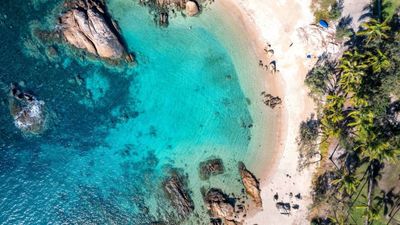
If you asked an Australian to name the best beach in the world, it's likely they'd rattle off a list that included only local Aussie beaches.
We do have it pretty good here.
But according to a list of the World's Best Beaches for 2024 , we don't deserve the top spot.
Over one thousand travel professionals and influencers voted to make the list, where beaches were ranked according to eight criteria: unique characteristics, wildlife, untouched, soundtrack of nature, easy to enter the water, often calm water, not too crowded and frequency of idyllic conditions.
Read through to see which sole Aussie beach made the top ten.
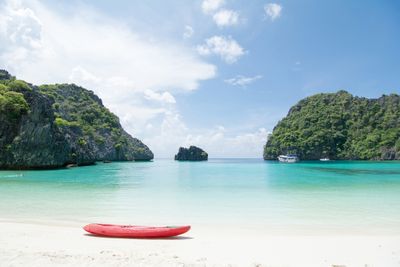
10. Horse Shoe Island, Myanmar
Rounding out the top ten is this pristine beach in Myanmar - not exactly a country known for its beaches.
With soft white sand and clear water, located on a small island, you can see why it made the list.
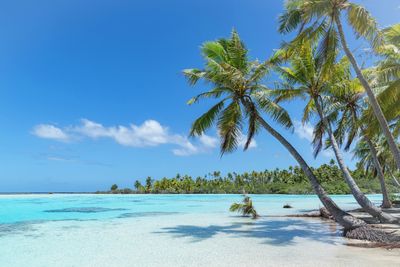
9. Green Lagoon, French Polynesia
Located in Fakarava, French Polynesia, this beach looks like it belongs on a postcard.
Fringed with palm trees and full of rich coral life, the beach is a UNESCO Biosphere Reserve, making sure the nature is protected.
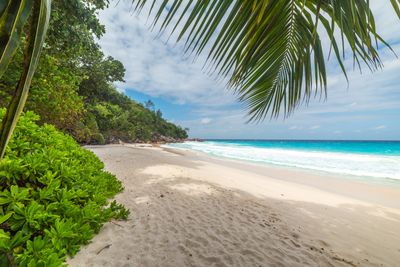
8. Anse Georgette, Seychelles
For a country with a name that sounds like 'sea shells', its beaches do not disappoint.
Anse Georgette is a secluded bay, accessible only by a short hike through lush terrain (or by boat), and a serene spot away from other, more touristy destinations.
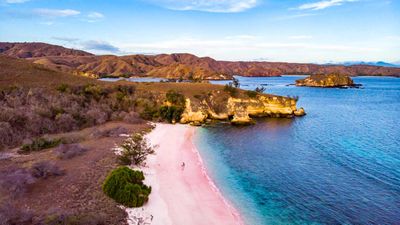
7. Pink Beach, Indonesia
This beach in Komodo National Park has naturally pink sand, due to the presence of red coral fragments that have become mixed in.
For obvious reasons, it's a popular spot for photographers and Instagrammers.
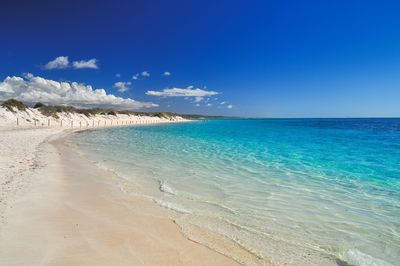
6. Turquoise Bay, WA
The only Australian beach to make the top ten beaches, Turquoise Bay is a fitting choice. Found in Cape Range National Park, it has barely any crowds and great weather for most of the year.
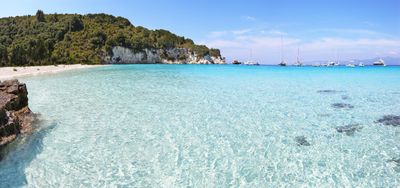
5. Voutoumi Beach, Greece
The fifth spot on the list is reserved for this calm bay on the Greek island of Antipaxos.
Accessible only by boat, it offers a nice break from the crowds that flock to the Greek Islands in summer.

4. Entalula Beach, The Philippines
Not too far from us here Down Under, Entalula Beach has been named the world's fourth-best.
Framed by dramatic limestone cliffs, the water is remarkably clear and perfect for snorkelling.
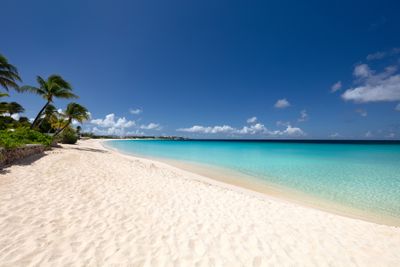
3. Meads Bay Beach, Anguilla
Though Anguilla is a travel hotspot for people seeking beaches and warm weather, Meads Bay is long enough that even during peak times, it's easy to find your own stretch of sand away from crowds.
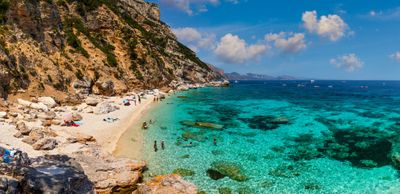
2. Cala Mariolu, Italy
Of course there's going to be a rocky Italian beach in the top ten.
Found on the island of Sardinia, it is accessible only by boat or hiking trails, which stops it from being too crowded in peak season.
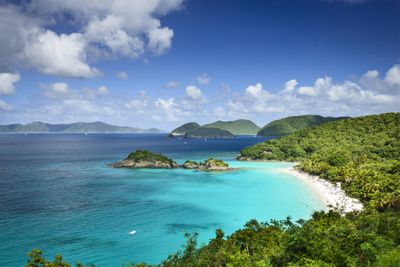
1. Trunk Bay, US Virgin Islands
And the number one beach in the world for 2024 is Trunk Bay, found on the island of St. John.
Protected inside a national park, the beach is quintessential Caribbean: warm turquoise water, soft white sand, and lush landscapes.
Watch CBS News
2 New York City beaches make Travel + Leisure's "25 Best in the USA." See the complete list.
By Dave Carlin
Updated on: April 29, 2024 / 6:47 PM EDT / CBS New York
NEW YORK -- Travel + Leisure magazine's annual list of the 25 best beaches in the U.S. includes a pair of popular ones right here in New York City.
The two beaches are sharing the prestigious space with other sun, sand and surf spots in places like Hawaii, California and Florida.
George Schlereth of Forest Hills said his love for Rockaway Beach predates the hit 1978 song by the Ramones with lyrics that went, "Rock, rock, Rockaway Beach."
"It's a great place to spend the afternoon. It's the best place you could go," Schlereth said.
So what else makes Rockaway Beach such a fan favorite?
Travel + Leisure praised Rockaway Beach's "Five-mile boardwalk, and surf-worthy waves."
"It's definitely very diverse. People come from all over come here," said Kristen Supple of Far Rockaway.
"Rockaway Beach, because I love like the waves and boogie boarding and they have great ice cream and food," said 10-year-old Jordan Cannetti.
"I used to come here as a kid with my parents and family and it's just night and day. The boardwalk, it's just amazing. Now, the restaurant," his father said. "The parks along the boardwalk are just amazing. Ninja Park is great The pickle ball, the basketball."
"They spent so much money fixing up the Rockaways. They brought in more people, more families down there. The place is packed now," Schlereth added.
And let's not forget the amazing Coney Island
Coney Island bubbled up to the Top 25 as well, with the editors of Travel + Leisure writing, "Coney Island is a perfect seaside wonderland of nostalgia and kitschy fun."
Kenya Dethan, who is 7, called it her favorite beach.
"I like the nice water. I like going on the roller coasters," Dethan said.
The thing about Coney Island is there is so much to do -- sand and surf, the boardwalk with the amusements, and the food and drinks -- all of it rain or shine.
"Number one in the world, Coney Island," resident David Dingle said. "Best of both worlds. You're at the beach and the stores all together, all in one place. Once you're here, you don't want to go back home."
Also making the best beaches list is the New Jersey favorite for fun, Asbury Park. It's the hometown of music legend Bruce Springsteen and features clubs like The Stone Pony , which keep the town highly rated and rockin'.
- Asbury Park
- Coney Island
- Rockaway Beach

Dave Carlin serves as a reporter for CBS2 News and covers breaking news stories and major events in the Tri-State Area.
Featured Local Savings
More from cbs news.
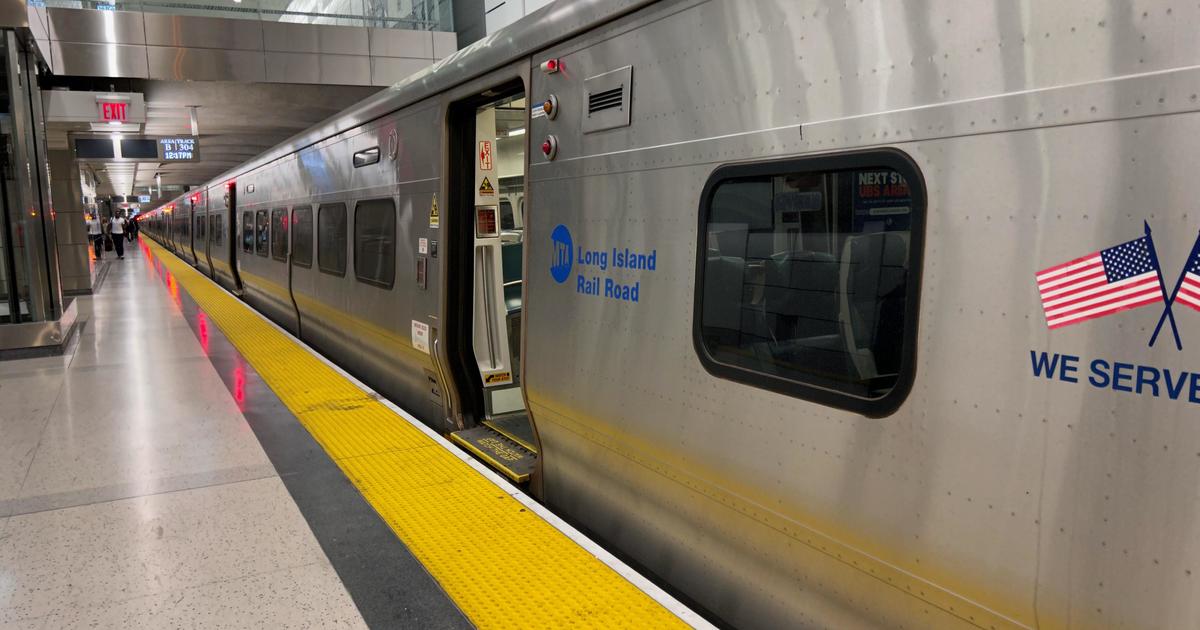
These riders could get a discount when NYC congestion pricing starts

Suspected killers indicted for chilling Long Island murders
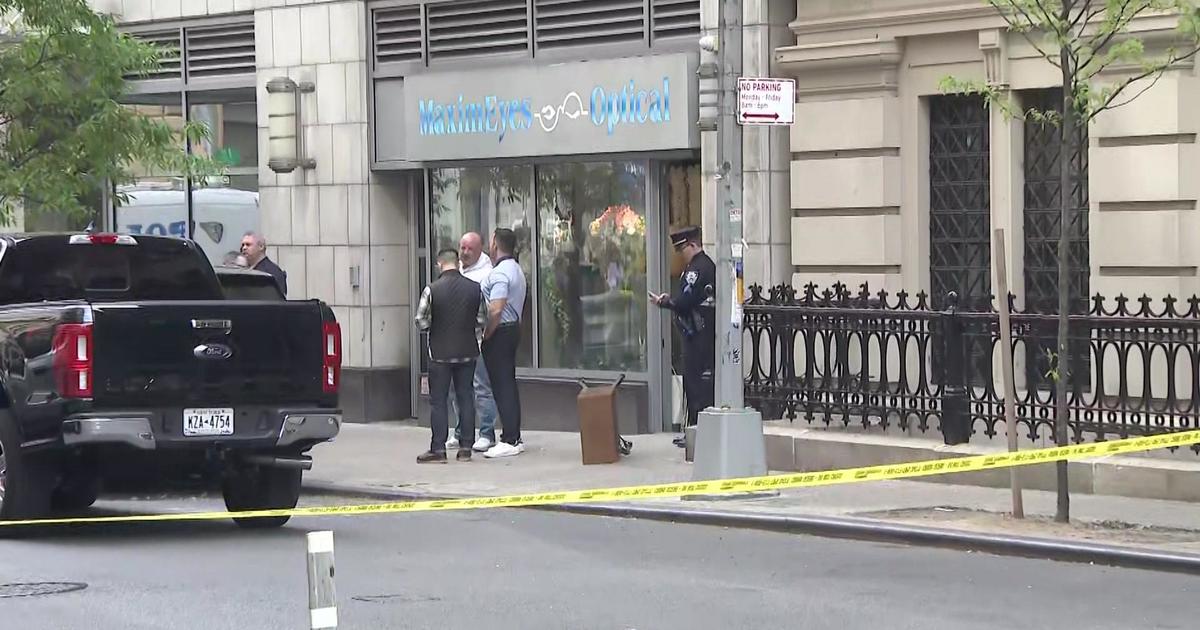
Police in NYC fatally shoot armed man wanted in felony assault

Columbia protesters gather at NYPD headquarters after arrests

COMMENTS
Travel Essentials to Pack for a Philippines Vacation. Other than the things you need to bring and wear during your stay in the Philippines, it's also best to know some travel essentials for your hassle-free journey, especially when you're on tours and travel destinations. Below is the list of what to pack for a trip to the Philippines:
As per IATF Resolution No. 2 (s. 2022) on the ENTRY, QUARANTINE and TESTING Requirements of inbound travelers to the Philippines A. FULLY VACCINATED (Filipino and Foreign Travelers) - No pre-departure COVID-19 Test requirement - Must have received the 2nd dose in a 2-dose series or a single dose COVID-19 vaccine more than fourteen (14) days ...
Philippines Packing Checklist. Aside from the highly-recommended items above, here is a complete Philippines Packing Checklist so you can start packing for your island vacation: Clothing: Breathable t-shirts (2-3 pairs) Quick-dry shorts (1-2 pairs) 1 pair of full-length pants; Long-sleeved outer layer; Rain jacket
Check out this list of crucial Philippines travel tips to discover 10 other noobie mistakes I learned the hard way (please don't follow in my footsteps!). Free Philippines Packing Checklist. Alrighty! All that's left is to print out this packing list for Philippines, check the items off as you pack, and enjoy your trip!
Philippines Packing List: Useful Travel Gear. Snorkel & mask - You can rent these in any beach shop, but the costs can start to add up quickly. If you'd rather use your own mask and snorkel, be sure to bring them with you. Head lamp - Streets in the Philippines can get really dark in the night.
The Basic Stuff To Pack For Philippines. On top of the essential items listed above, here is an additional suggested checklist of what to pack for your trip: 1-2 pairs of comfortable pants/jeans. 1-2 pairs of shorts (summer/late spring) A few pairs of socks. (Sexy) underwear x 2/3.
Visa and Passport Requirements for the Philippines. What to Pack for a Vacation in the Philippines. Baggage for Packing for the Philippines. Travel Luggage. Carry-On Bag. Travel Pillow. Electronics to Pack for the Philippines. Waterproof Camera. Universal Travel Adapter.
These are some necessities for your Philippines packing list when it comes to outdoor and water adventures in the Philippines. Snorkel. Dry Bag or Waterproof Case. Water Bottle. Reef Friendly Sunblock. Backpack or Day Pack - Keep a lock on your back to prevent theft. RELATED: Best Snorkel Fins for 2018.
Here's a sample packing list for a 2-week trip to the Philippines. Clothes and shoes. 4-5 lightwear tops (t-shirts or tank tops) 1-2 dresses (for women) 1-2 pair of shorts. 1 pair of trousers. 1-2 swimsuits.
It's worth buying if you're on the market for a nicer suitcase and will fit aboard most budget or smaller airlines, which the Philippines is kind of known for. - DRY BAG. A dry bag is one of the most essential items on this Philippines packing list. This is nice to have for island hopping tours and beach days in general.
Philippines Healthy Travel Packing List. ... and some may not be relevant to you and your travel plans. Talk to your doctor about which items are most important for you. ... This list is general and may not include all the items you need. Check our Traveler Information Center for more information if you are a traveler with specific health needs
Hygiene (Toiletries) Healthcare (Medicine Kit) Travel Aids & Entertainment. Electronics & Gadgets. Camera Gear. Sports Gear. Camping Gear. Beach Gear. Other.
Here is a quick summary of what to pack for 2 weeks in the Philippines or more, regarding clothes. 2-3 shirts. 4-5 tops. 1-2 singlets. 3-4 pairs of underwear. 1-2 dresses (women) 1-2 pairs of shorts. 2-3 pairs of socks. 1 pair of long trousers.
Entertainment and Travel Gear. While exploring the Philippines, it's important to have the right entertainment and travel gear to enhance your overall experience. Here are some items to consider packing: Travel Guidebook: A travel guidebook can provide valuable information about the country, its culture, and attractions. It can also serve as ...
The accessories you will take in your bag for Philippines will depend on your travel style: TSA lock ( my favorite) Headlamp ( my favorite) Sleeping bag ( my favorite) Sheets ( my favorite) Swiss Army knife (not in the hand luggage!) ( my favorite) Travel clothesline ( my favorite) Powdered or liquid detergent.
What to Pack for Philippines - 28 Essentials. 1. Philippines Power Adapter. Electricity in the Philippines uses 220 volts, so if you want to plug anything into the wall, you will need a power adapter. We recommend purchasing a reliable universal power adapter like this one, as you can use it in nearly every country.
I've covered some cool gadgets and accessories that'll help make your adventures headache-free, as well as suggestions for essential clothes and other extras. Let's dive in. Contents [ hide] 1 What To Pack For The Philippines: Clothes. 1.1 Long Loose Baggy Pants.
The Philippines has 7,641 islands. Q: How many islands are there in the the Philippines? A: 7,641. If you are going to the Philippines mainly as a tourist, you have 7,641 islands to visit. For a long time, the number was 7,107, and then recently, the National Mapping and Resource Information (NAMRIA) discovered 534 more islands, so the total number is now pegged at 7,641 islands.
DRY BAG. A dry bag is always a good item to consider packing on your next trip to the Philippines, especially if you plan to go snorkeling, spend some time at the beach, explore waterfalls, or island hopping. Best to keep your phone and other valuables safe from water damage. Check Prices → Earth-Pak Dry Bag.
Call us in Washington, D.C. at 1-888-407-4747 (toll-free in the United States and Canada) or 1-202-501-4444 (from all other countries) from 8:00 a.m. to 8:00 p.m., Eastern Standard Time, Monday through Friday (except U.S. federal holidays). See the State Department's travel website for the Worldwide Caution and Travel Advisories.
However, travelers must still meet the following requirements: As of April 2023, all travelers, including children. are required to register via the Electronic Travel Declaration System no earlier than 72 hours from the intended arrival. Passport must be valid for at least six months at the time of arrival.
Passport. As a Filipino traveler, securing your passport is the first step in preparing for your international trip. Make sure that your passport is valid for at least six months beyond your planned travel dates. If it's about to expire, apply for a new one as soon as possible to avoid any last-minute delays.
Philippine One-Stop Electronic Travel Declaration System. In compliance with Ease of Doing Business Law (R.A. 11032), an act promoting ease of doing business and efficient delivery of government services.
Travel insurance specialists InsureandGo recent issued a report ranking the places that travelers are most eager to revisit.To come up with this list, the researchers looked at almost 500 ...
But according to a list of the World's Best Beaches for 2024, we don't deserve the top spot. Over one thousand travel professionals and influencers voted to make the list, where beaches were ranked according to eight criteria: unique characteristics, wildlife, untouched, soundtrack of nature, easy to enter the water, often calm water, not ...
Miss Universe Philippines 2024 will be the fifth edition of the Miss Universe Philippines pageant, to be held at the SM Mall of Asia Arena in Pasay, Metro Manila, Philippines, on May 22, 2024.. Michelle Dee of Makati will crown her successor at the end of the event. The winner will represent the Philippines at the Miss Universe 2024 pageant to be held in Mexico.
MBTA warns riders of longer travel times during May Red Line closures Red Line trains will be impacted by closures for renovations between May 9 and May 12. Craig F. Walker/Globe Staff
2 NYC beaches make Travel + Leisure's "25 Best in the USA" 02:13 NEW YORK-- Travel + Leisure magazine's annual list of the 25 best beaches in the U.S. includes a pair of popular ones right here in ...